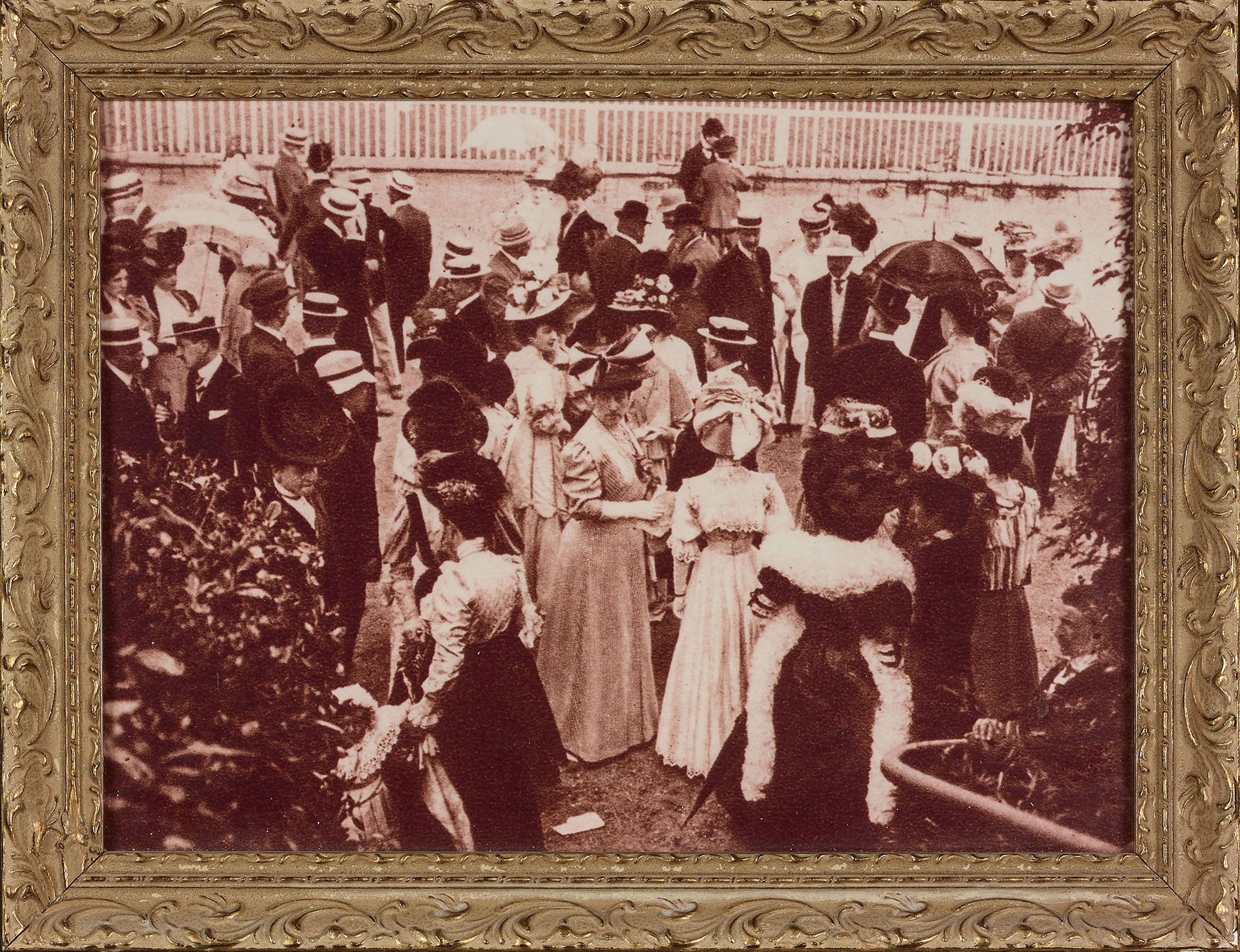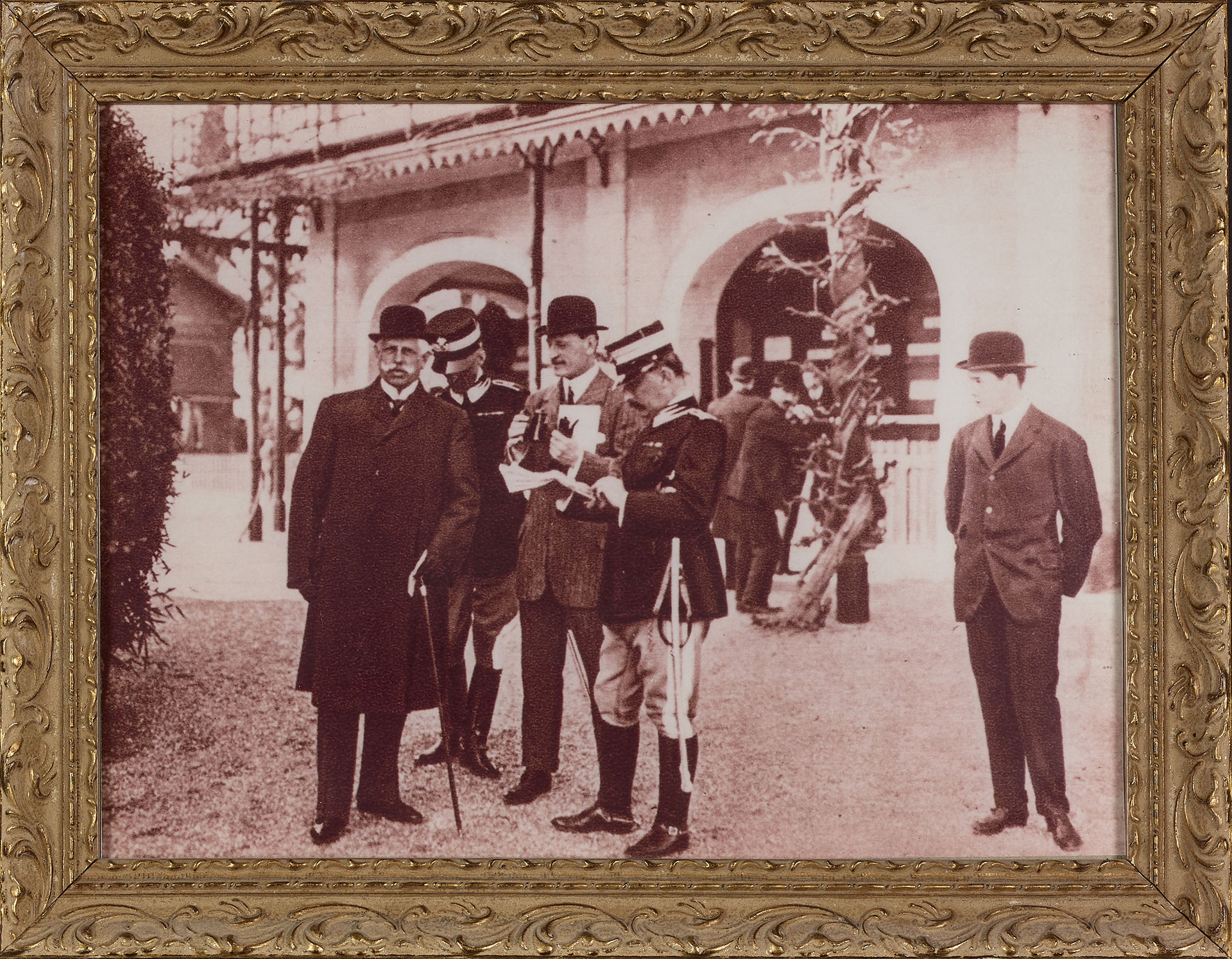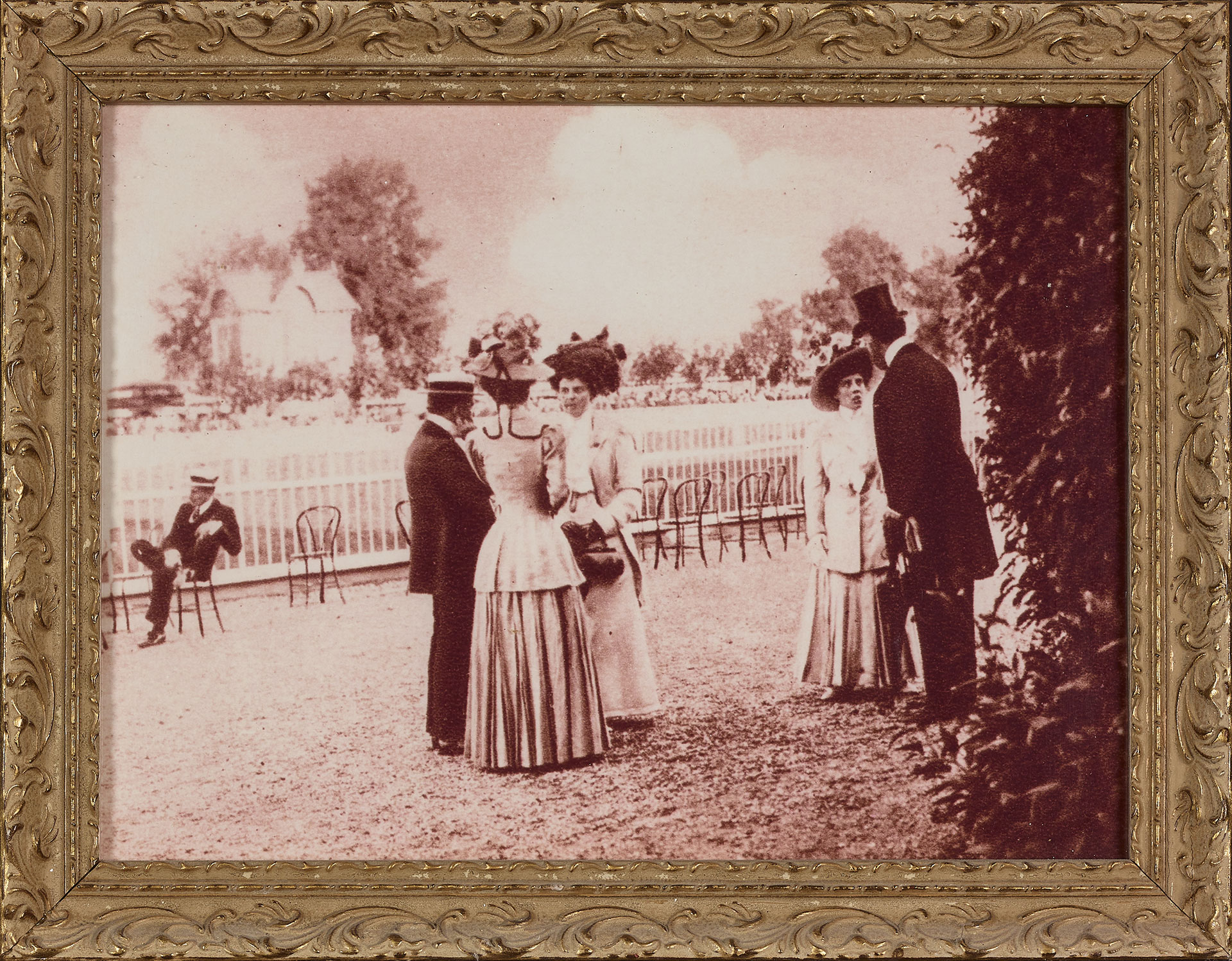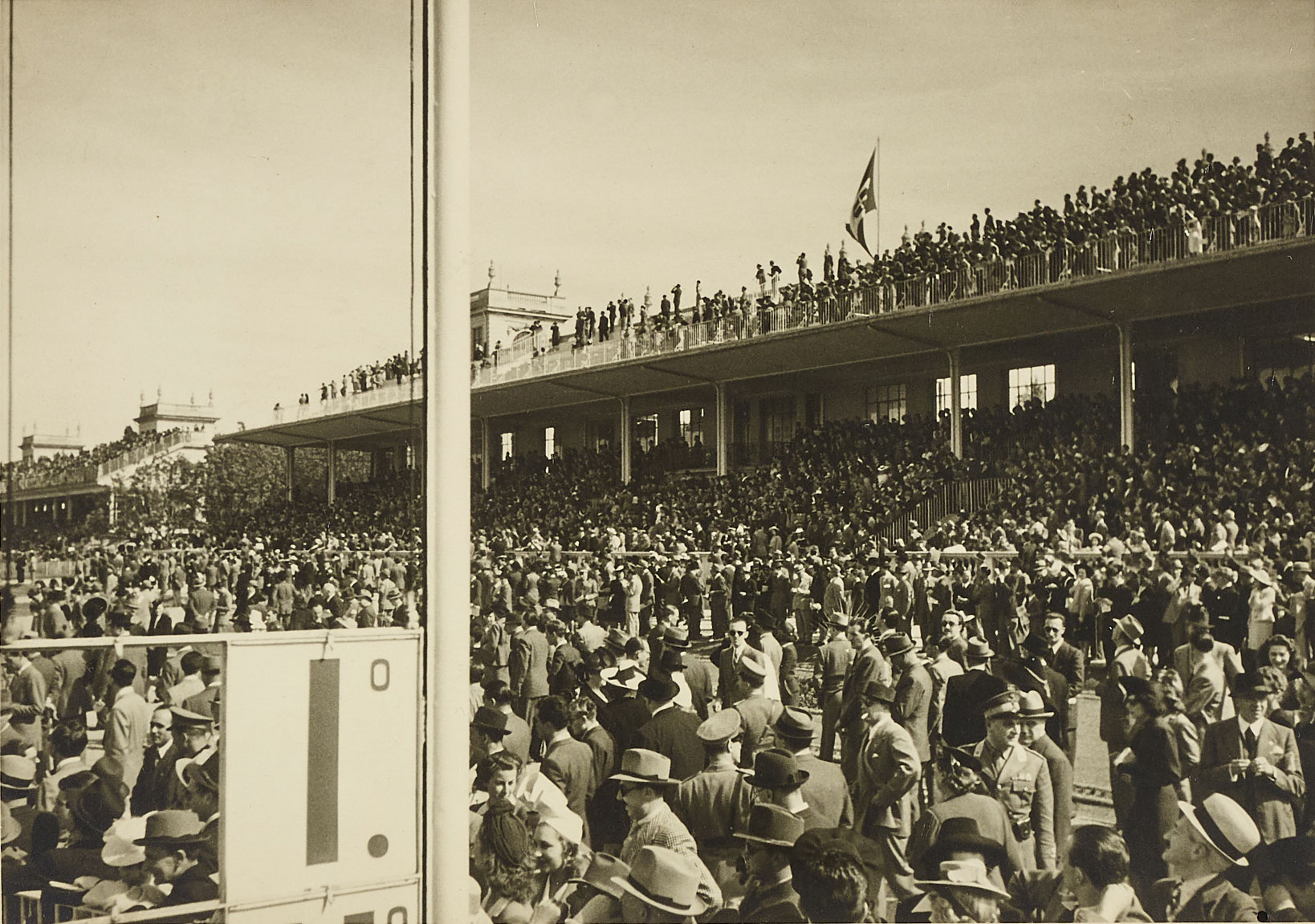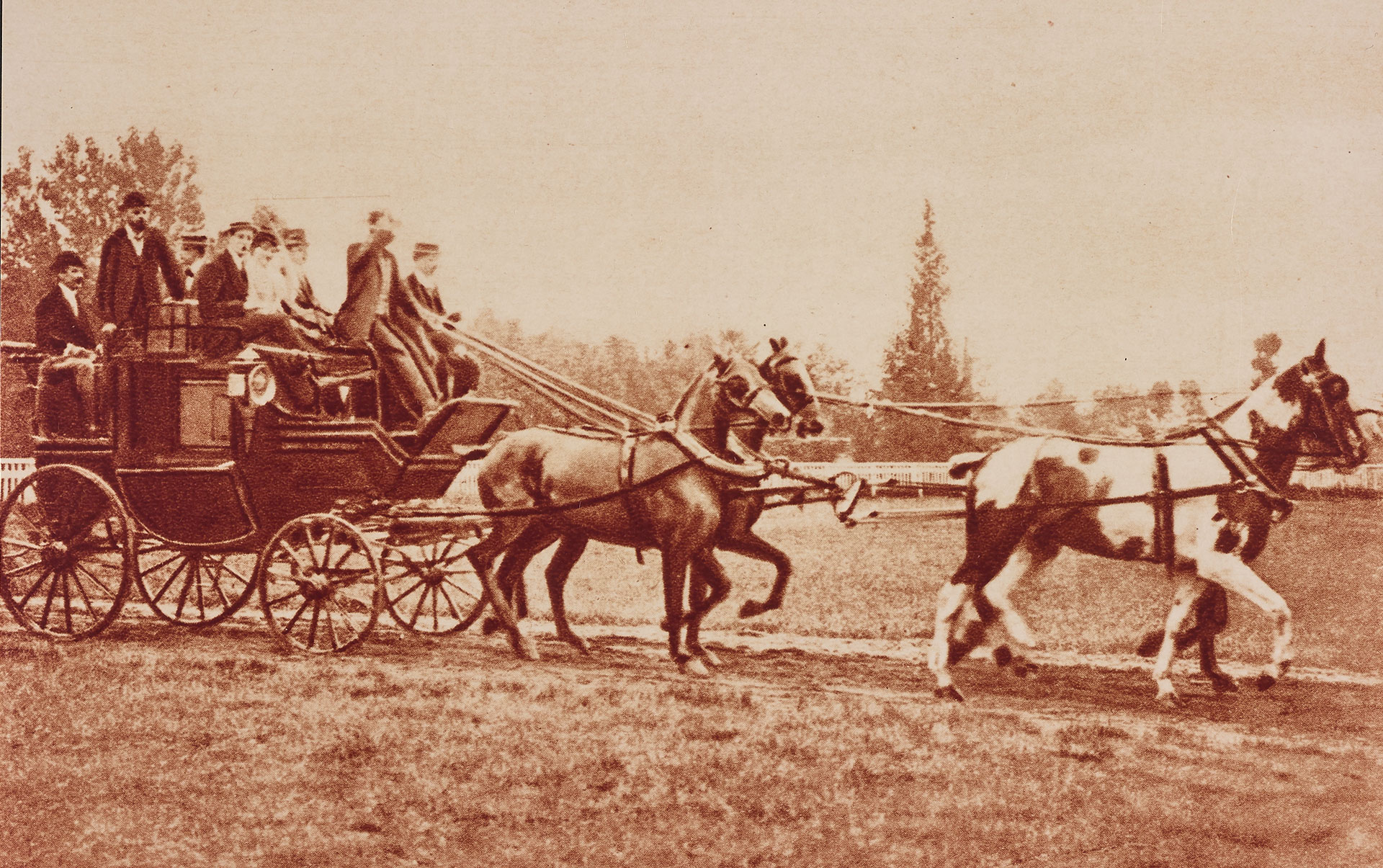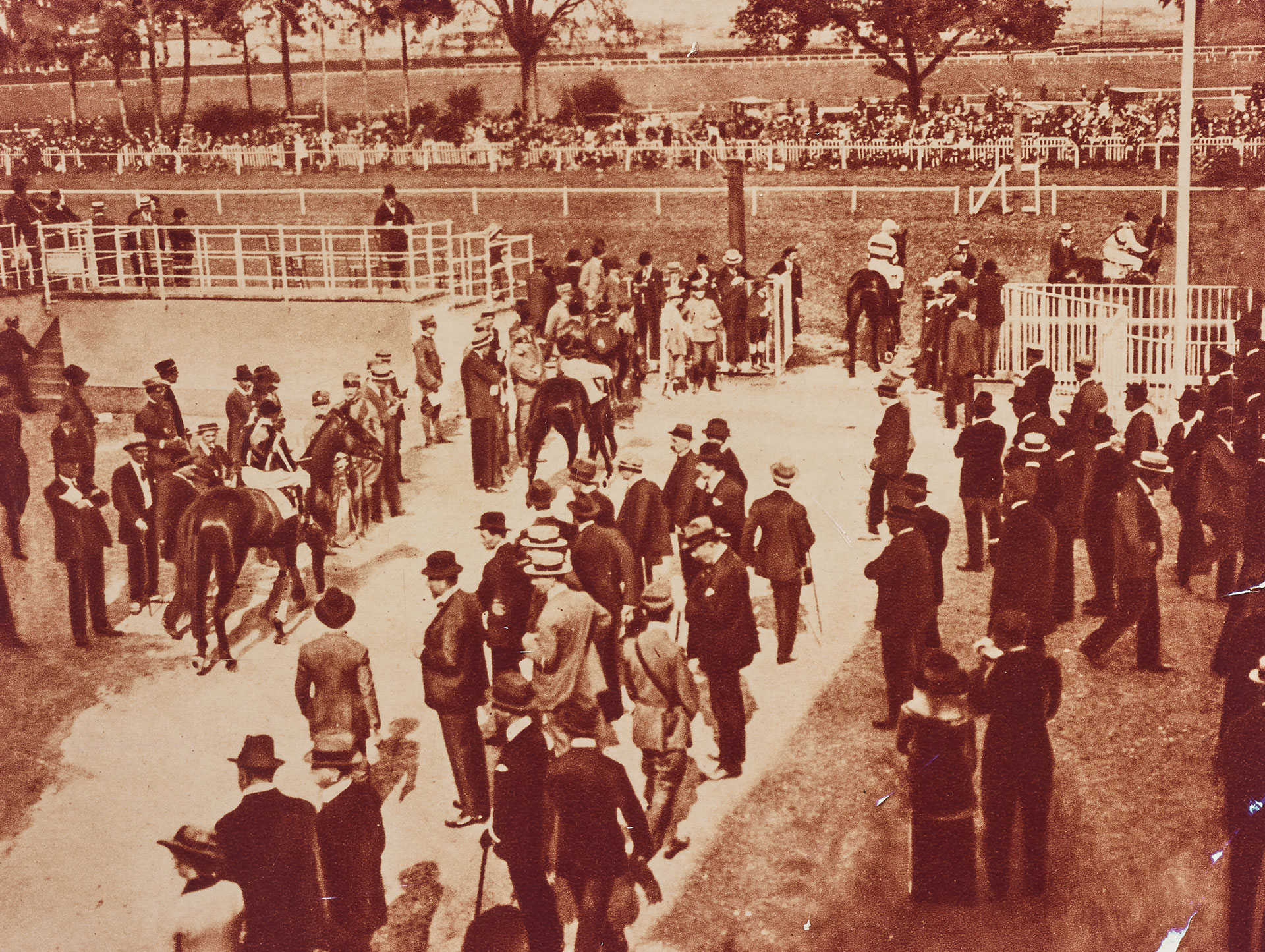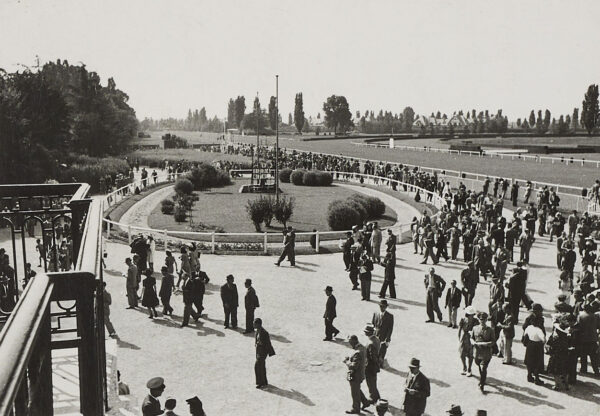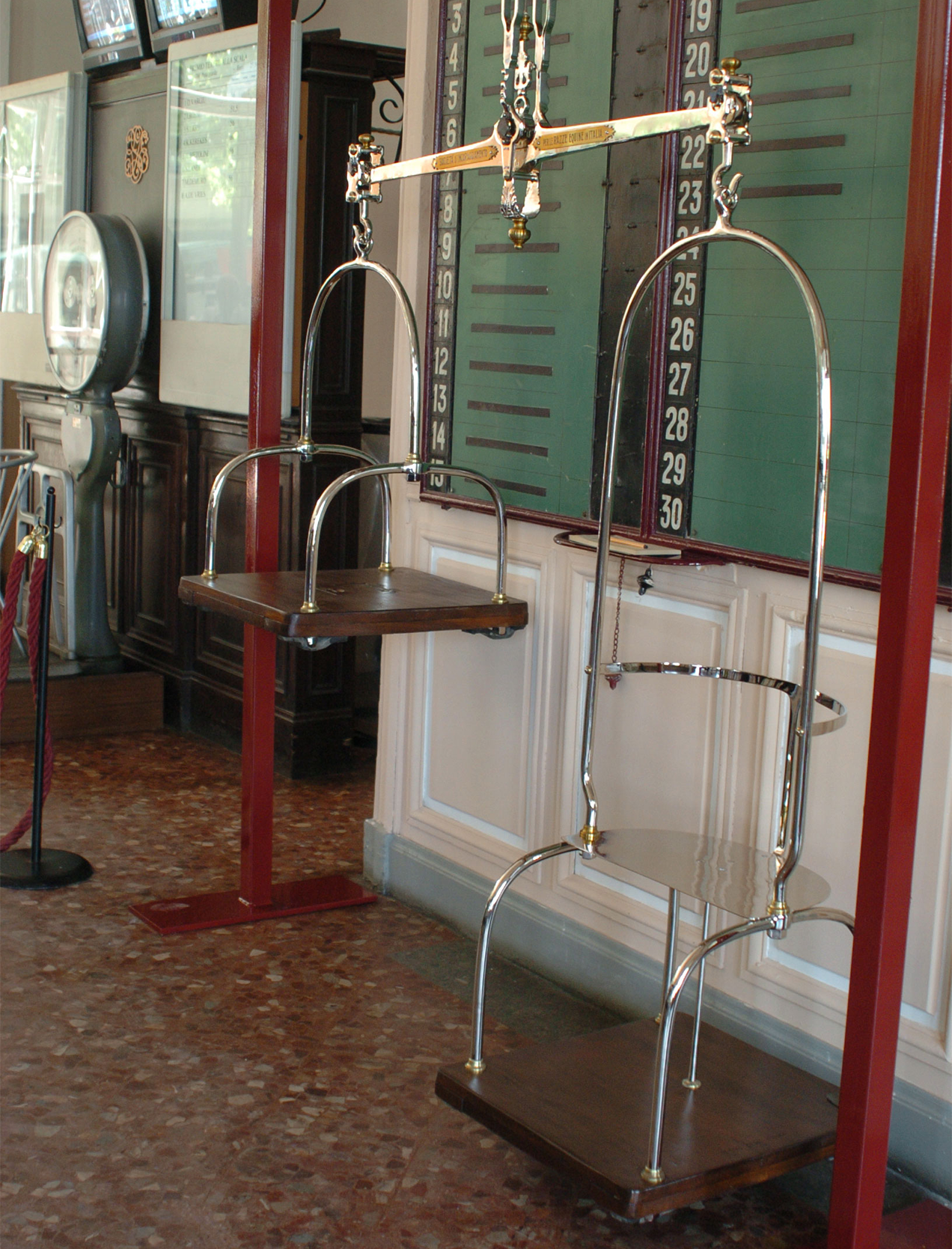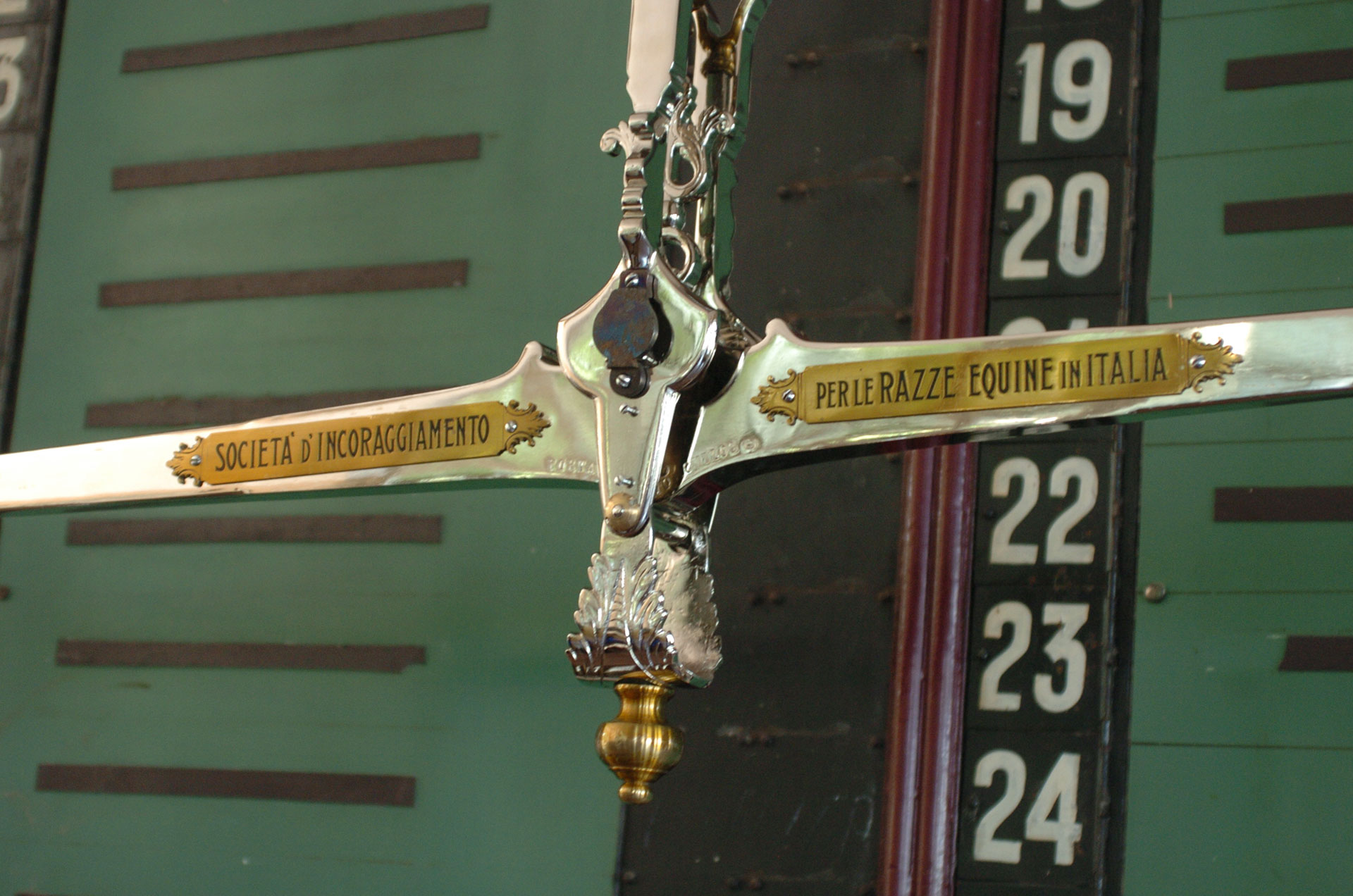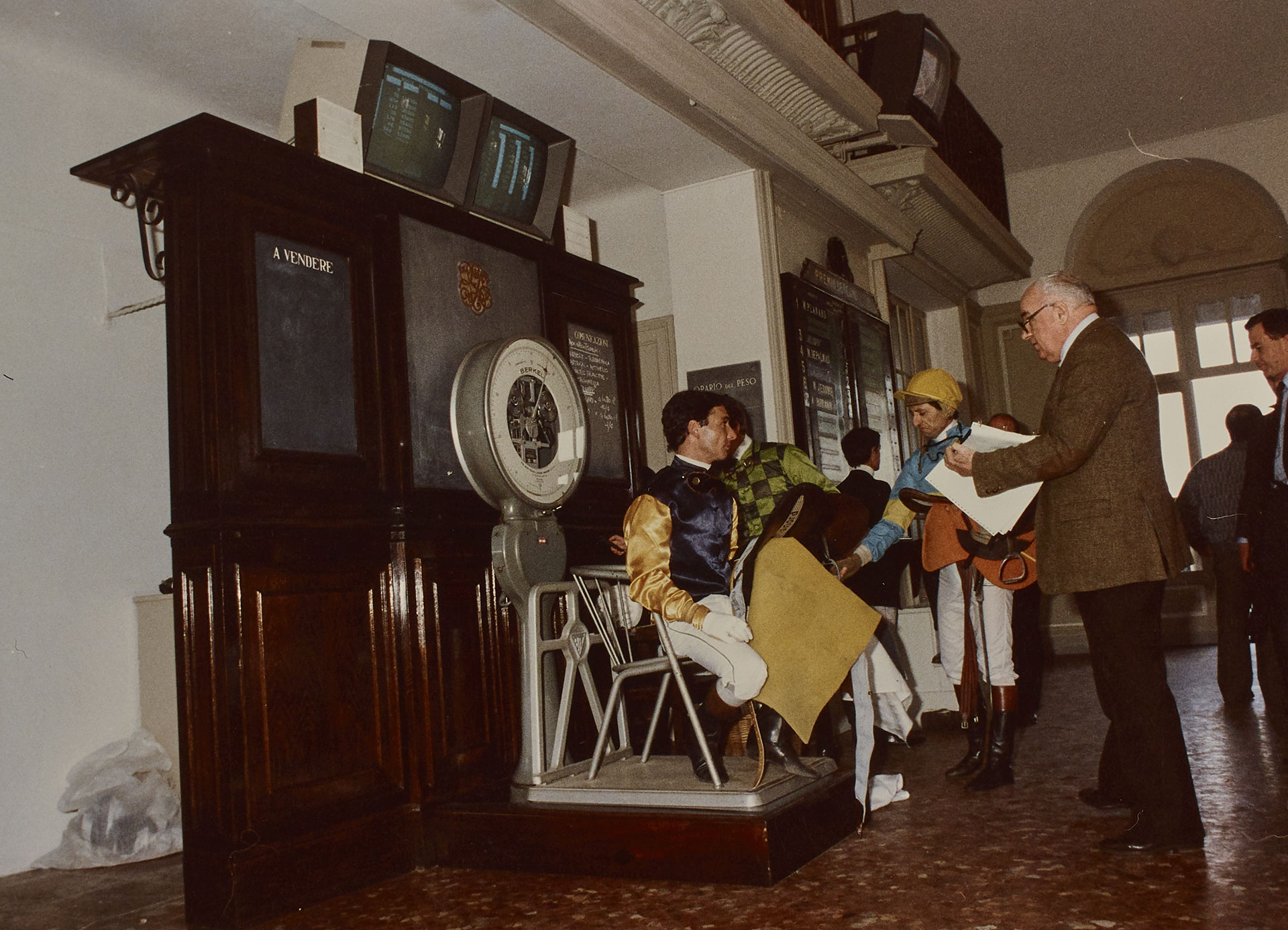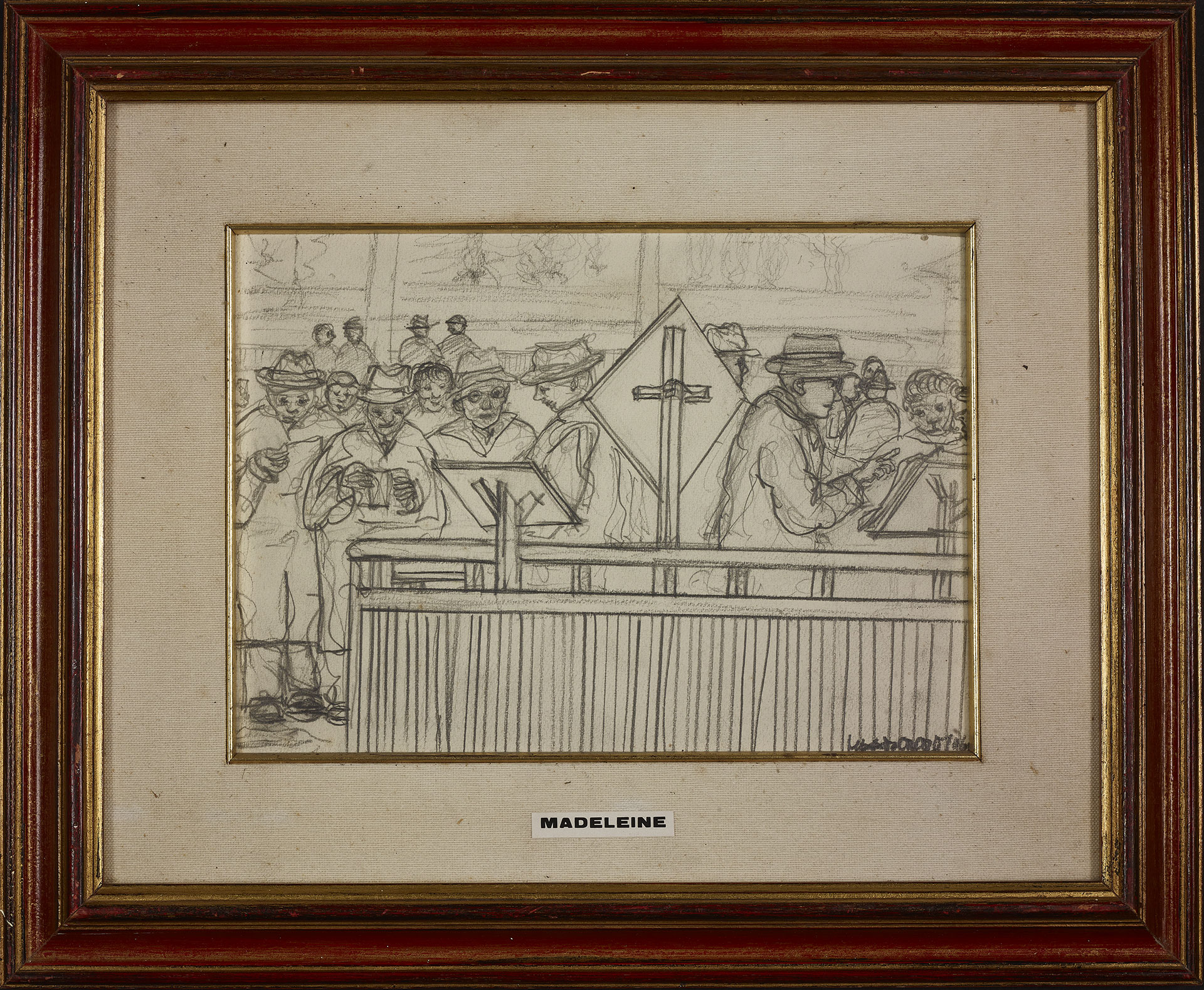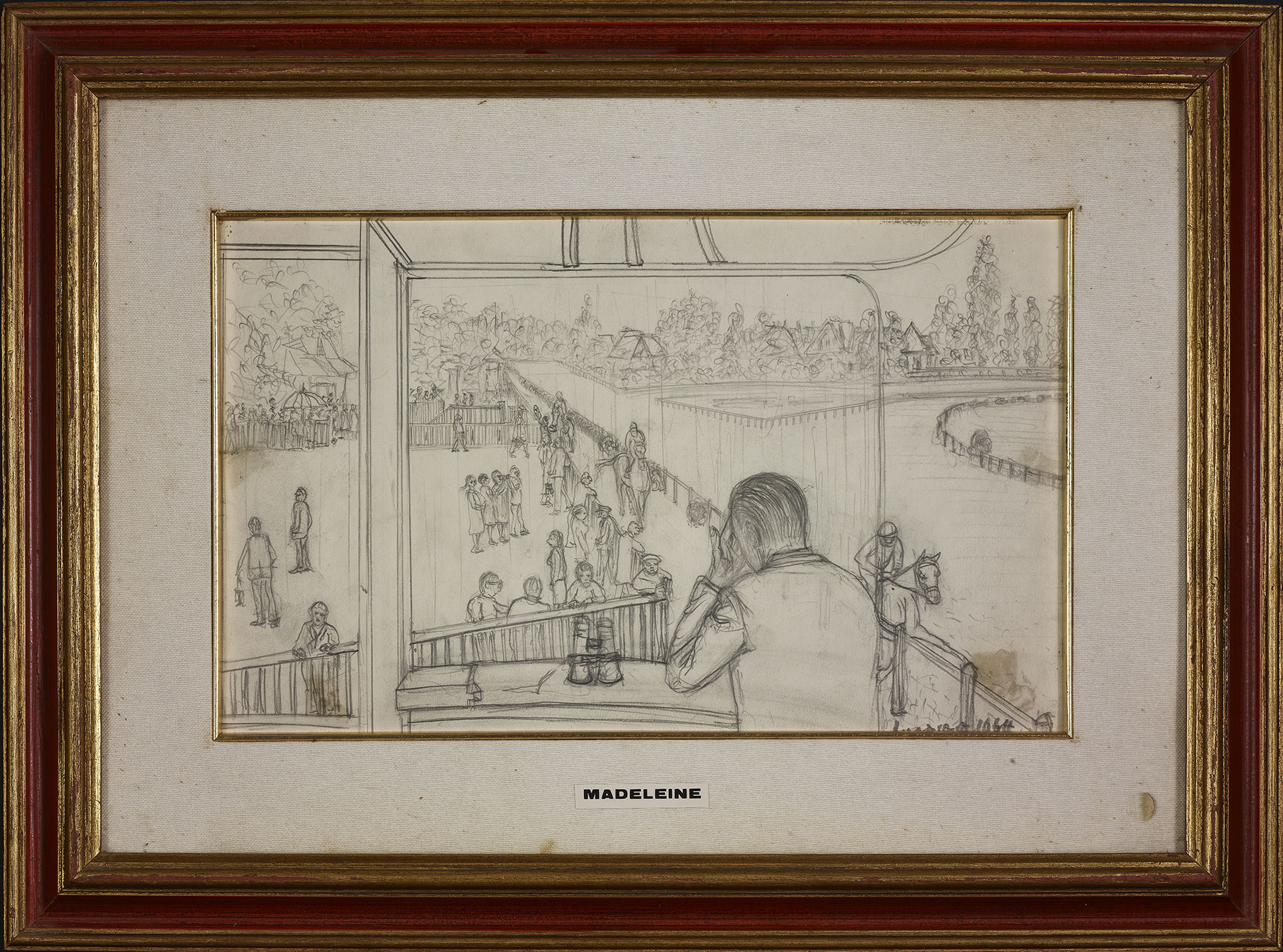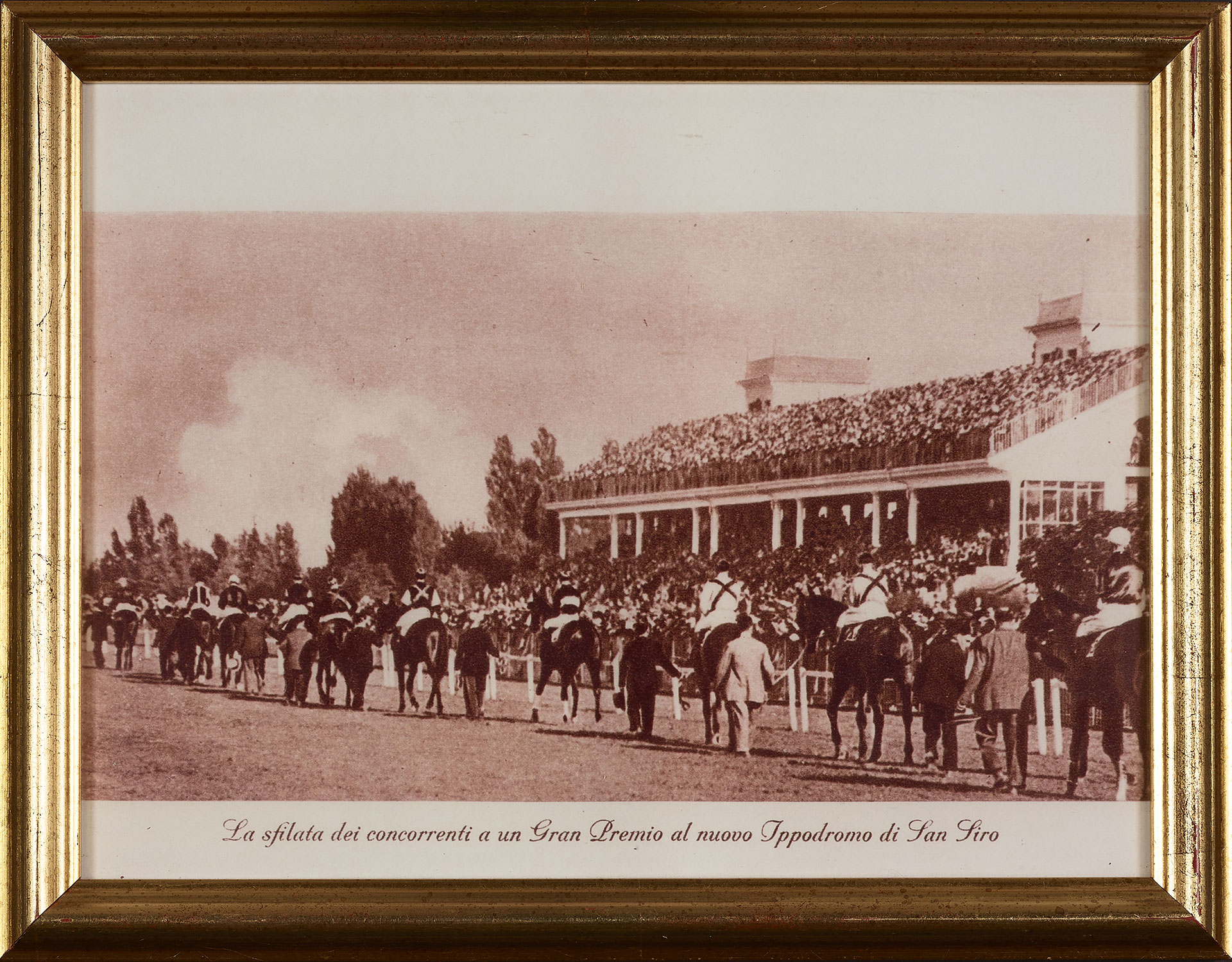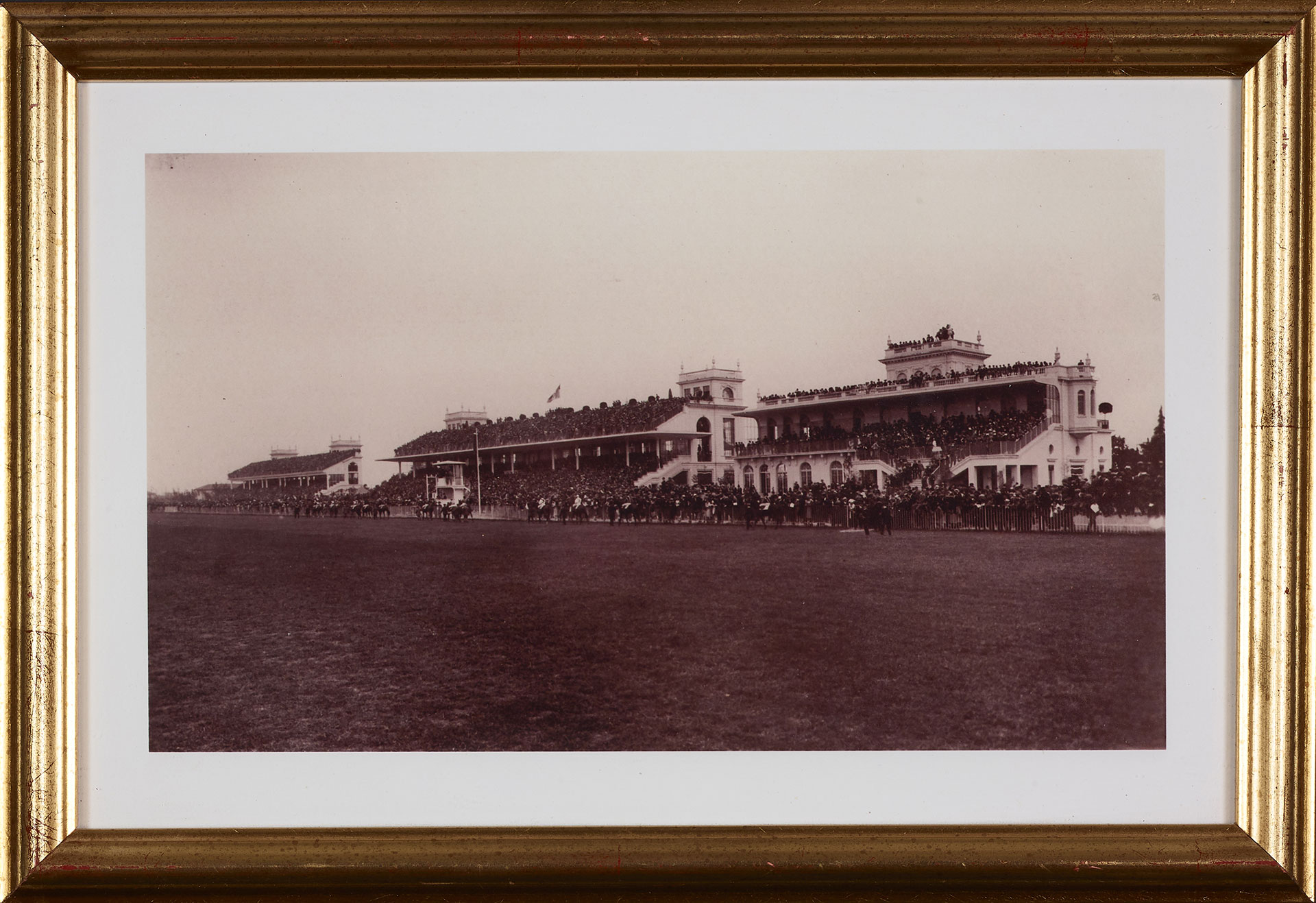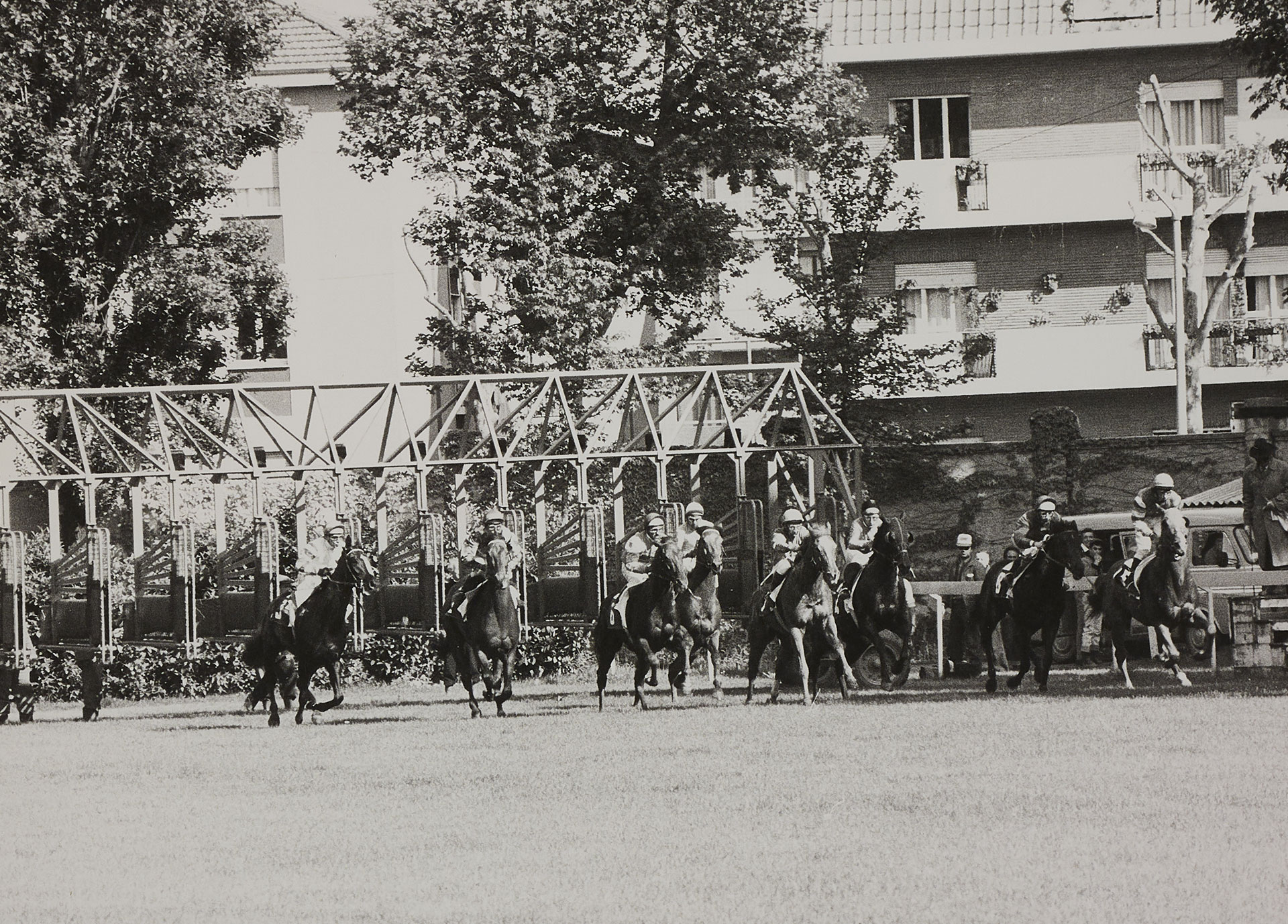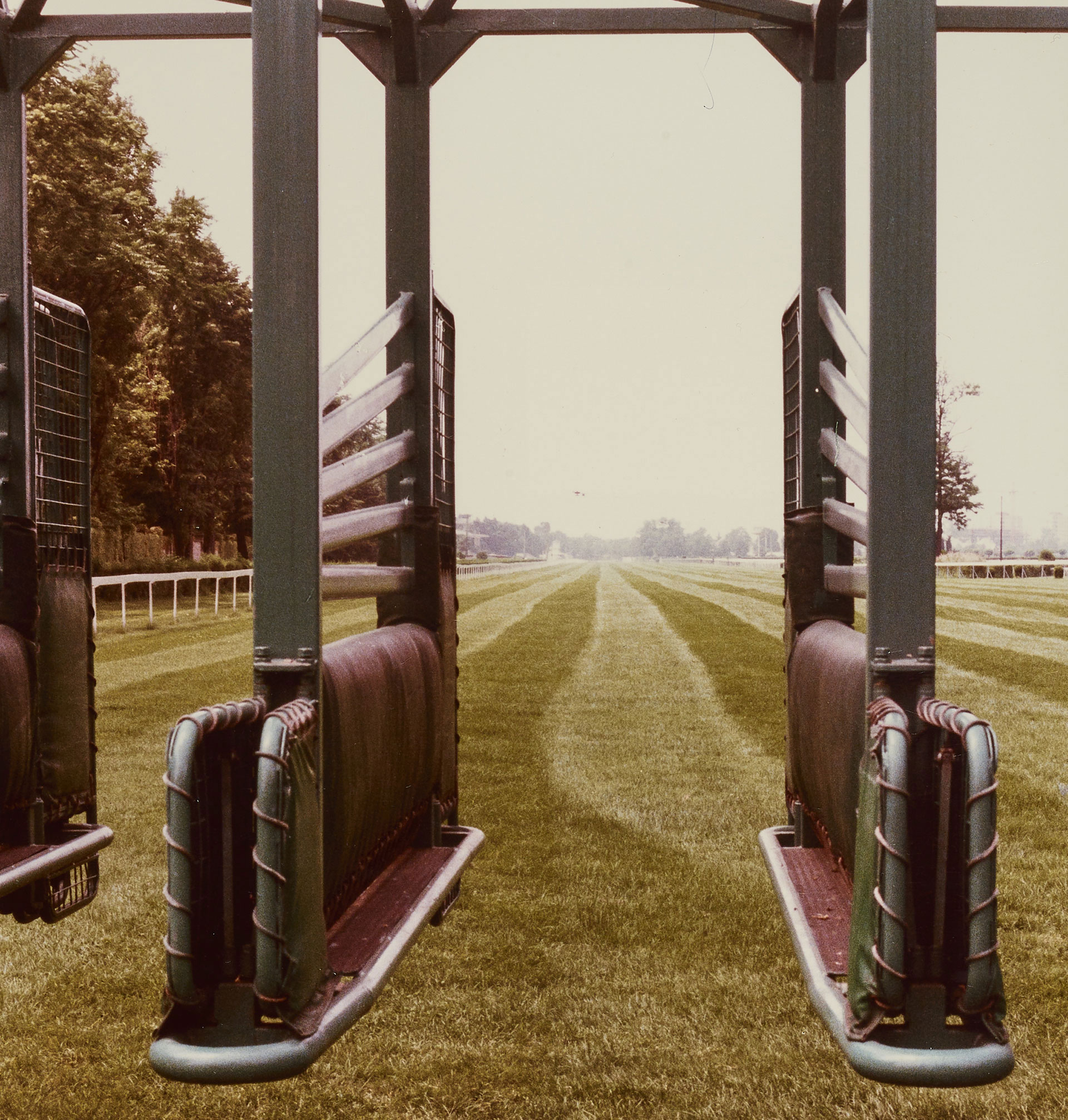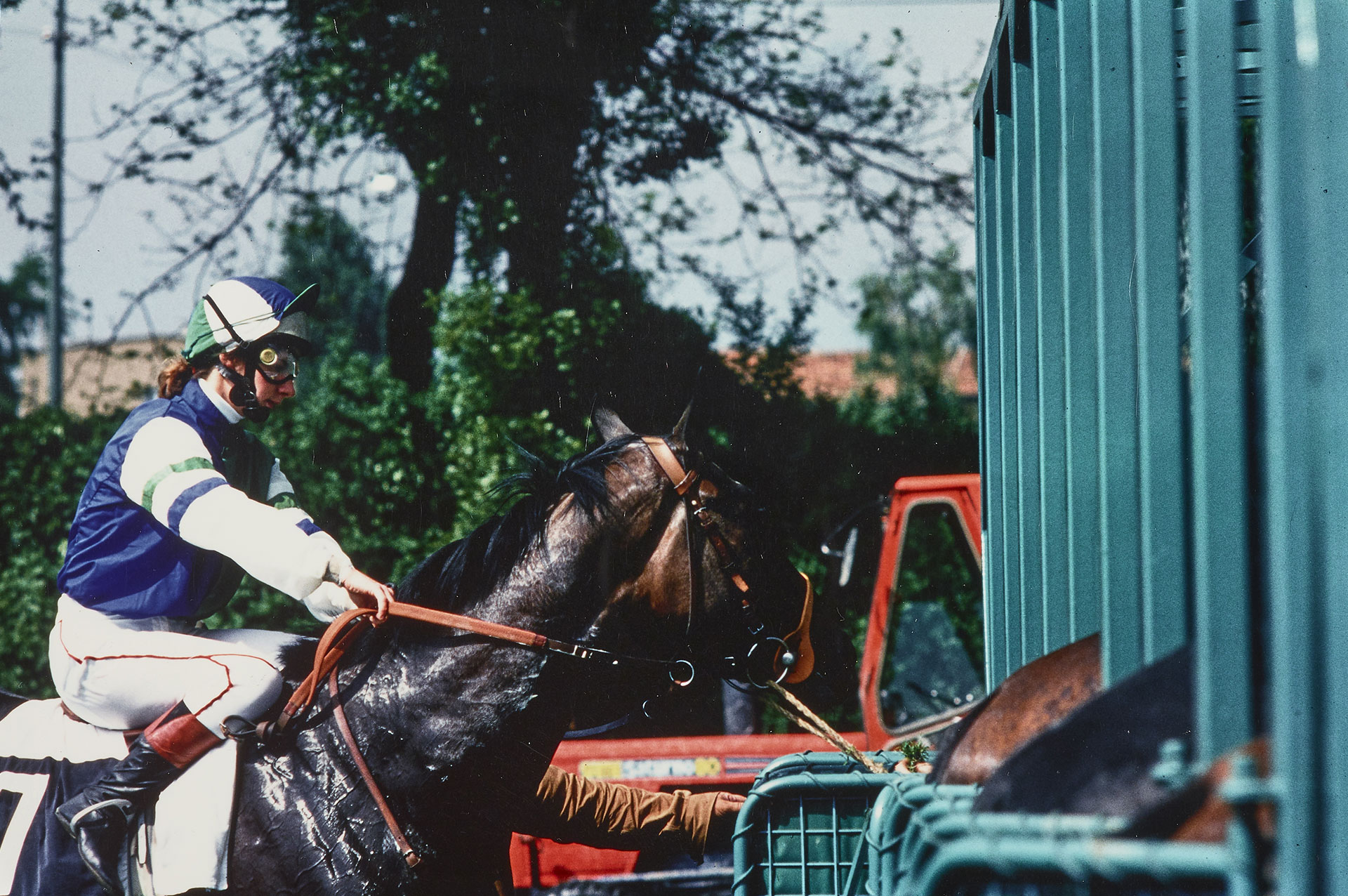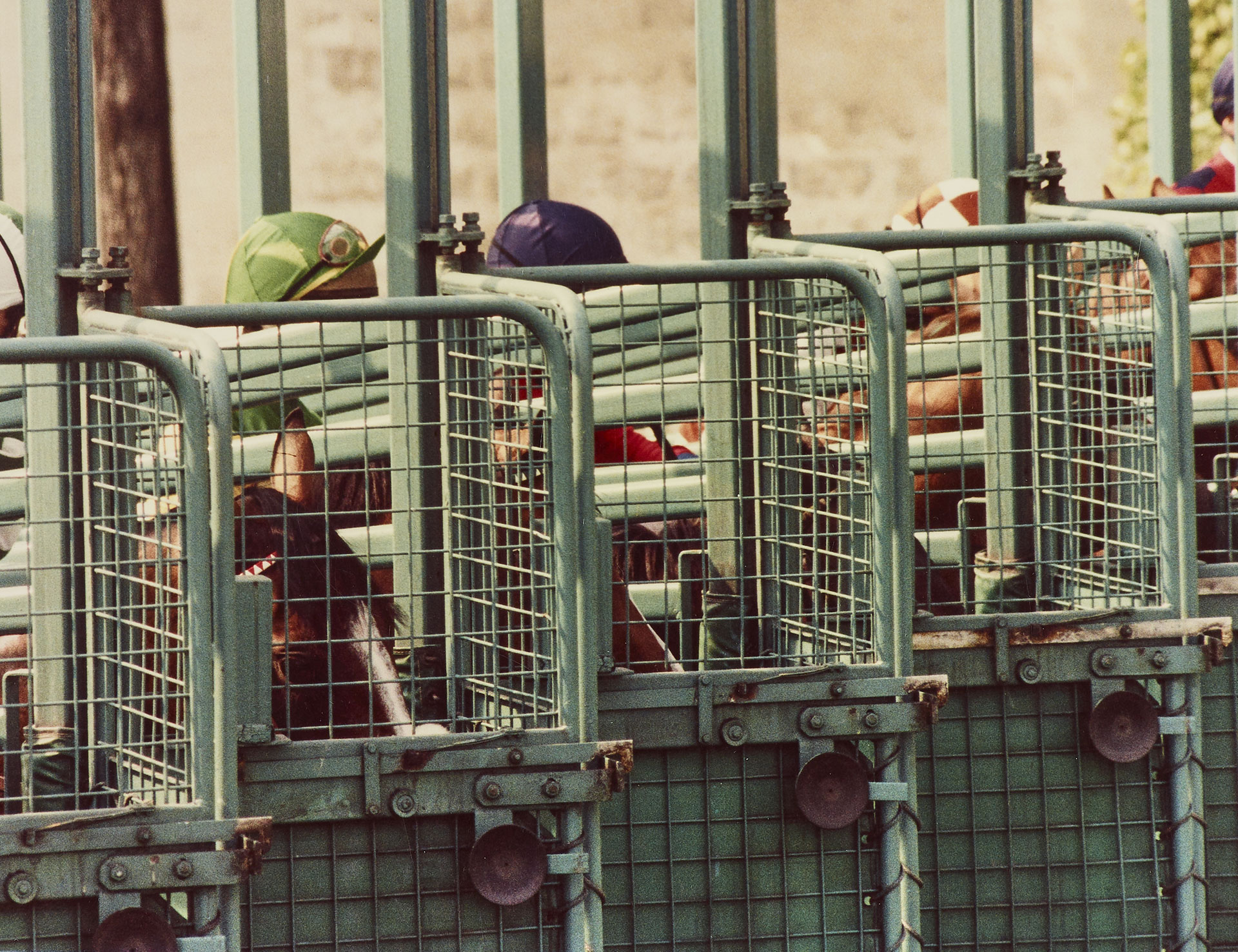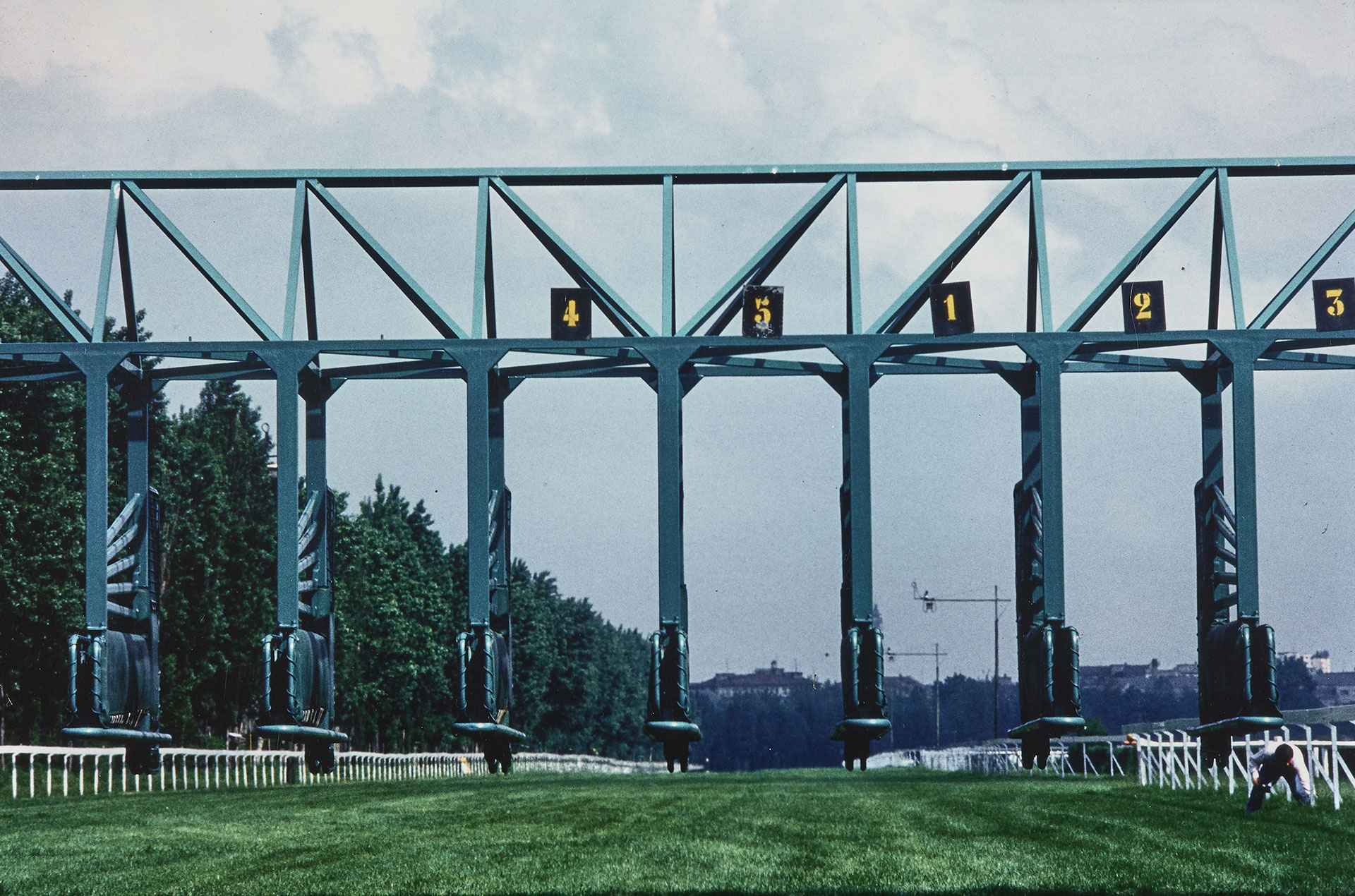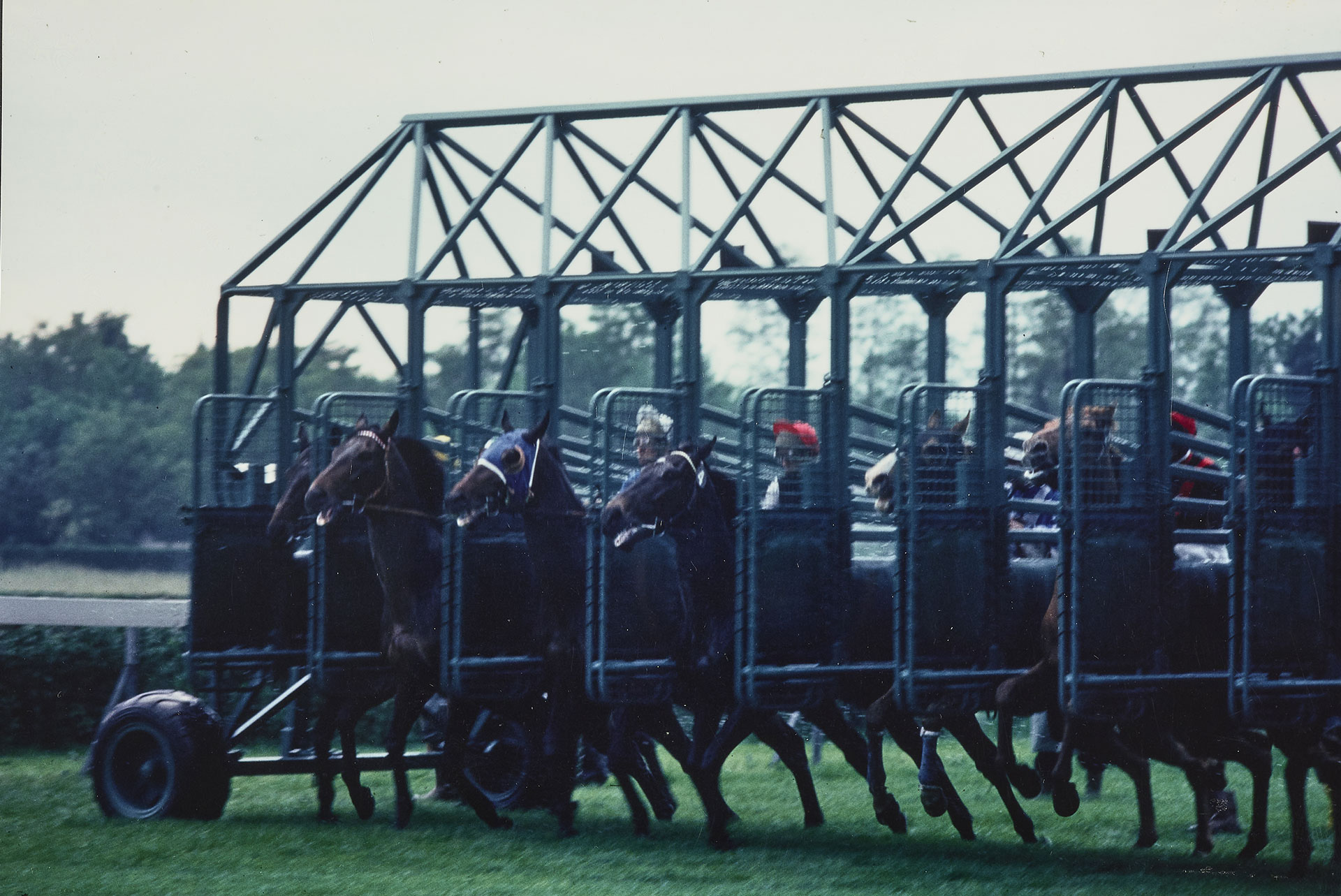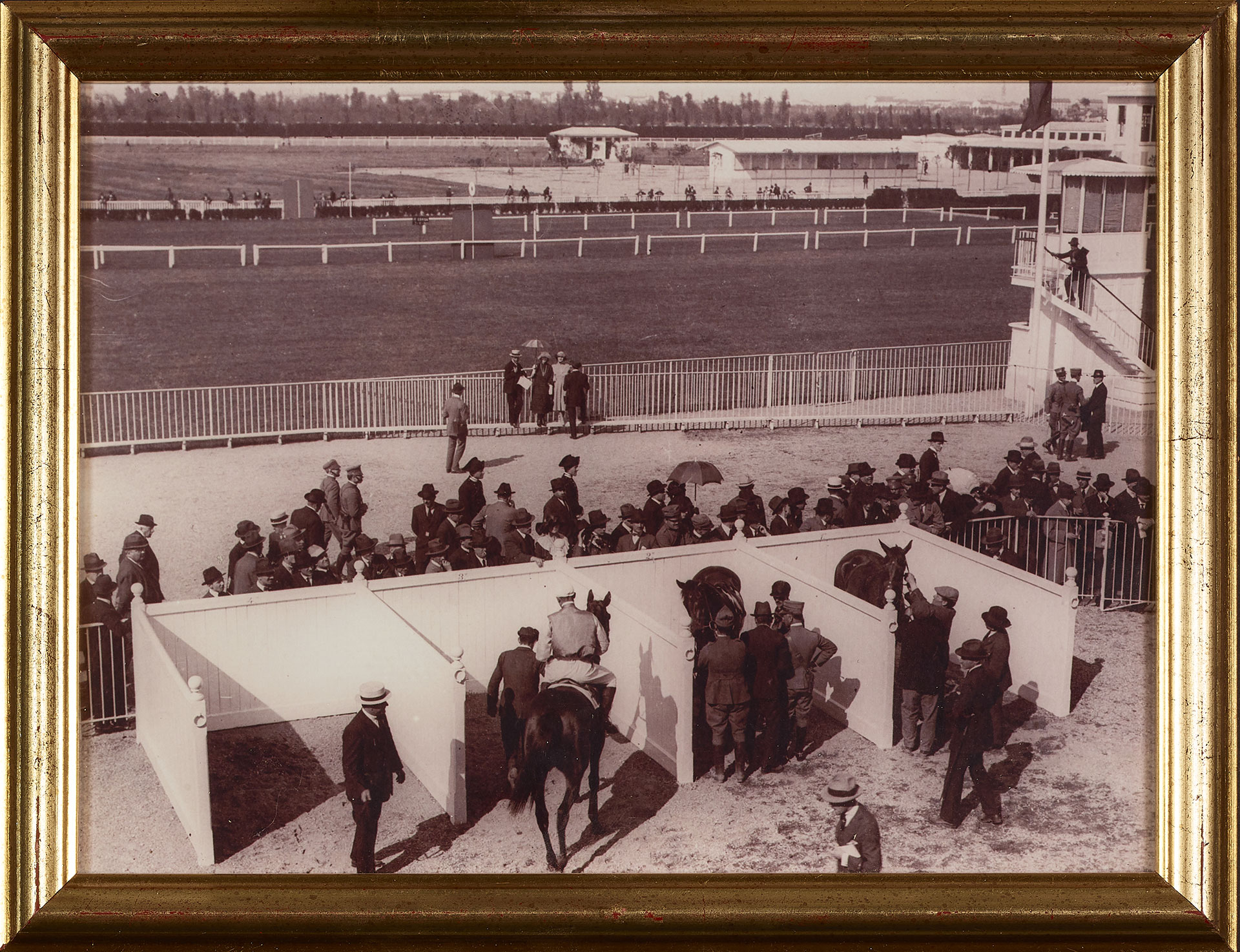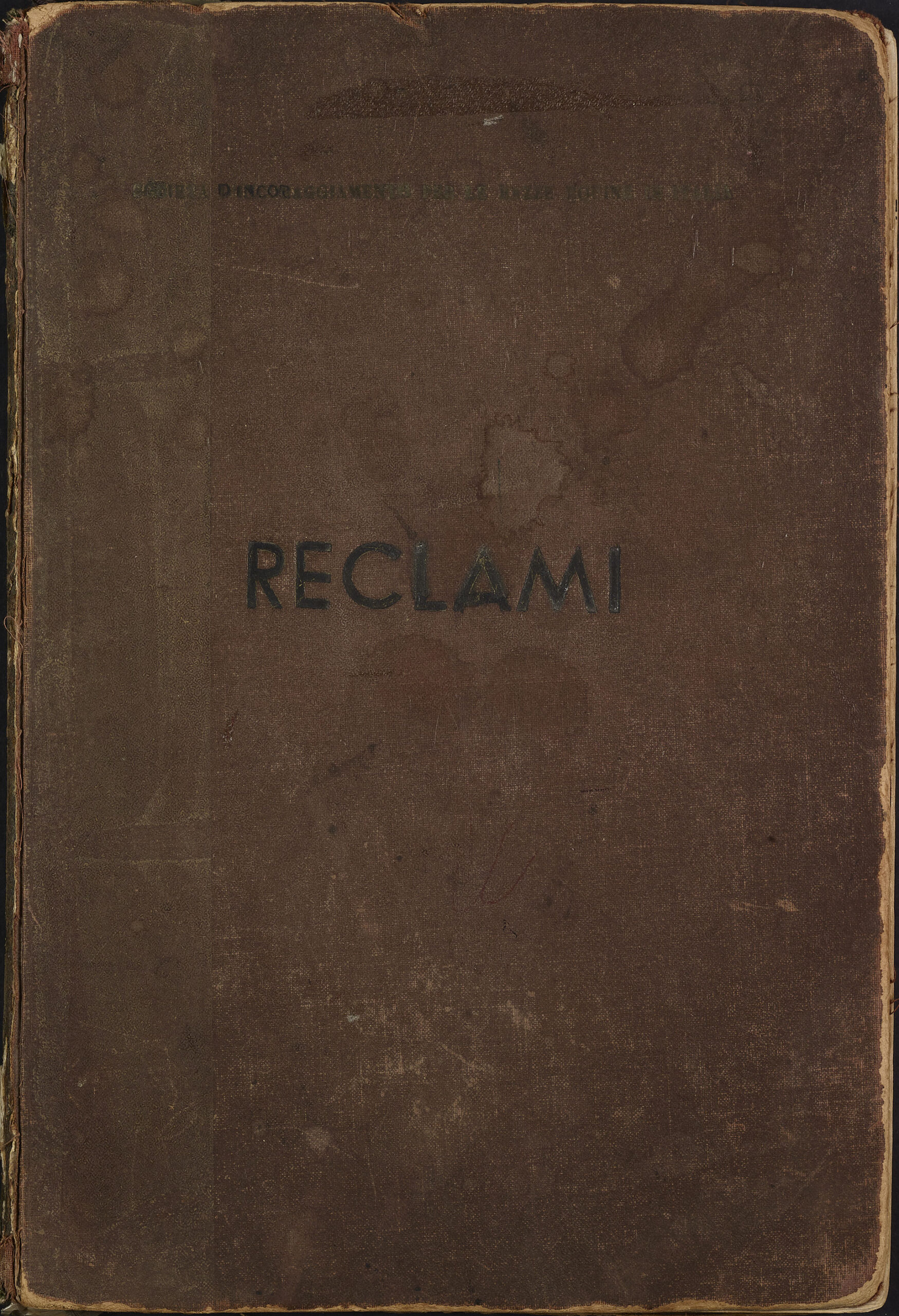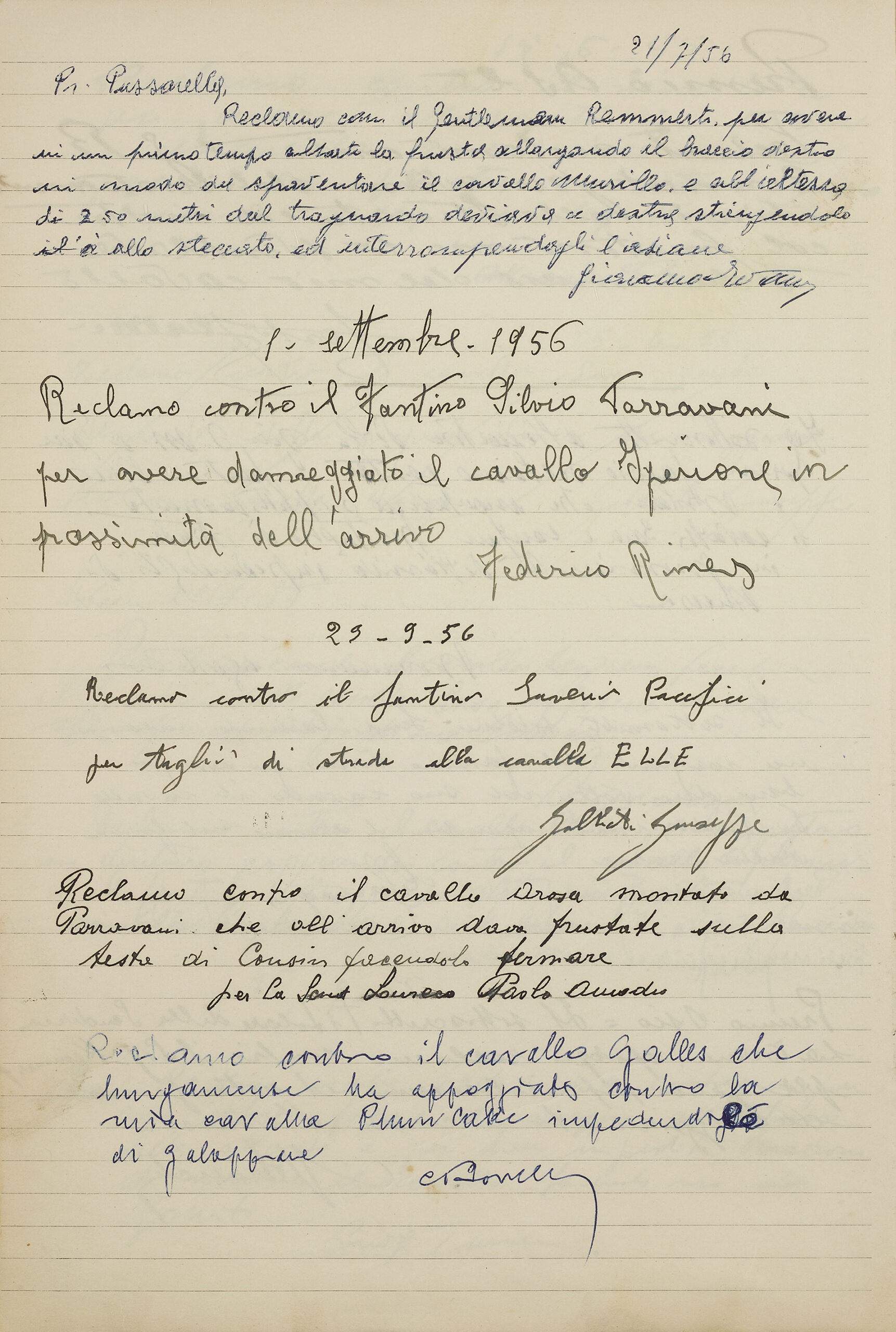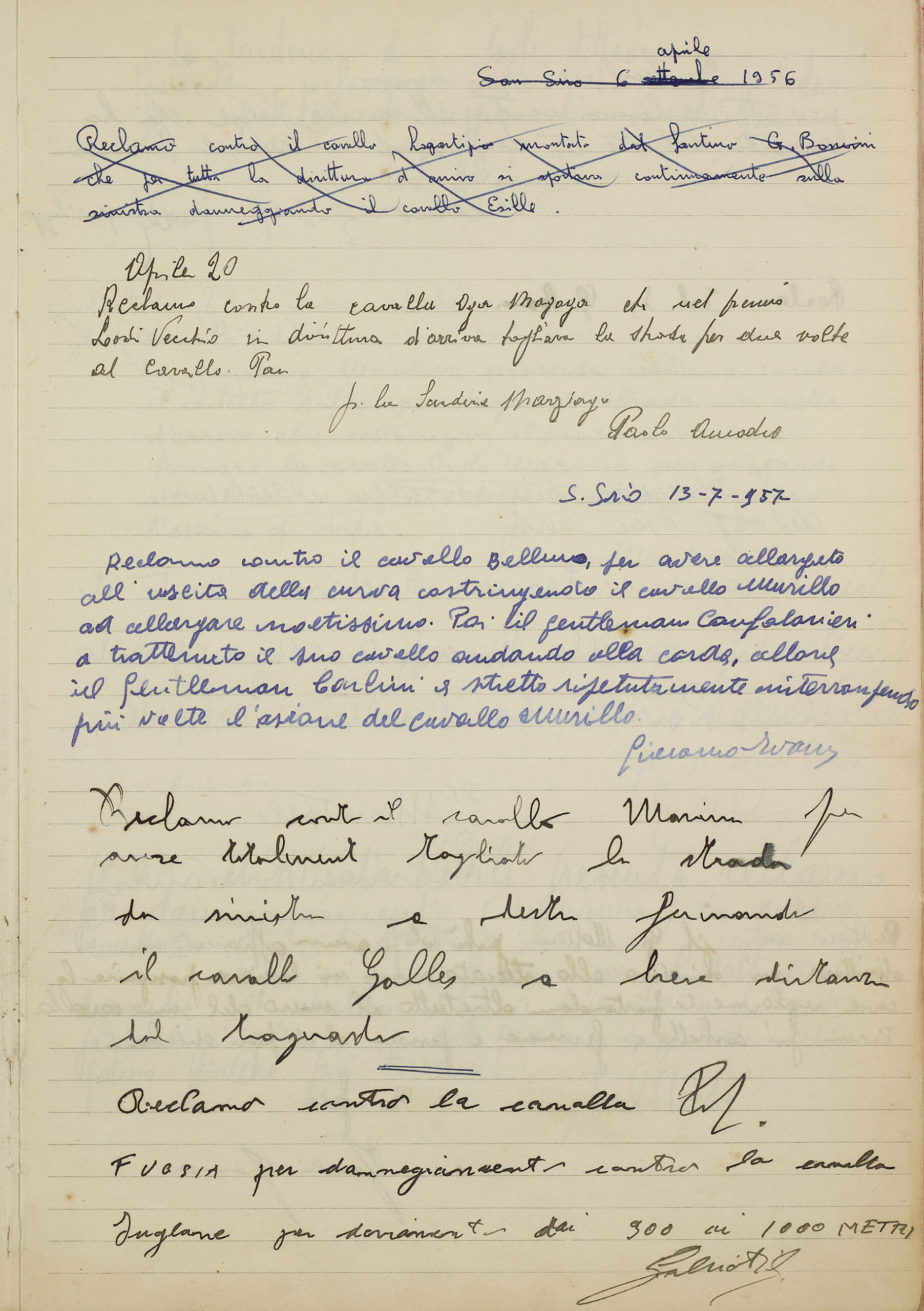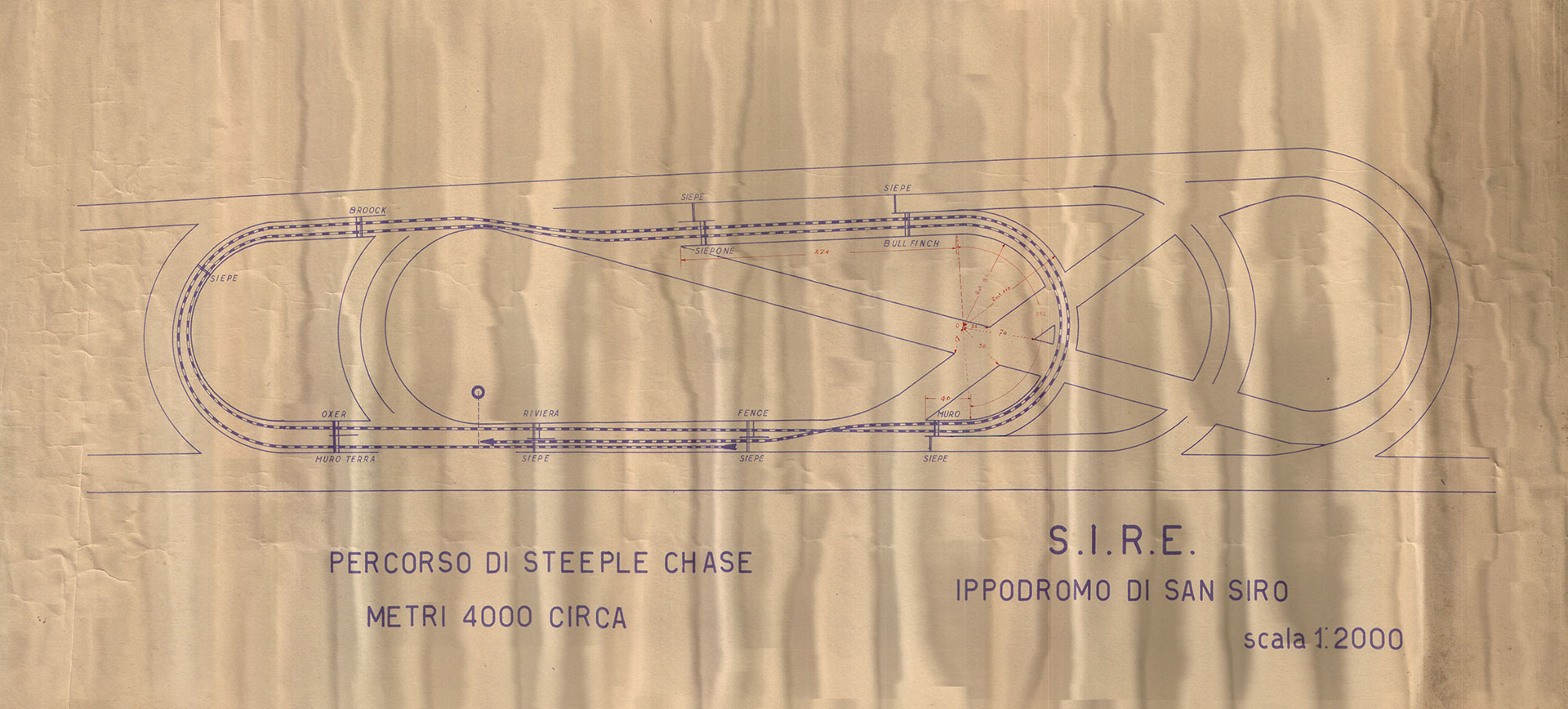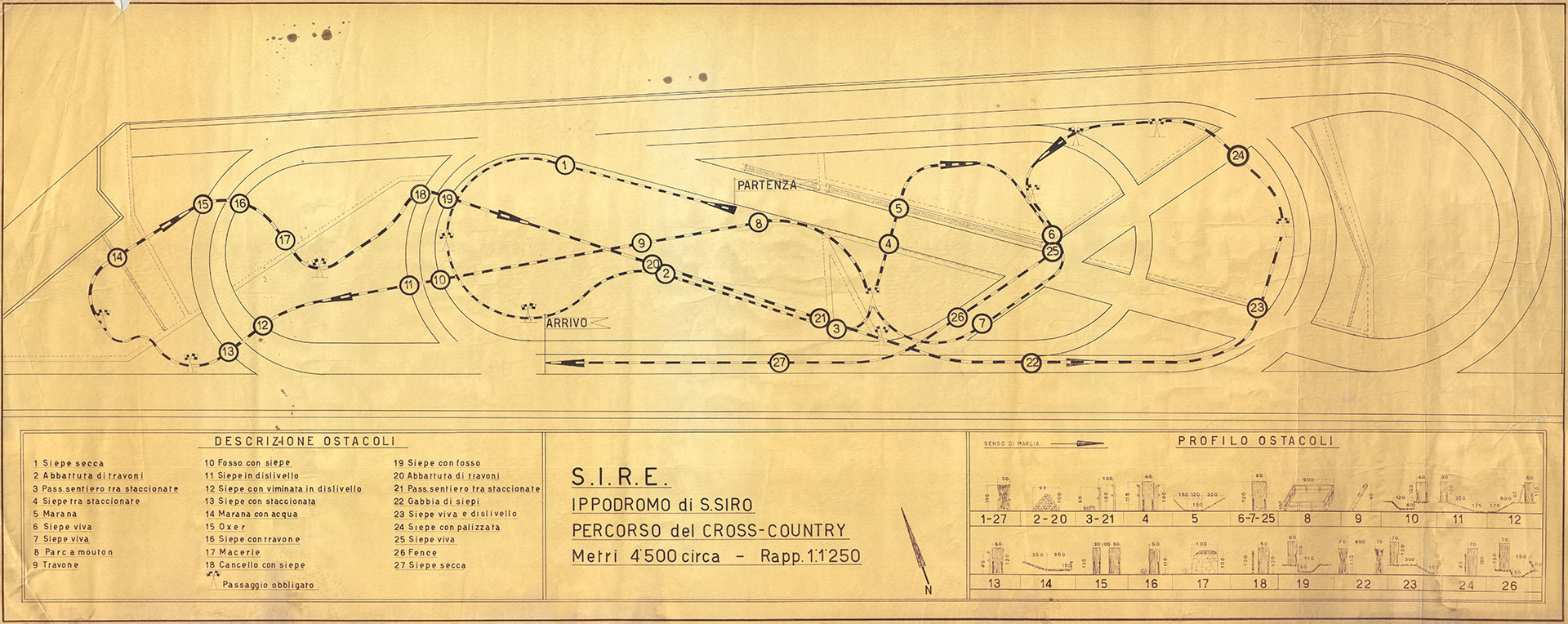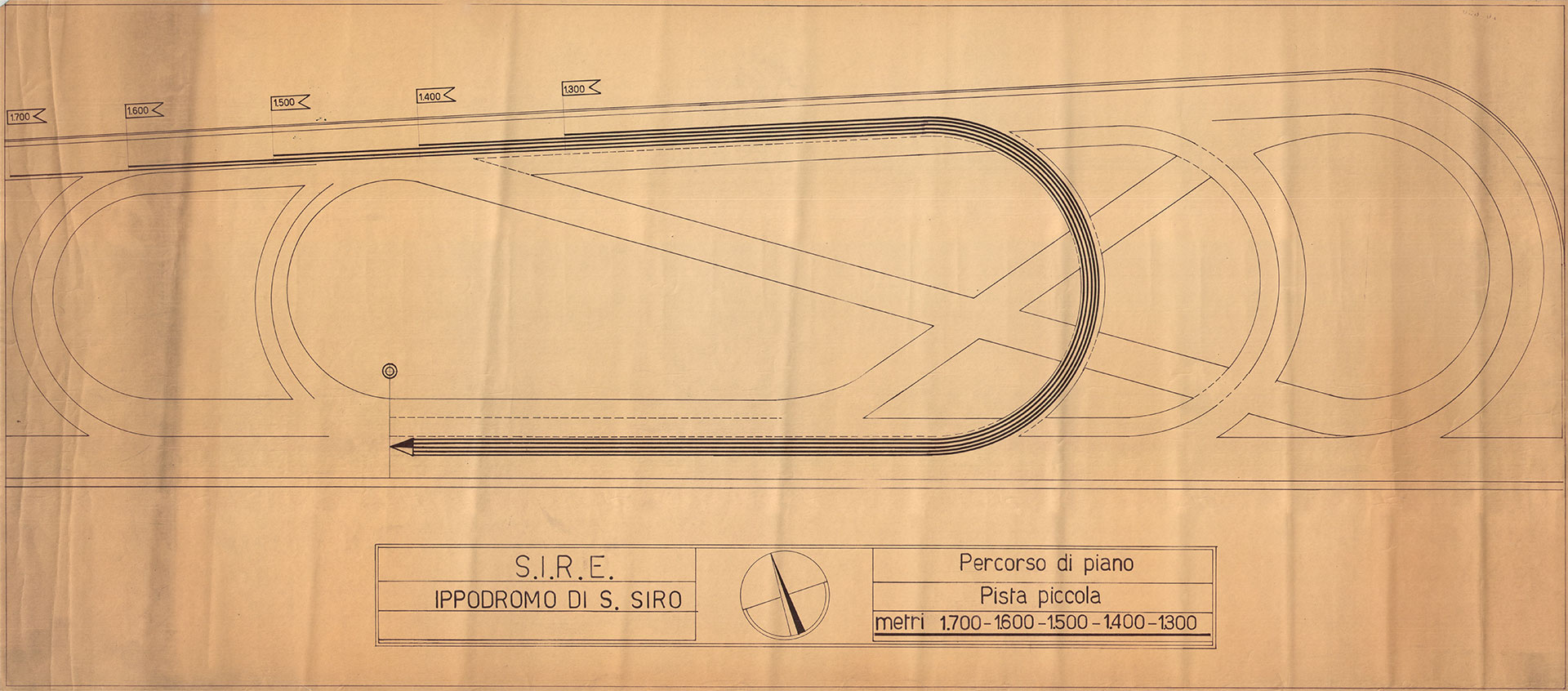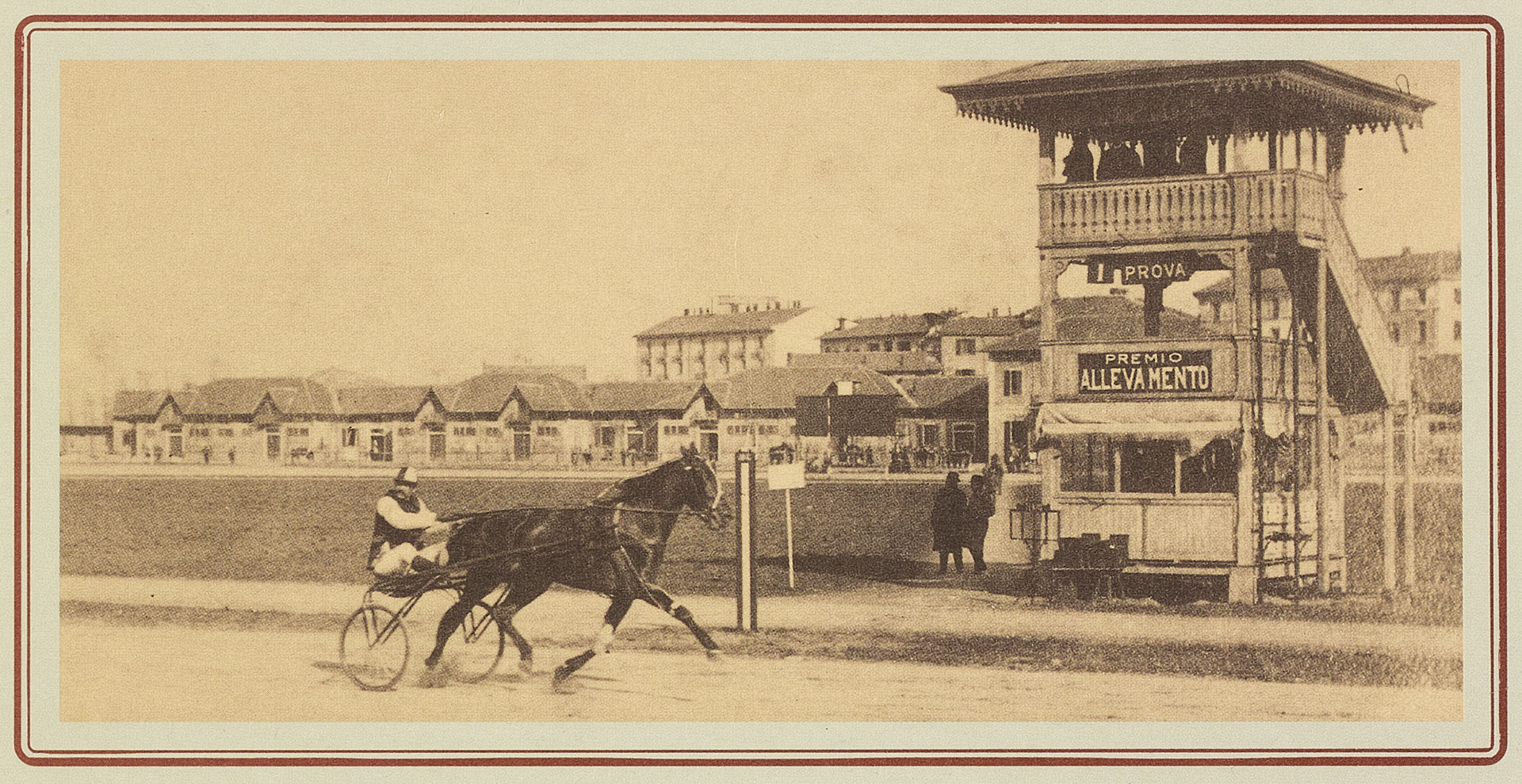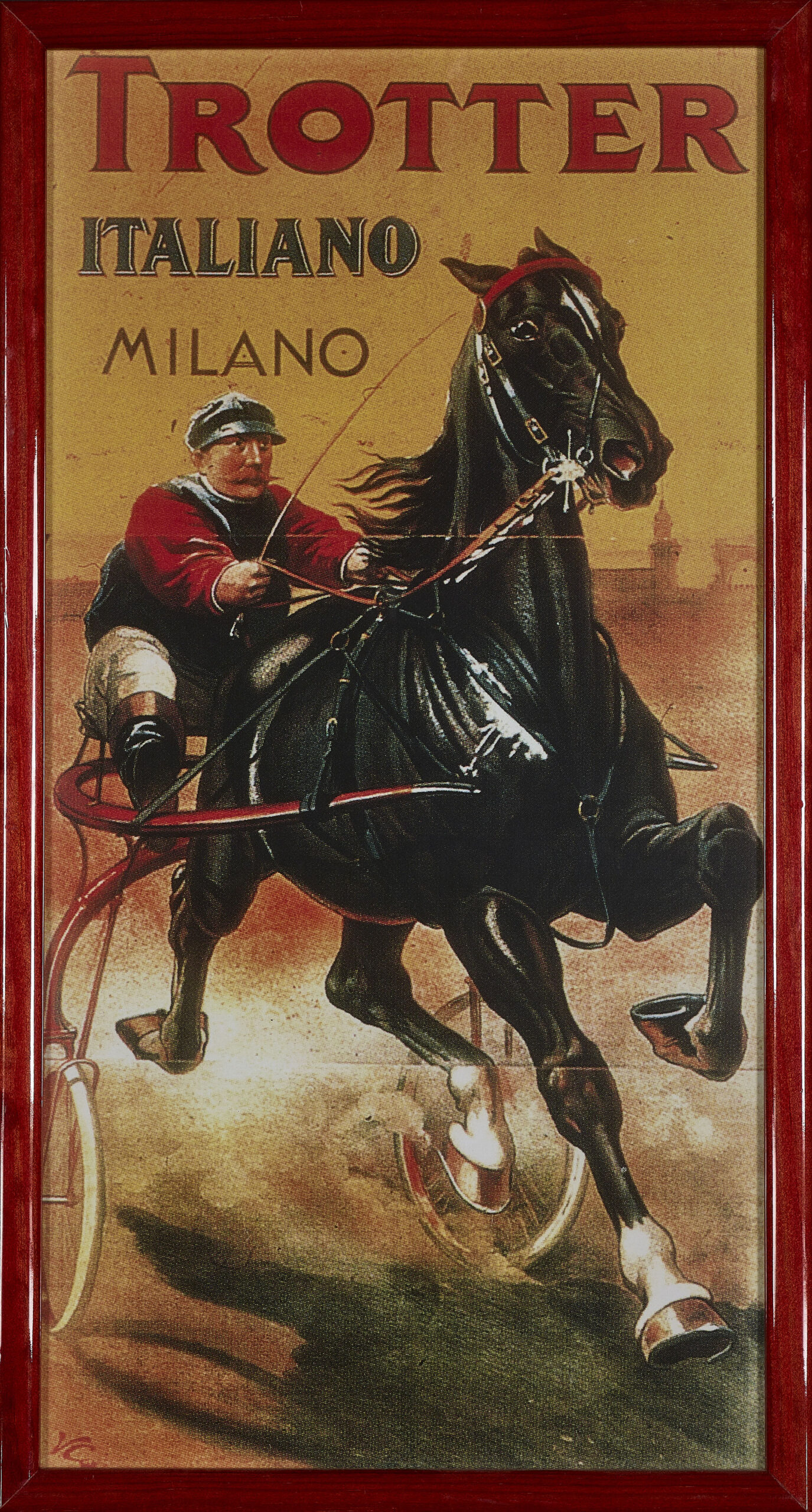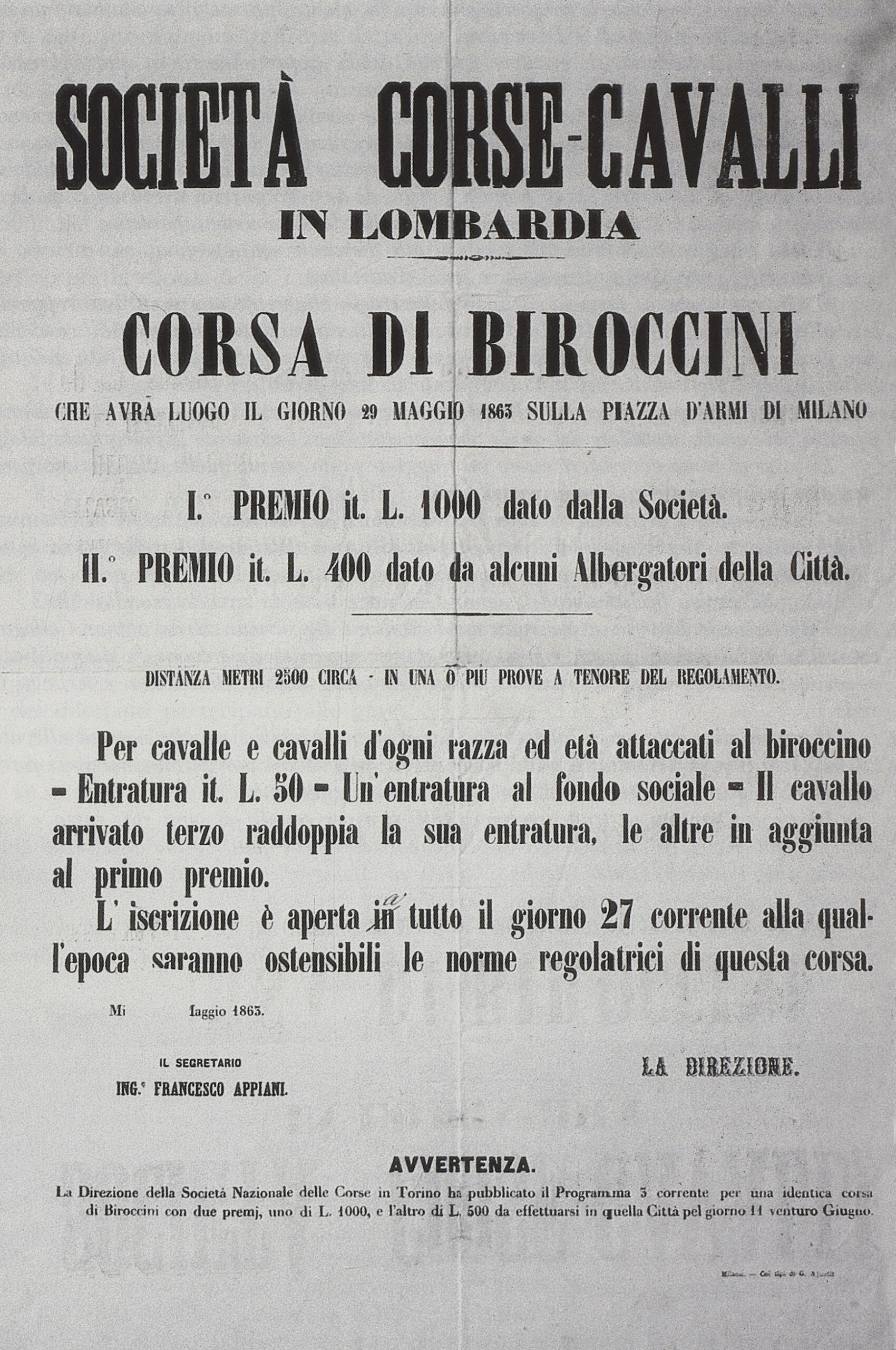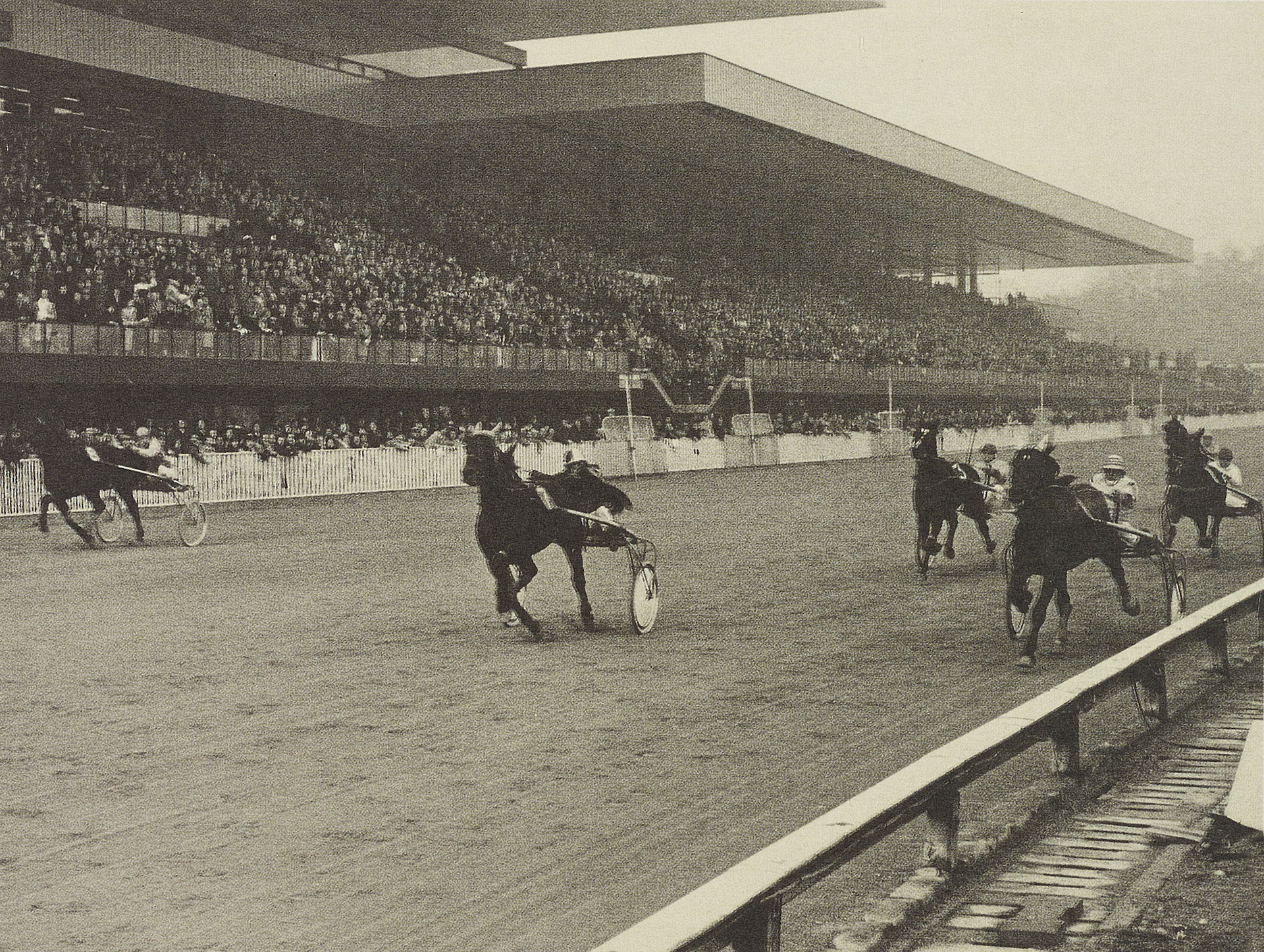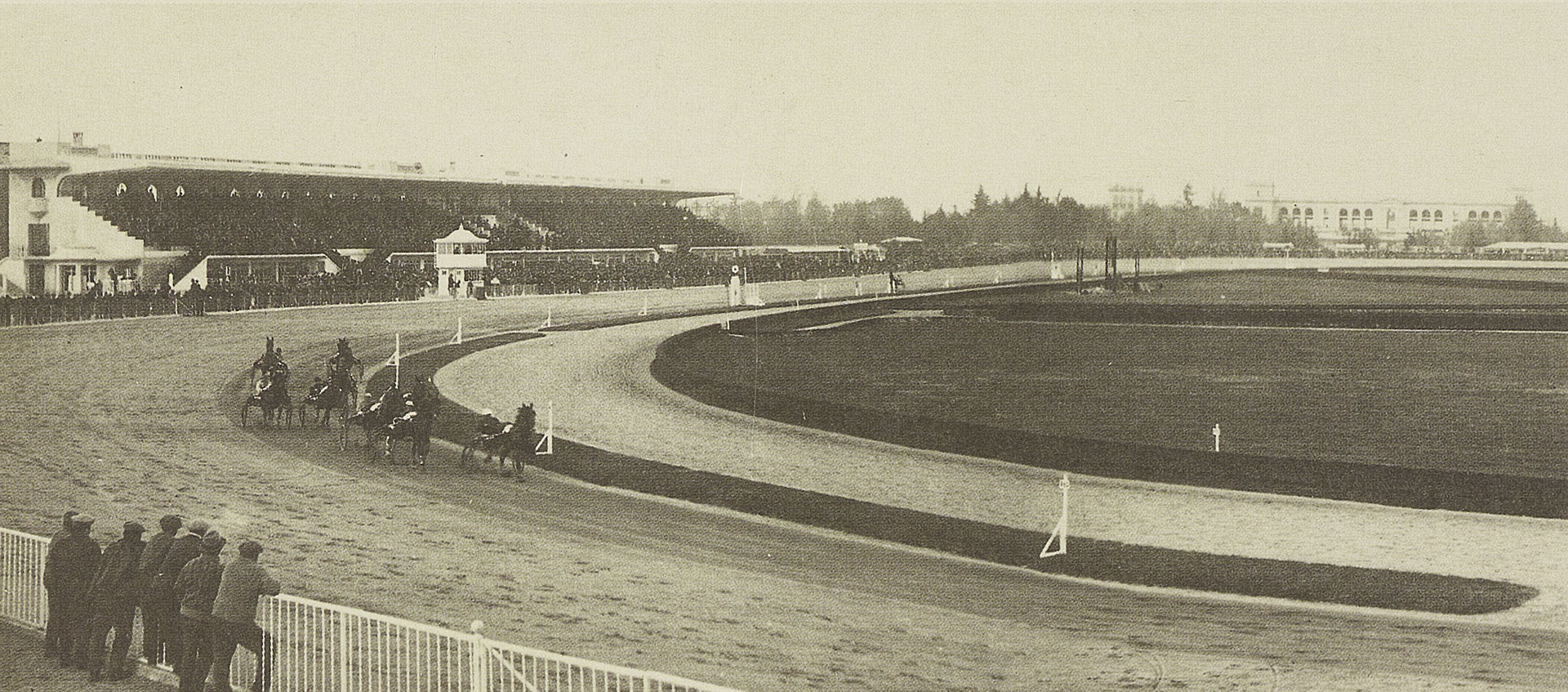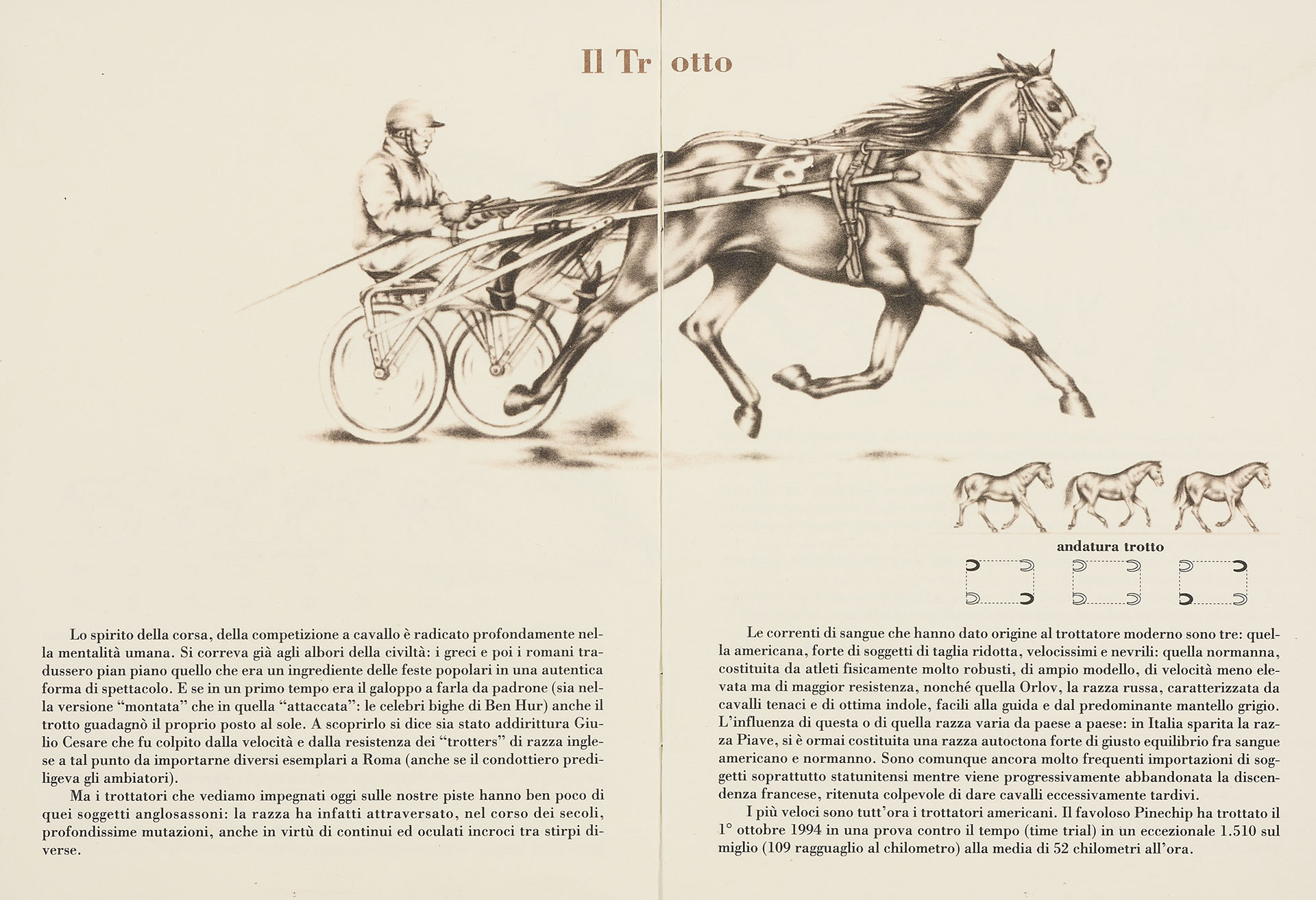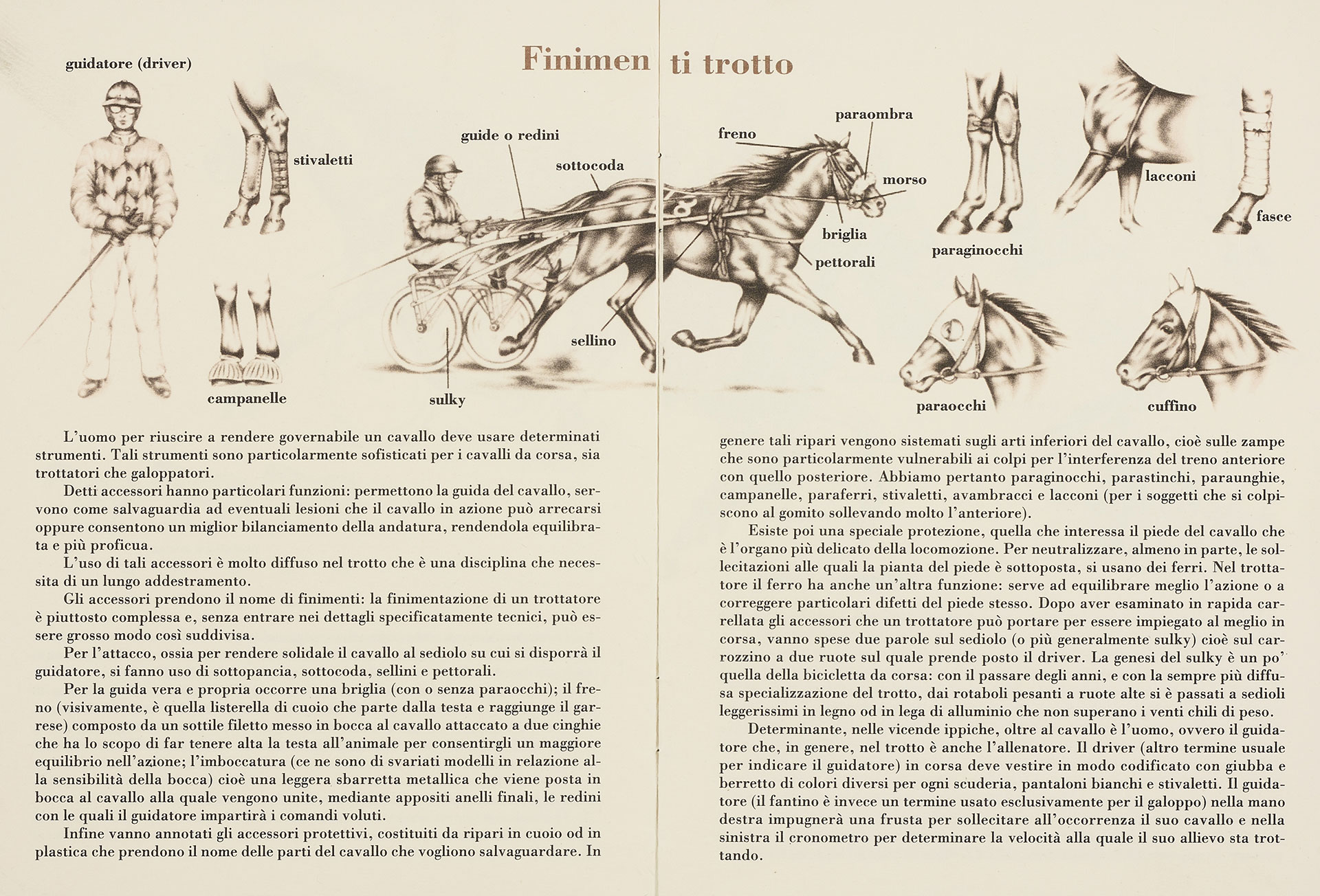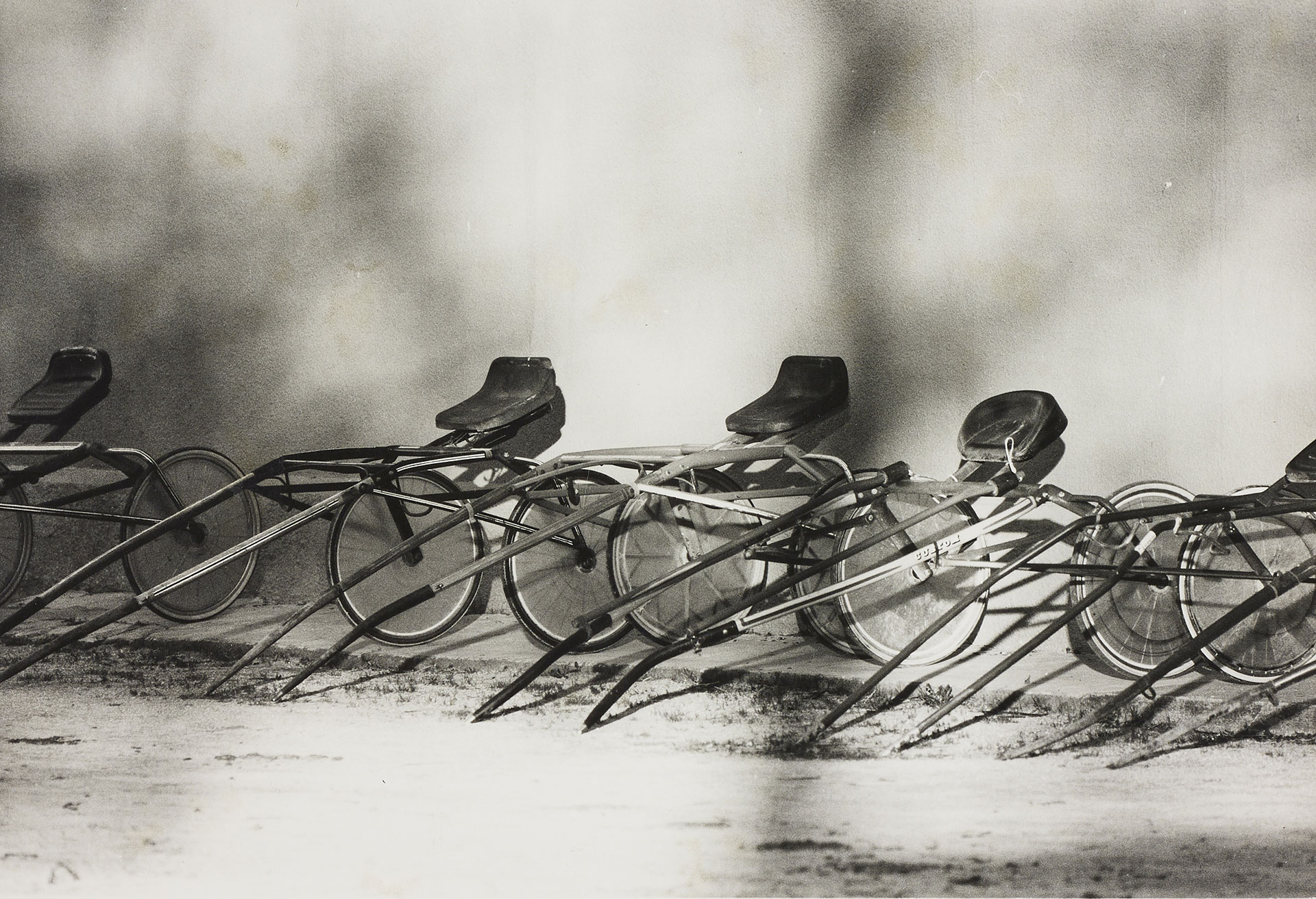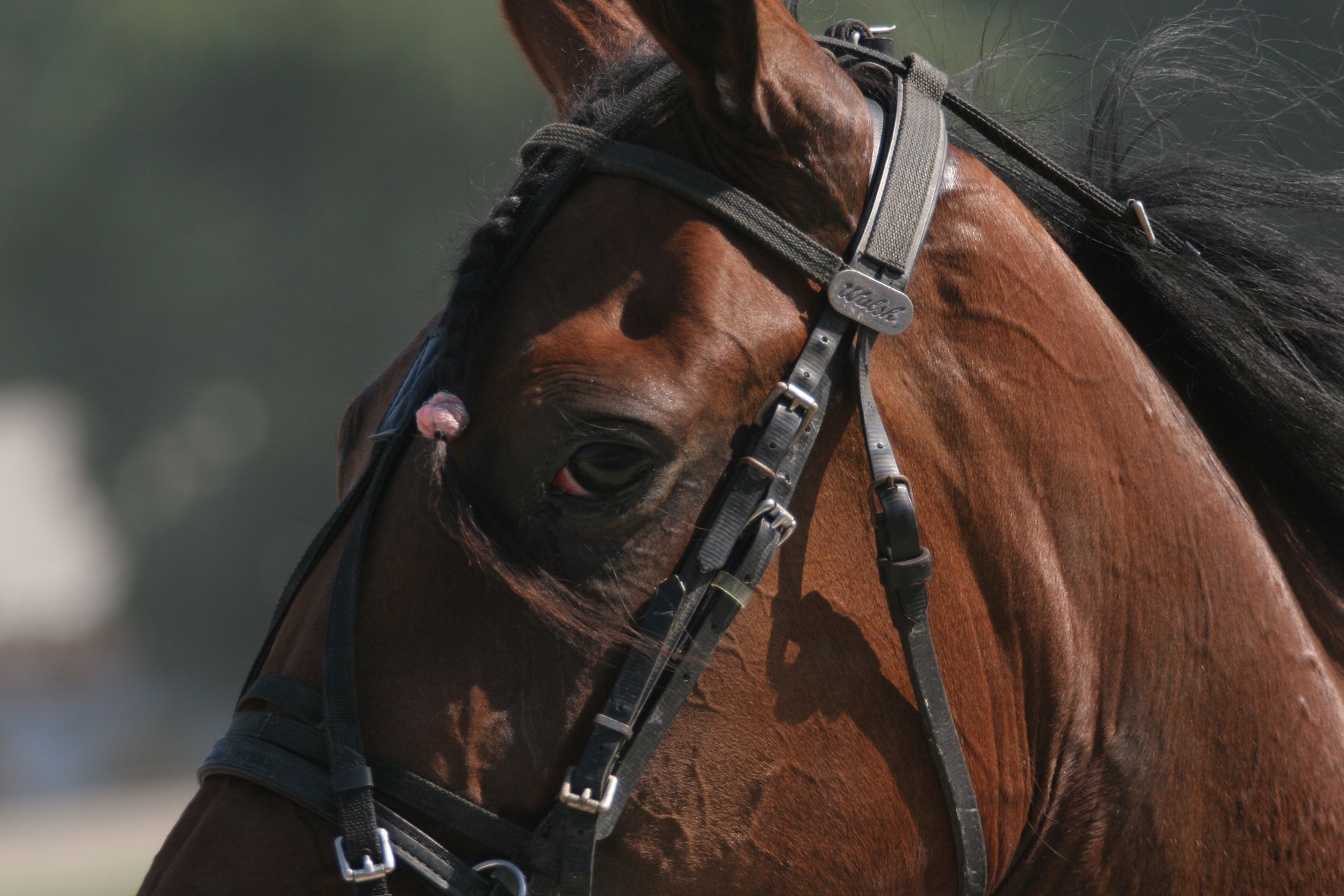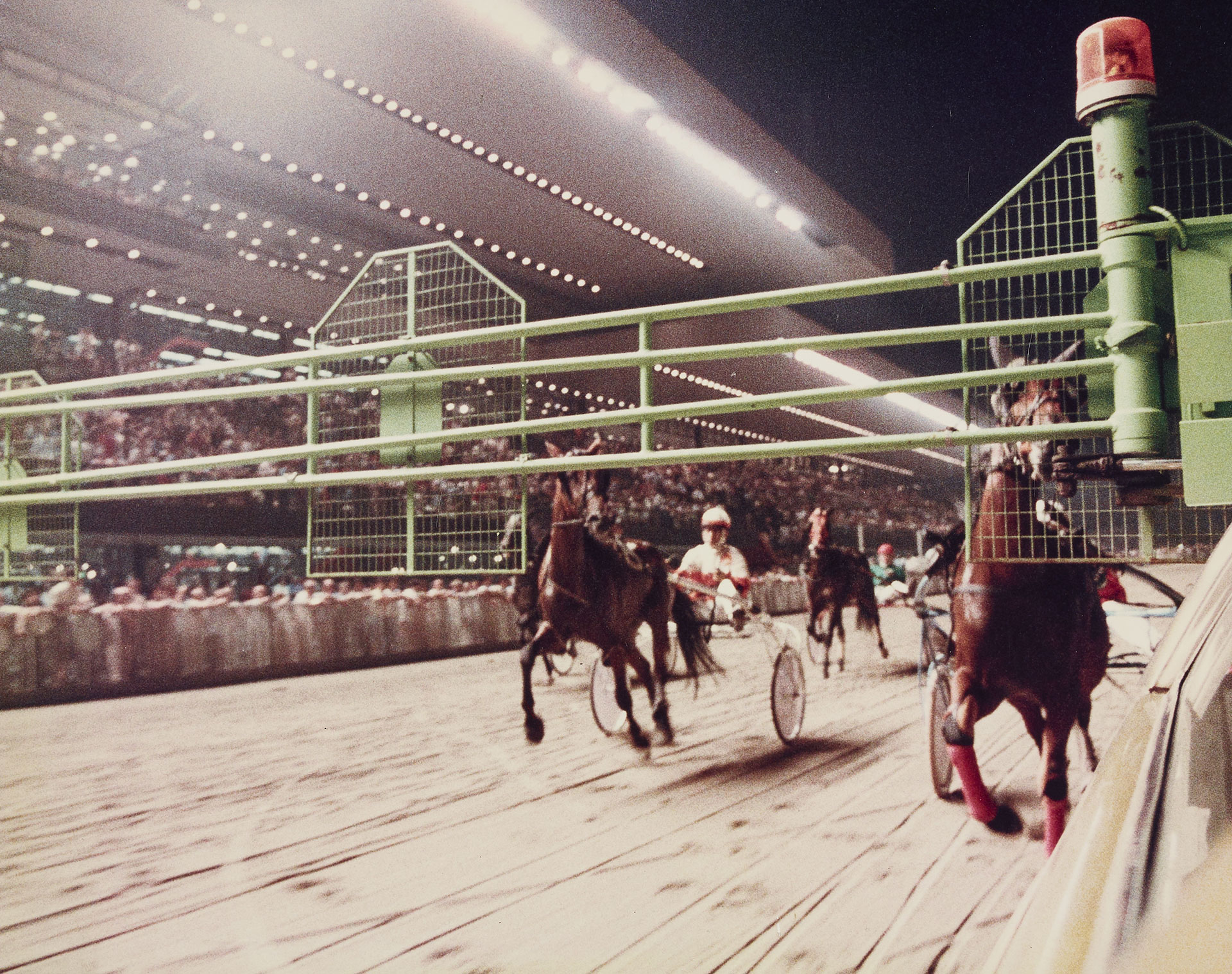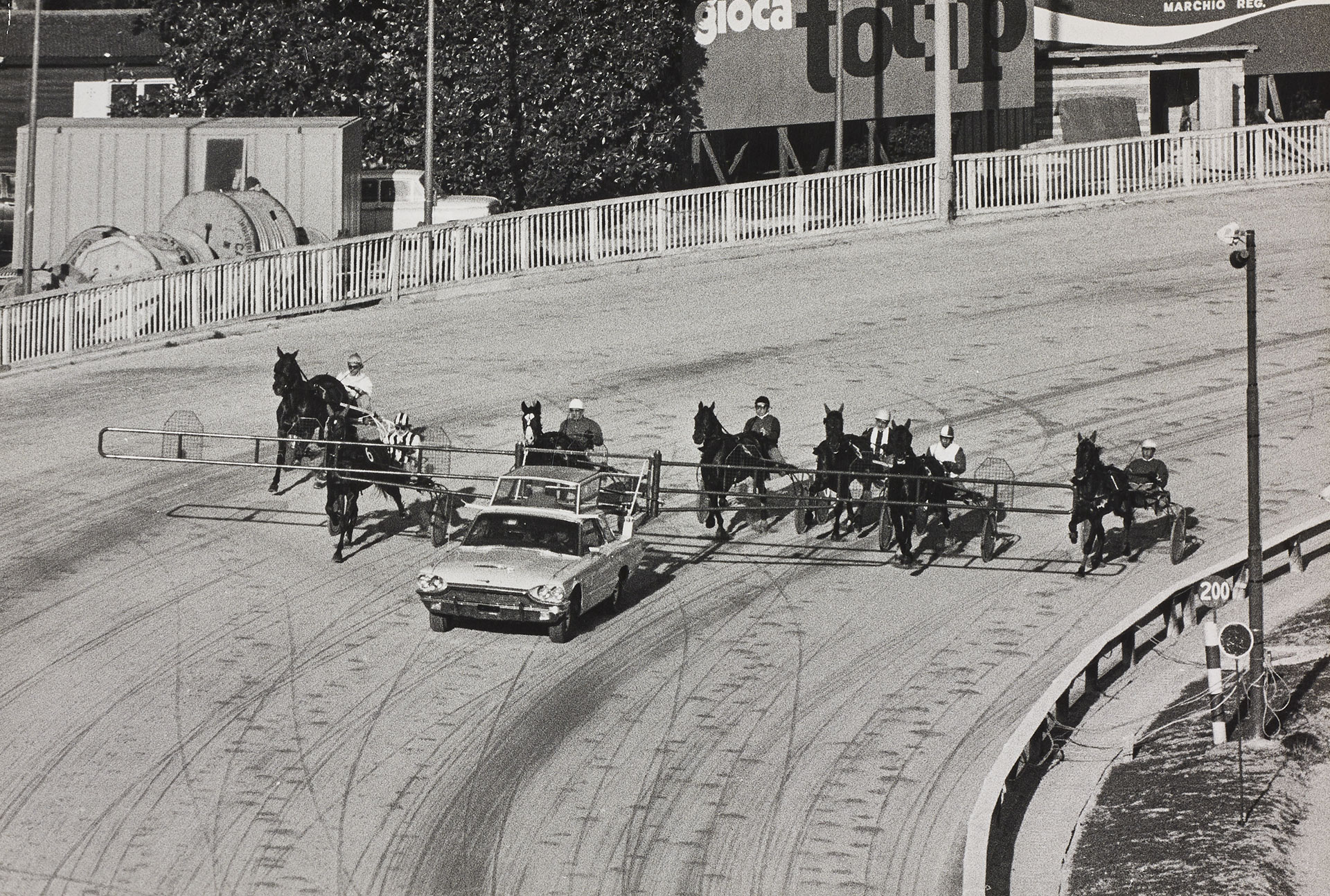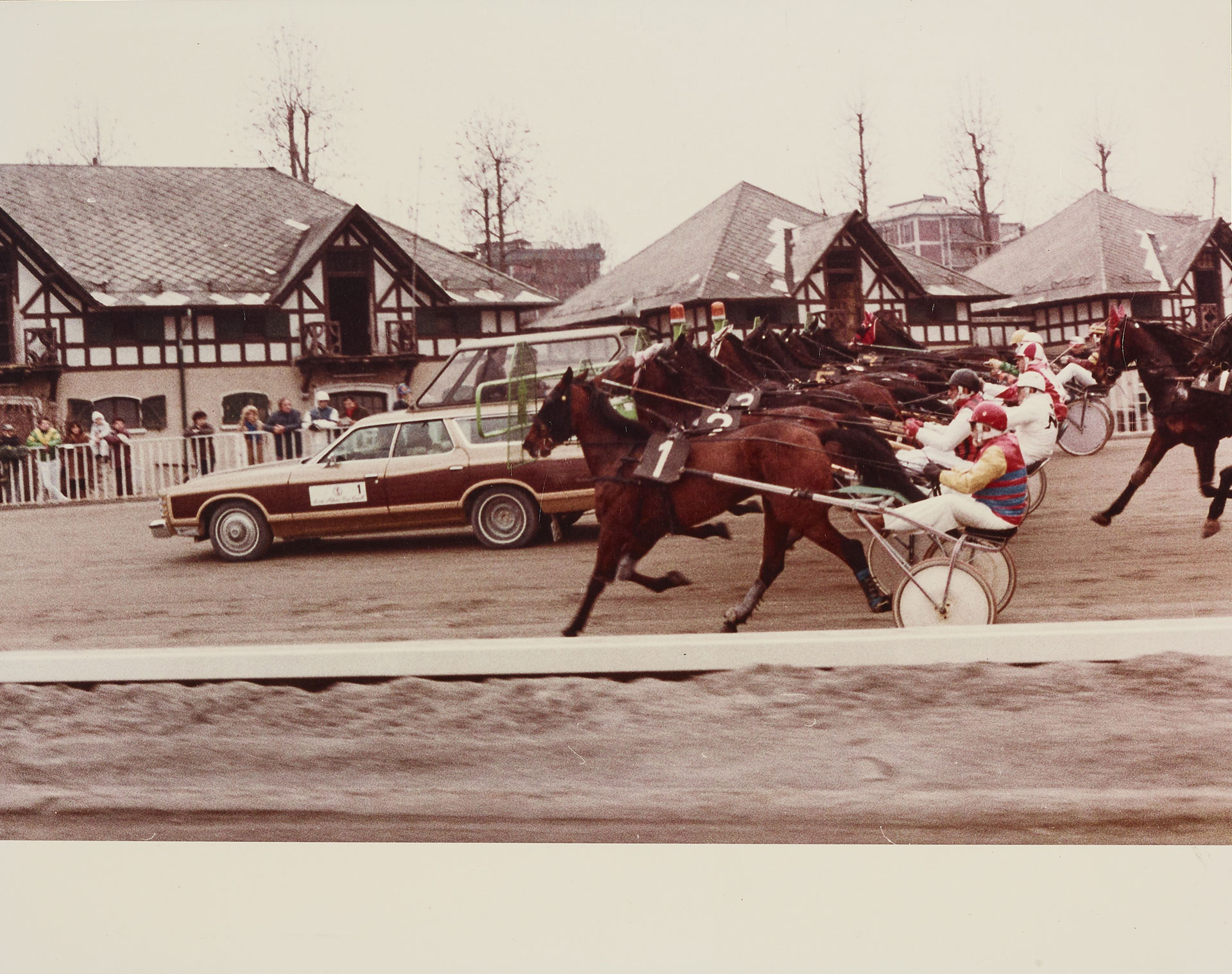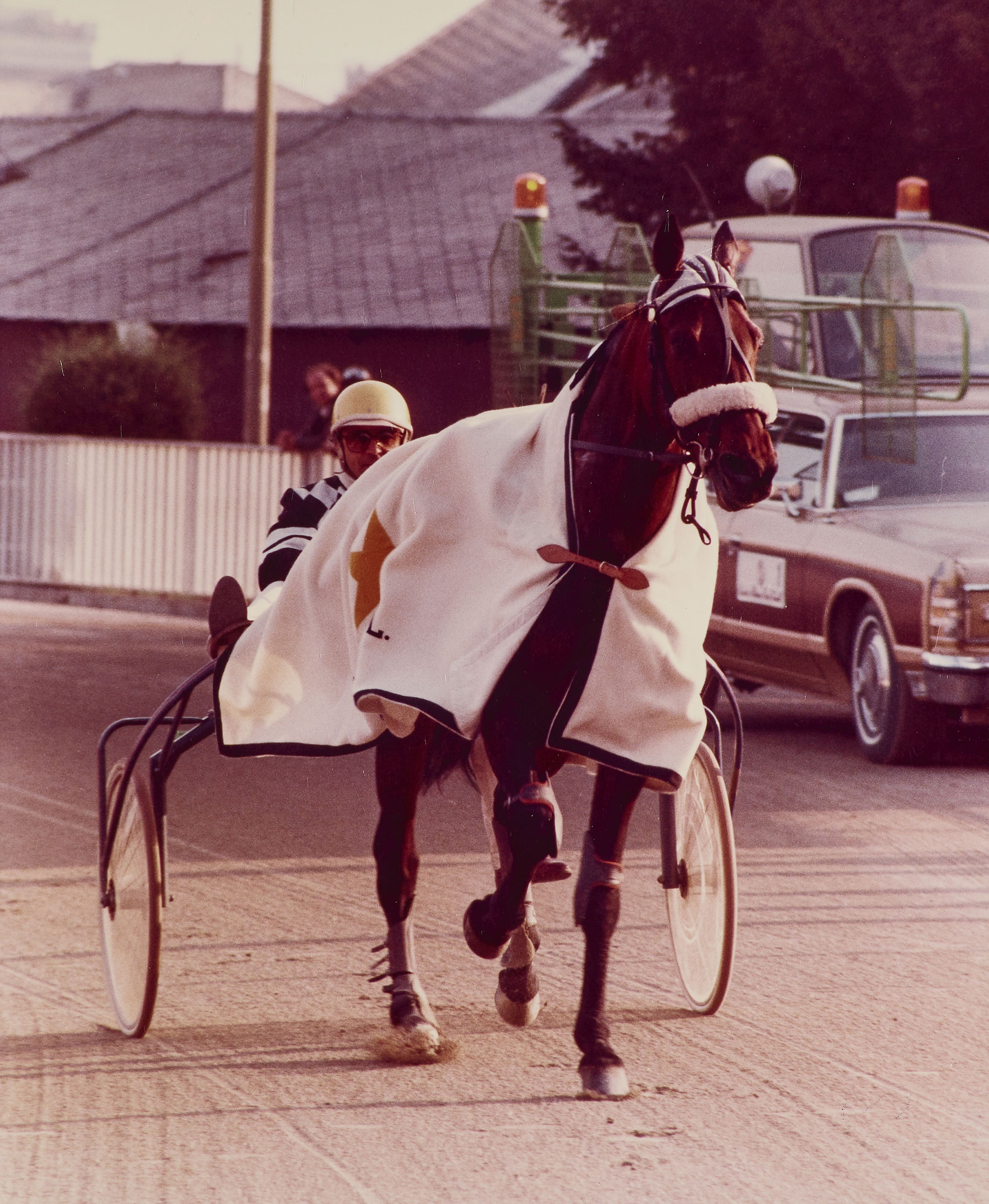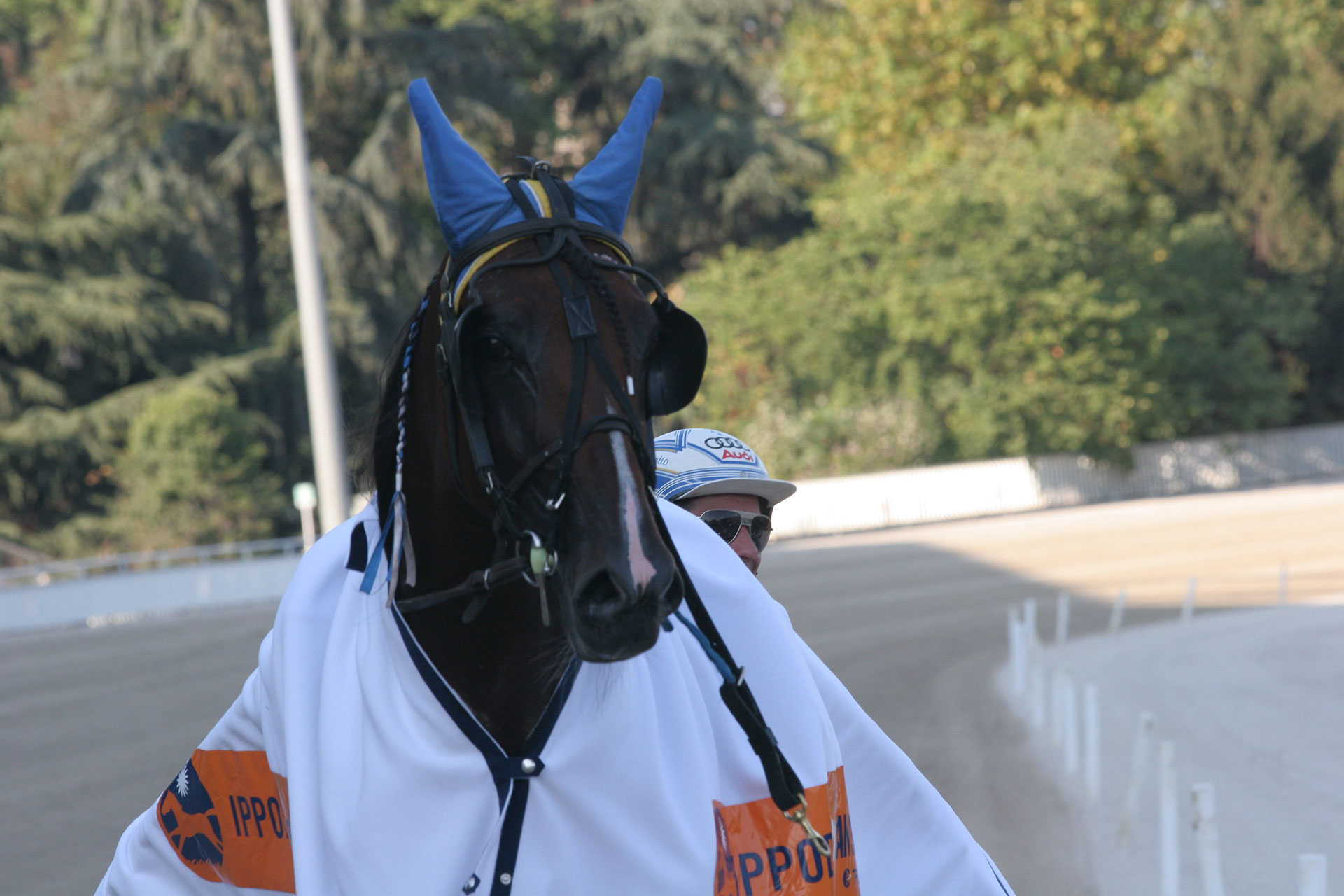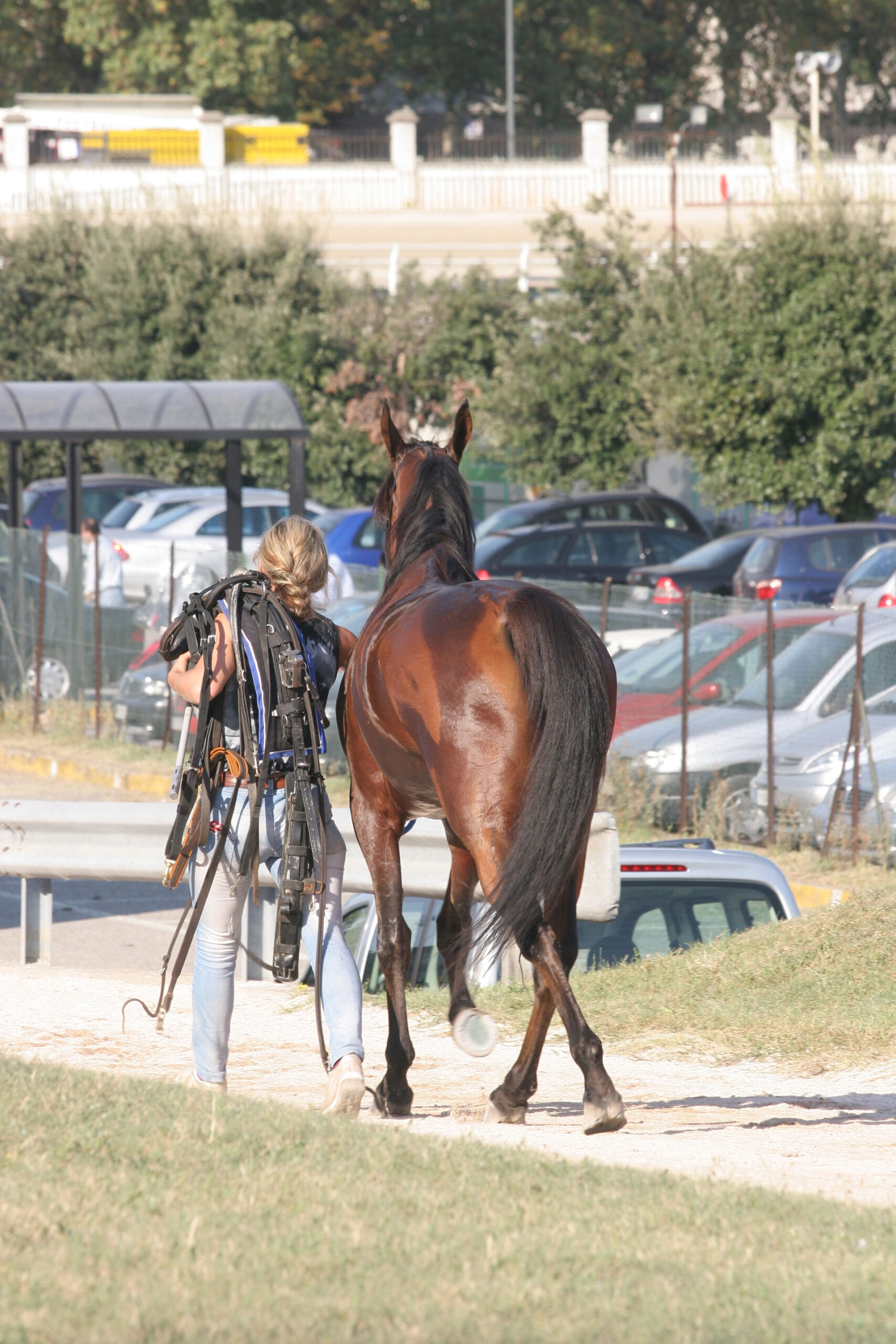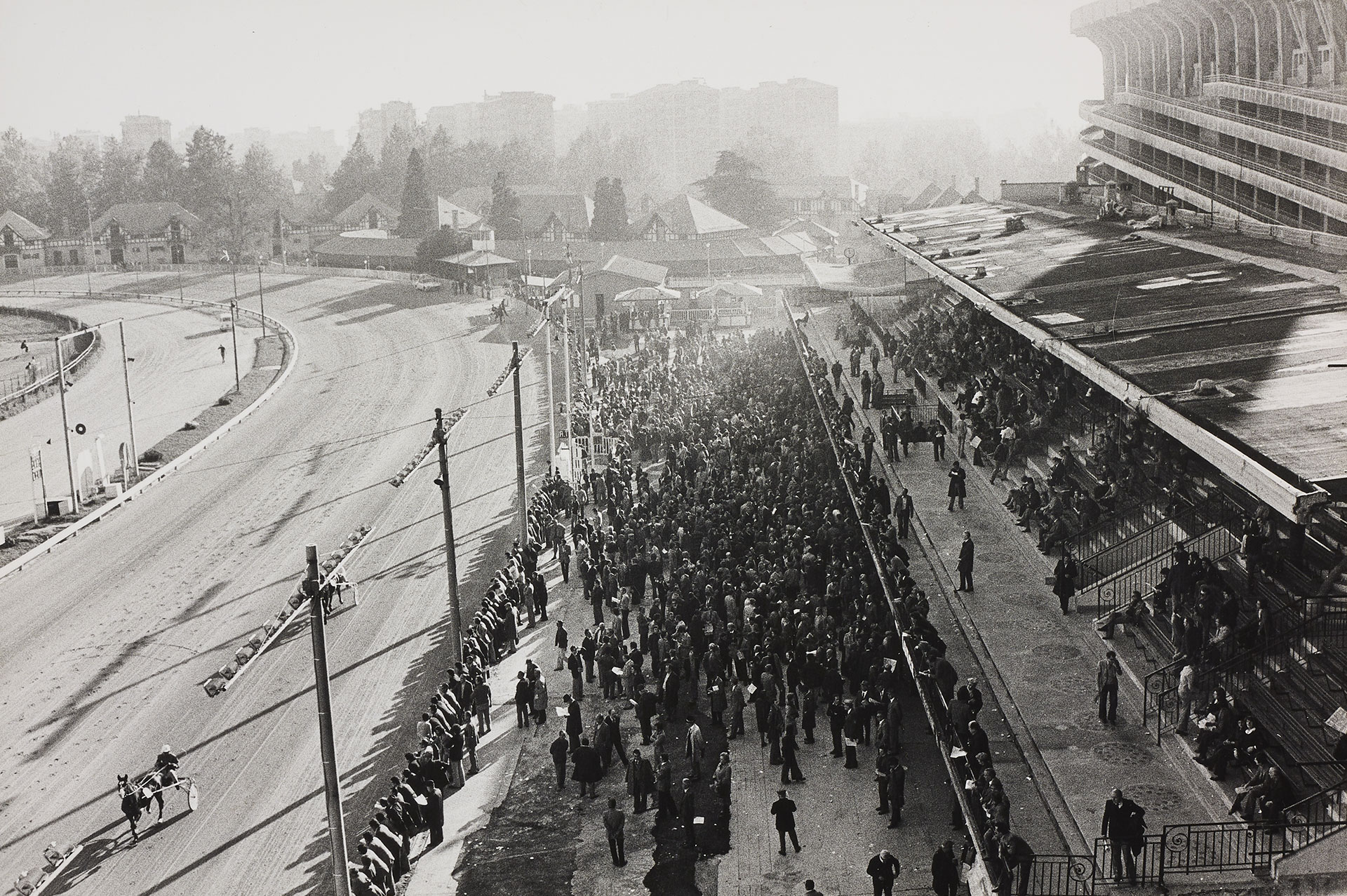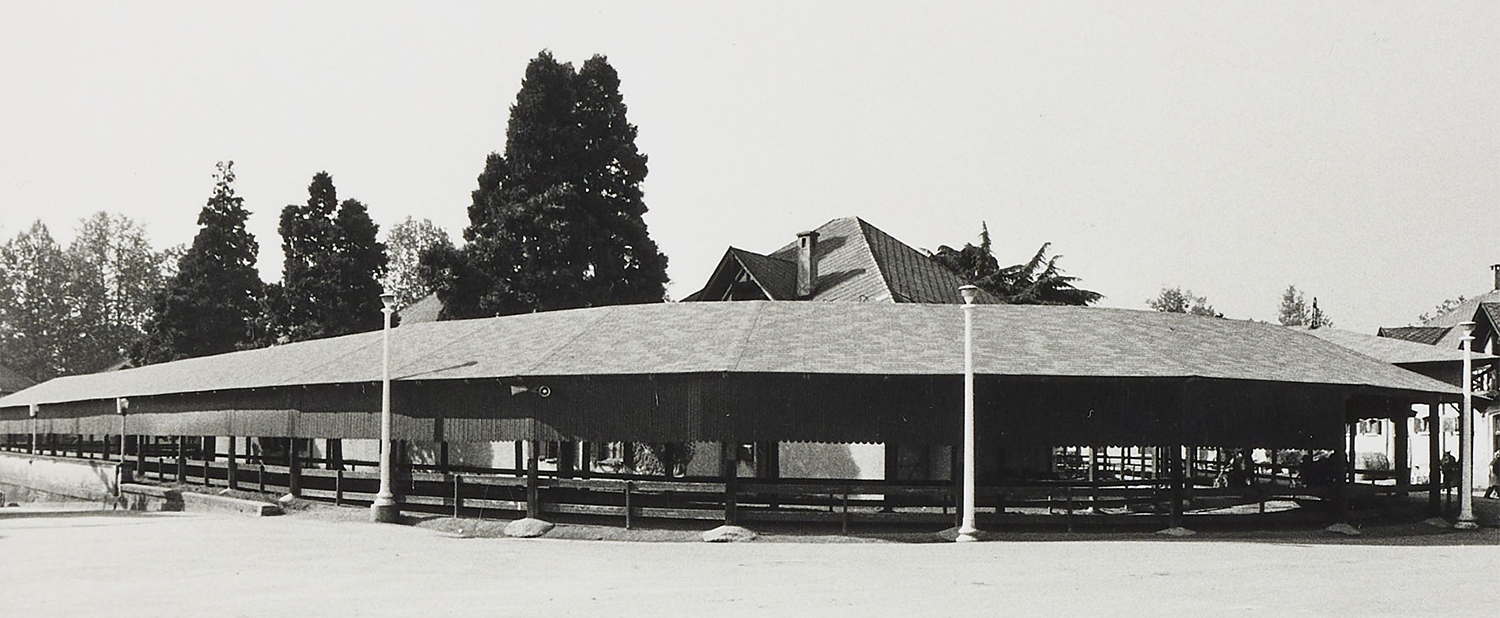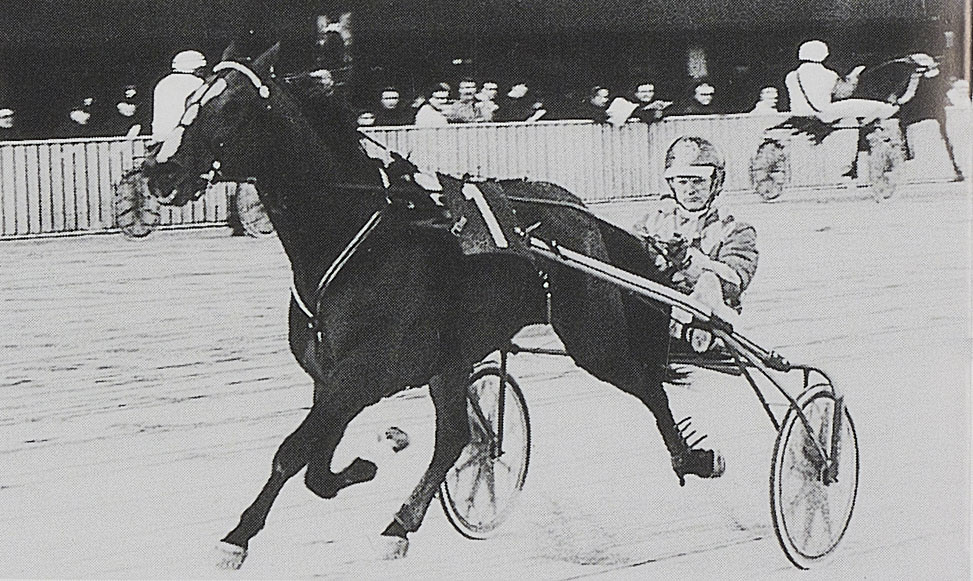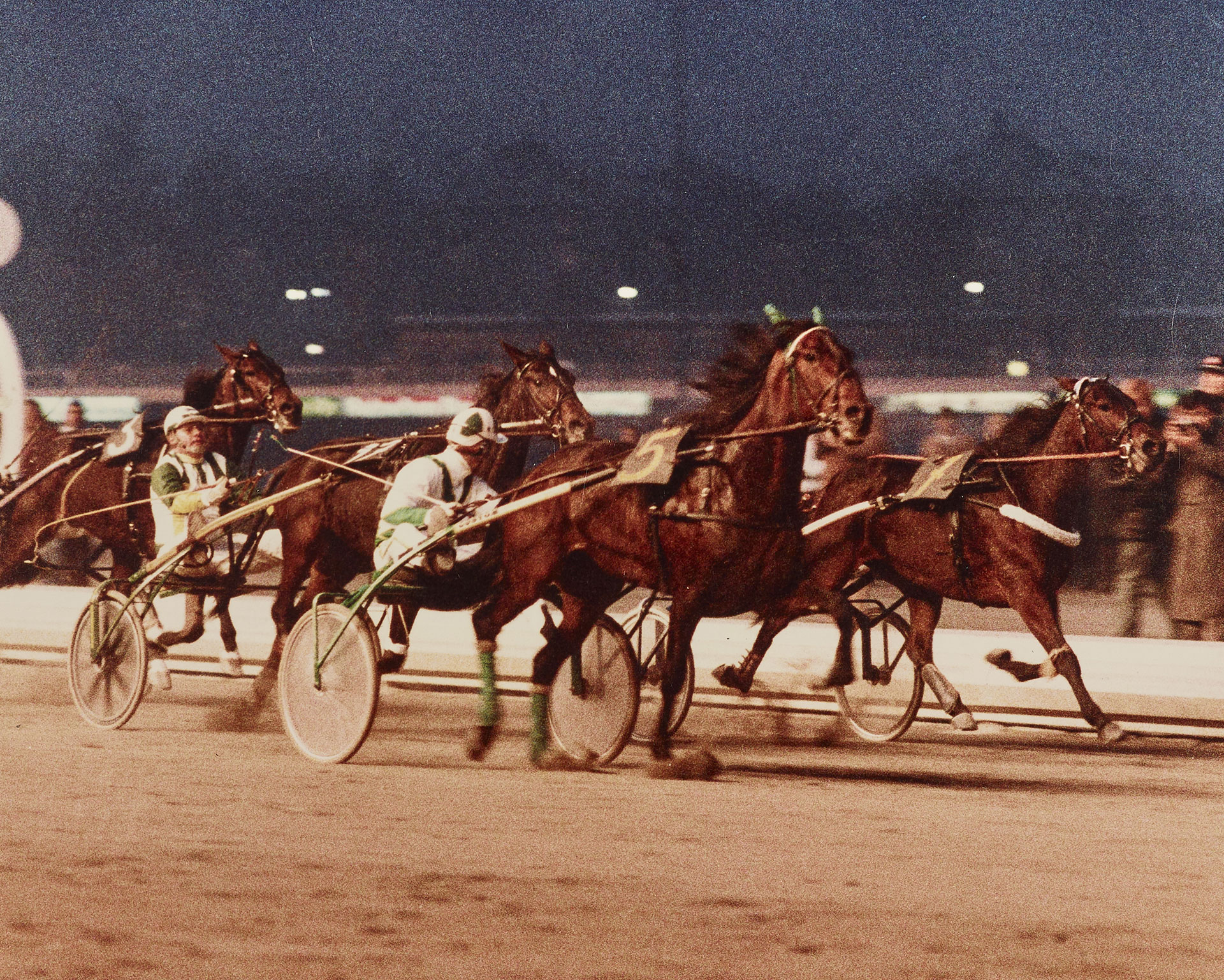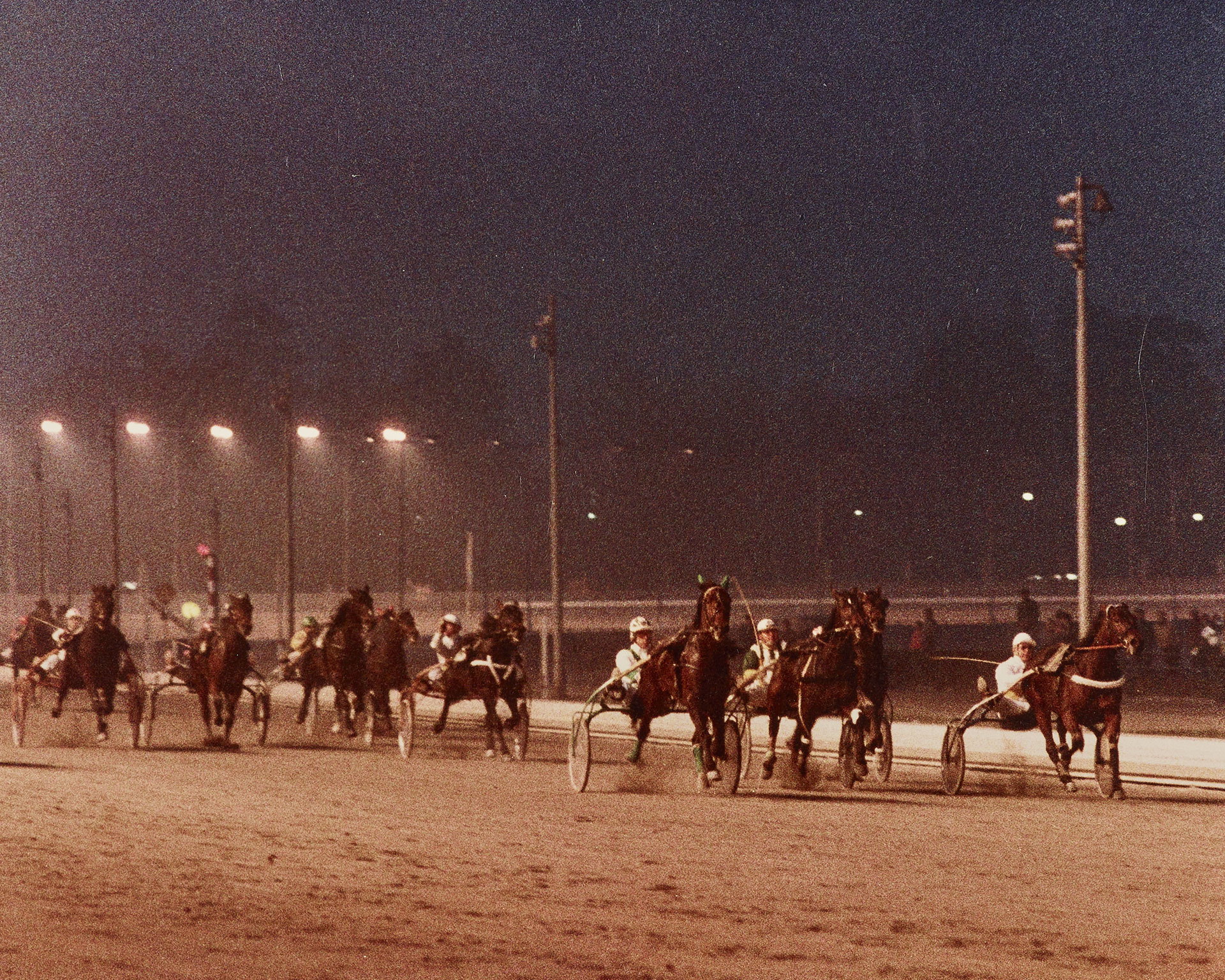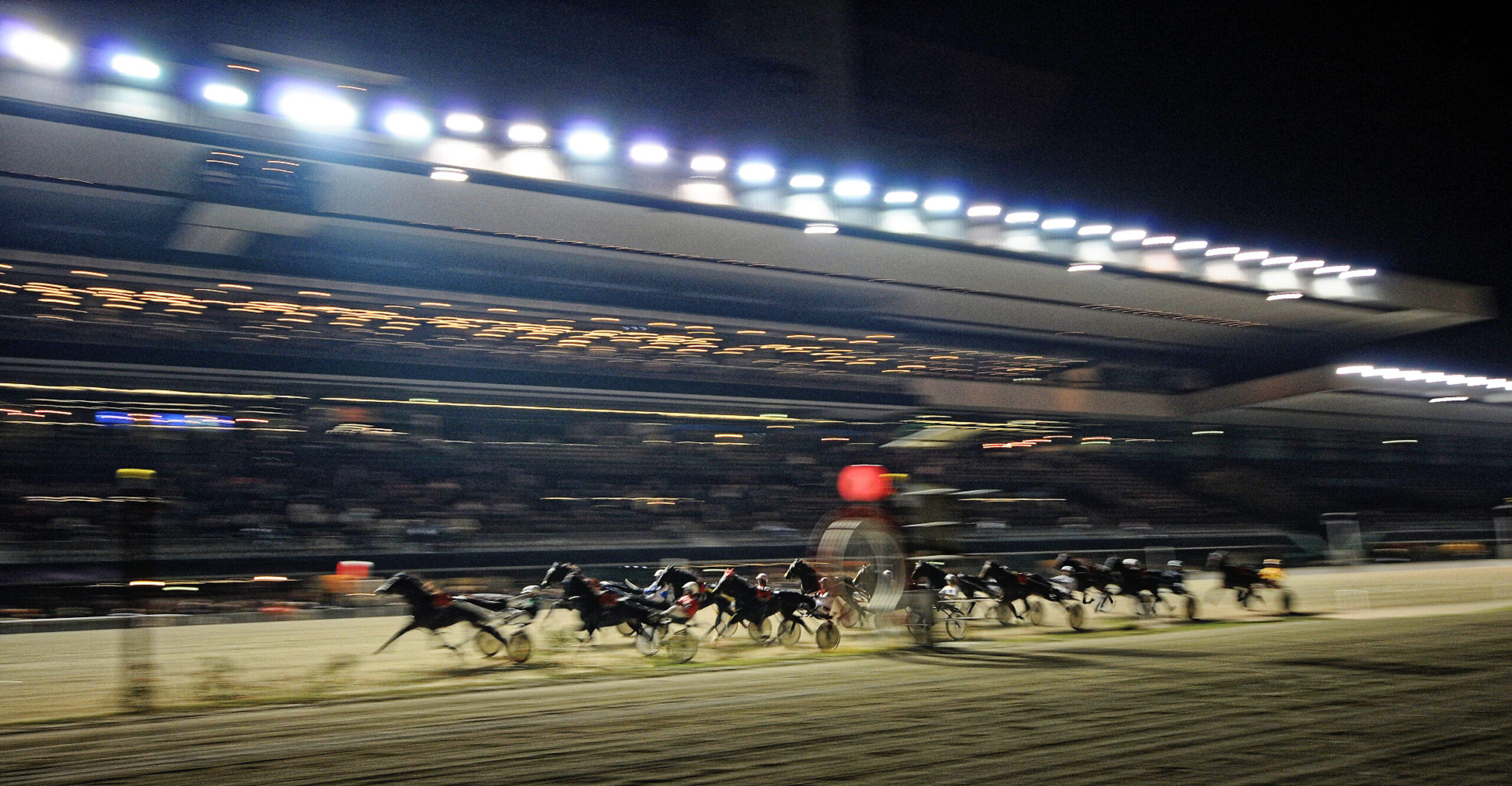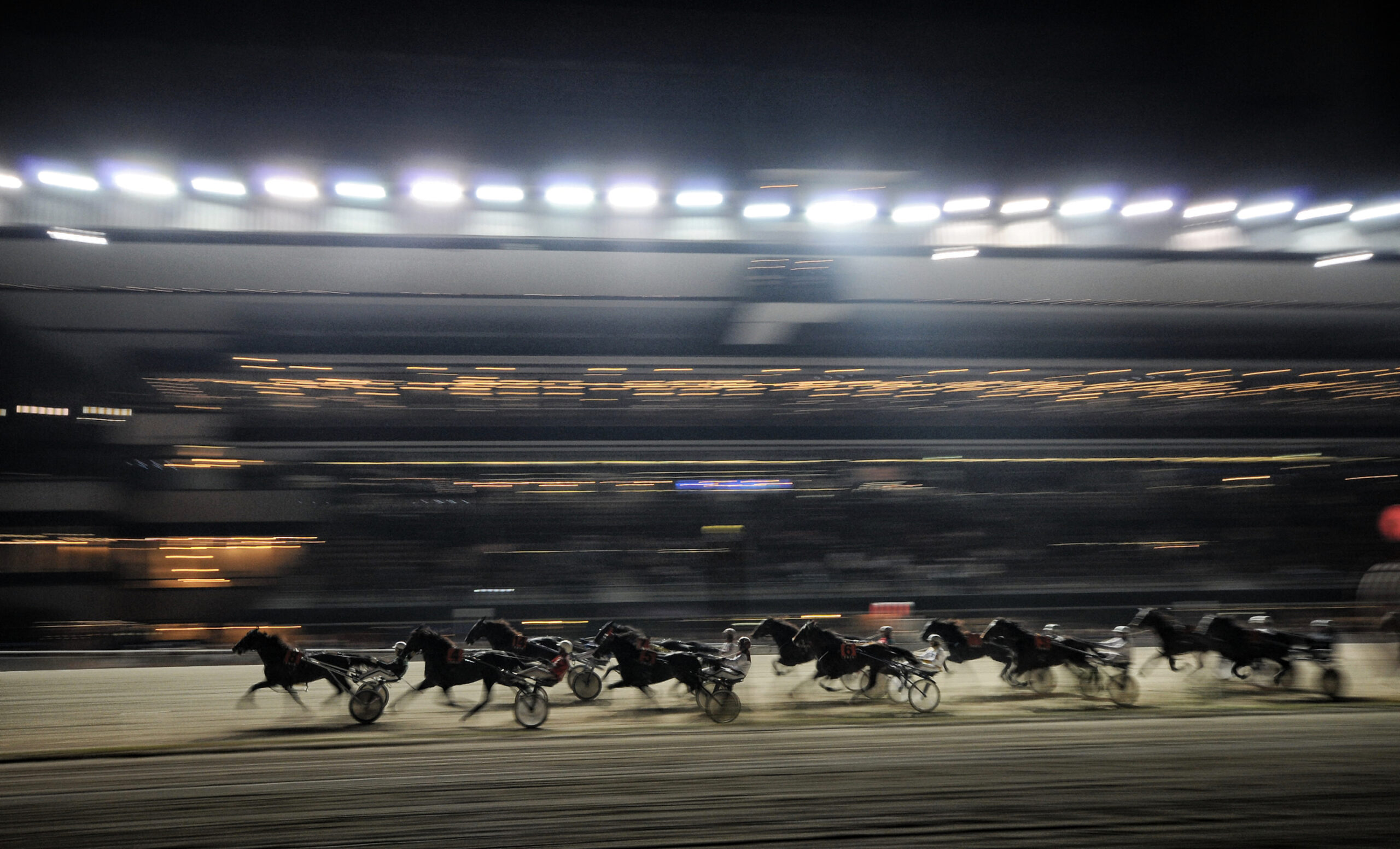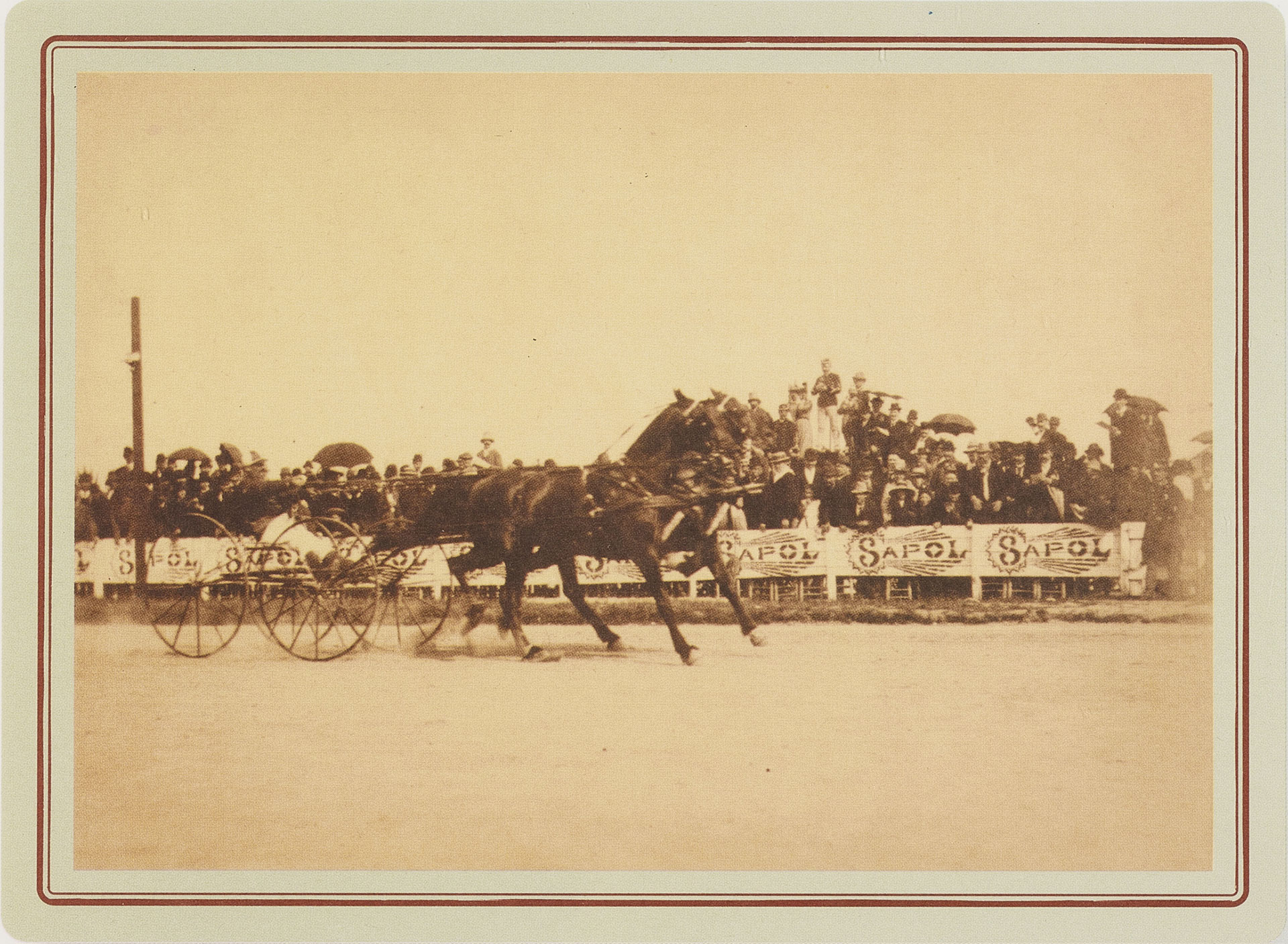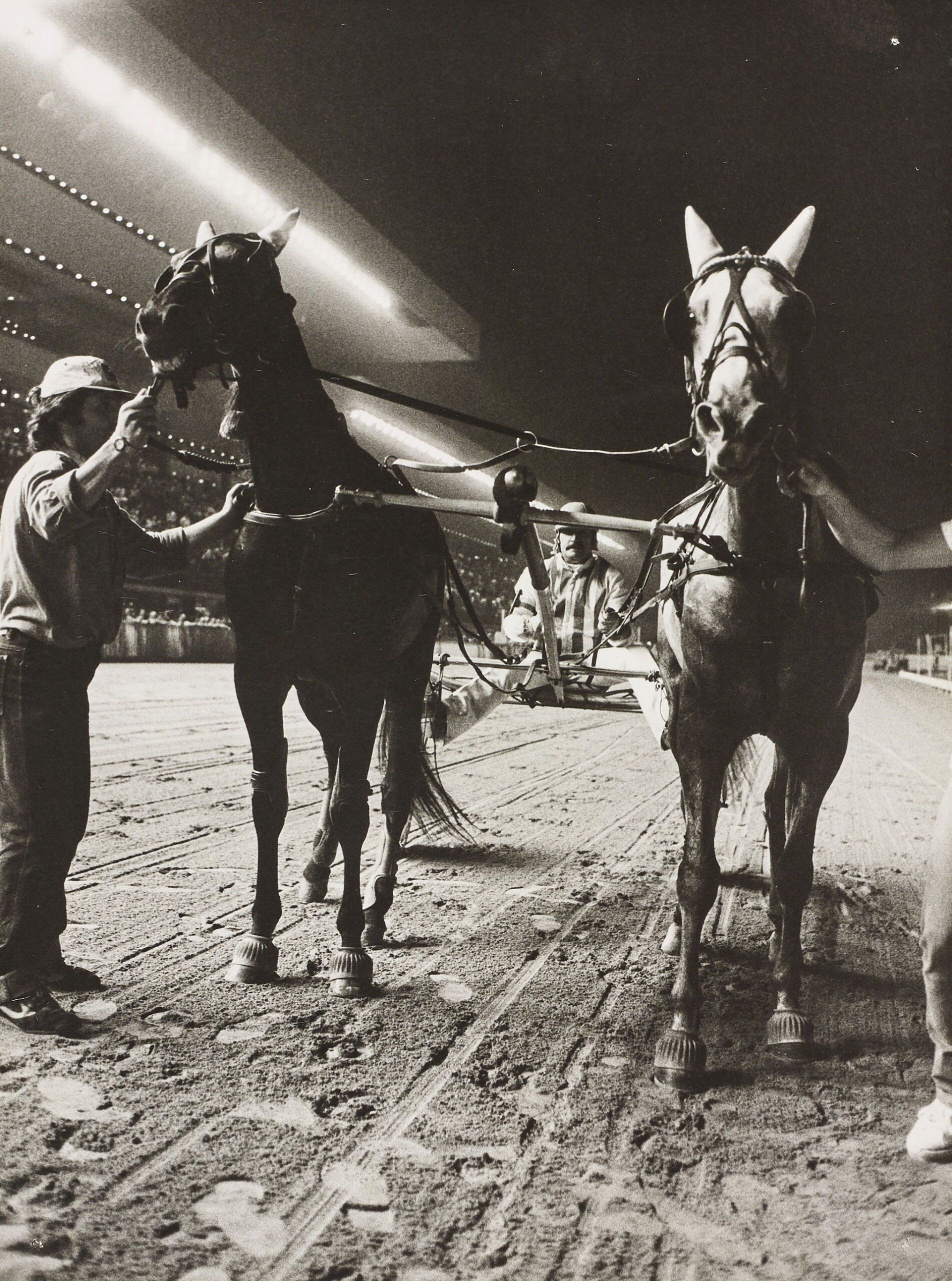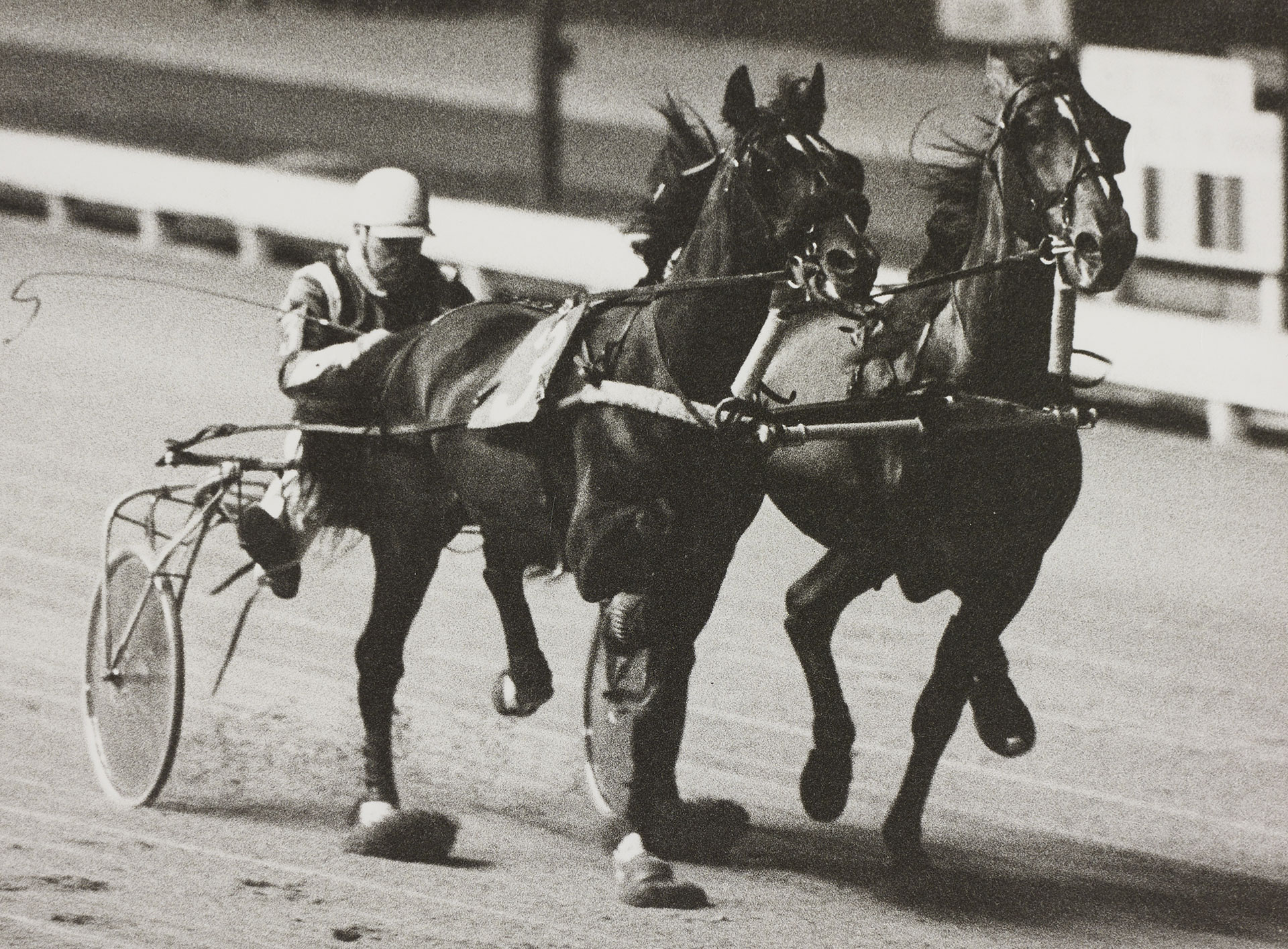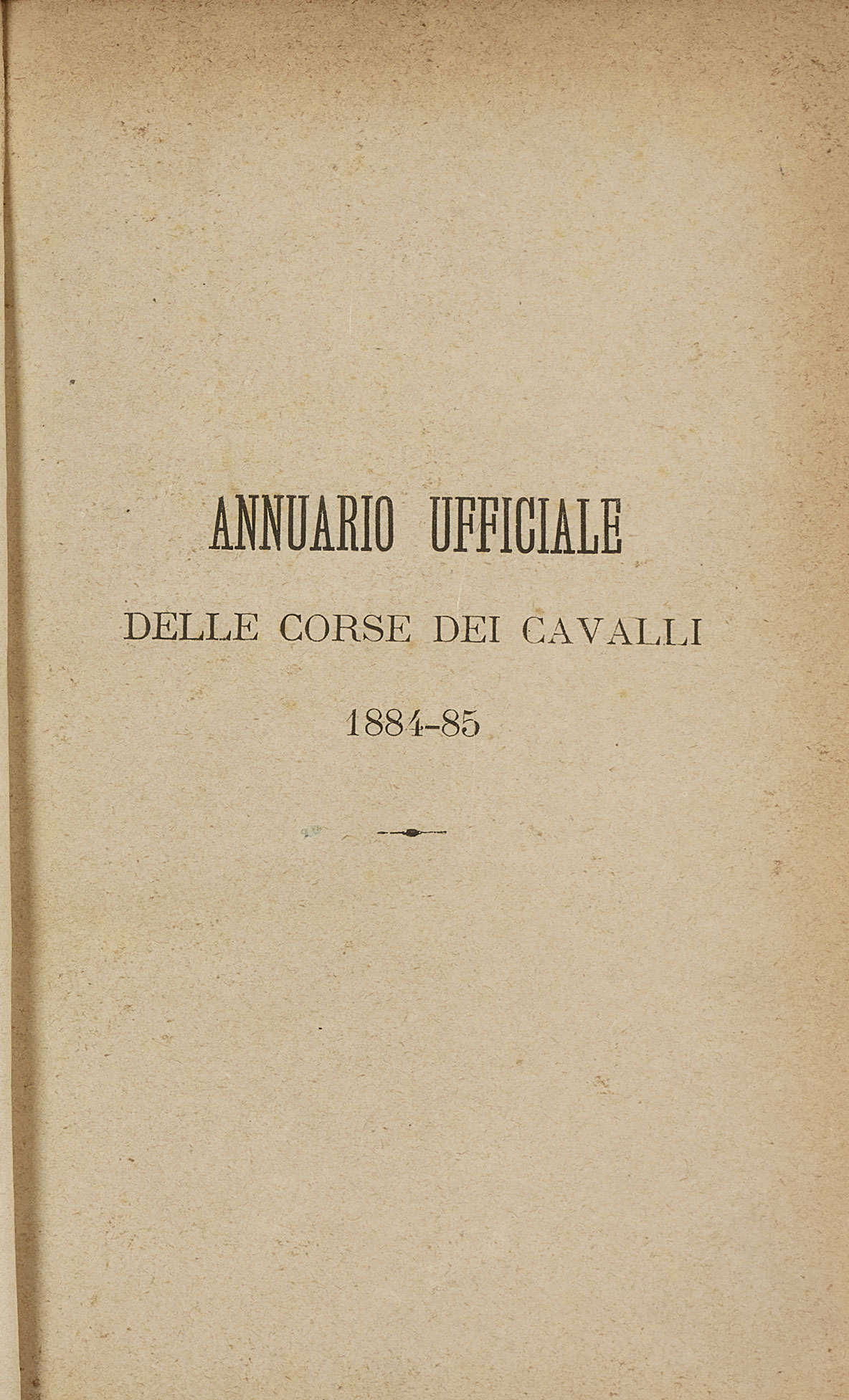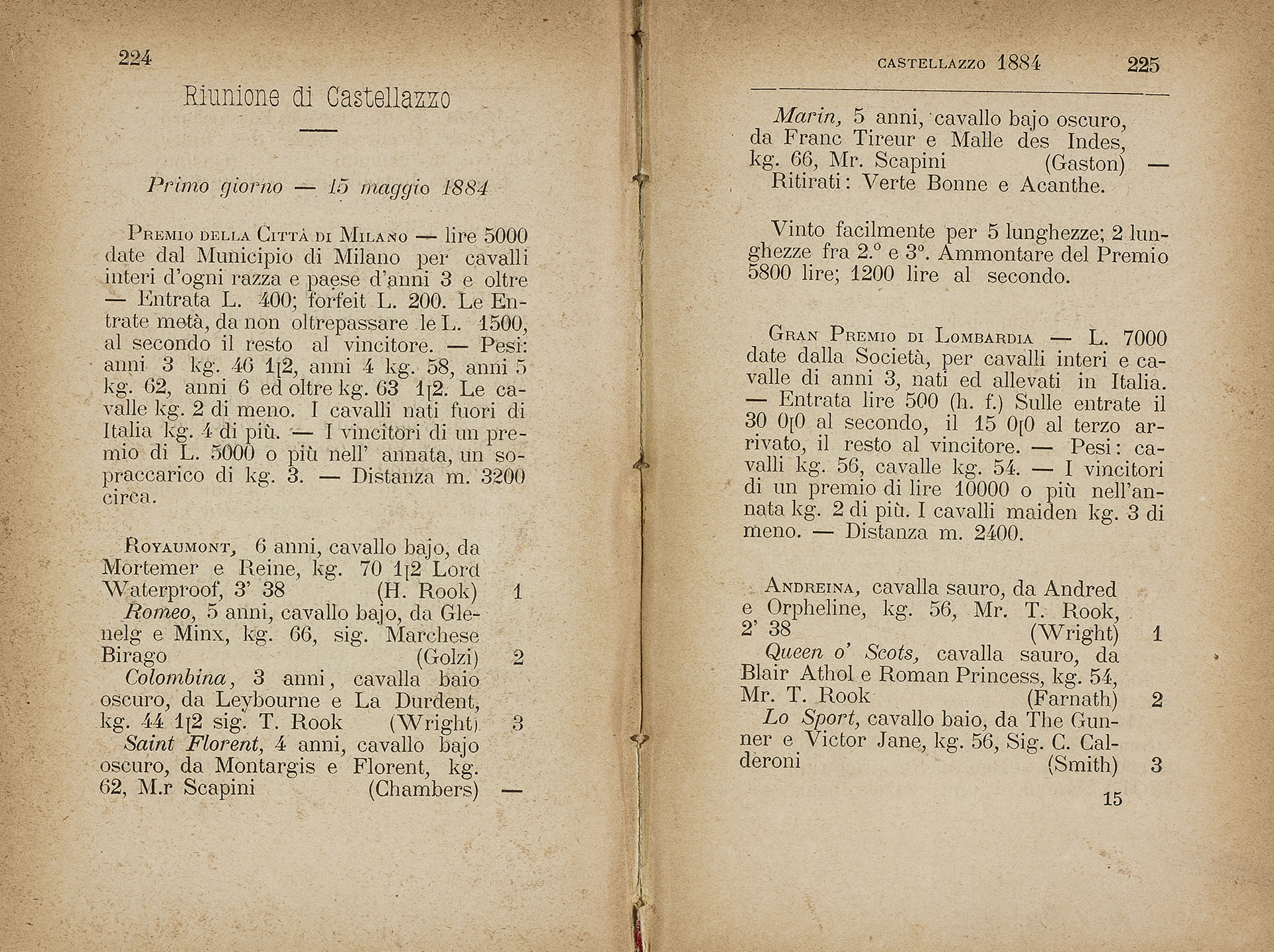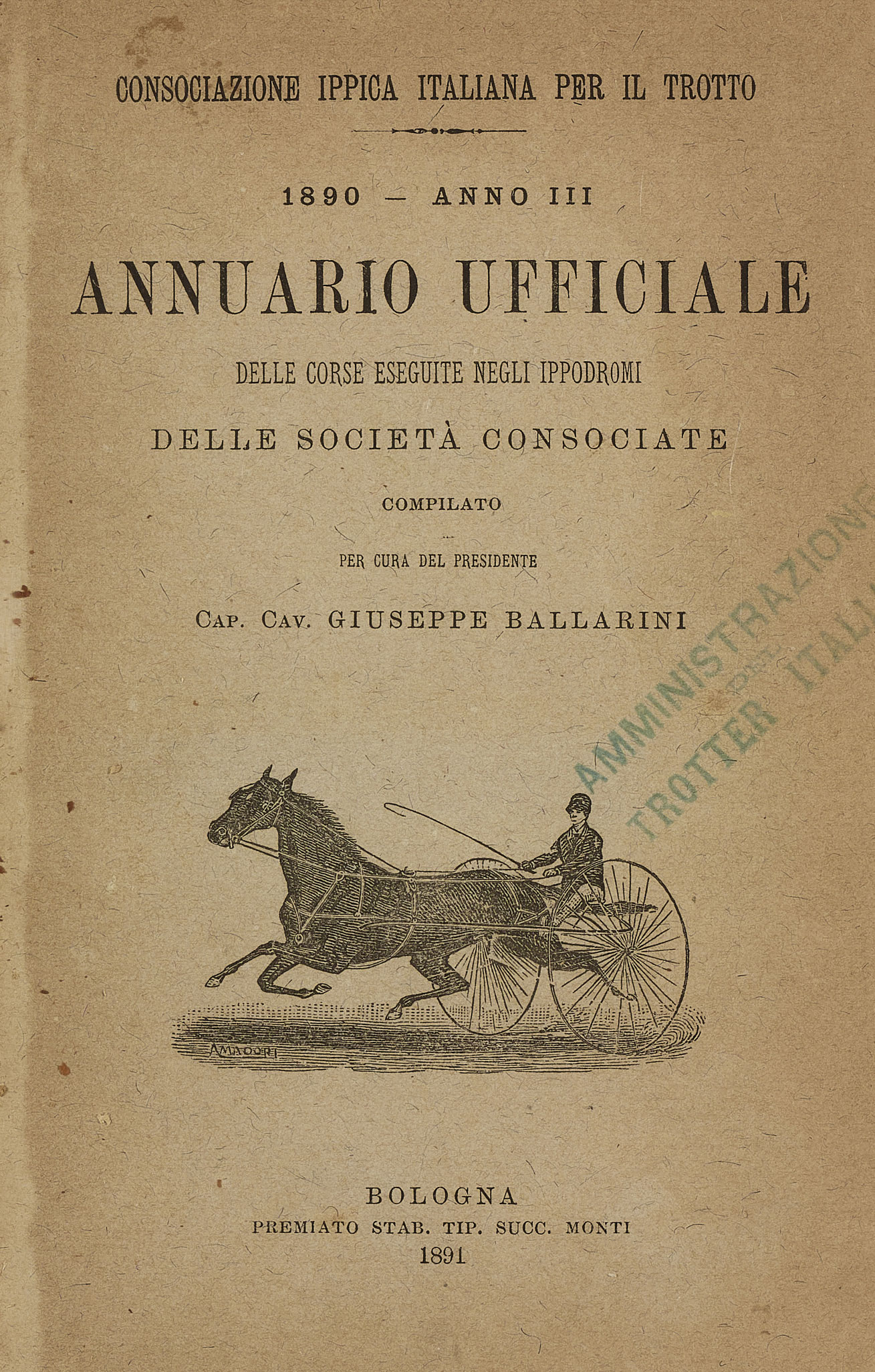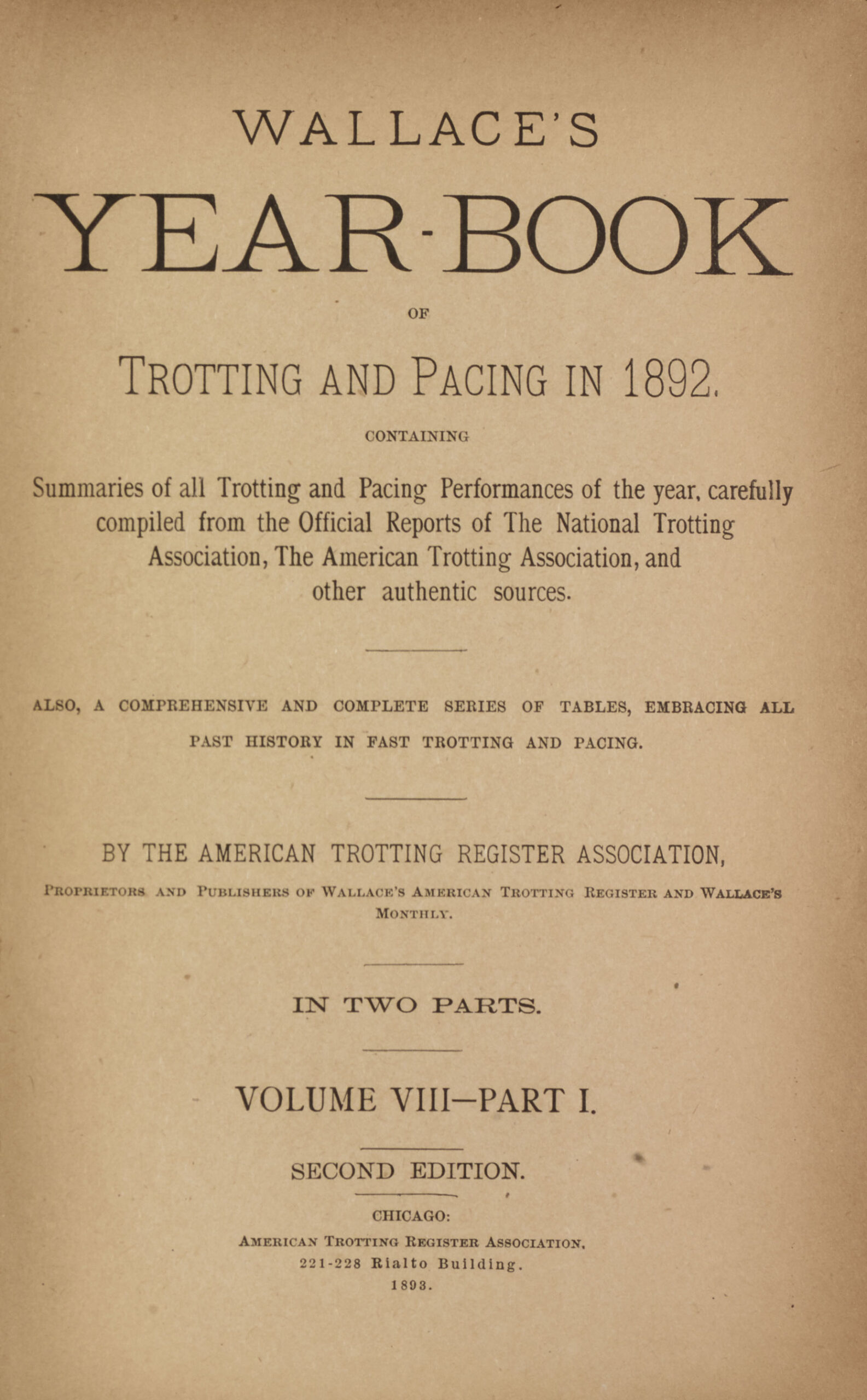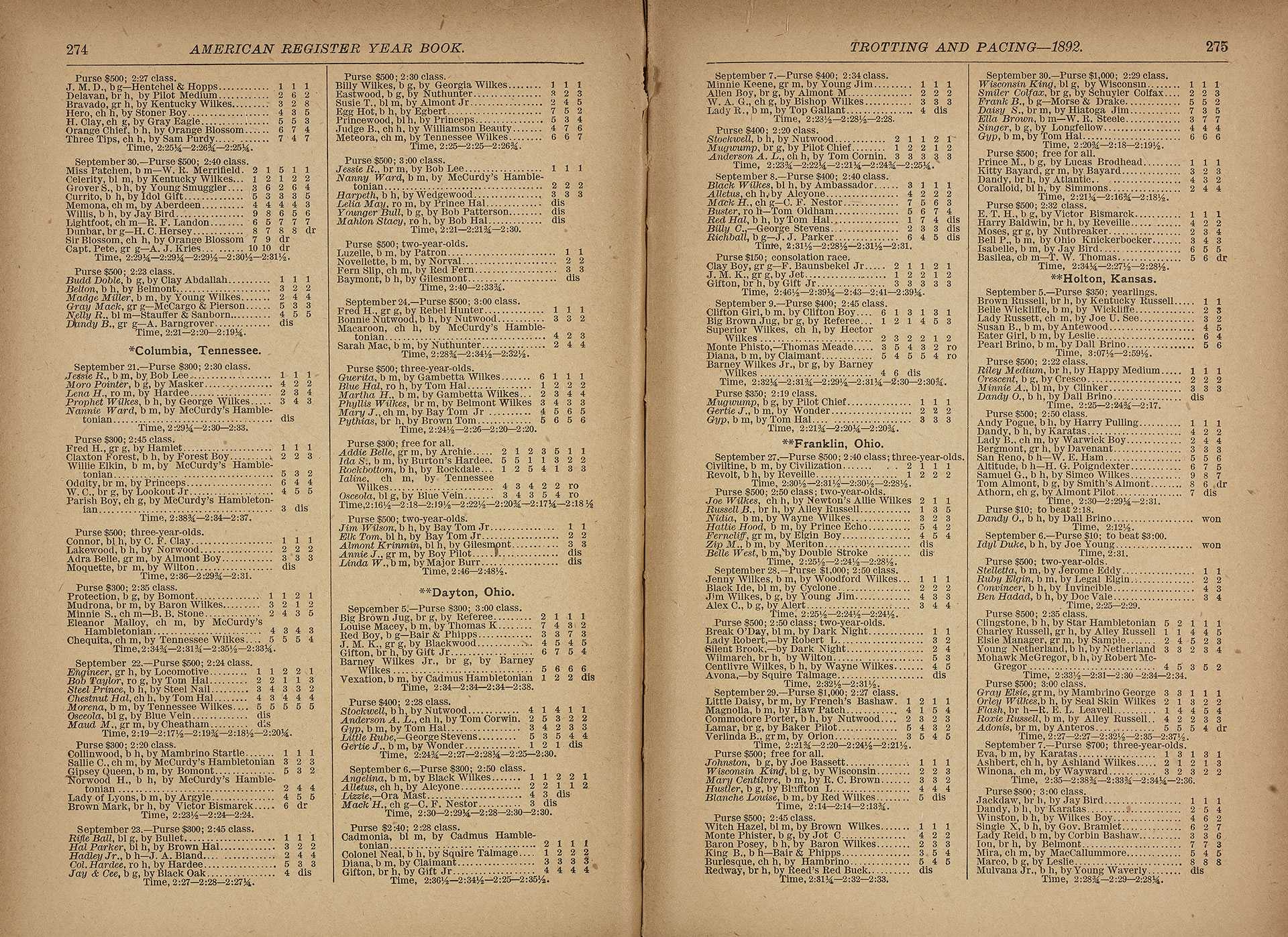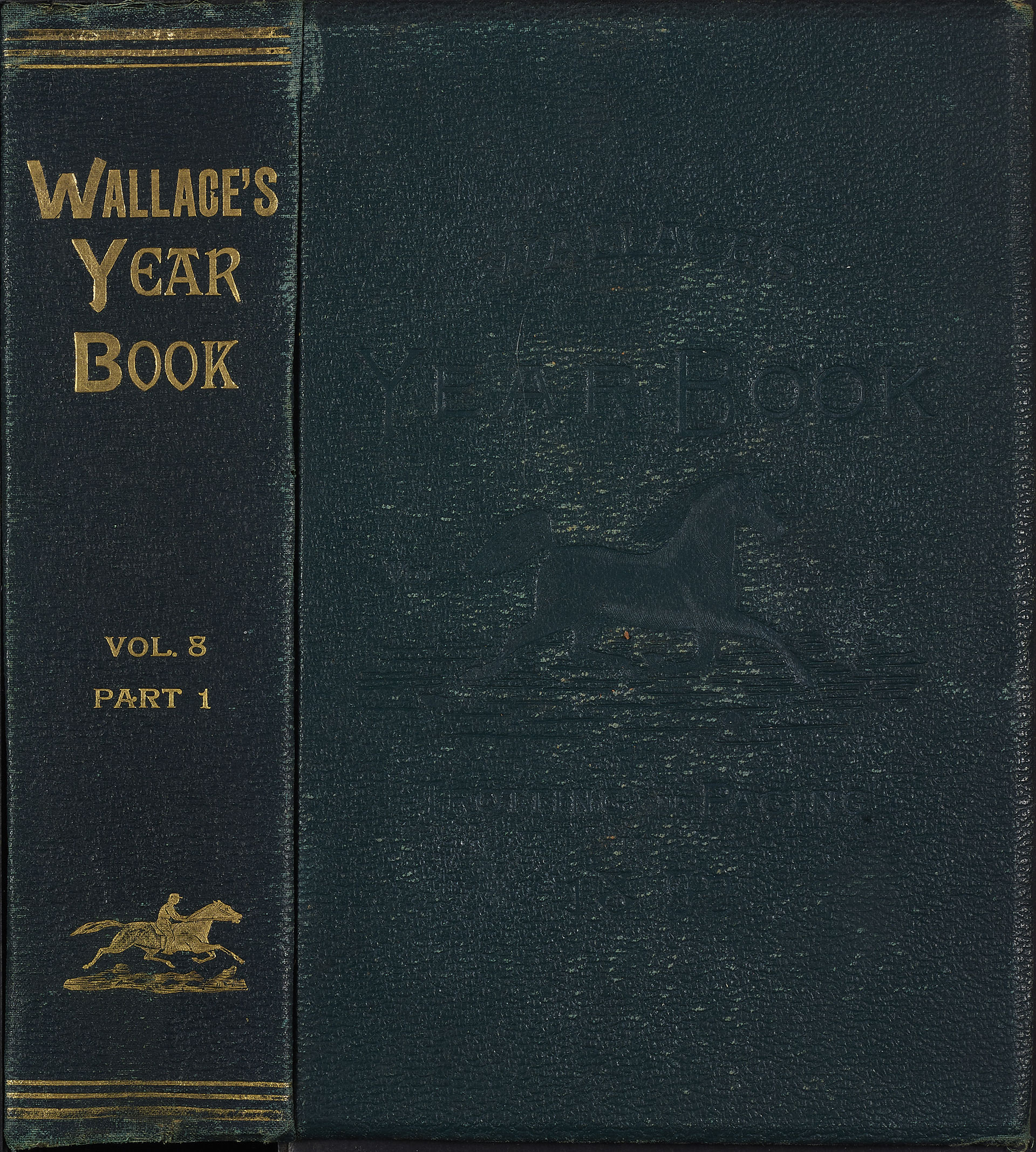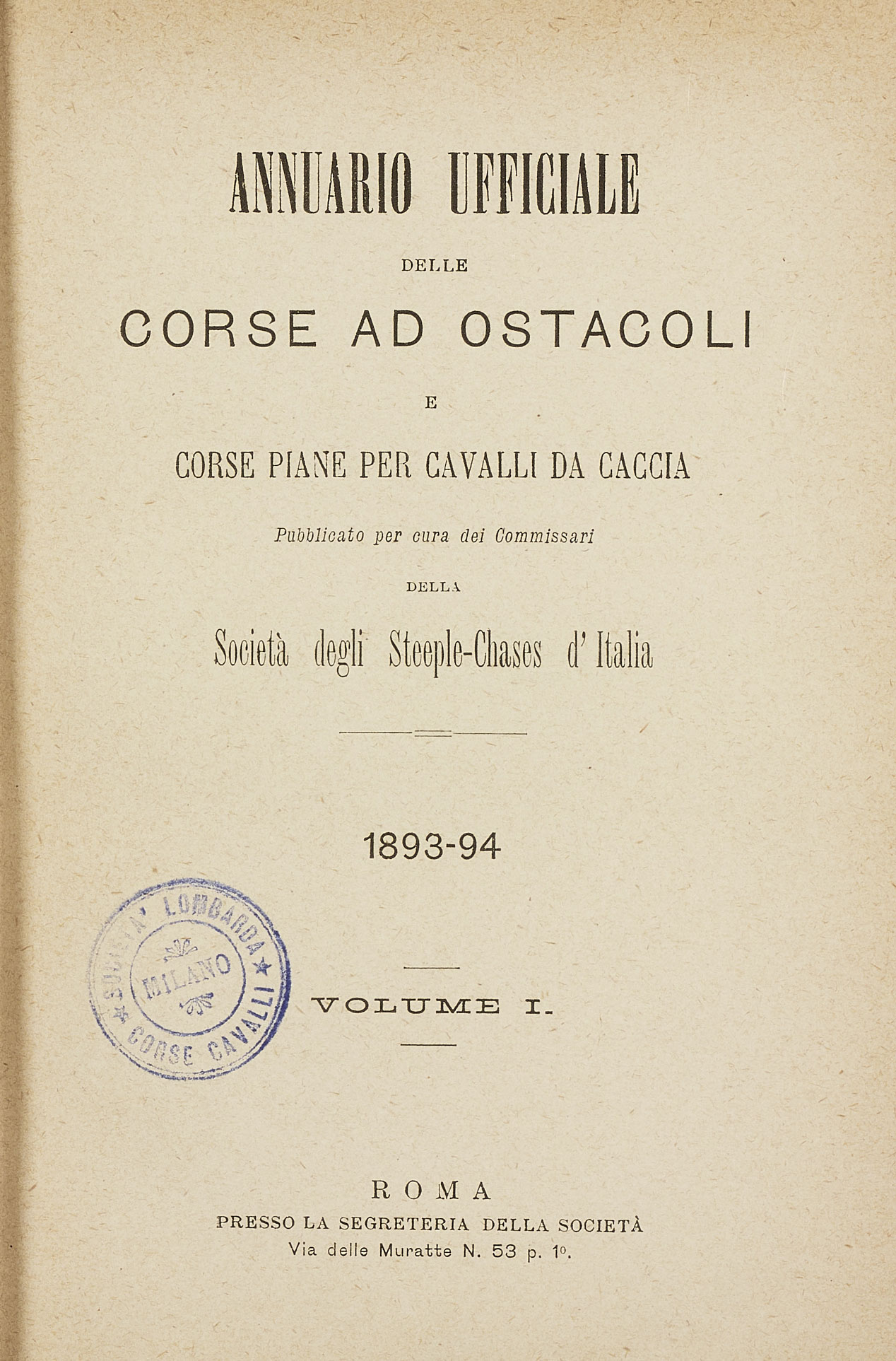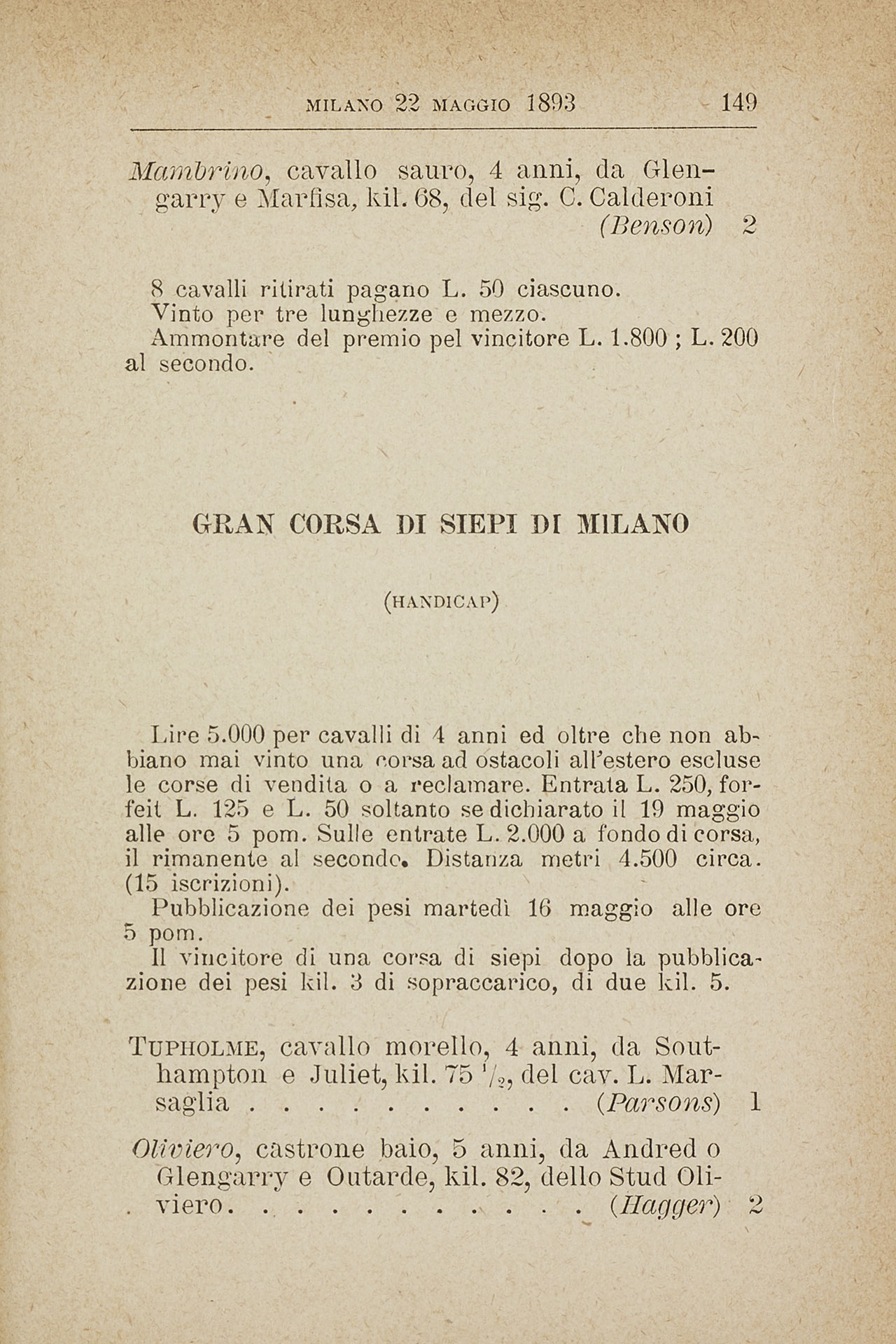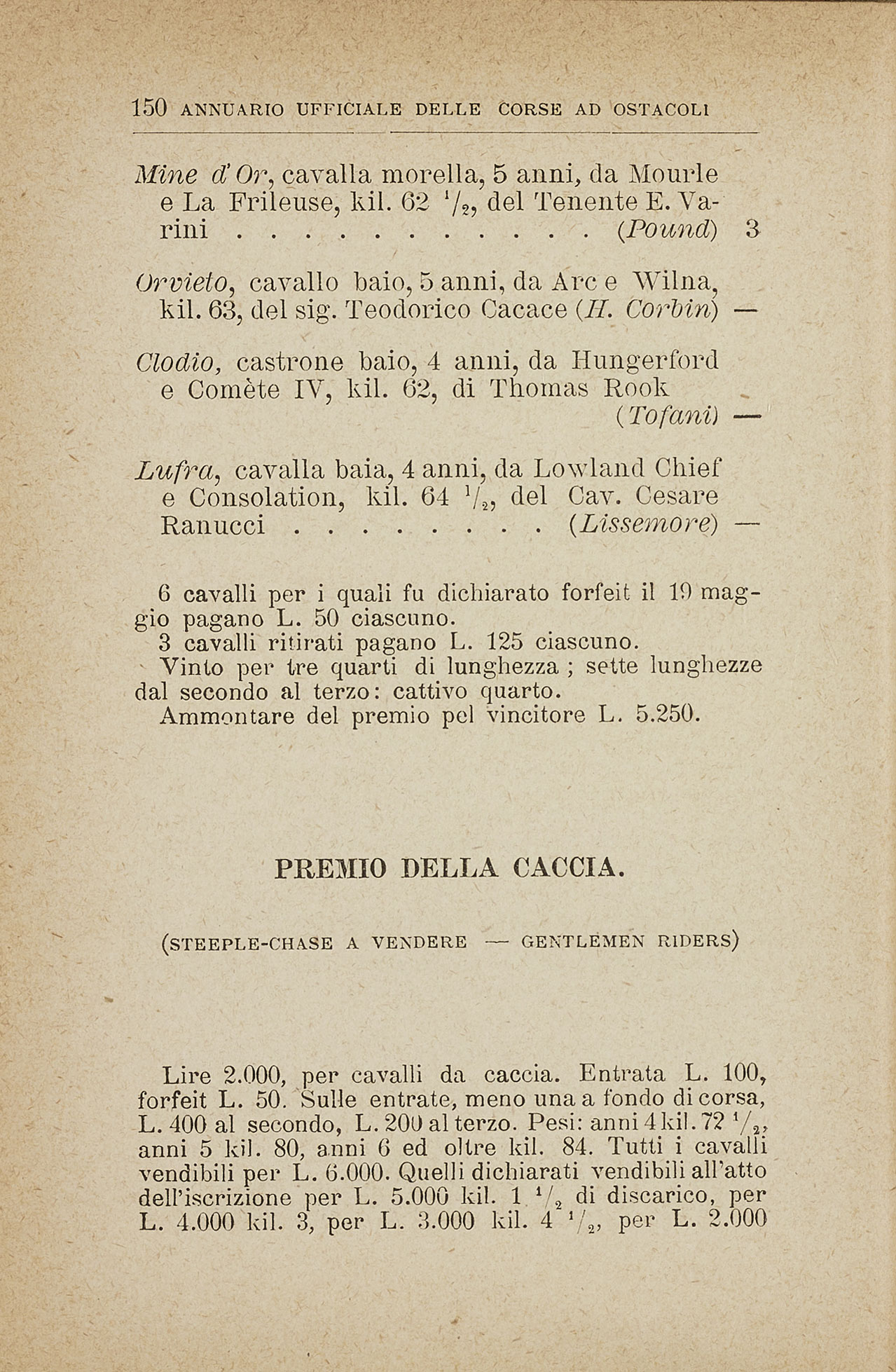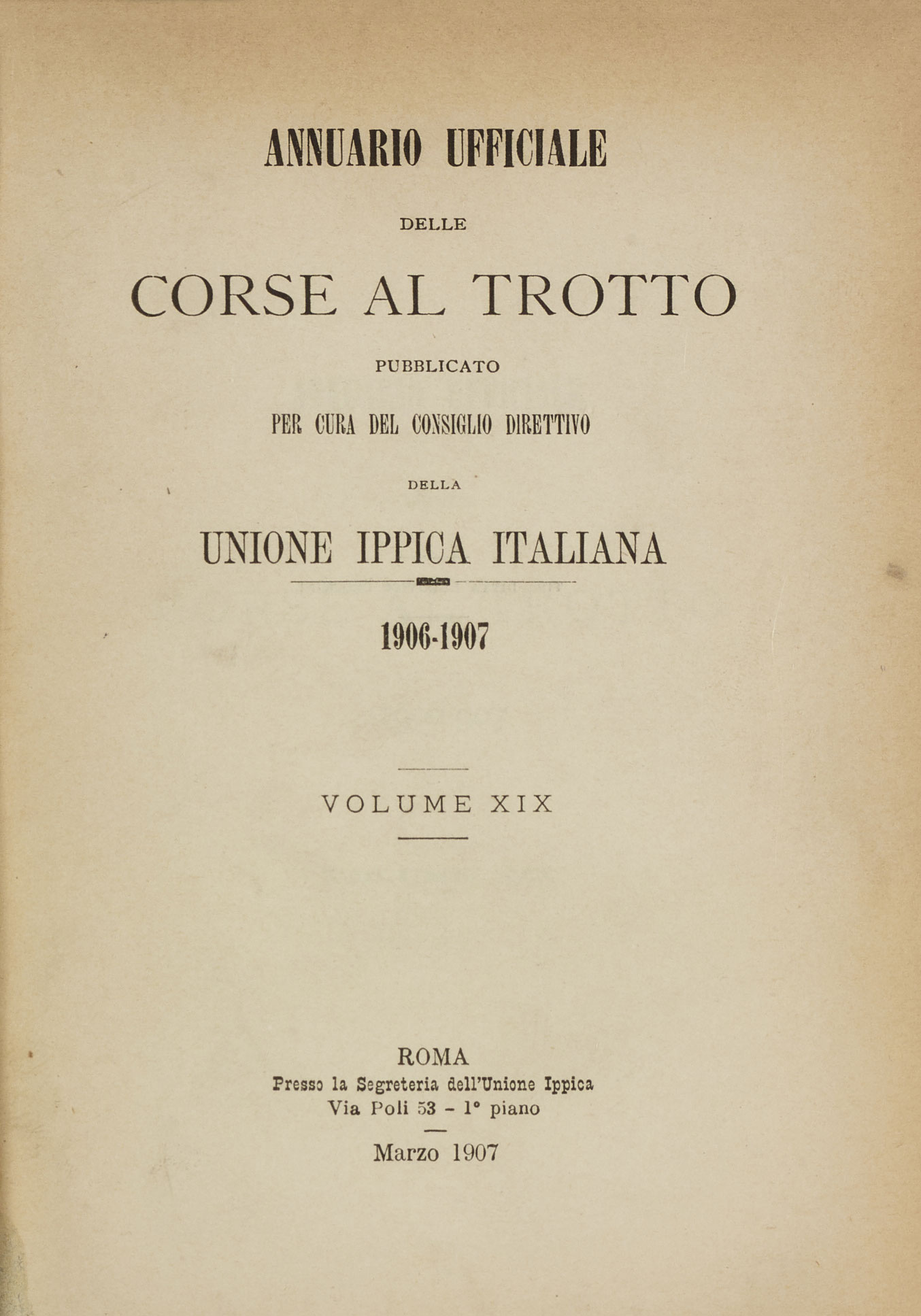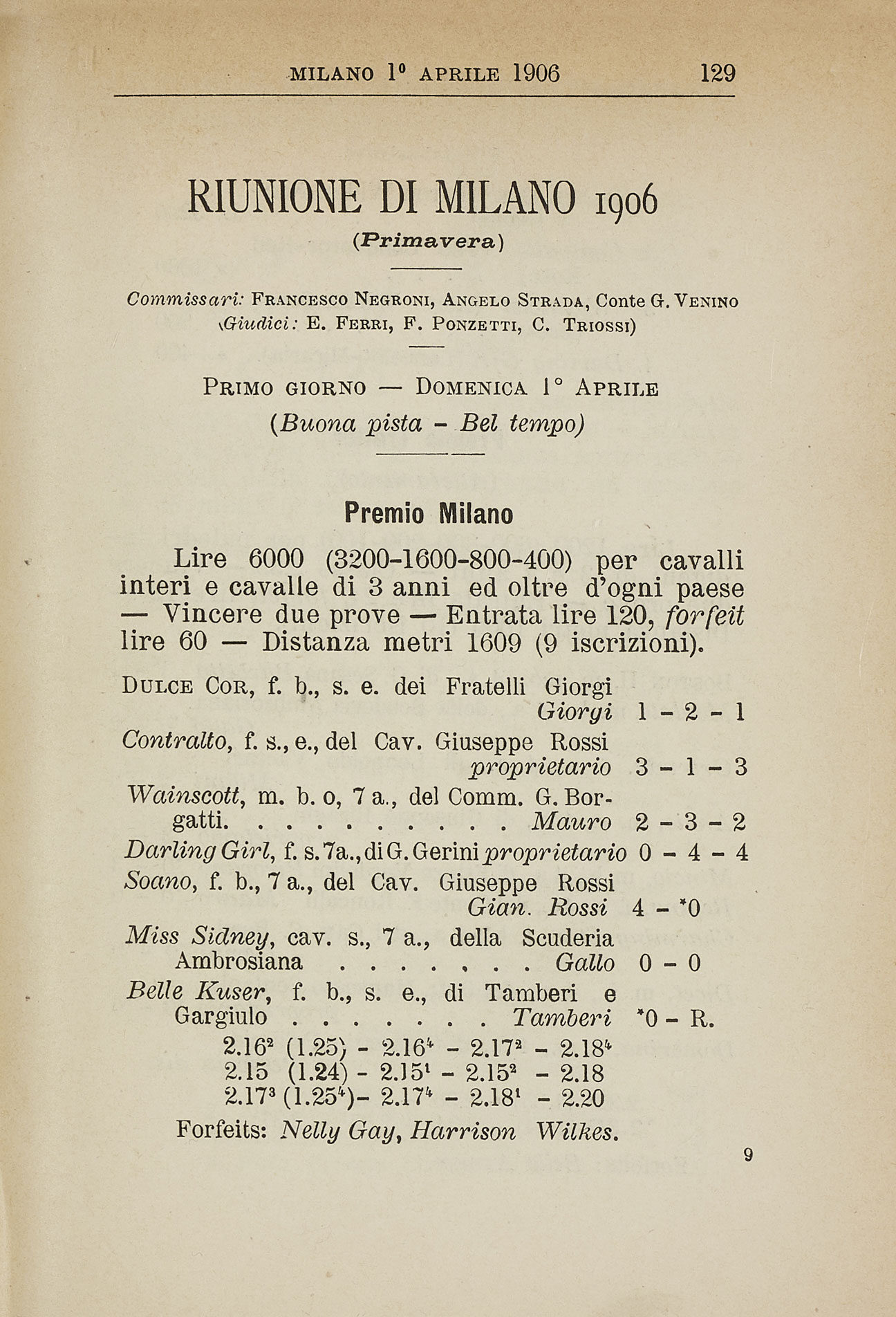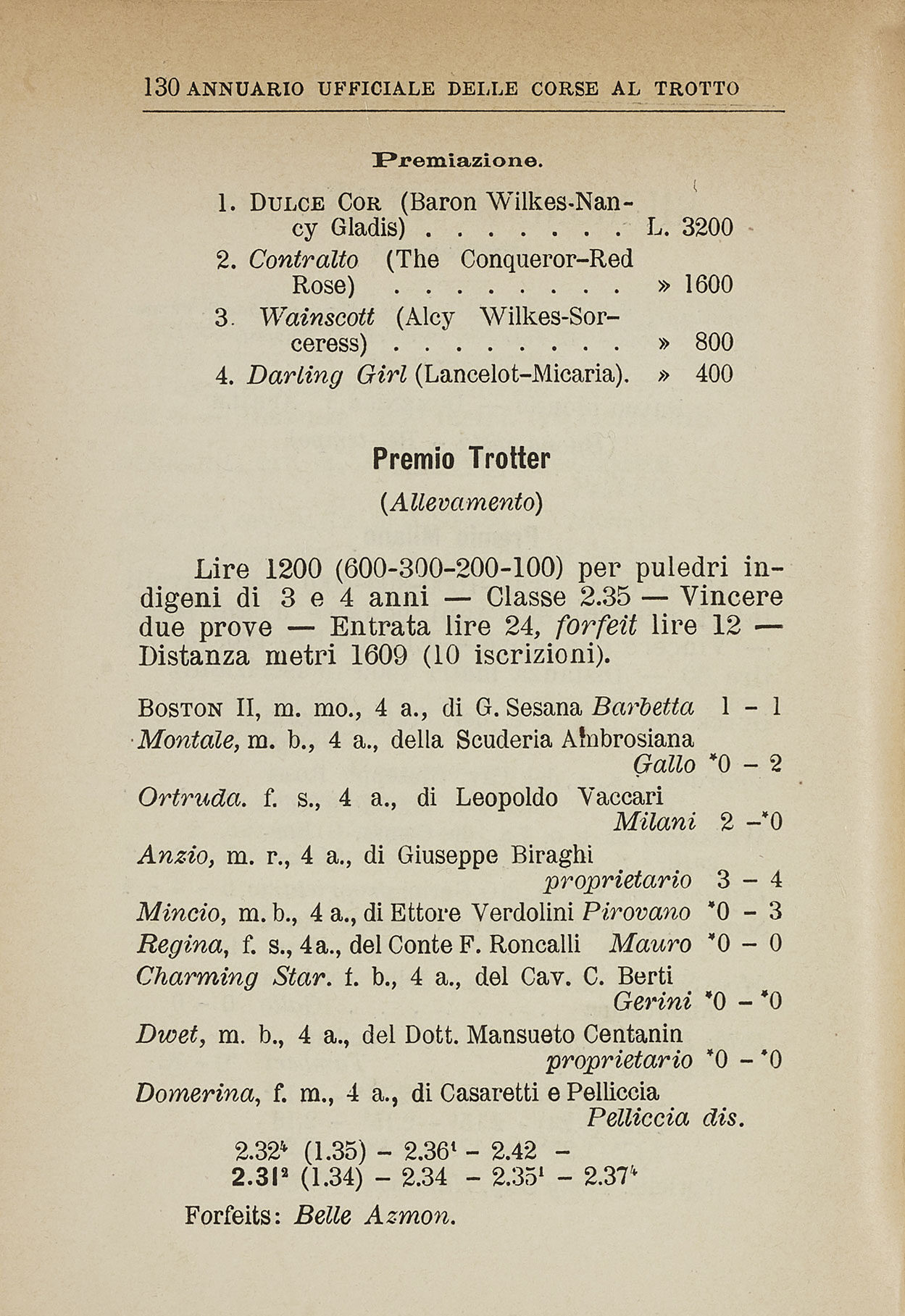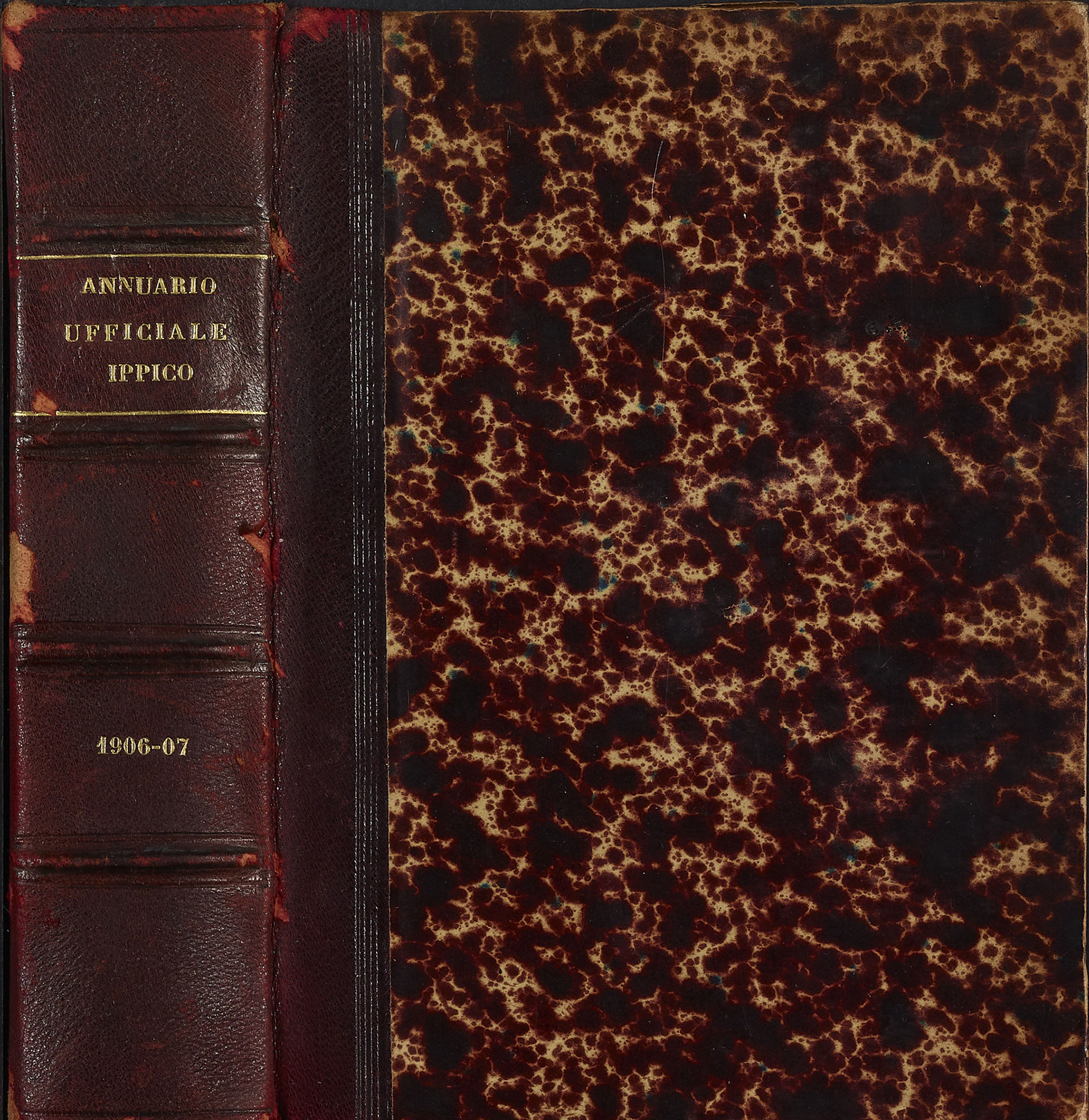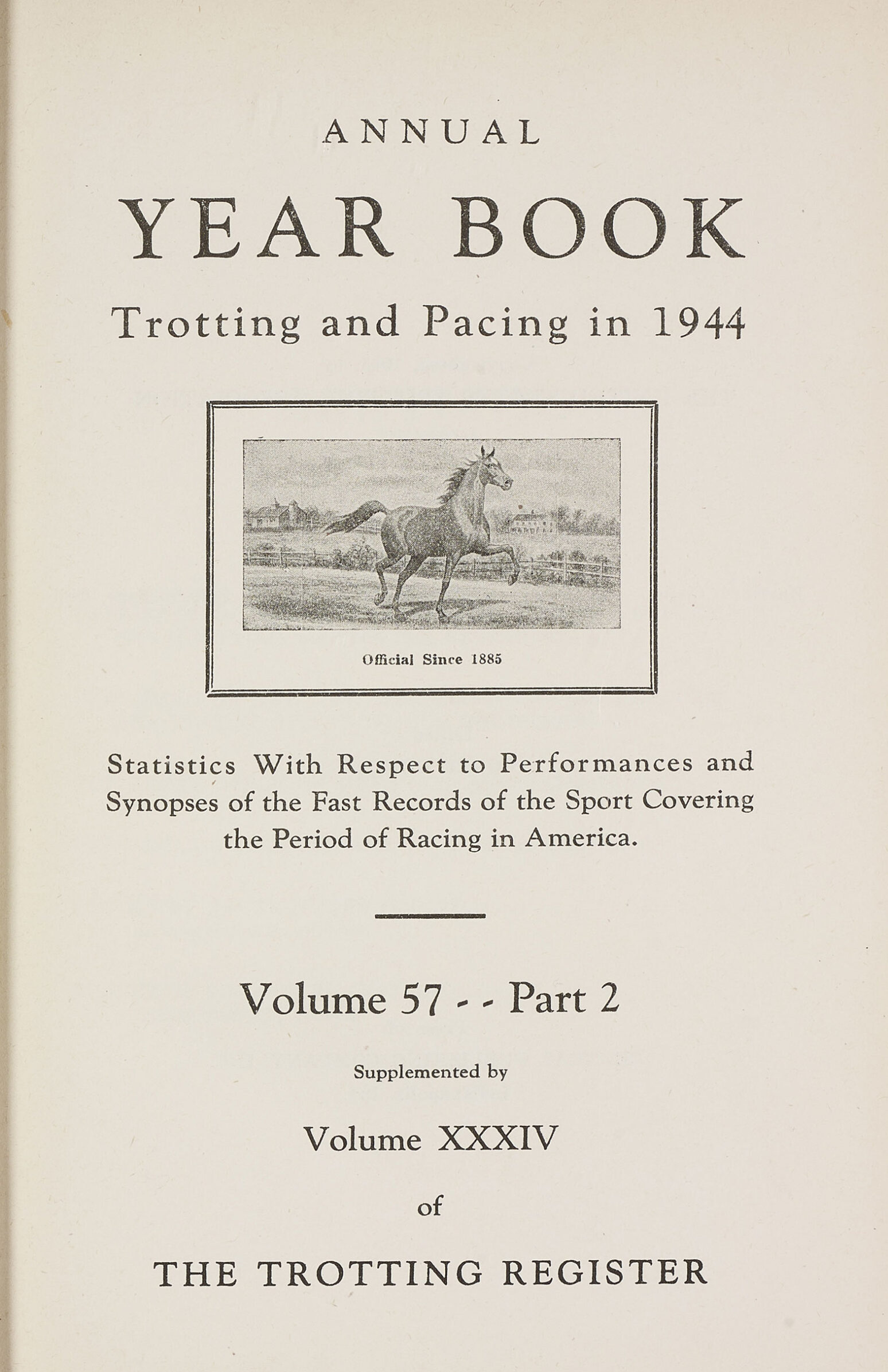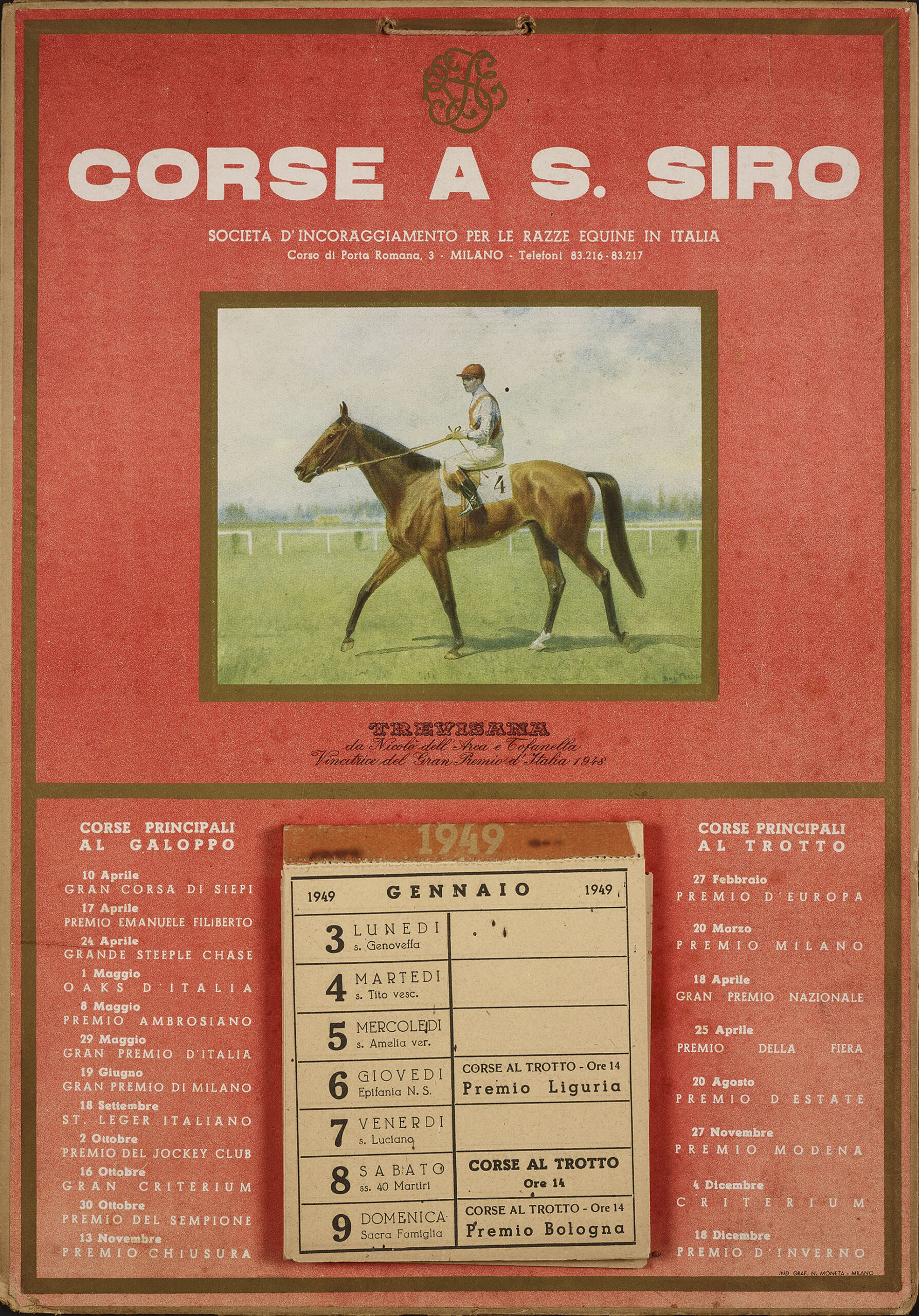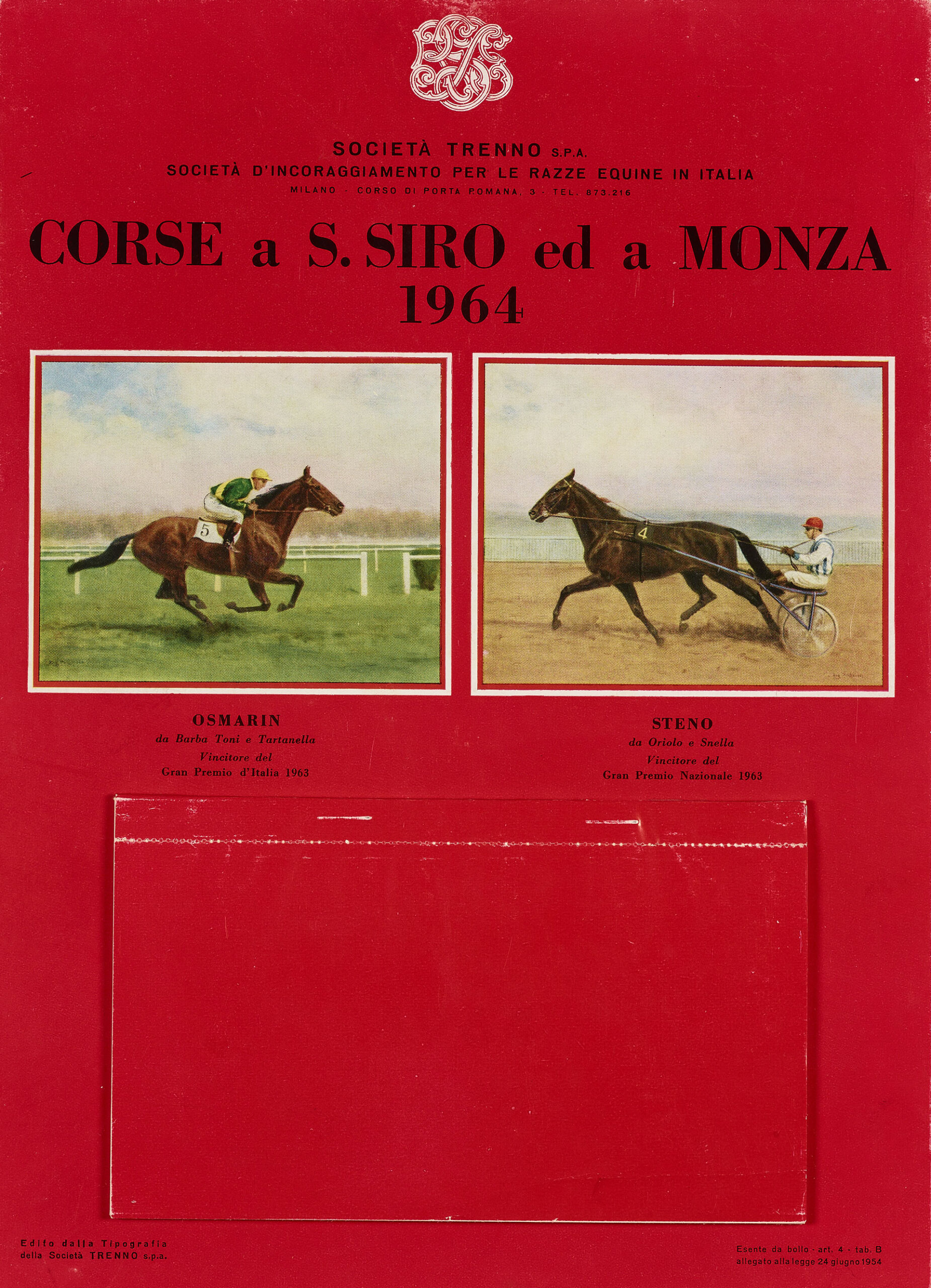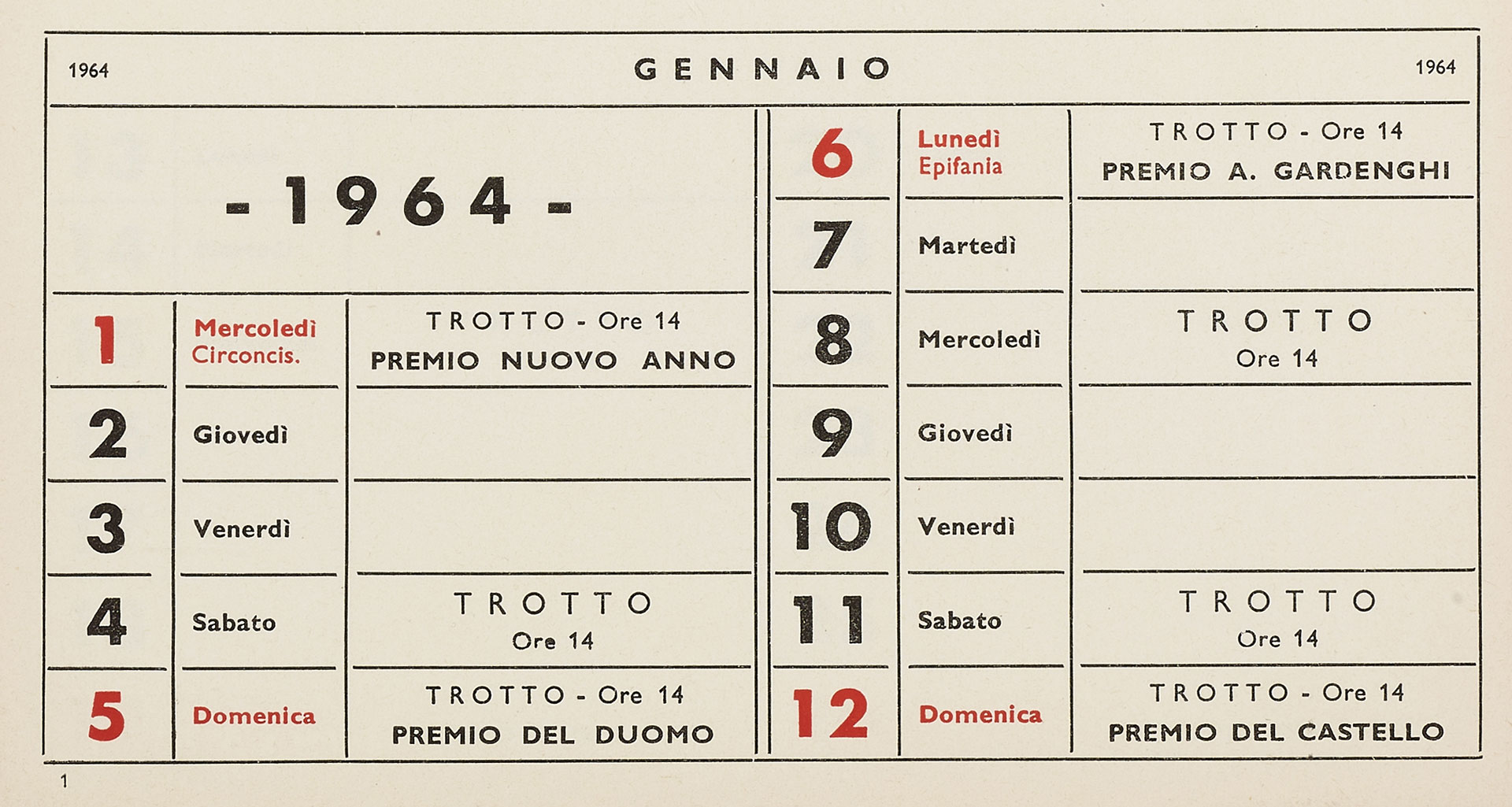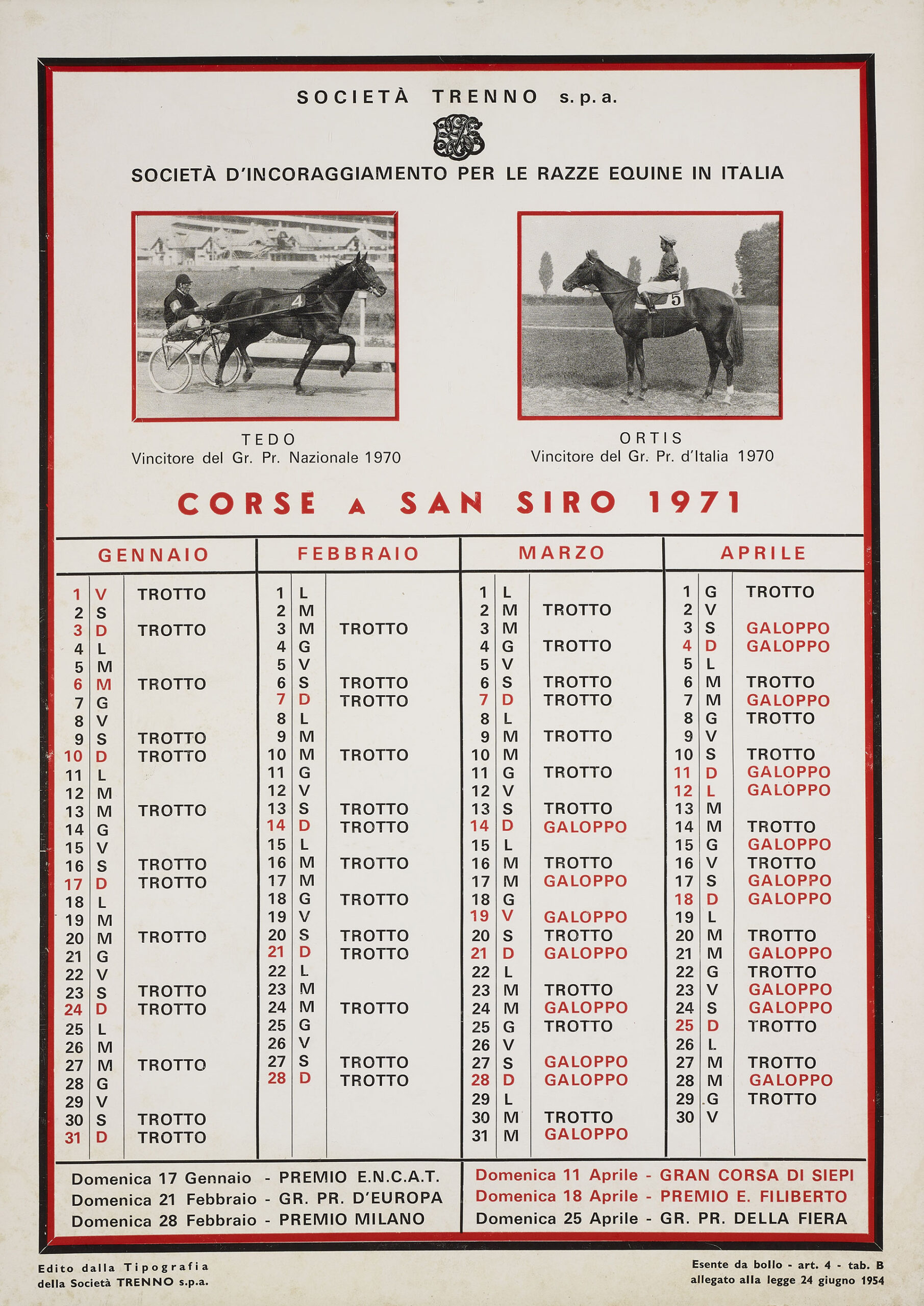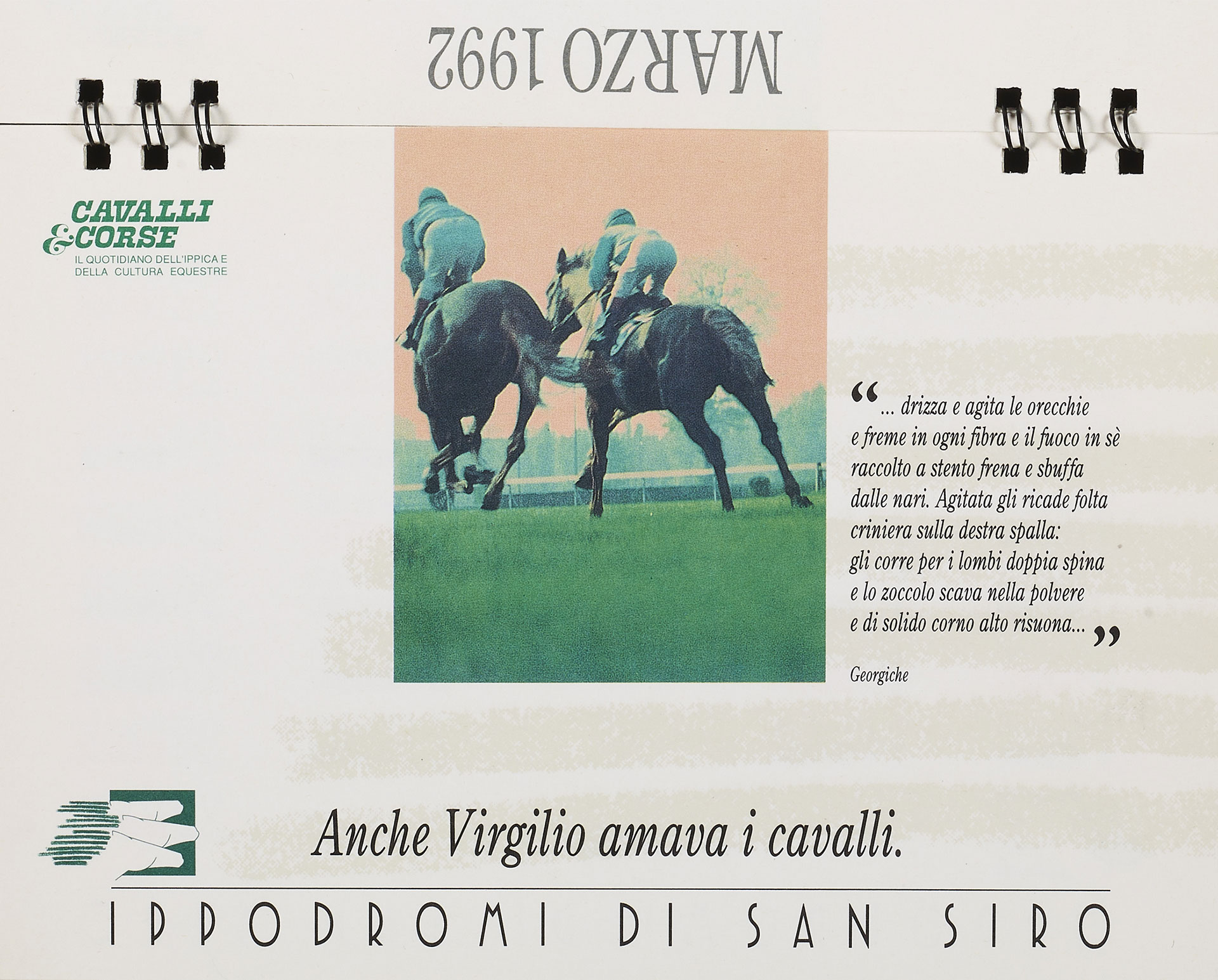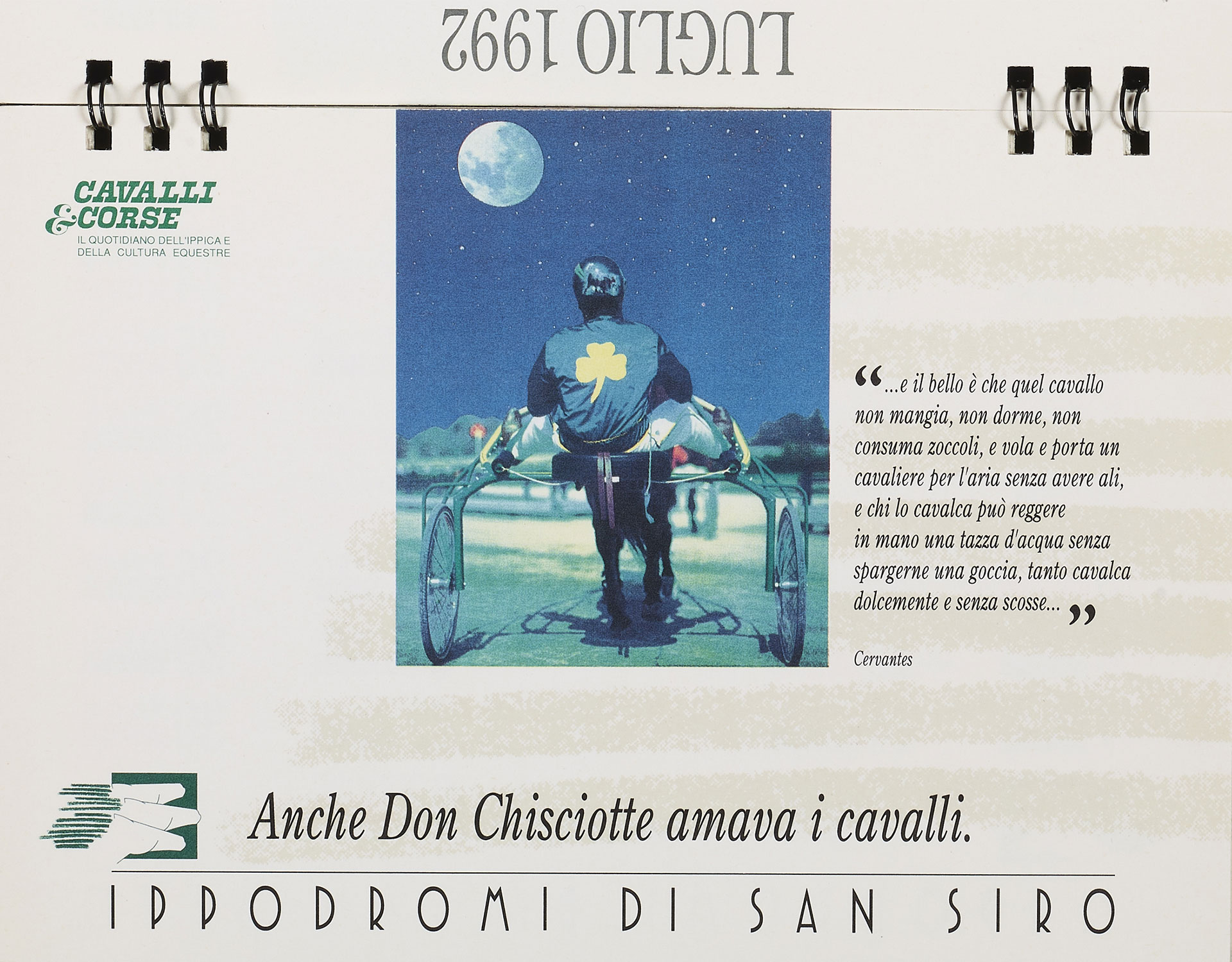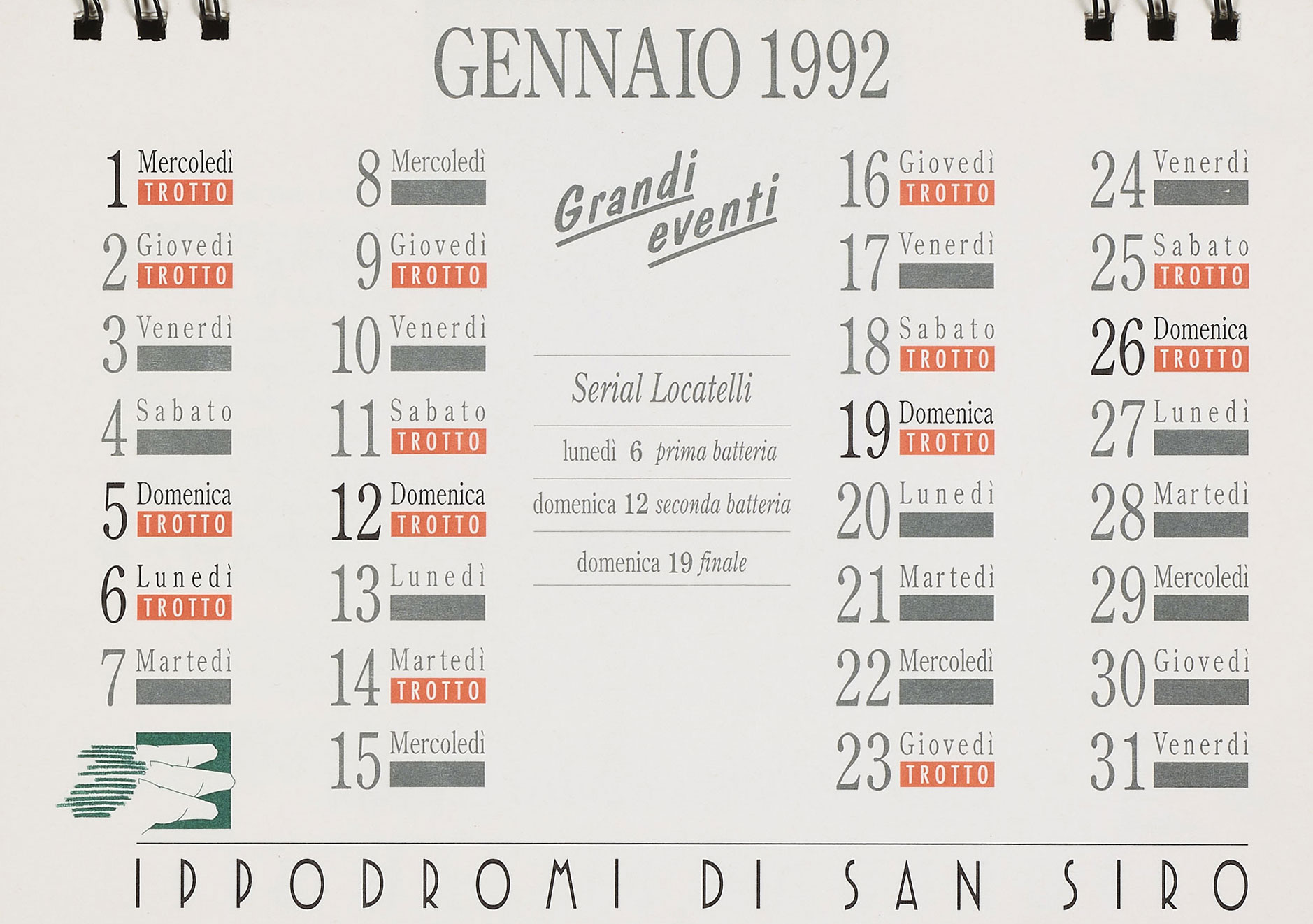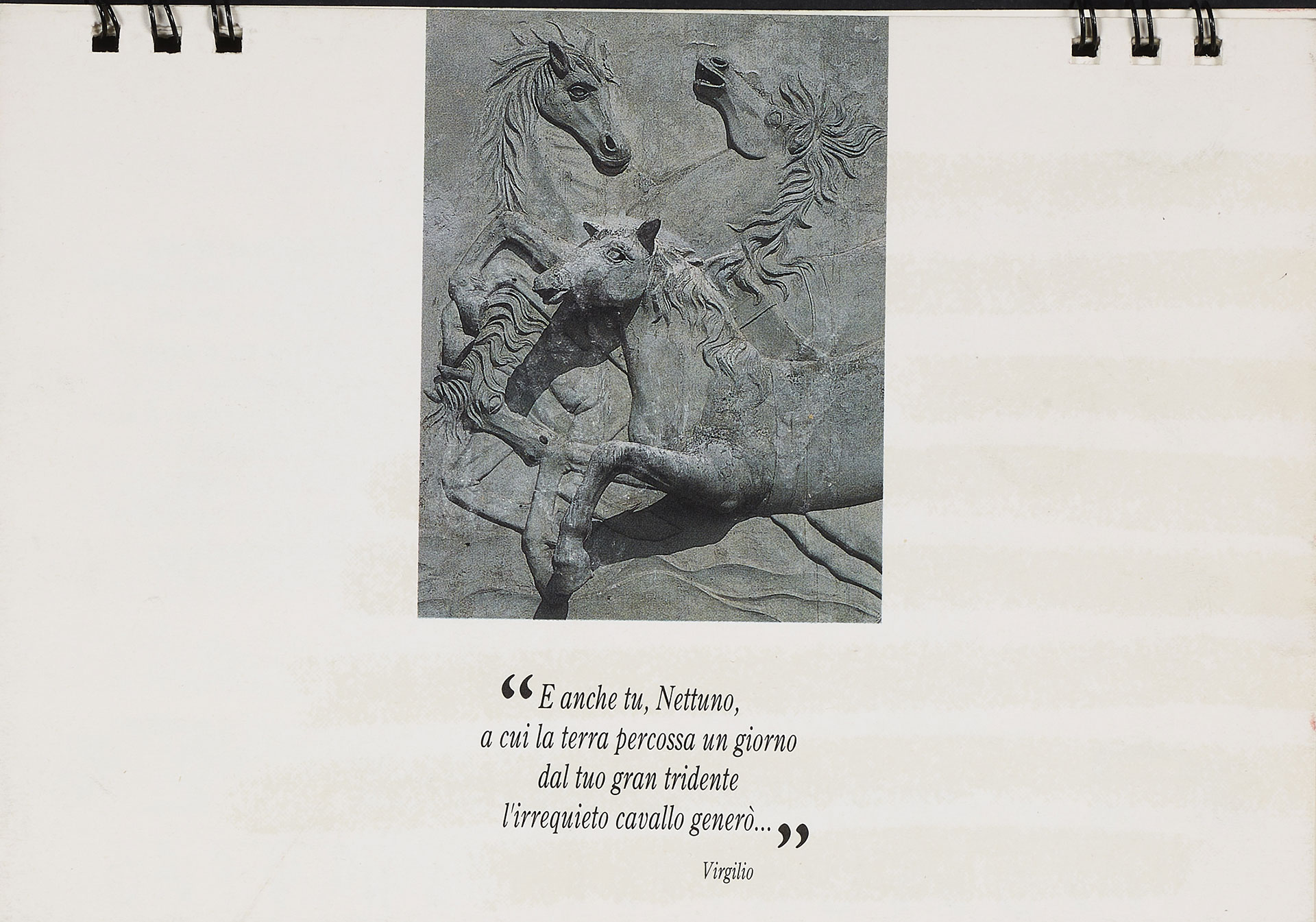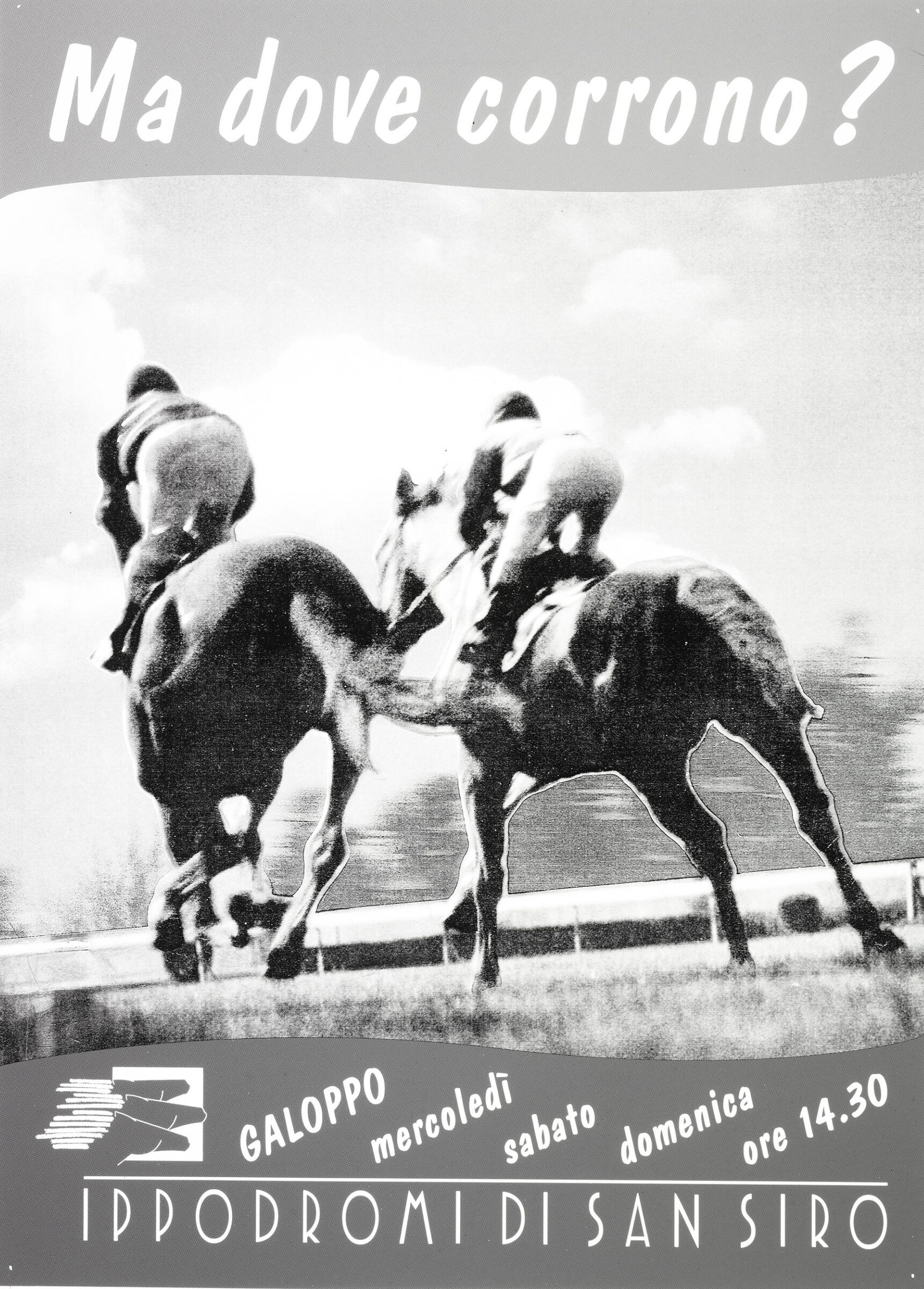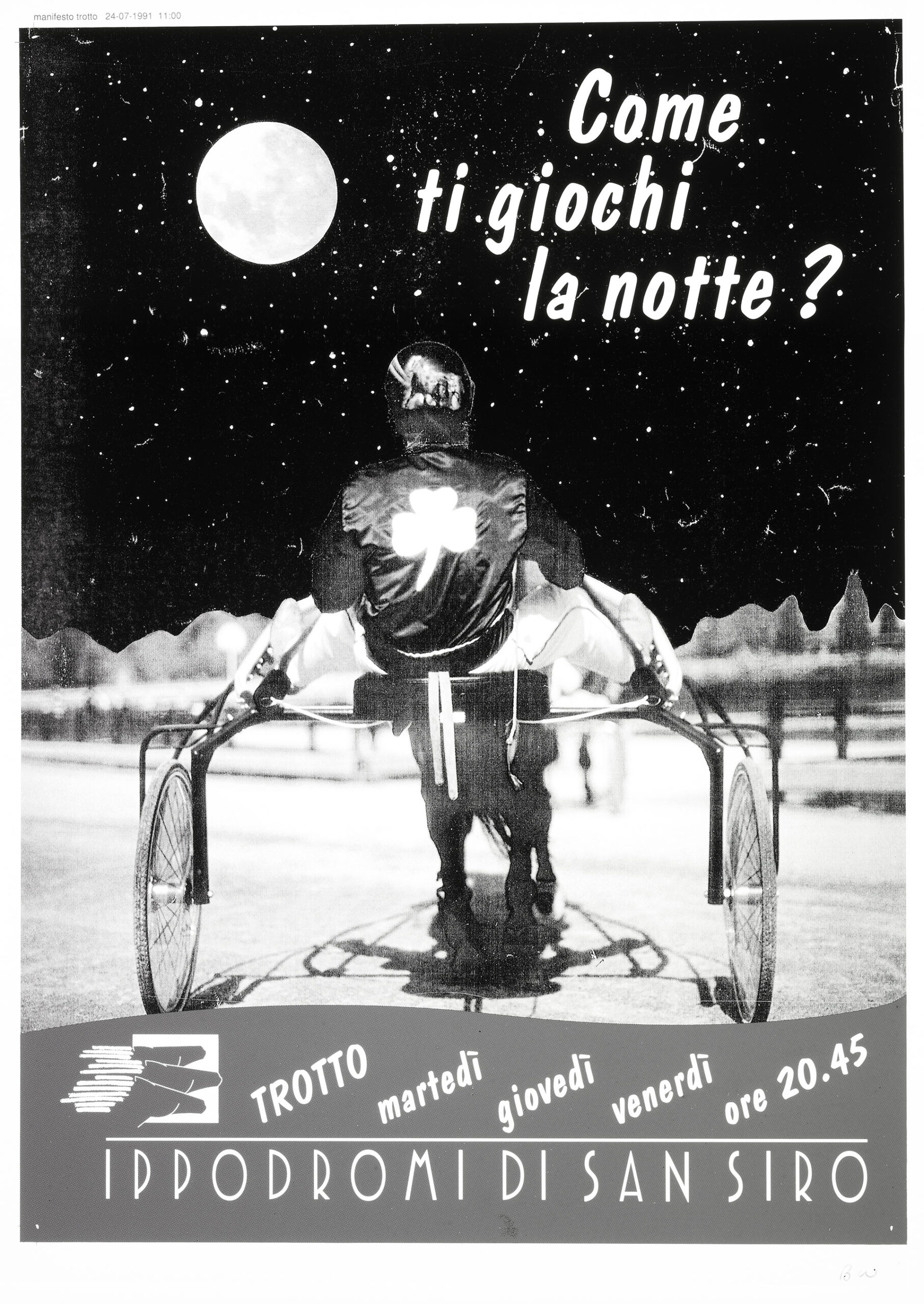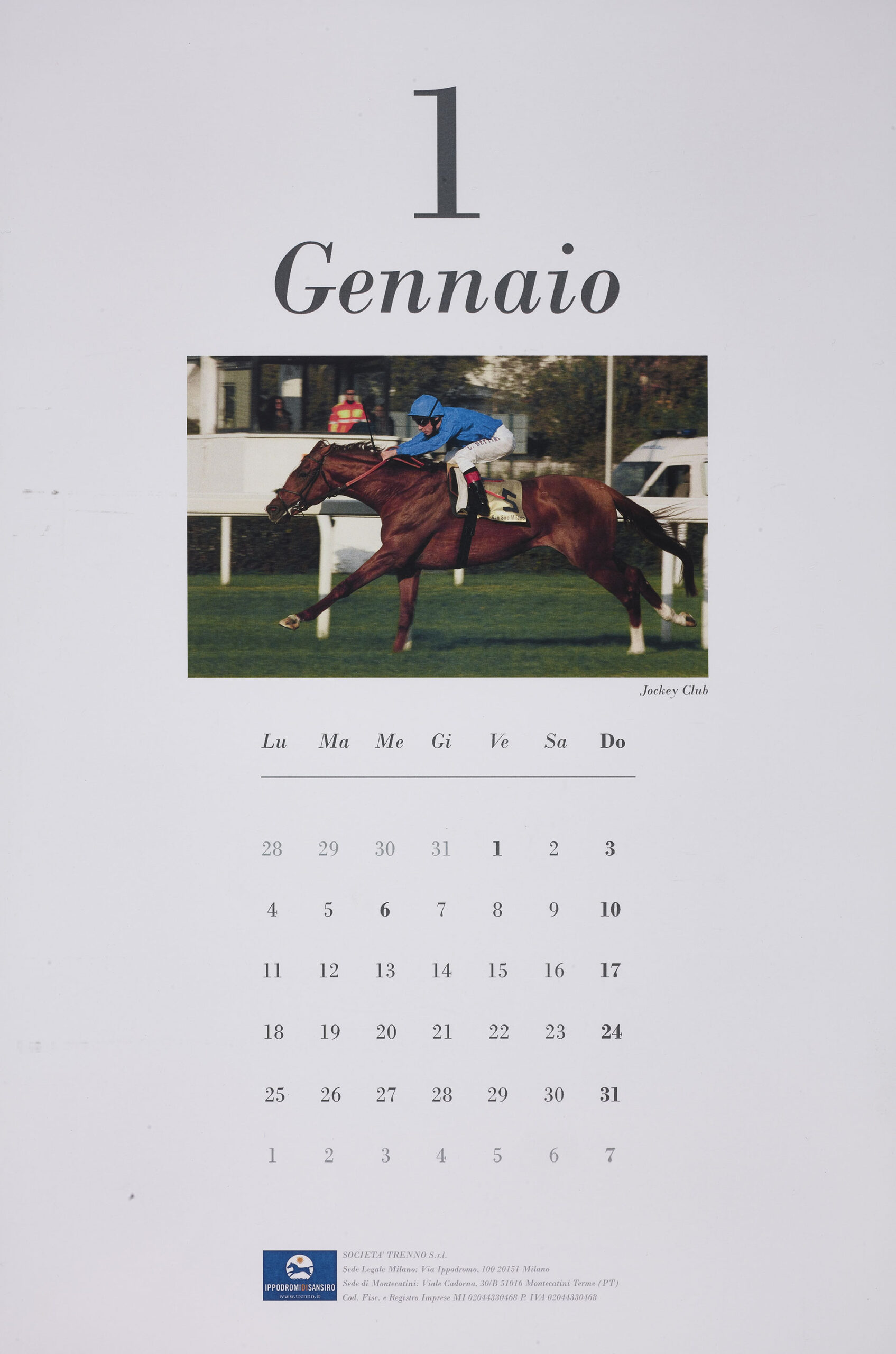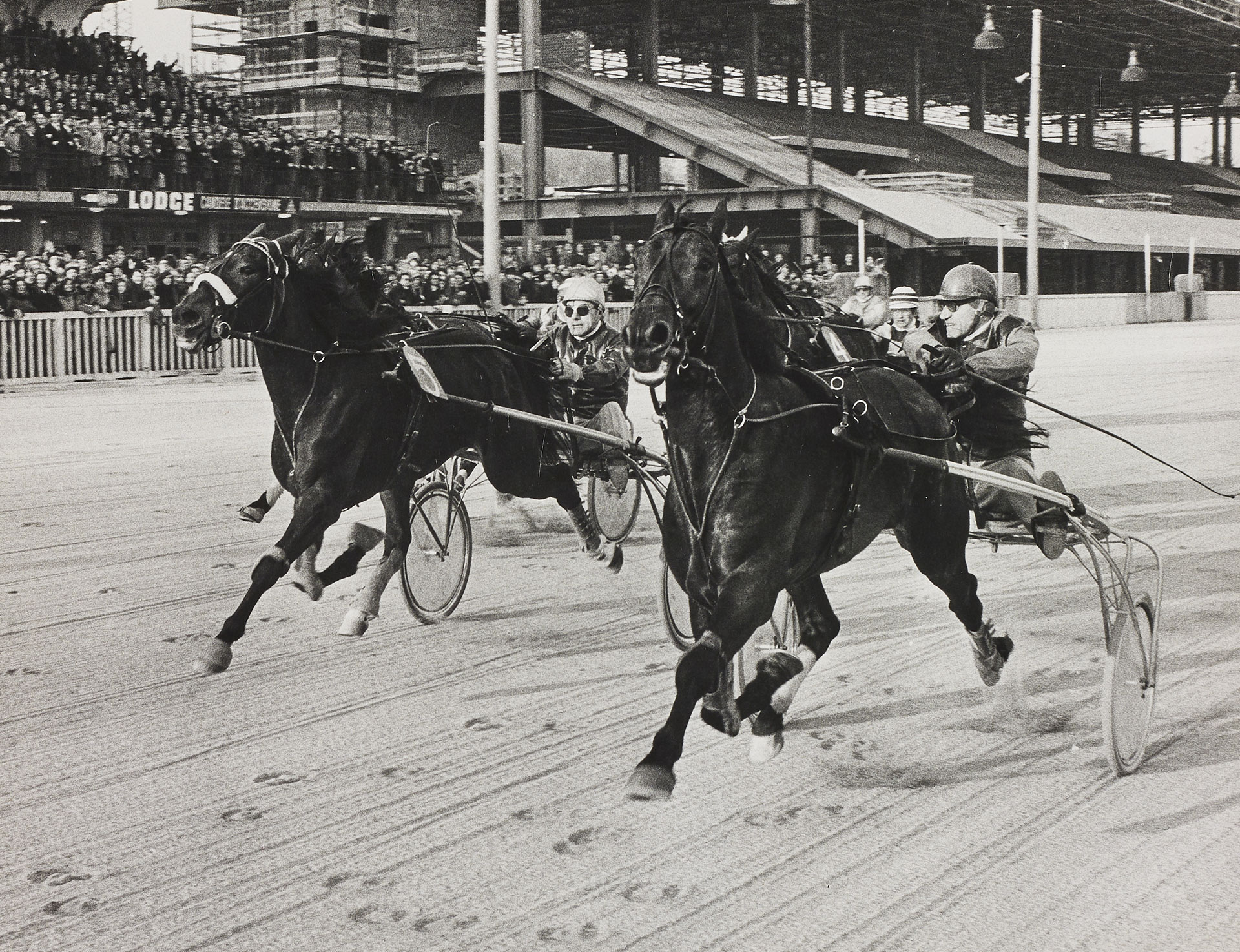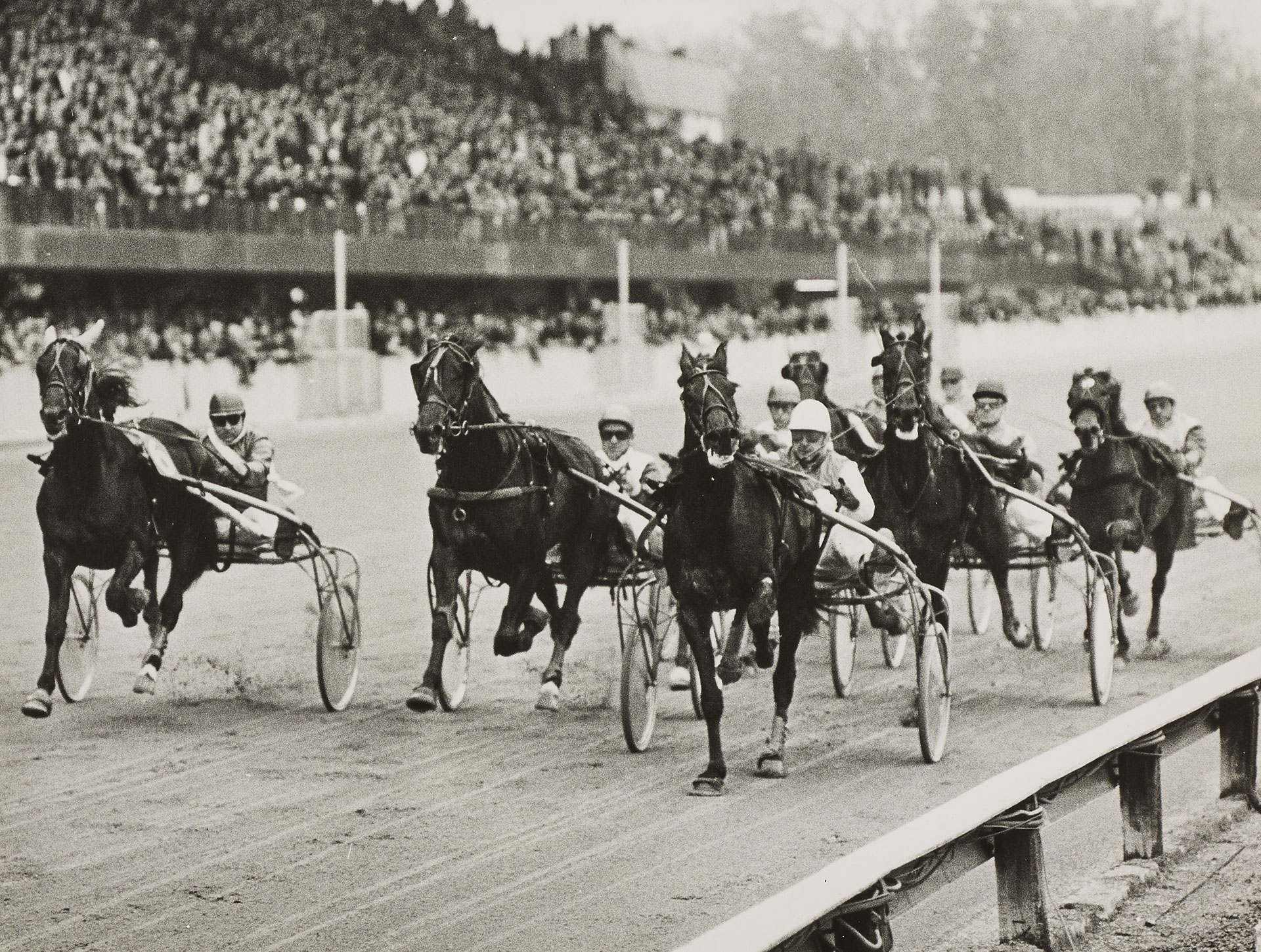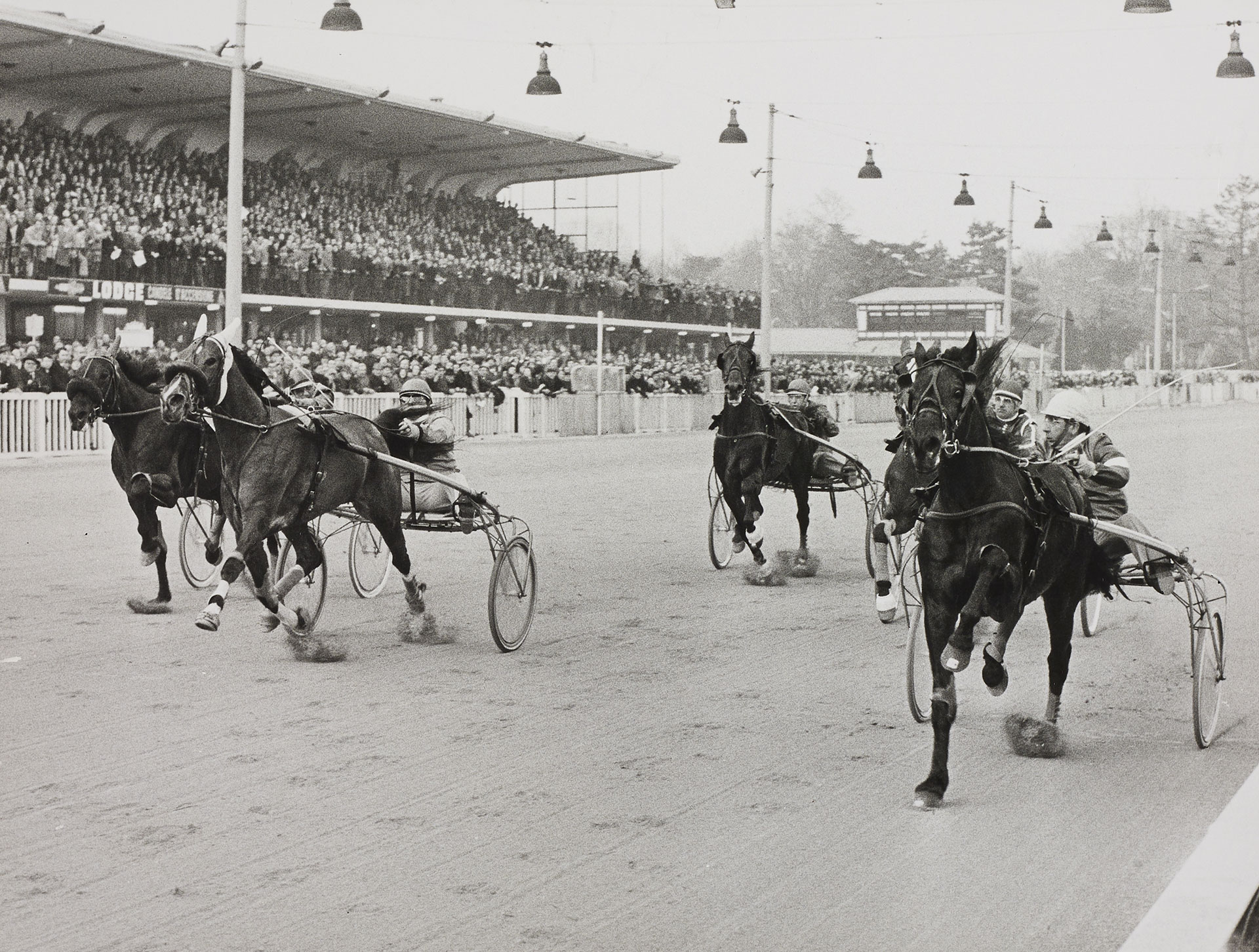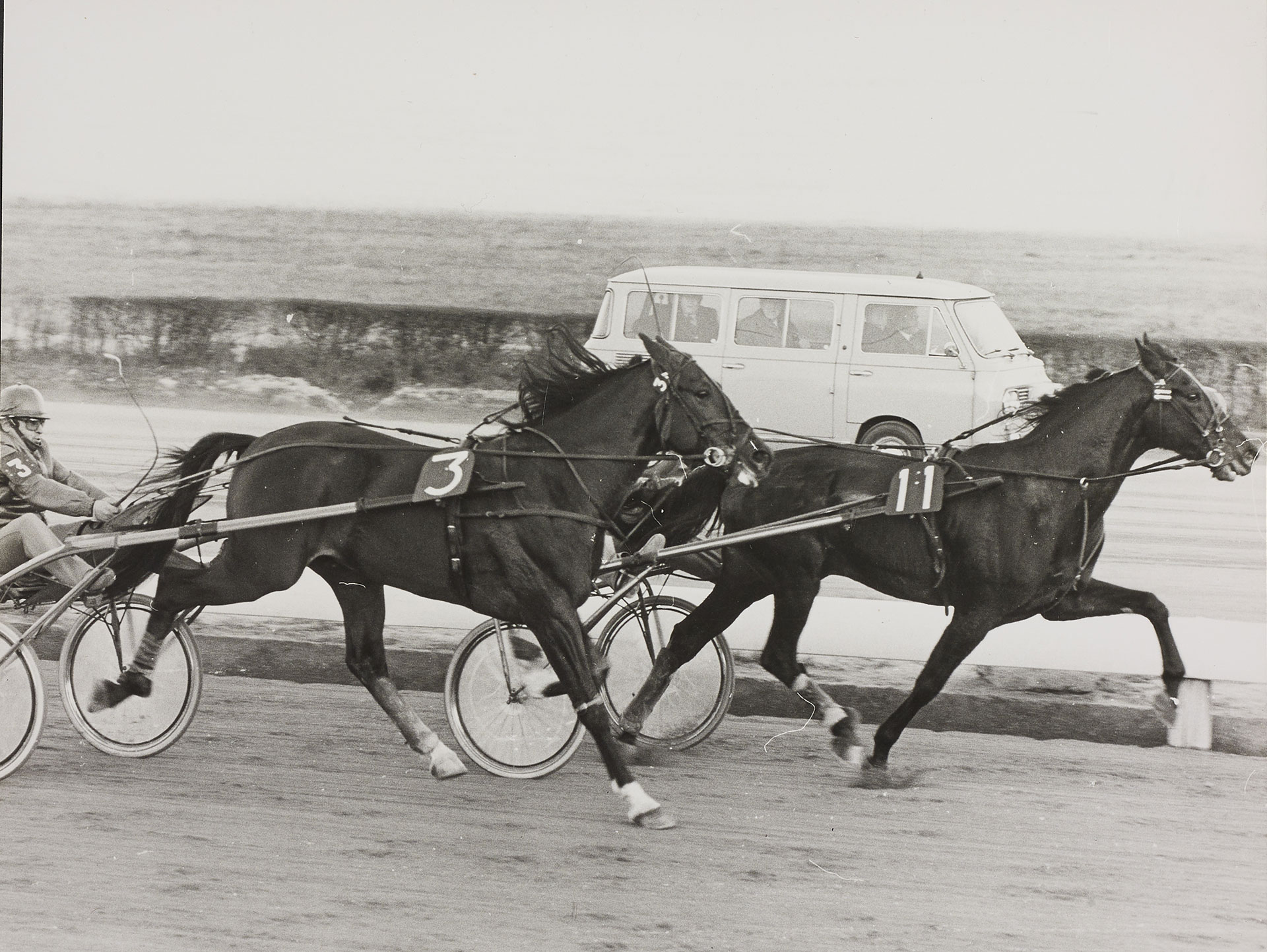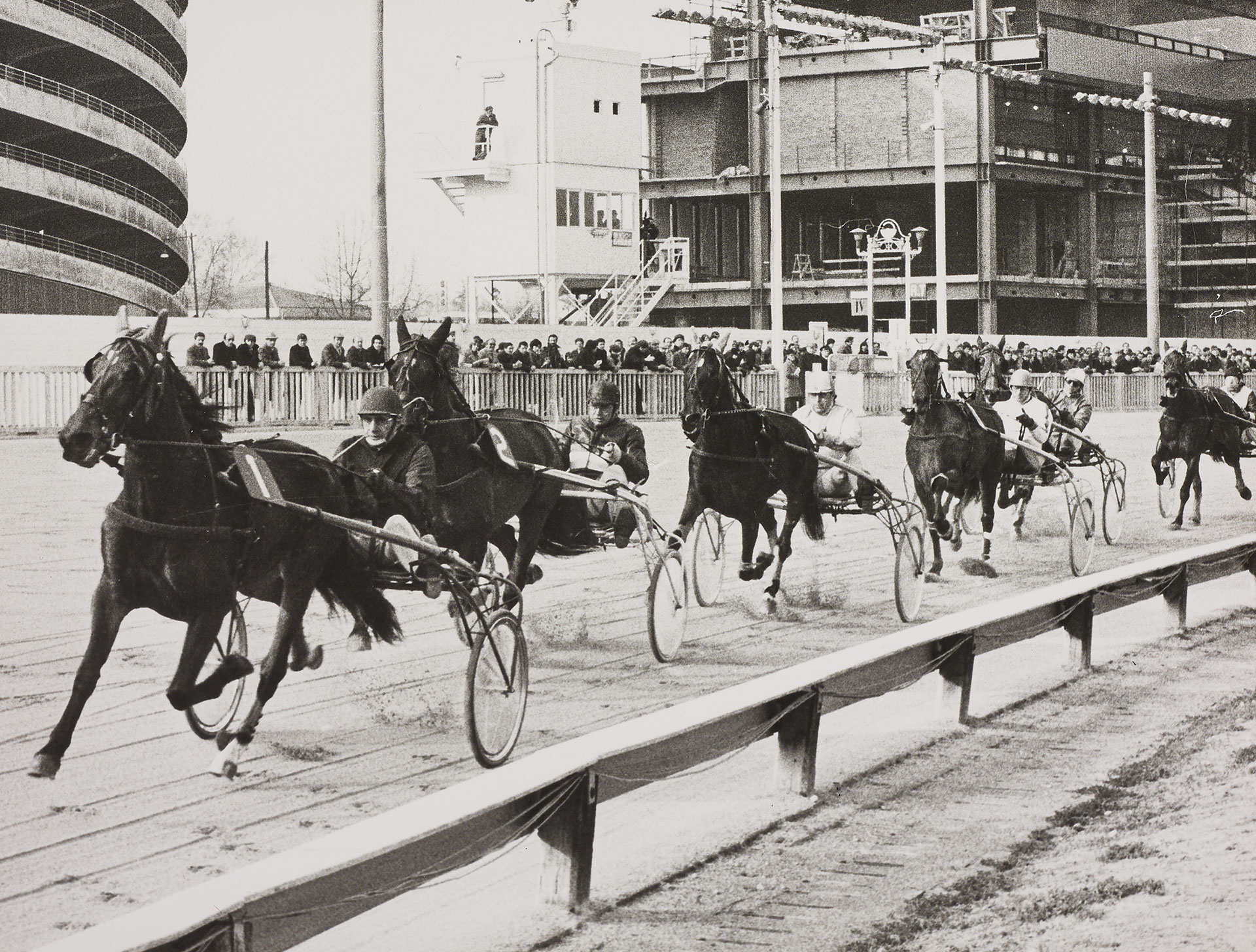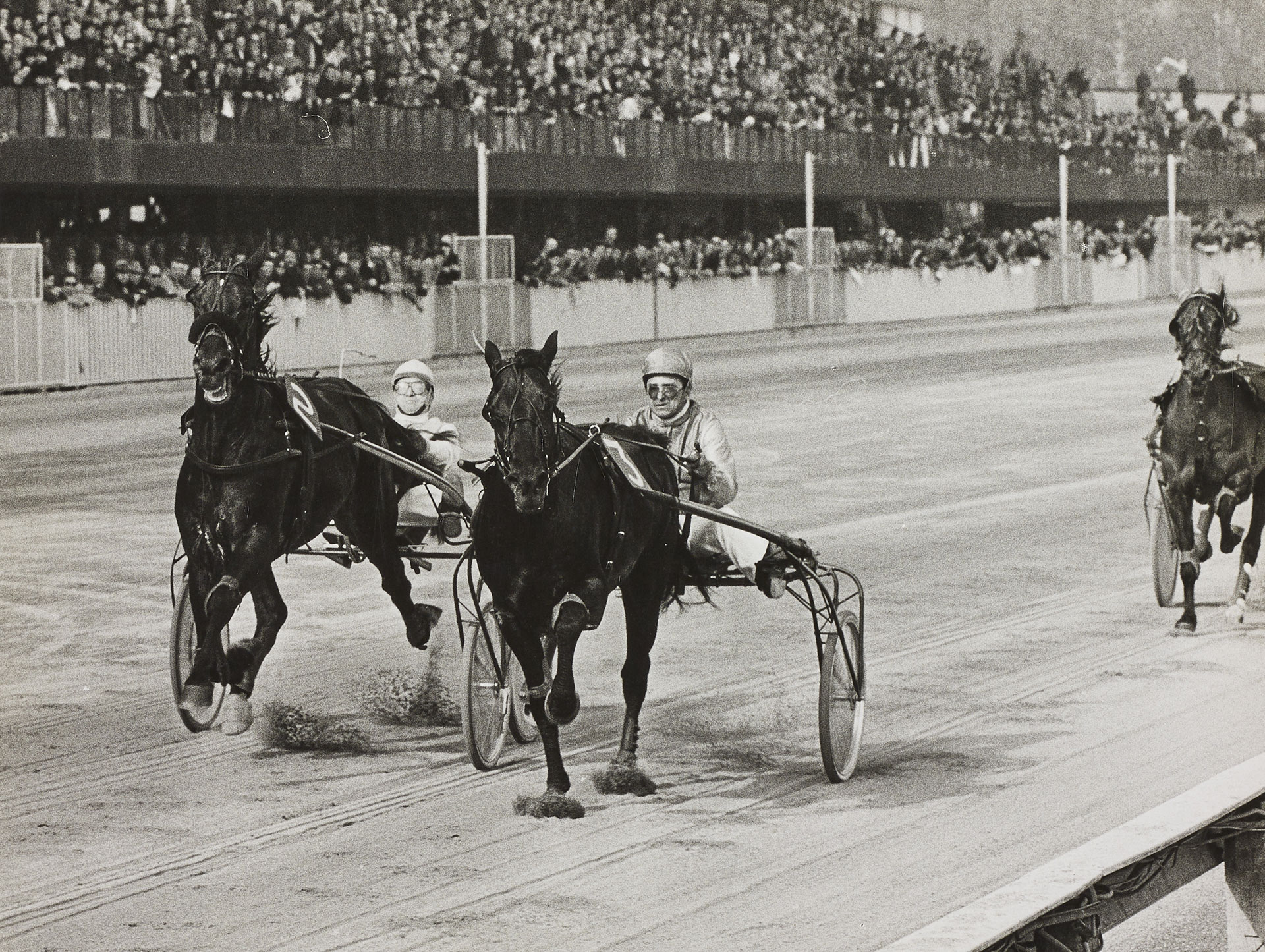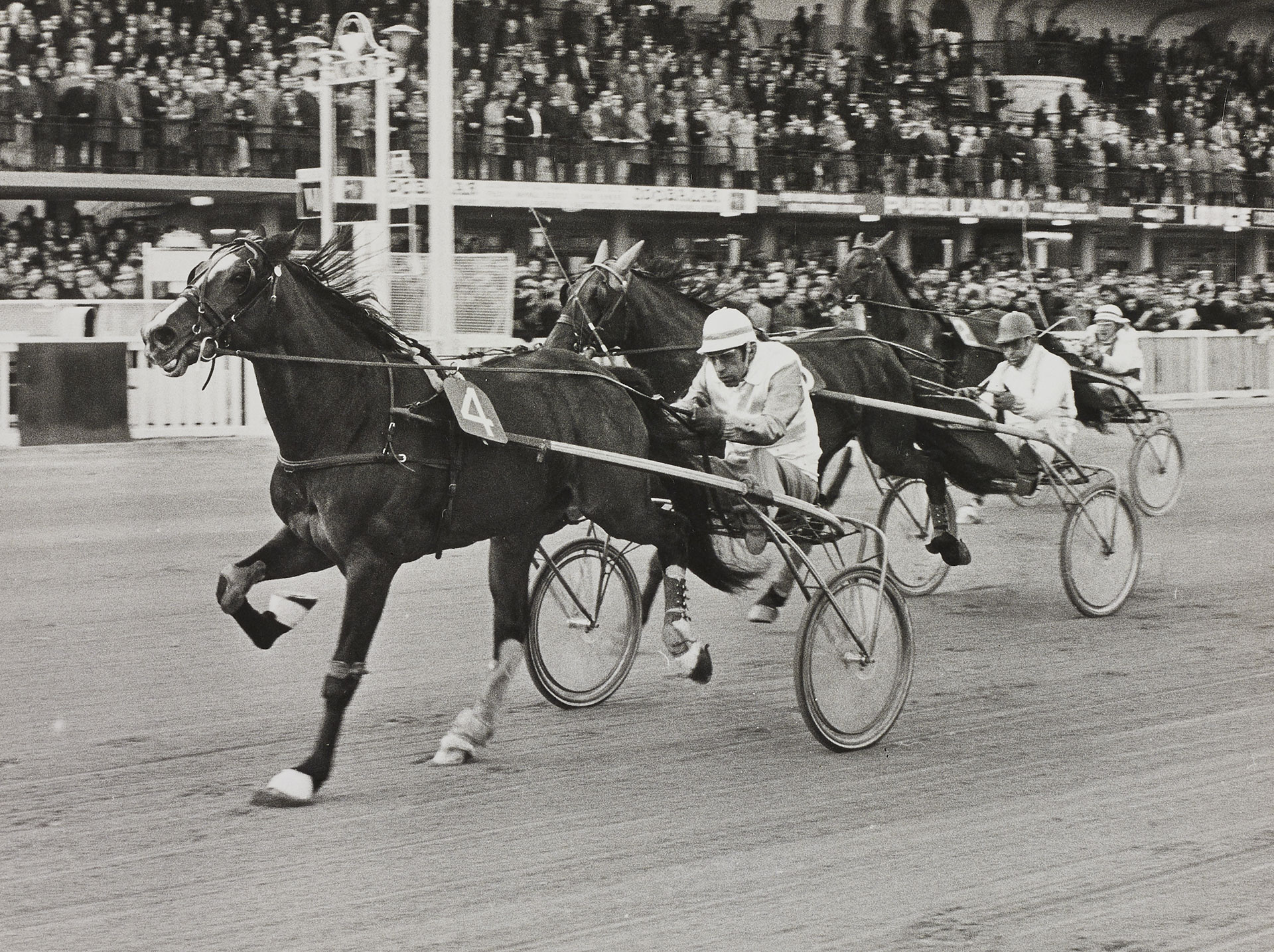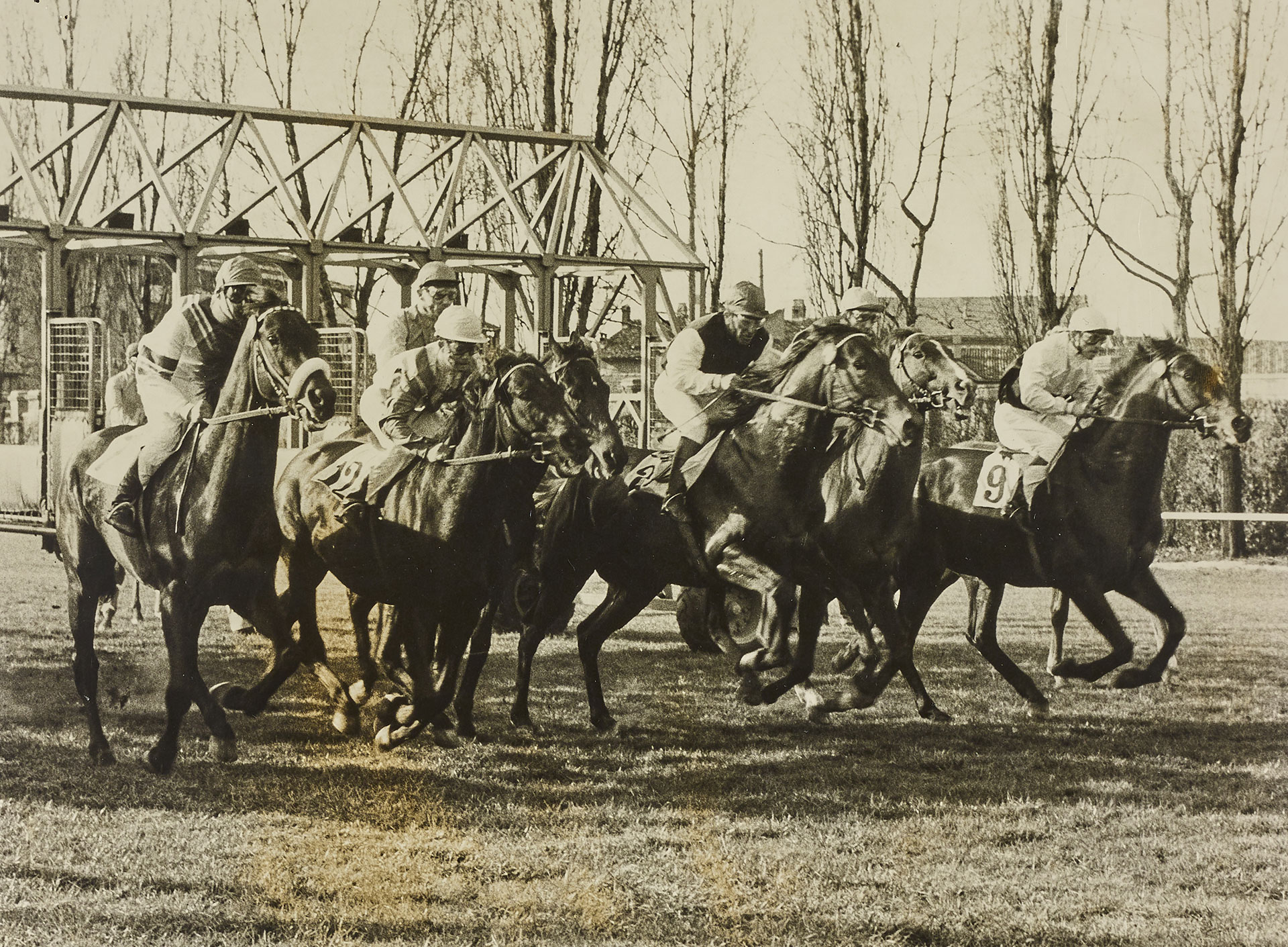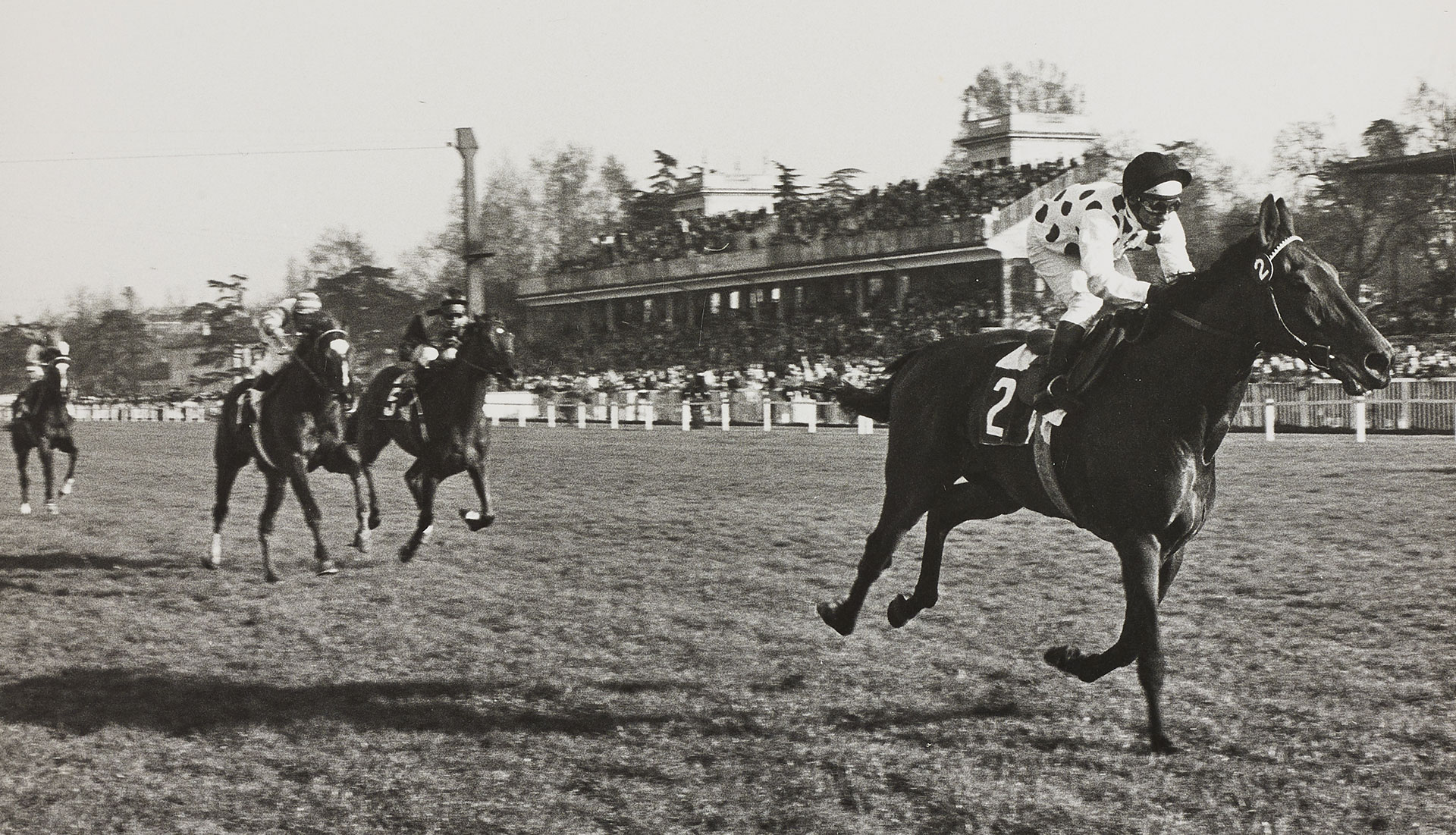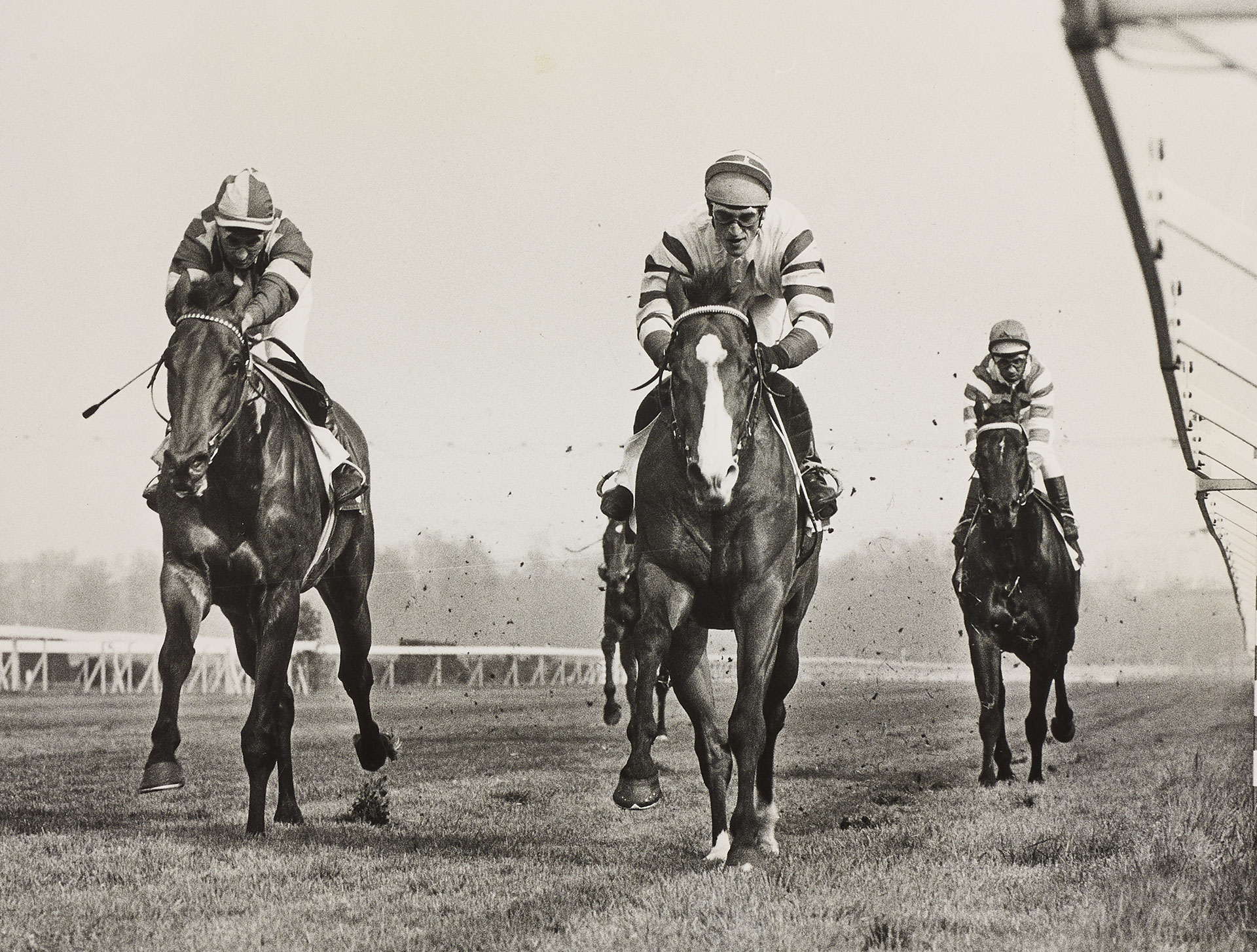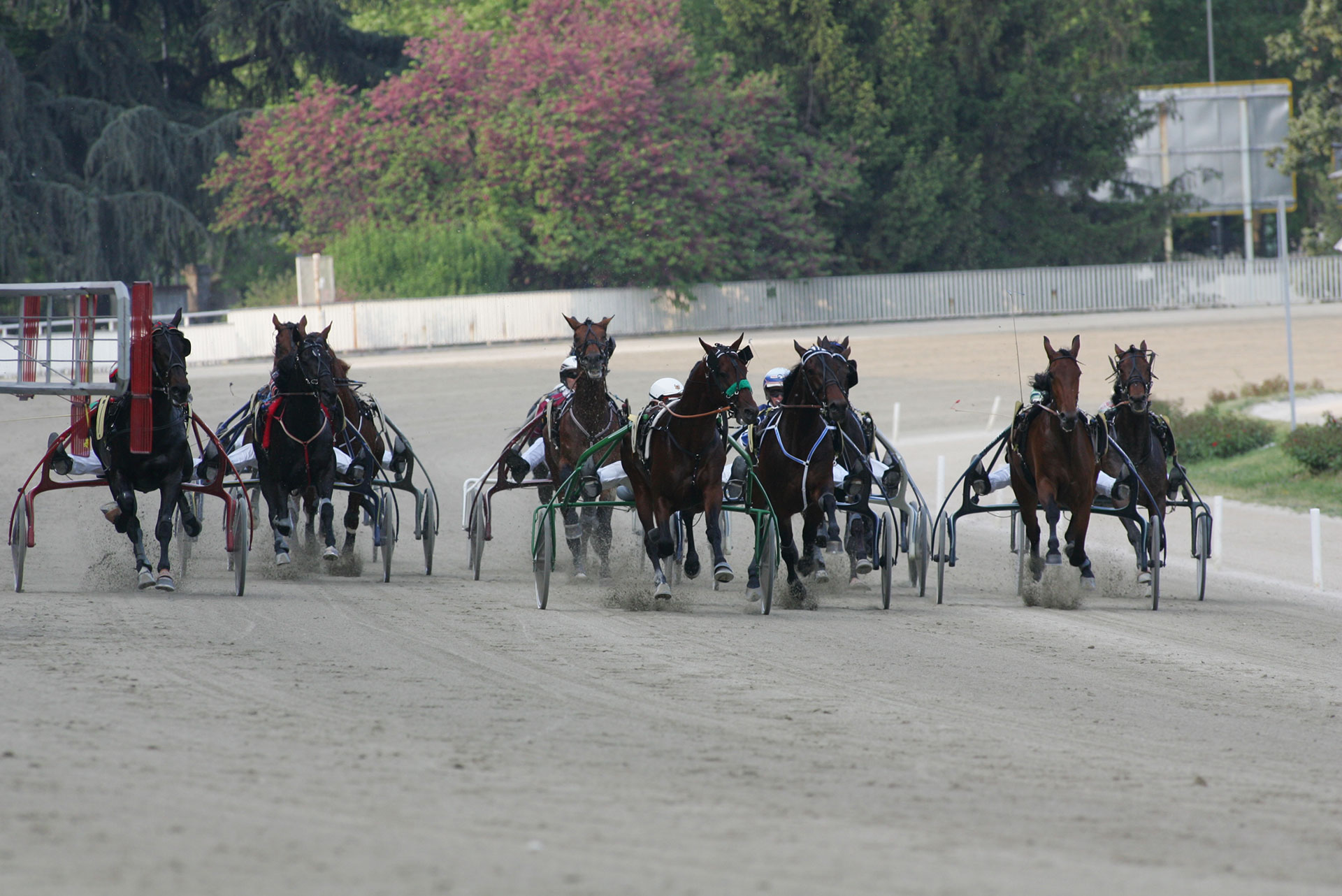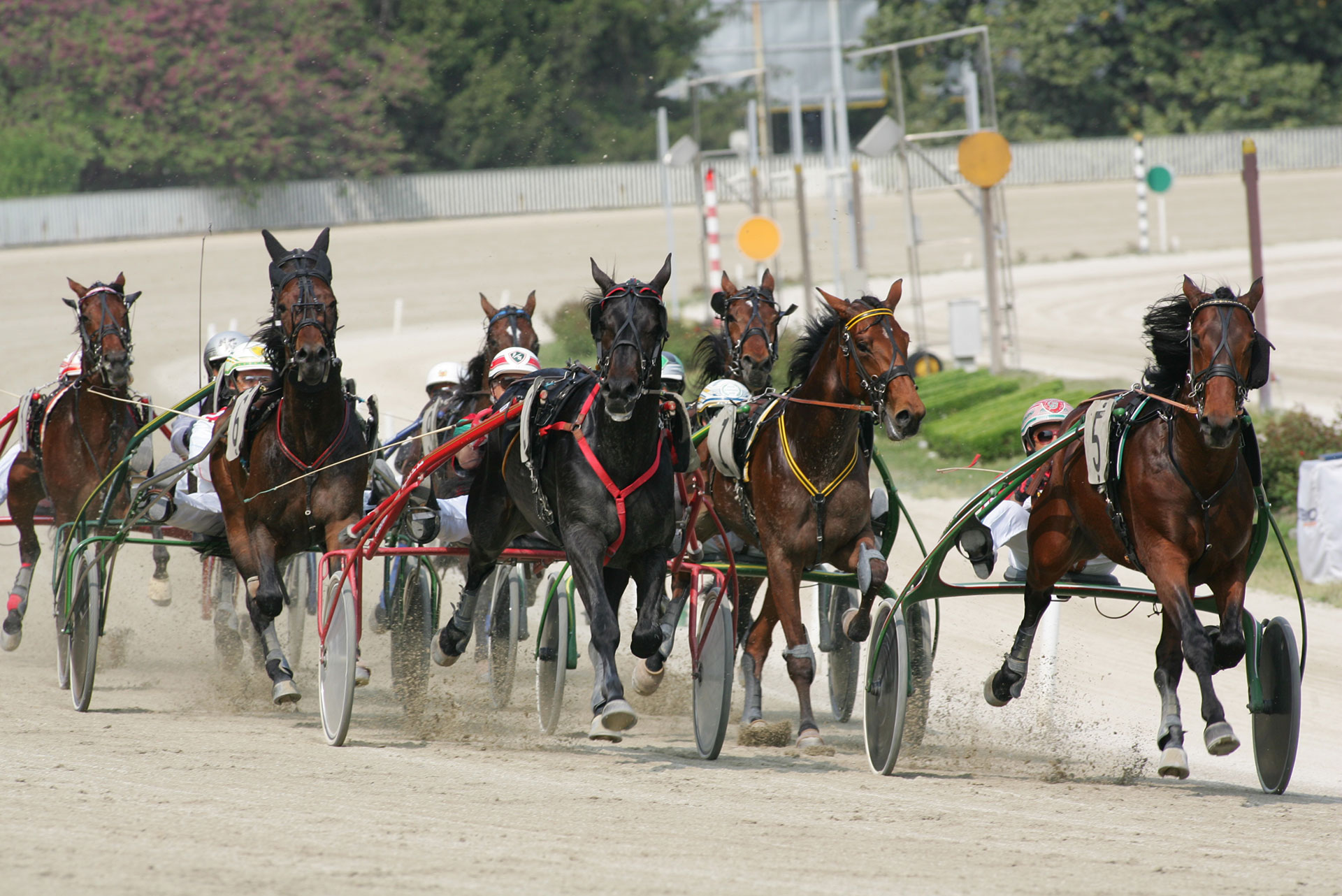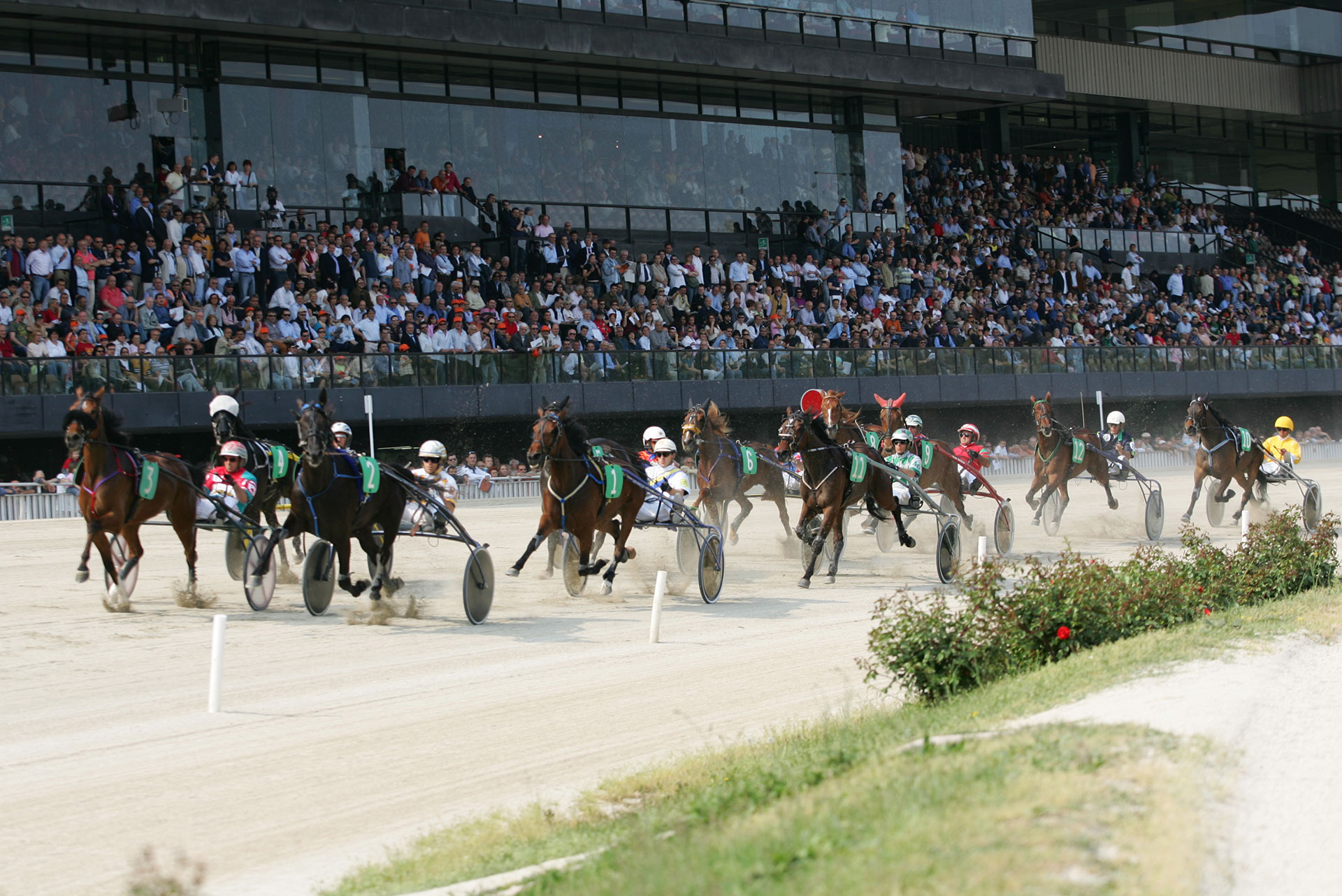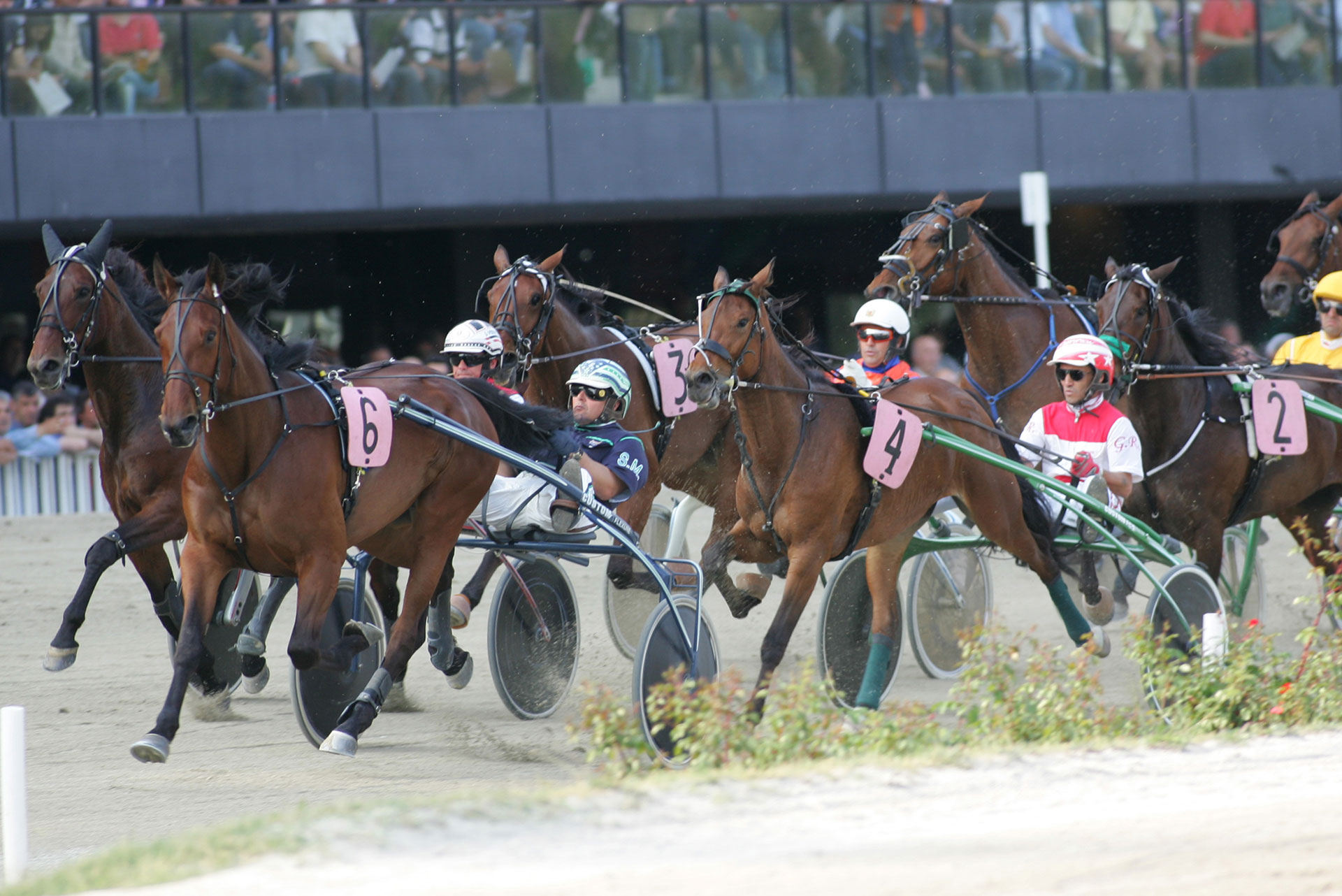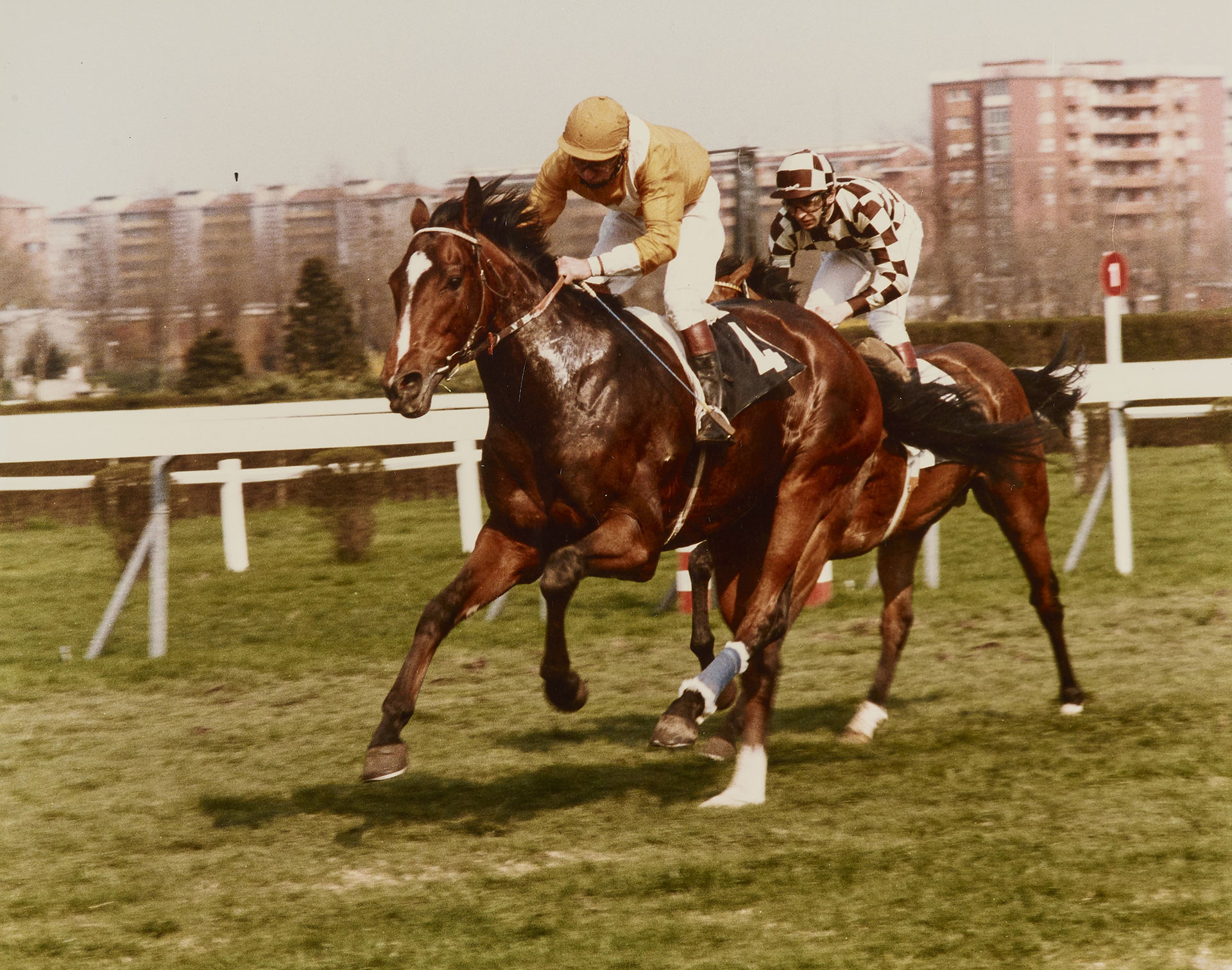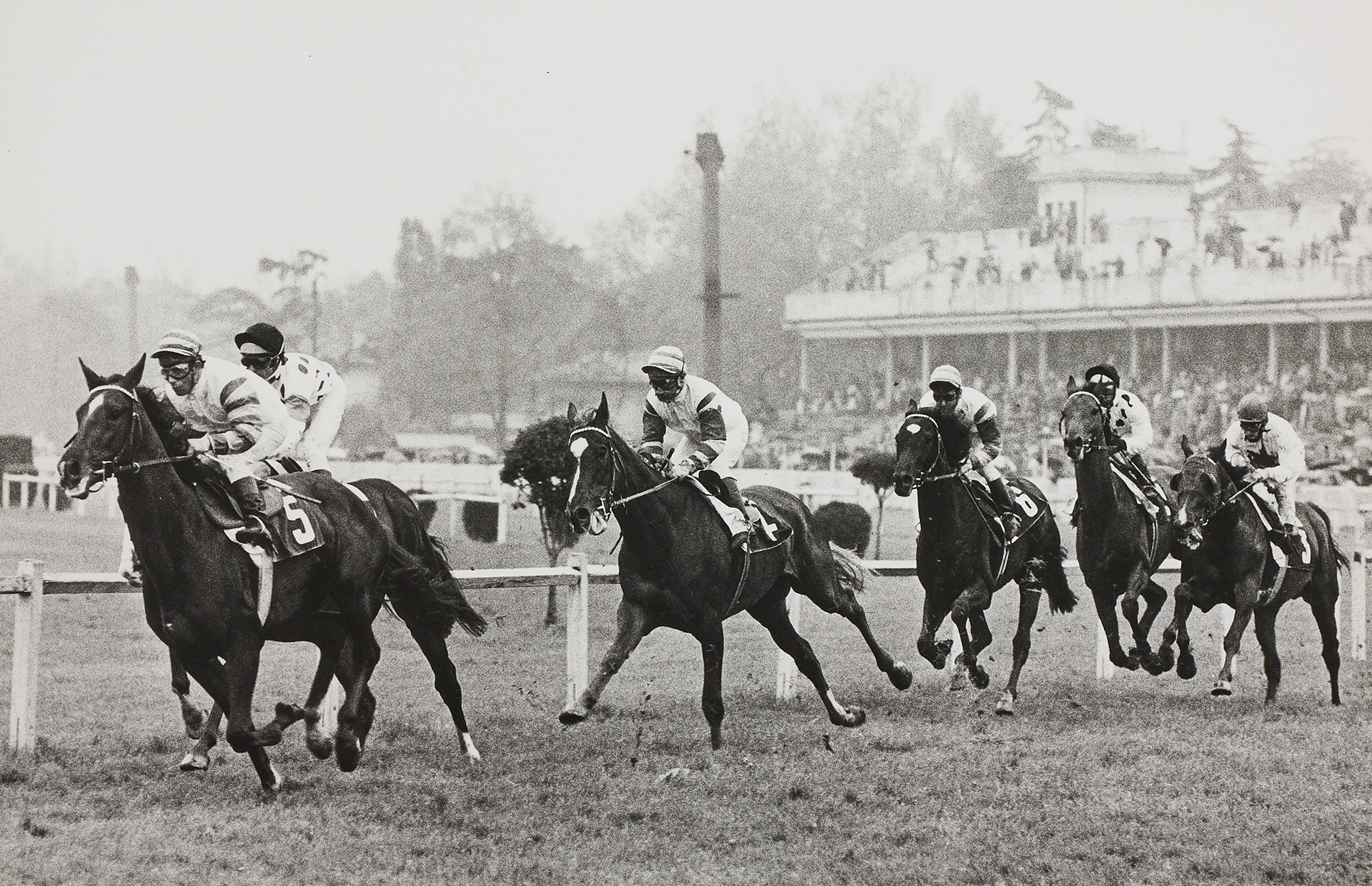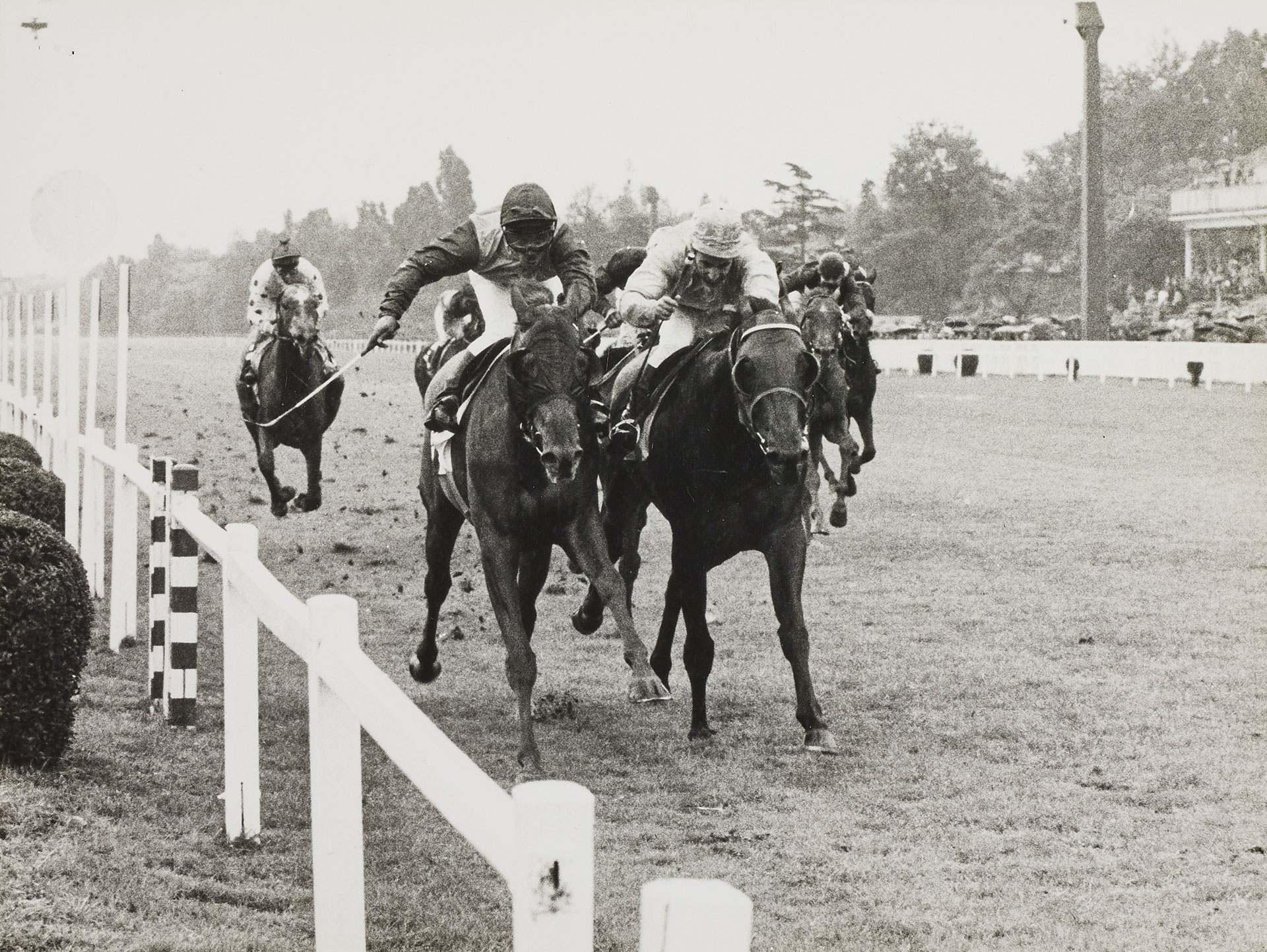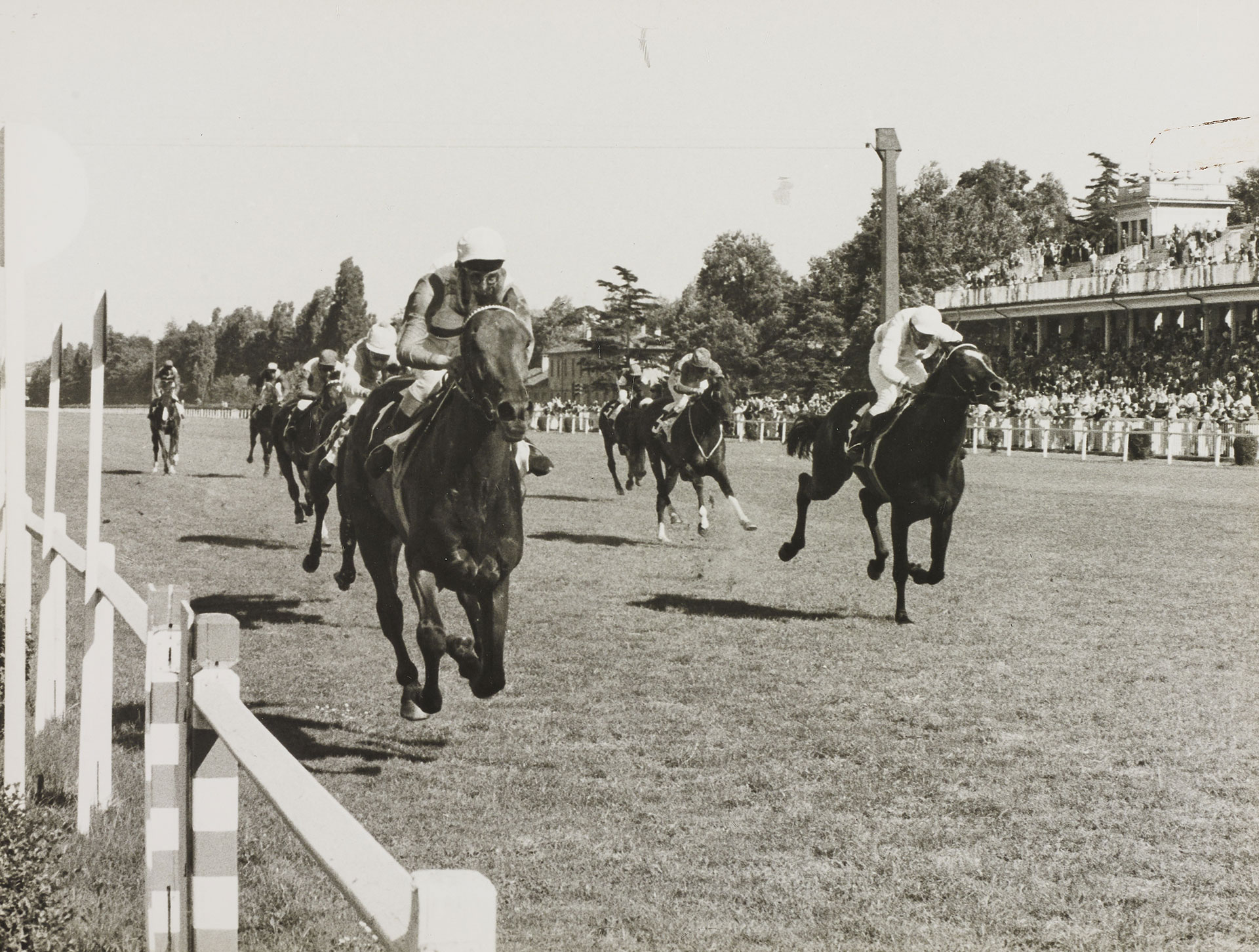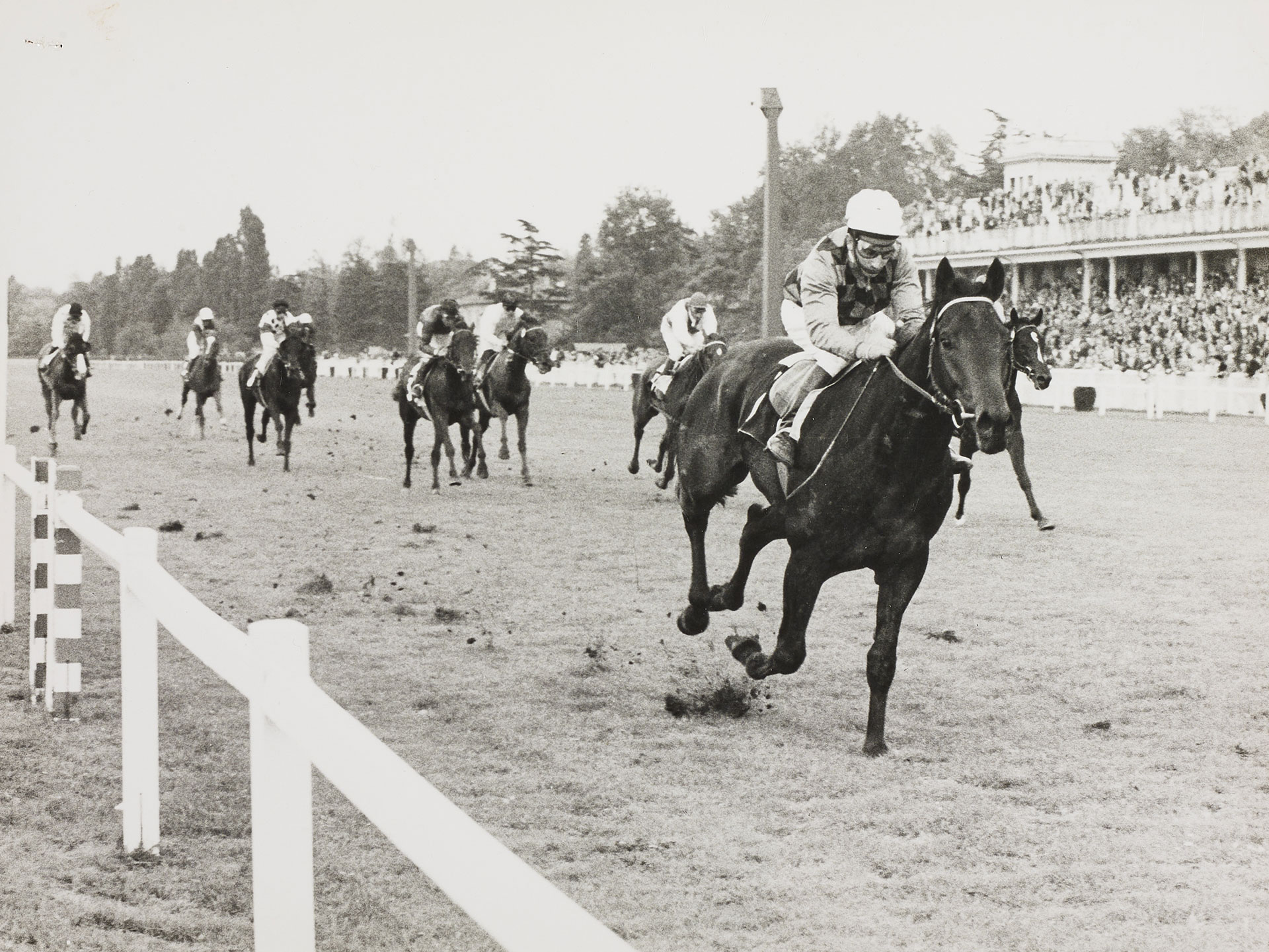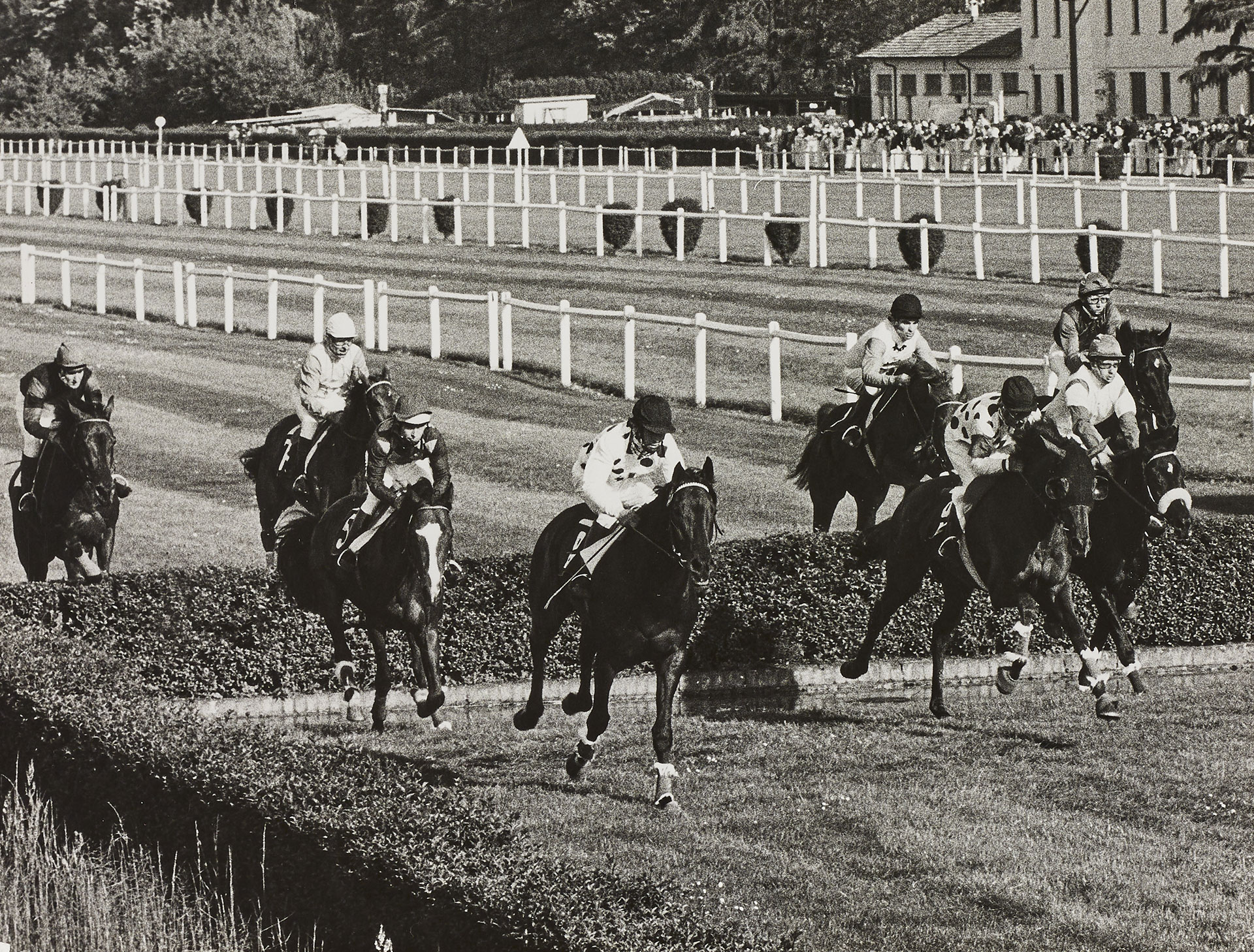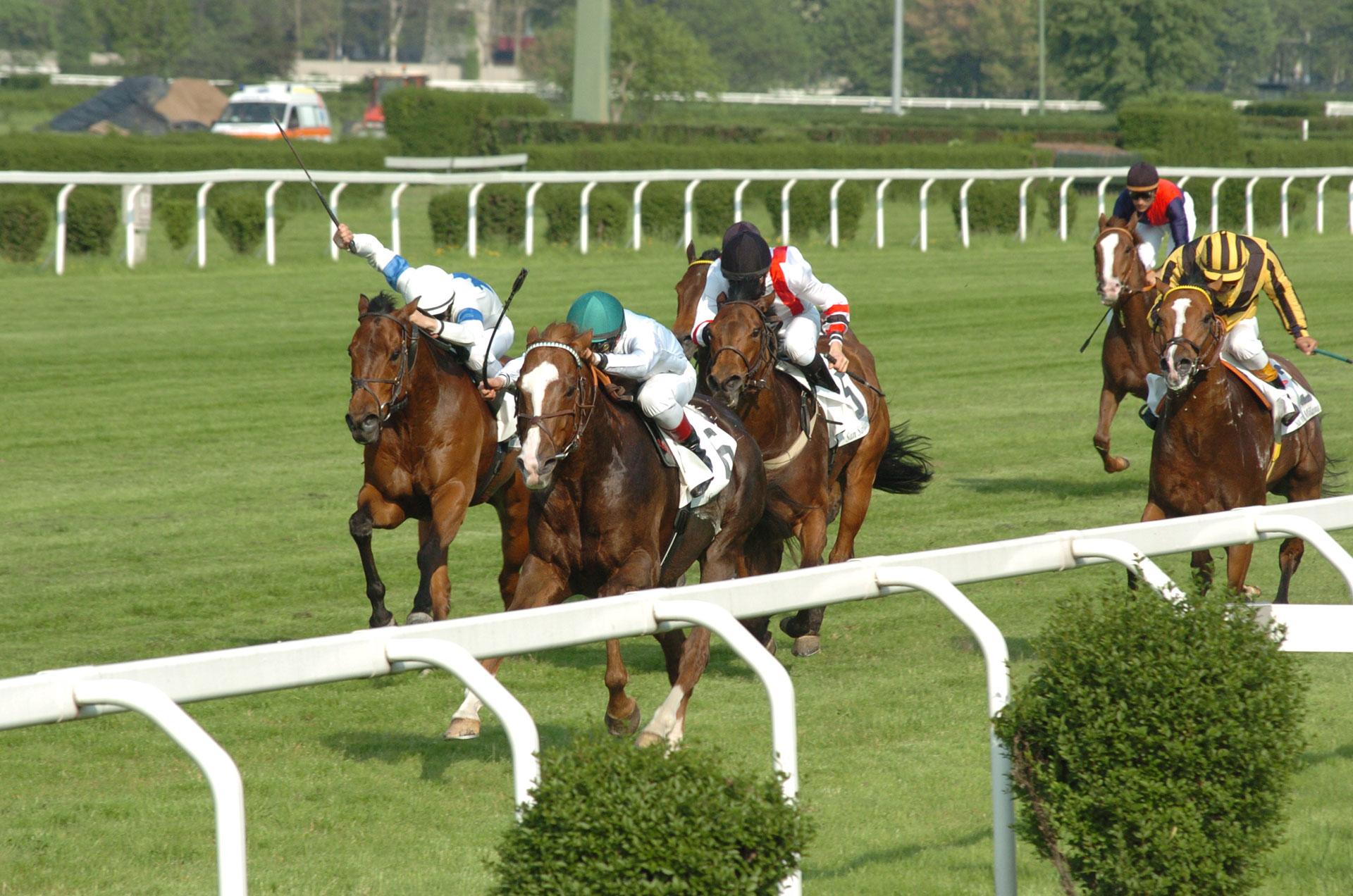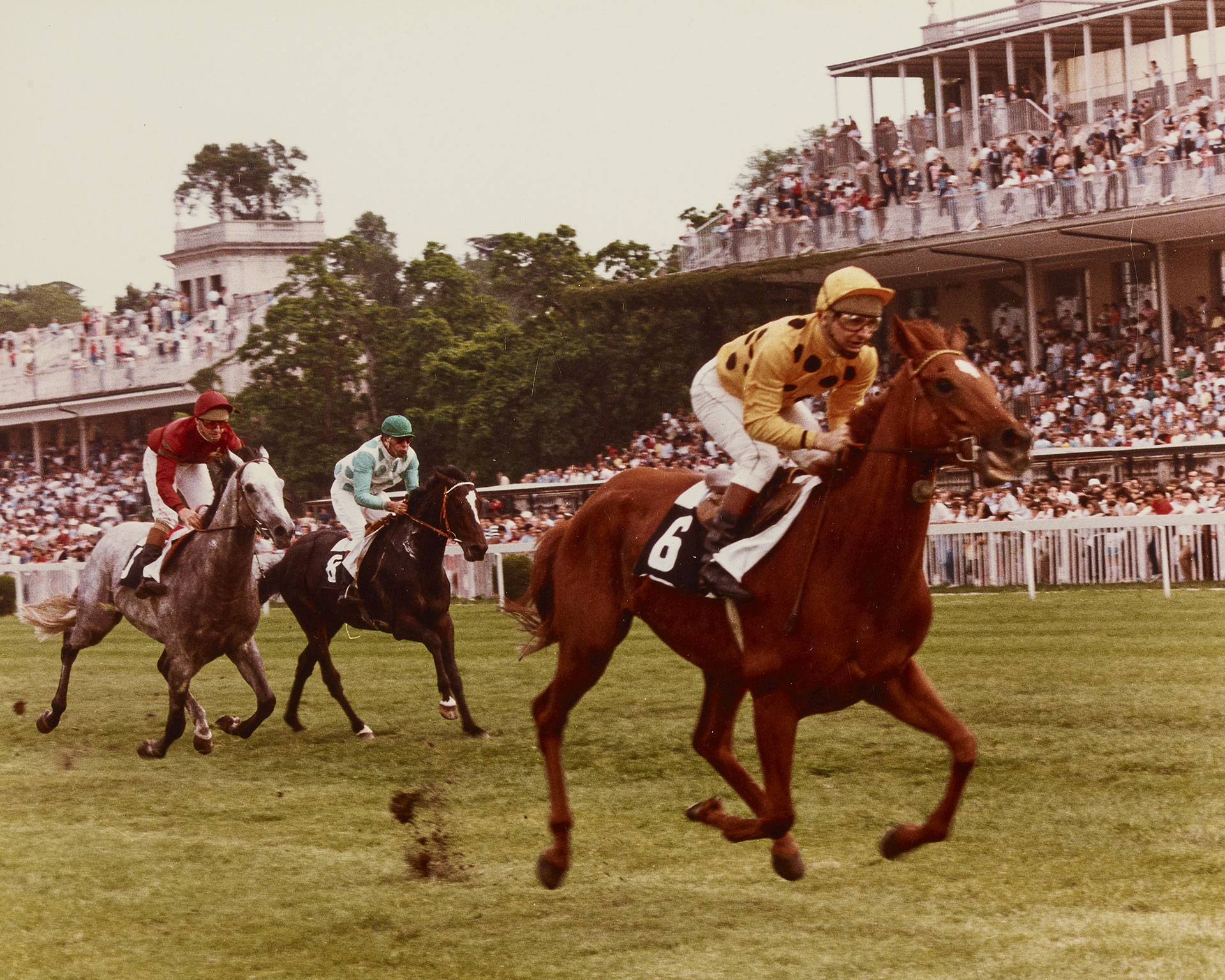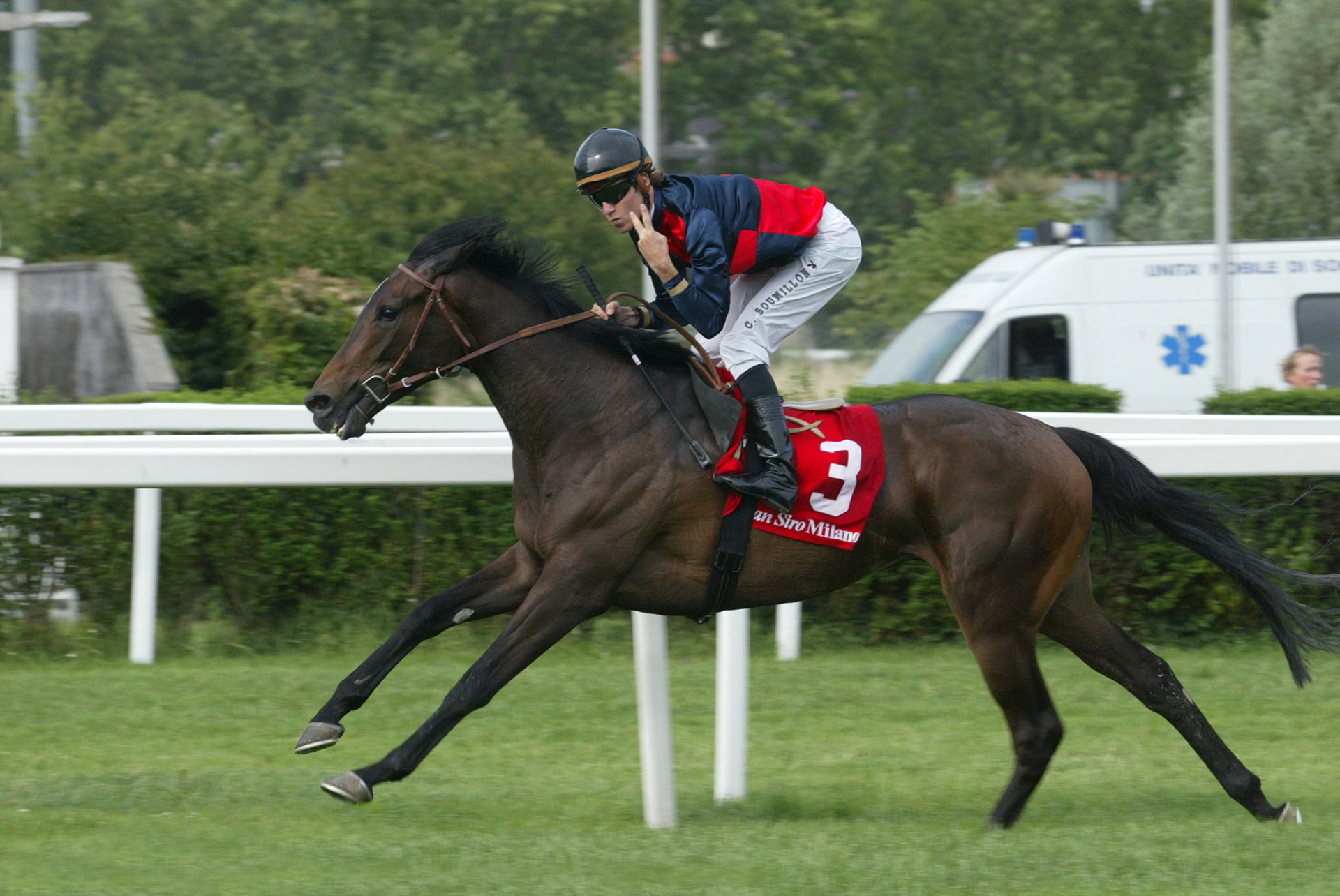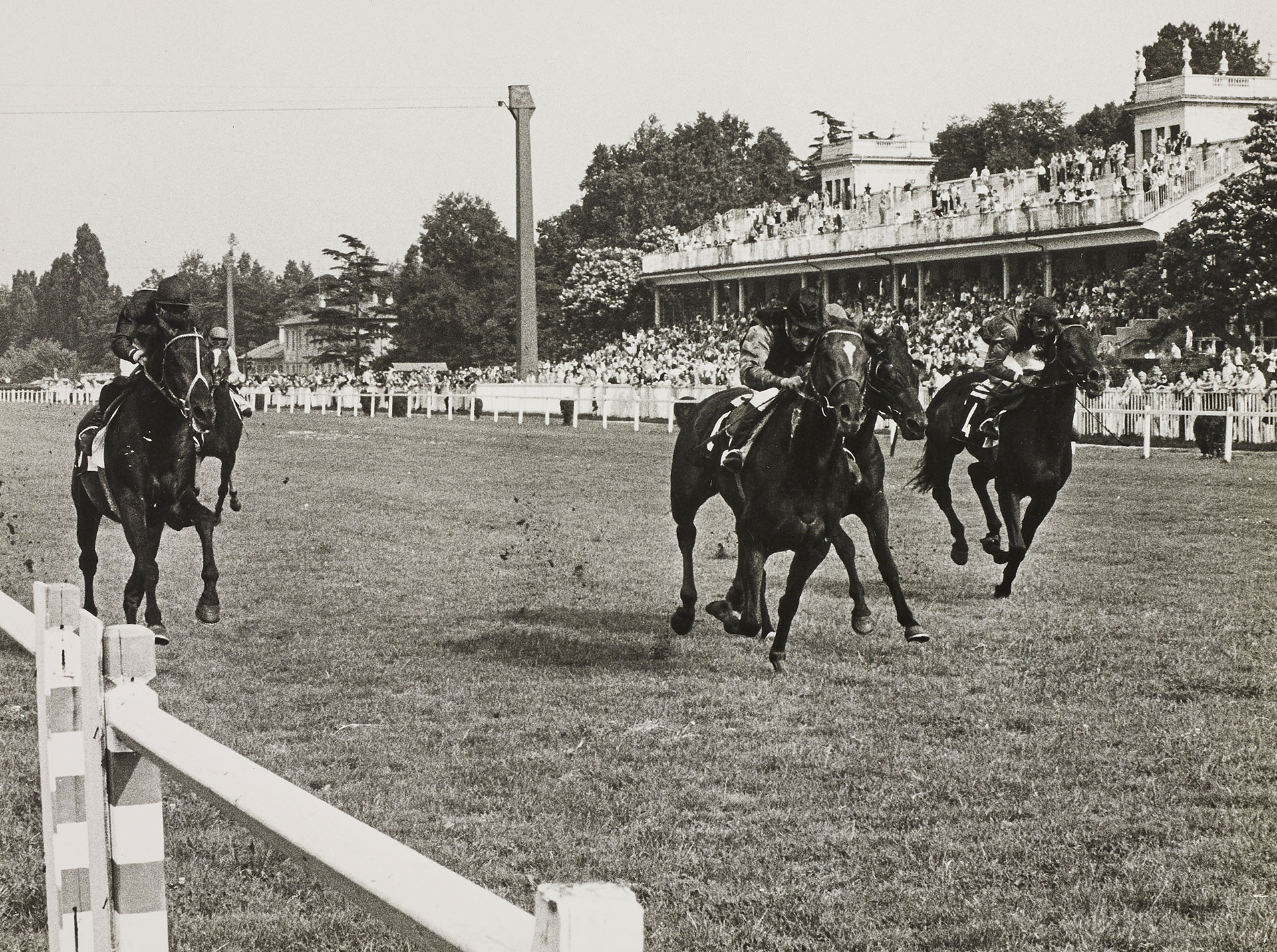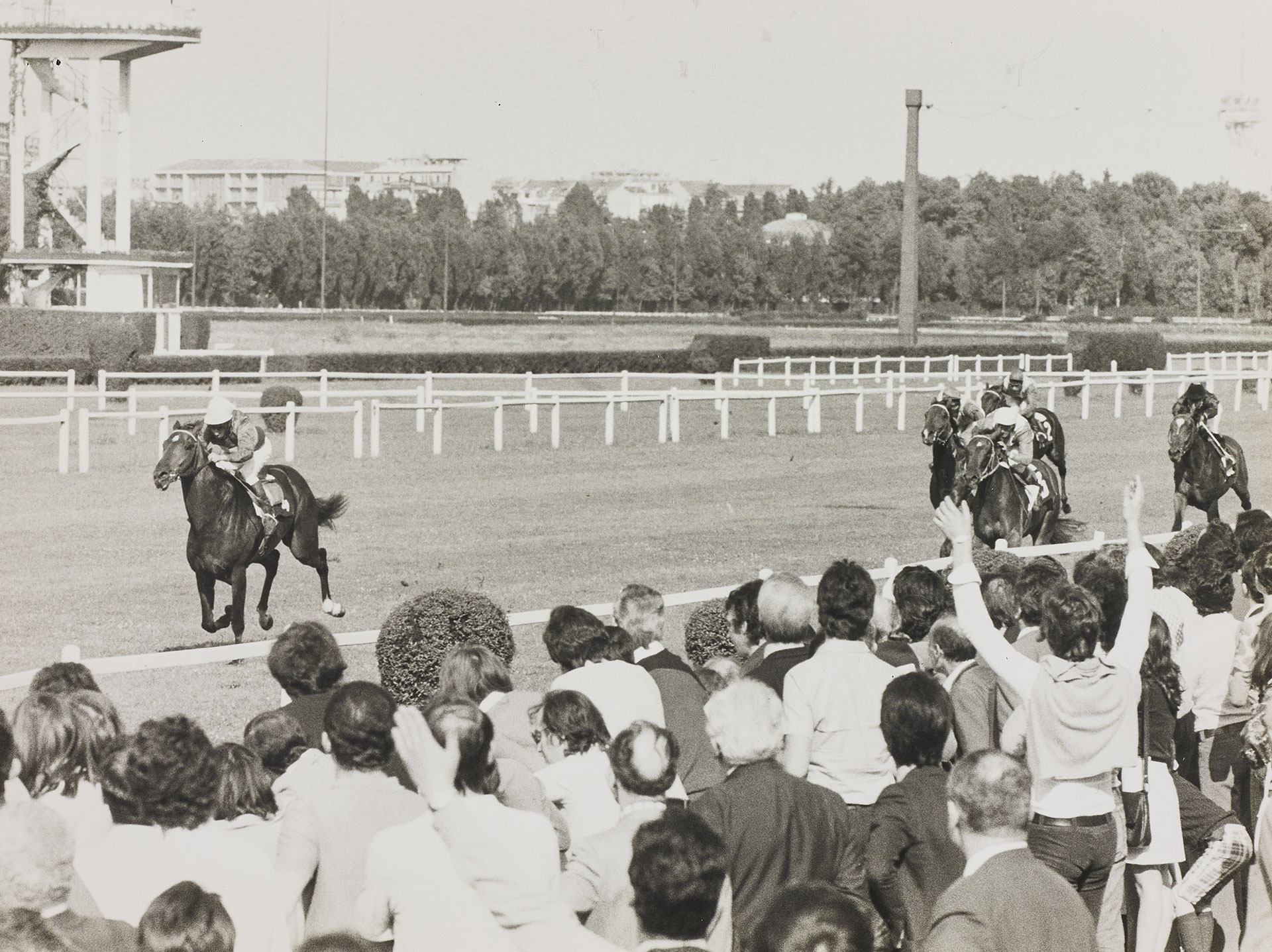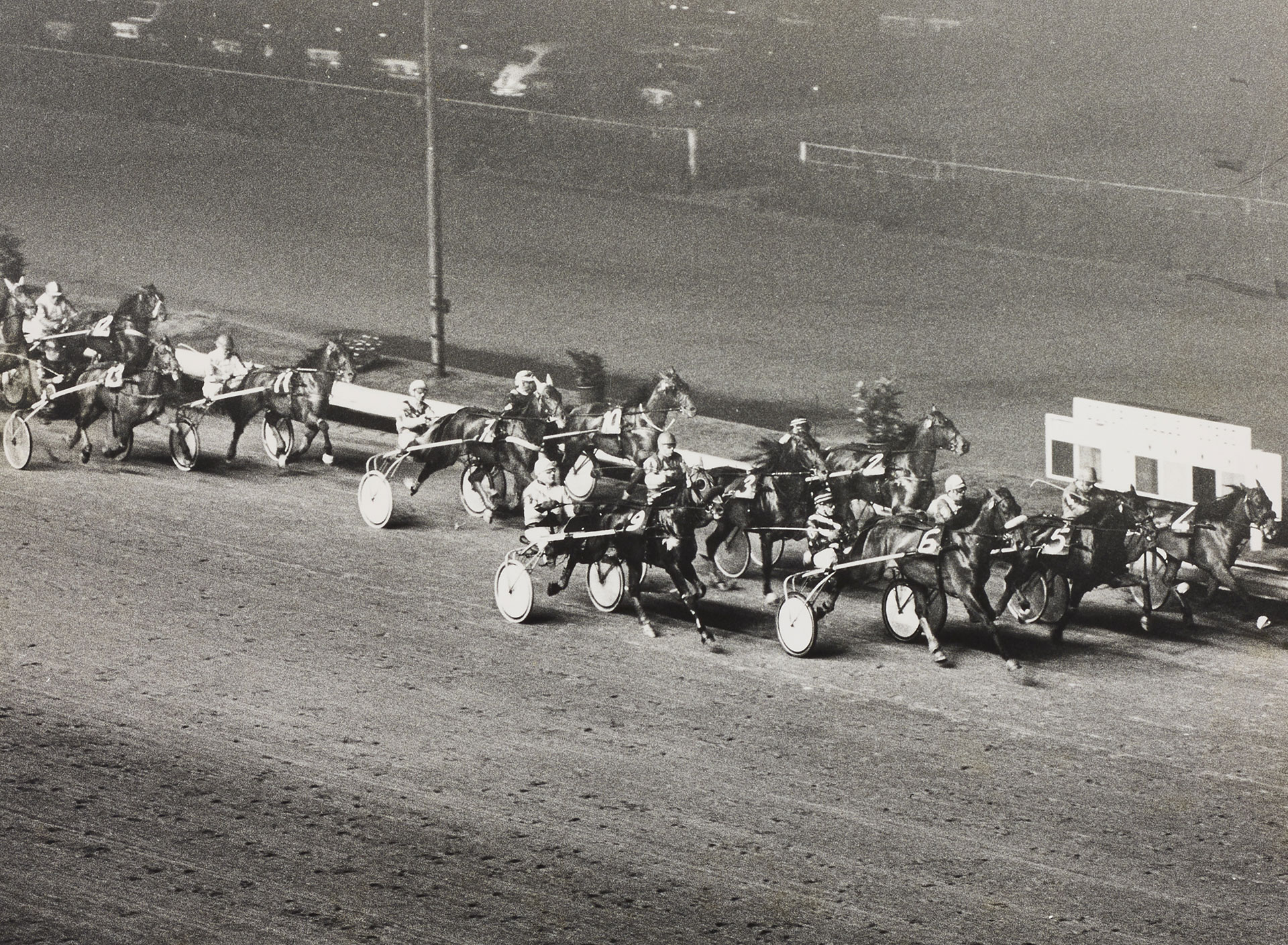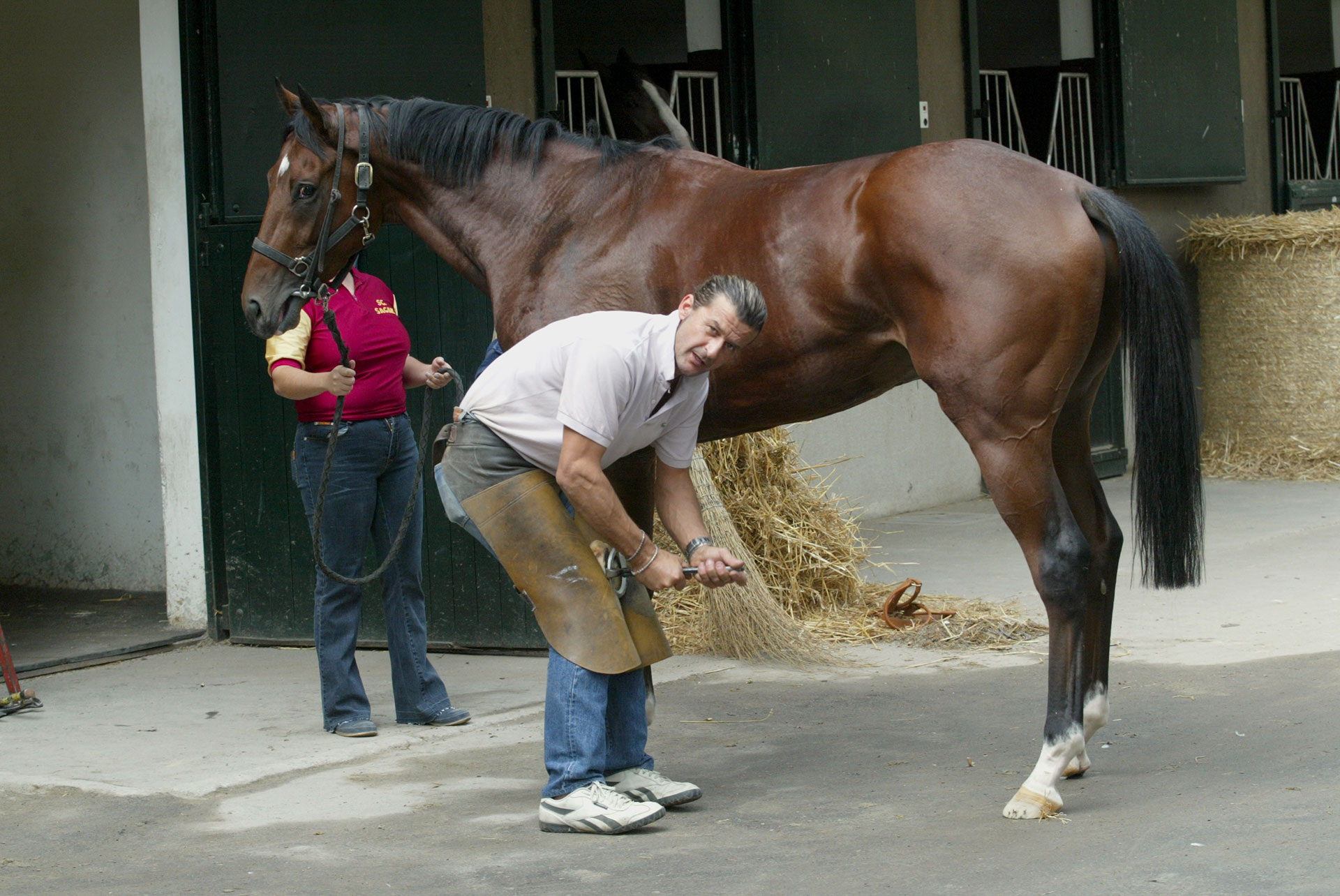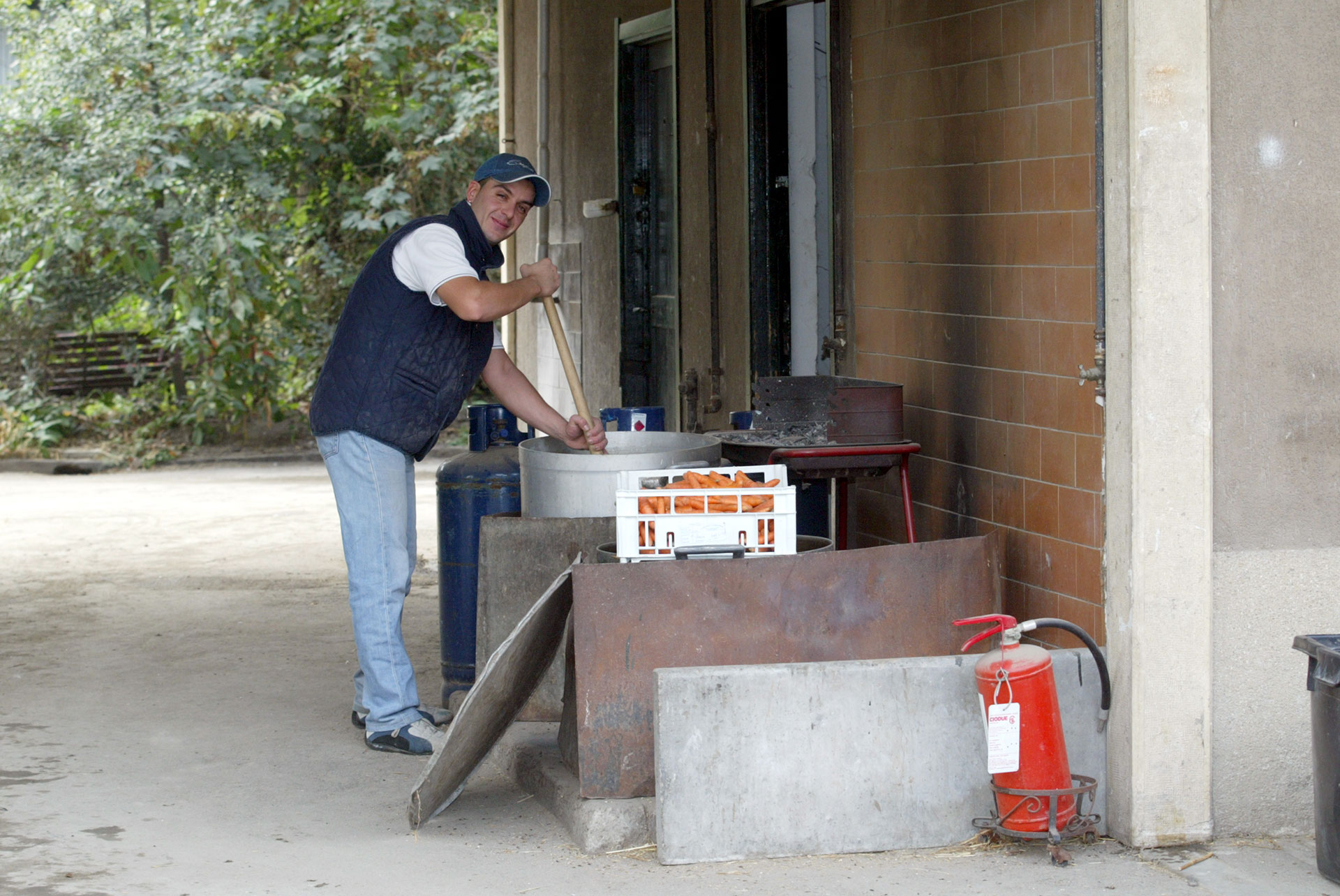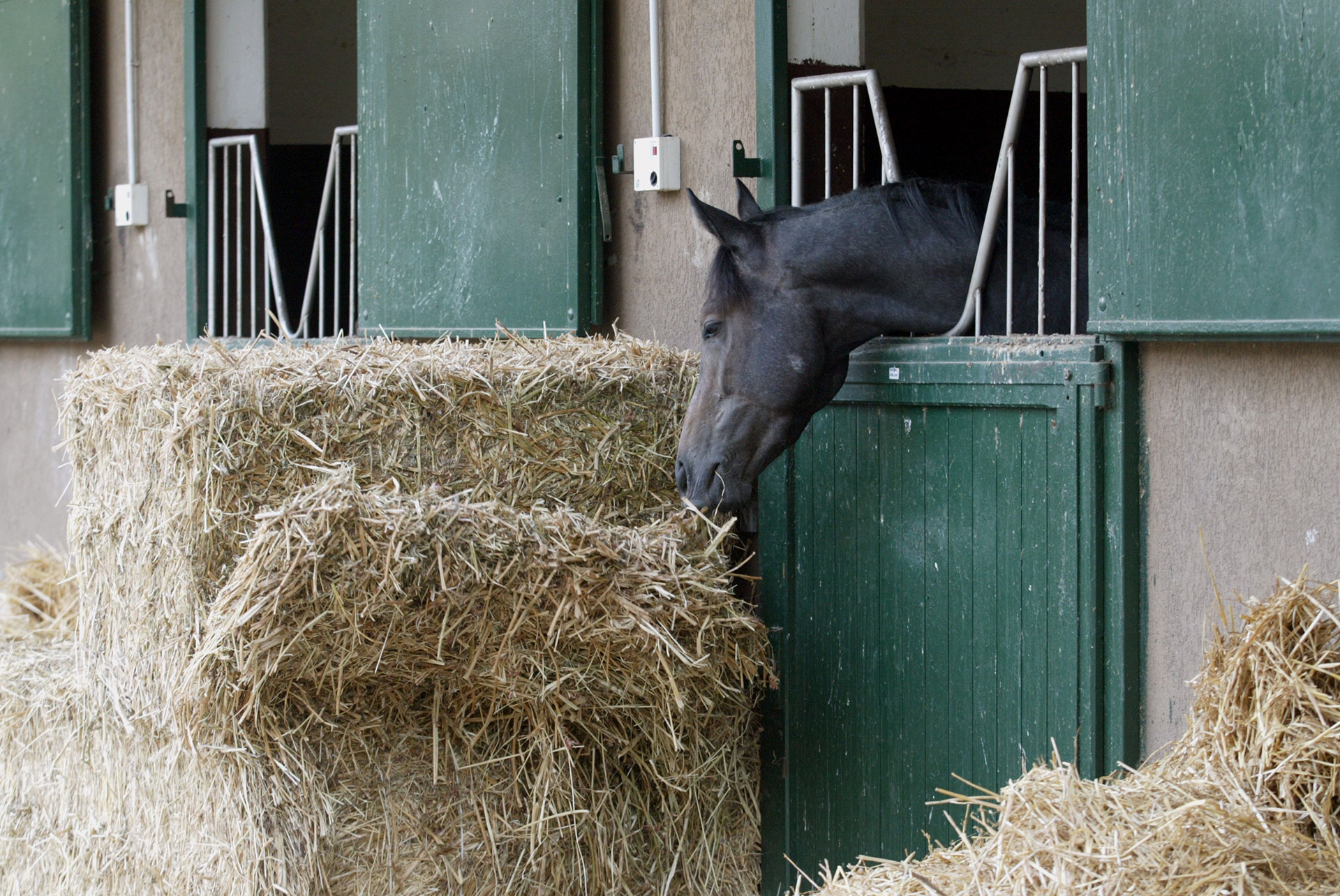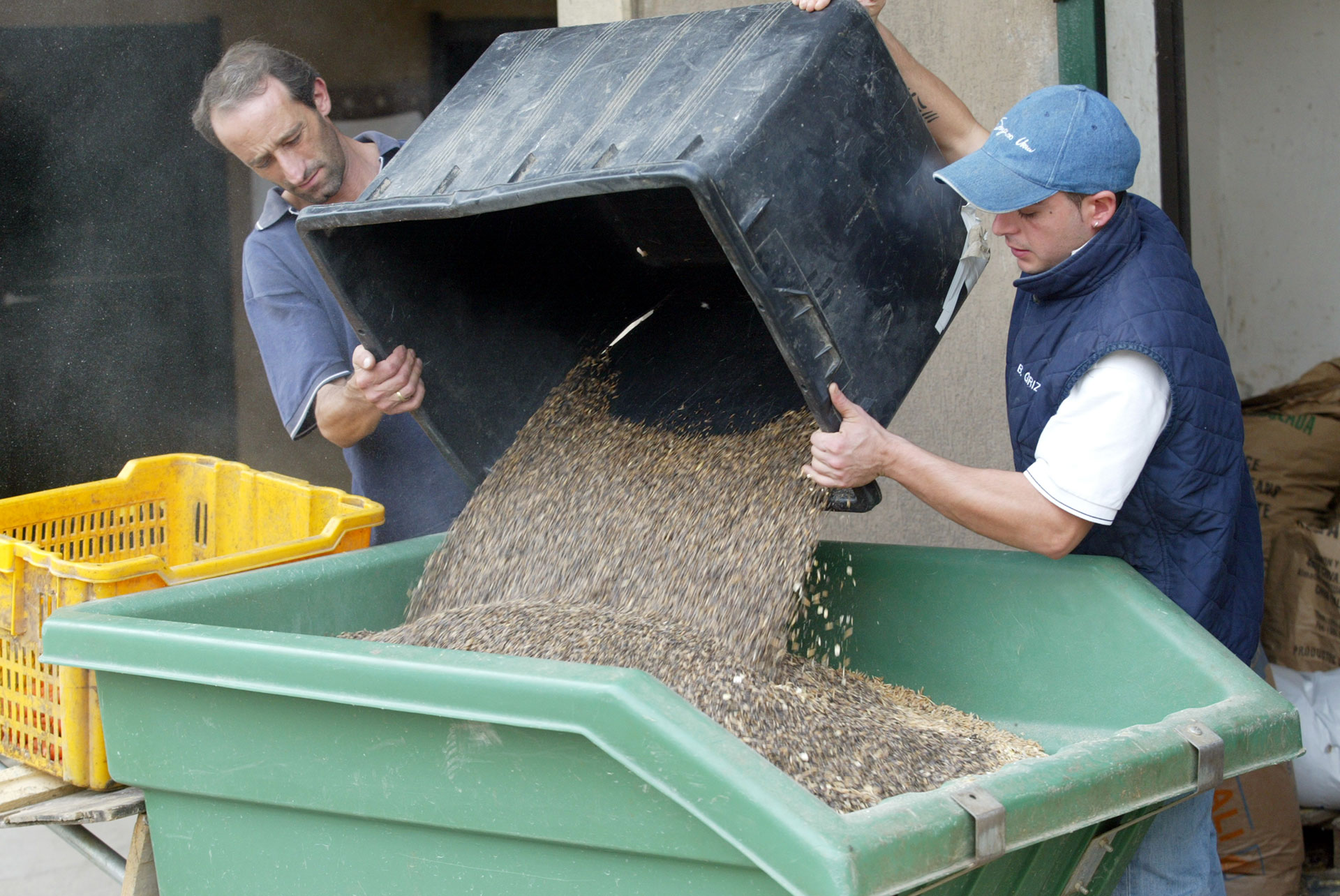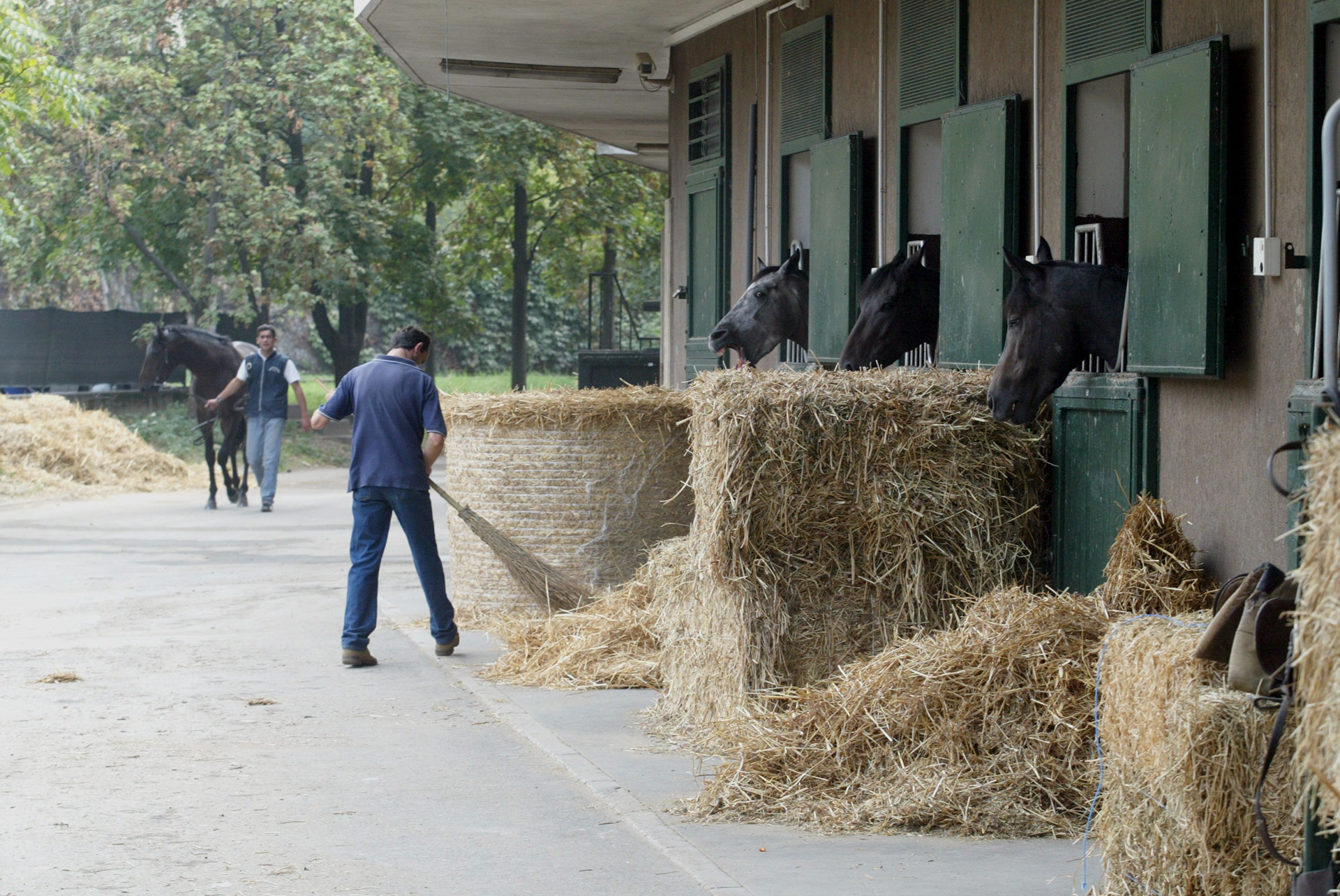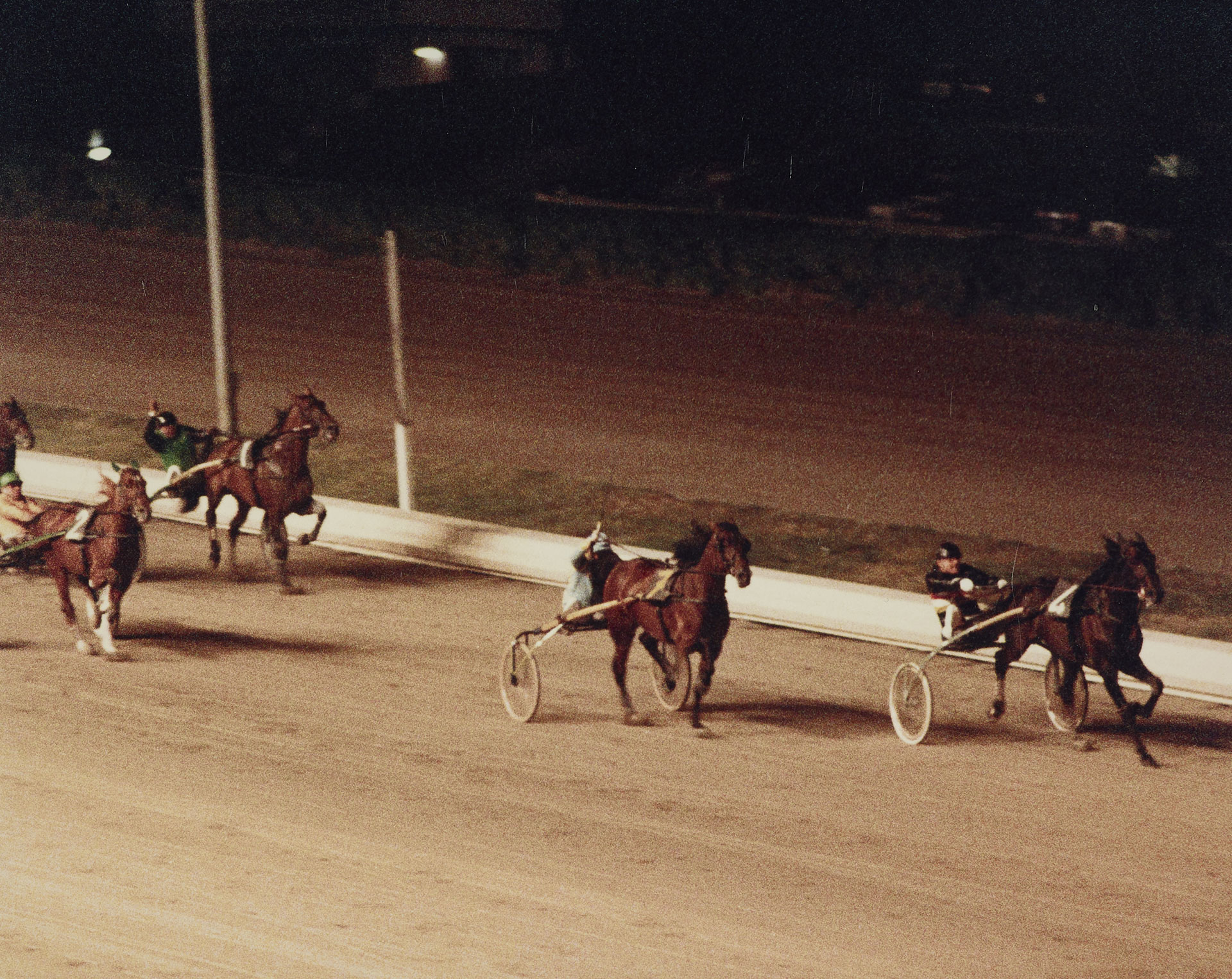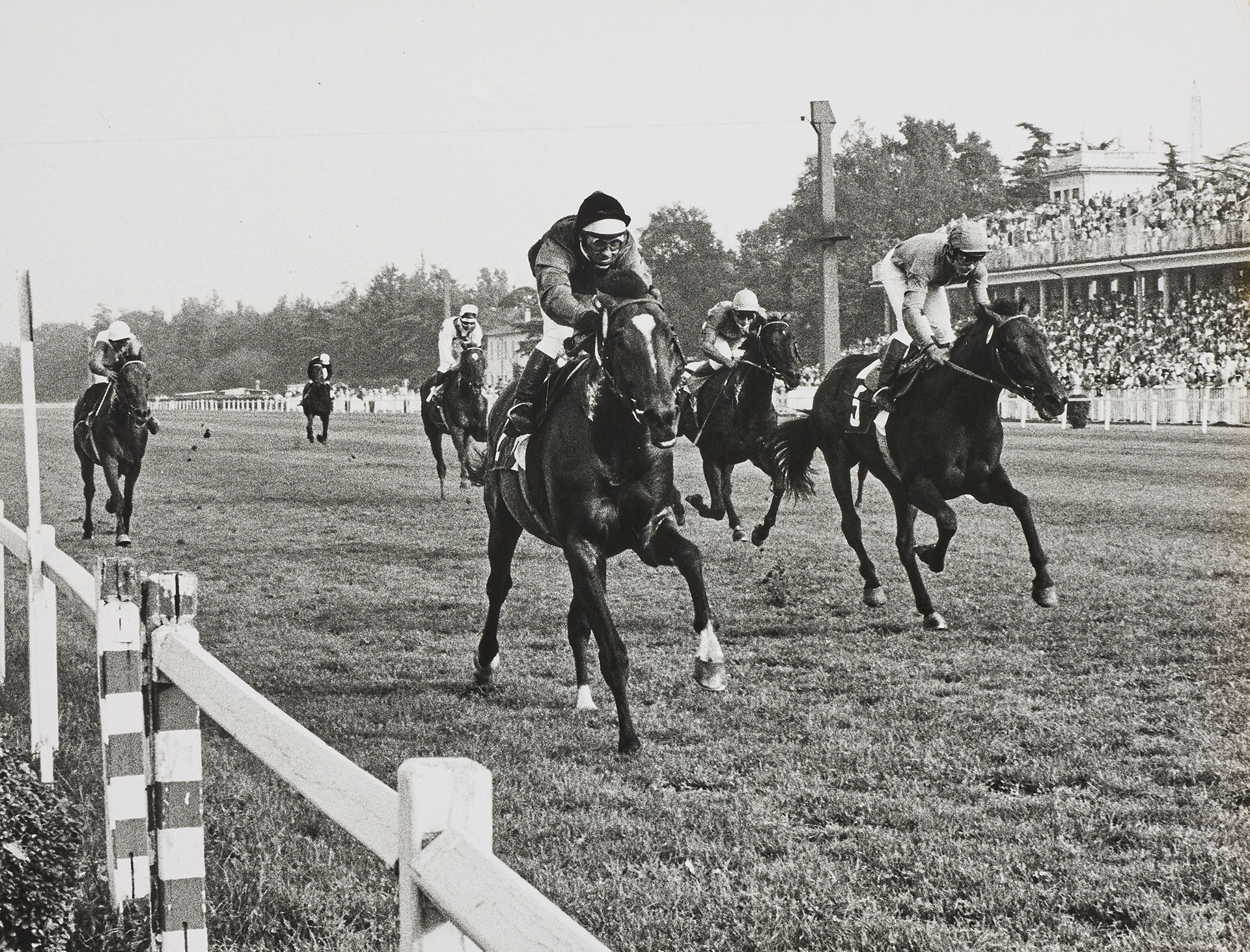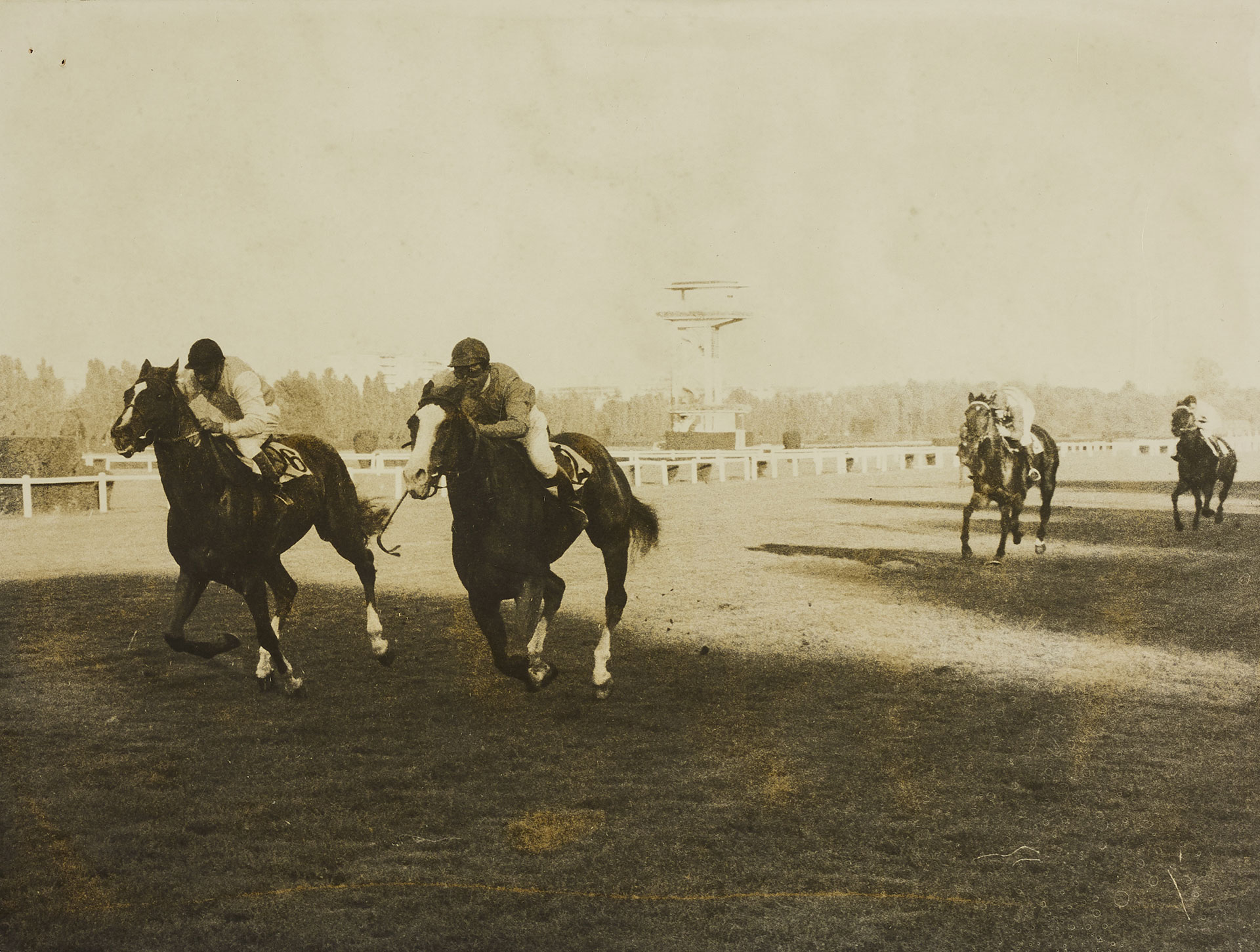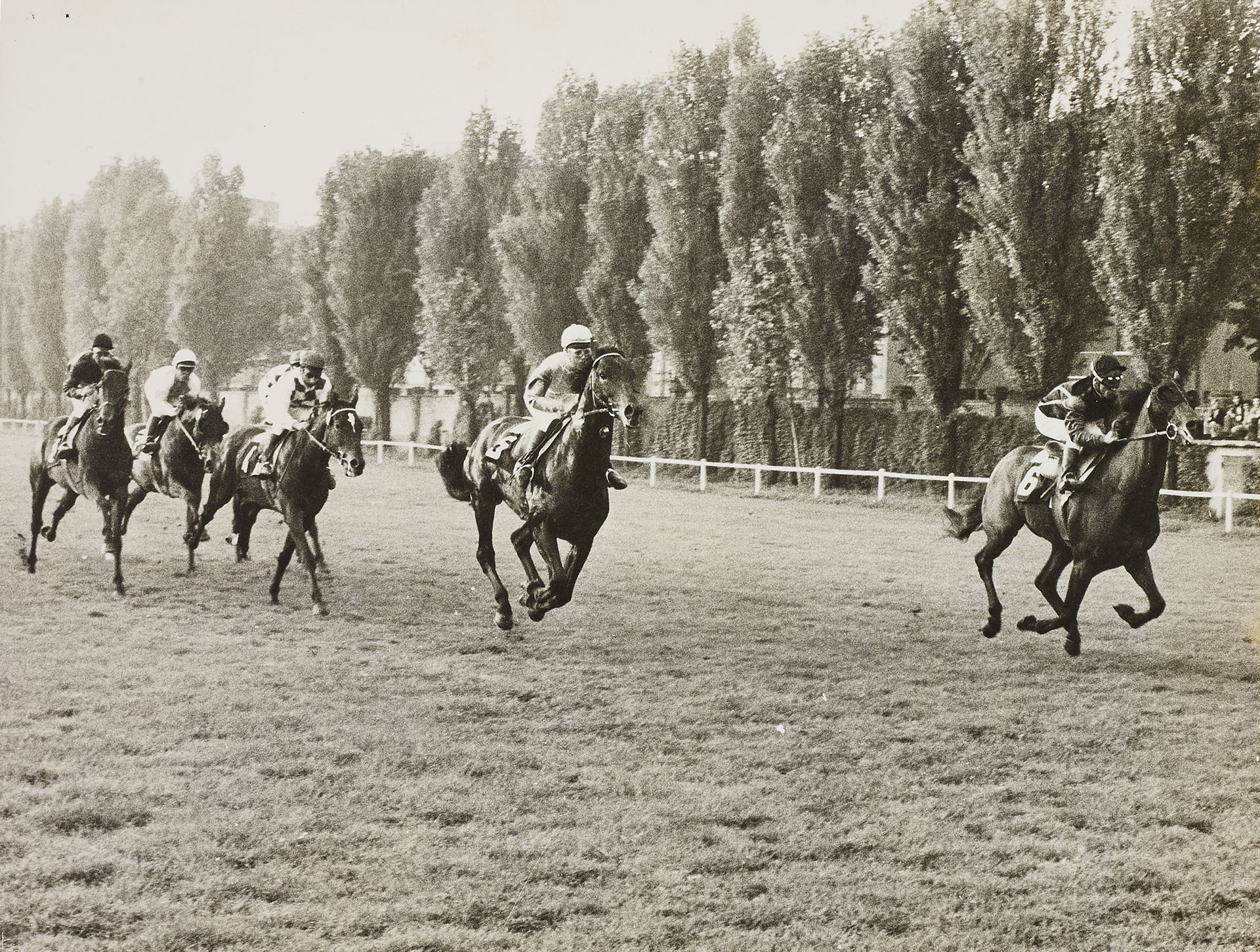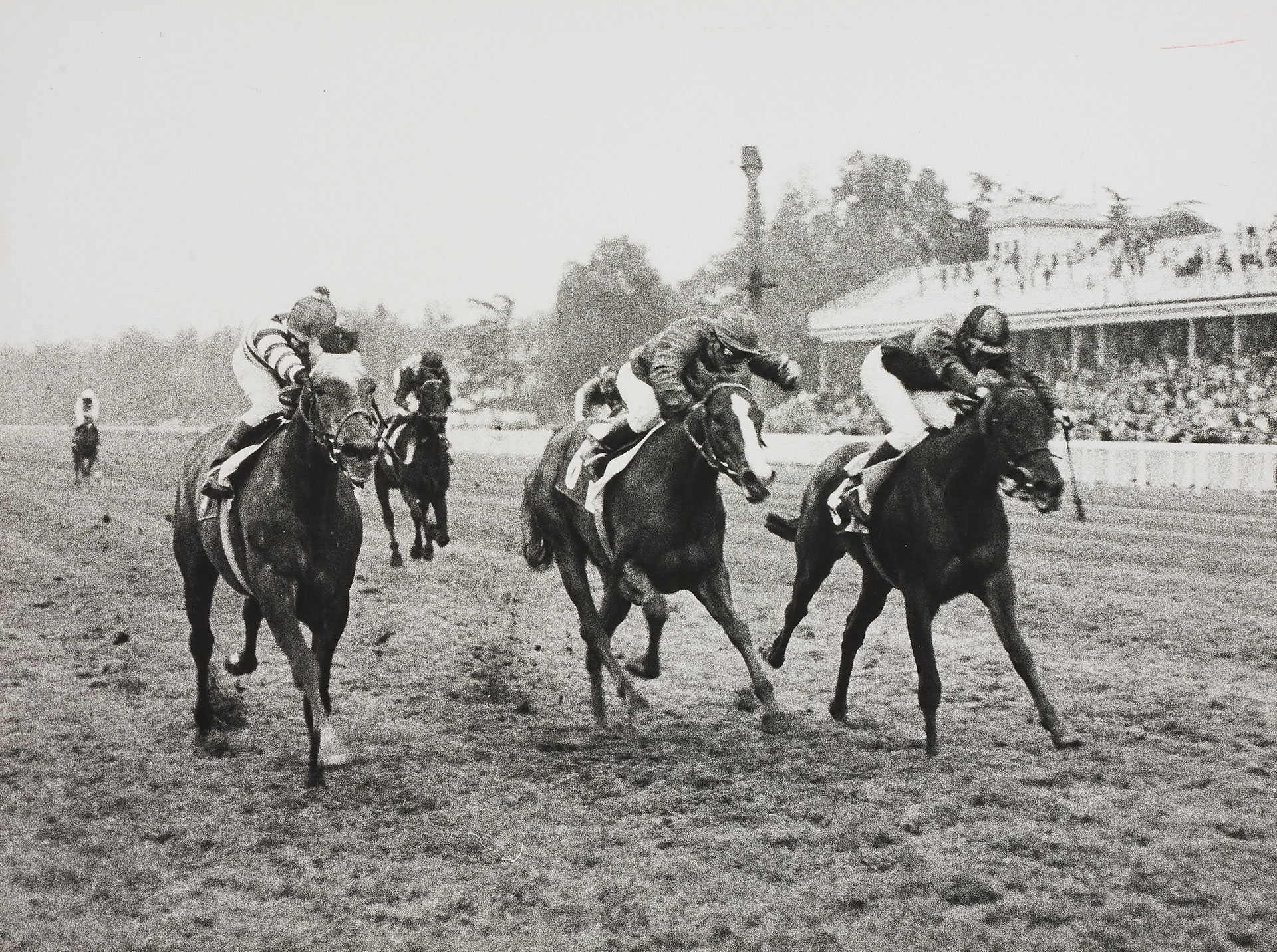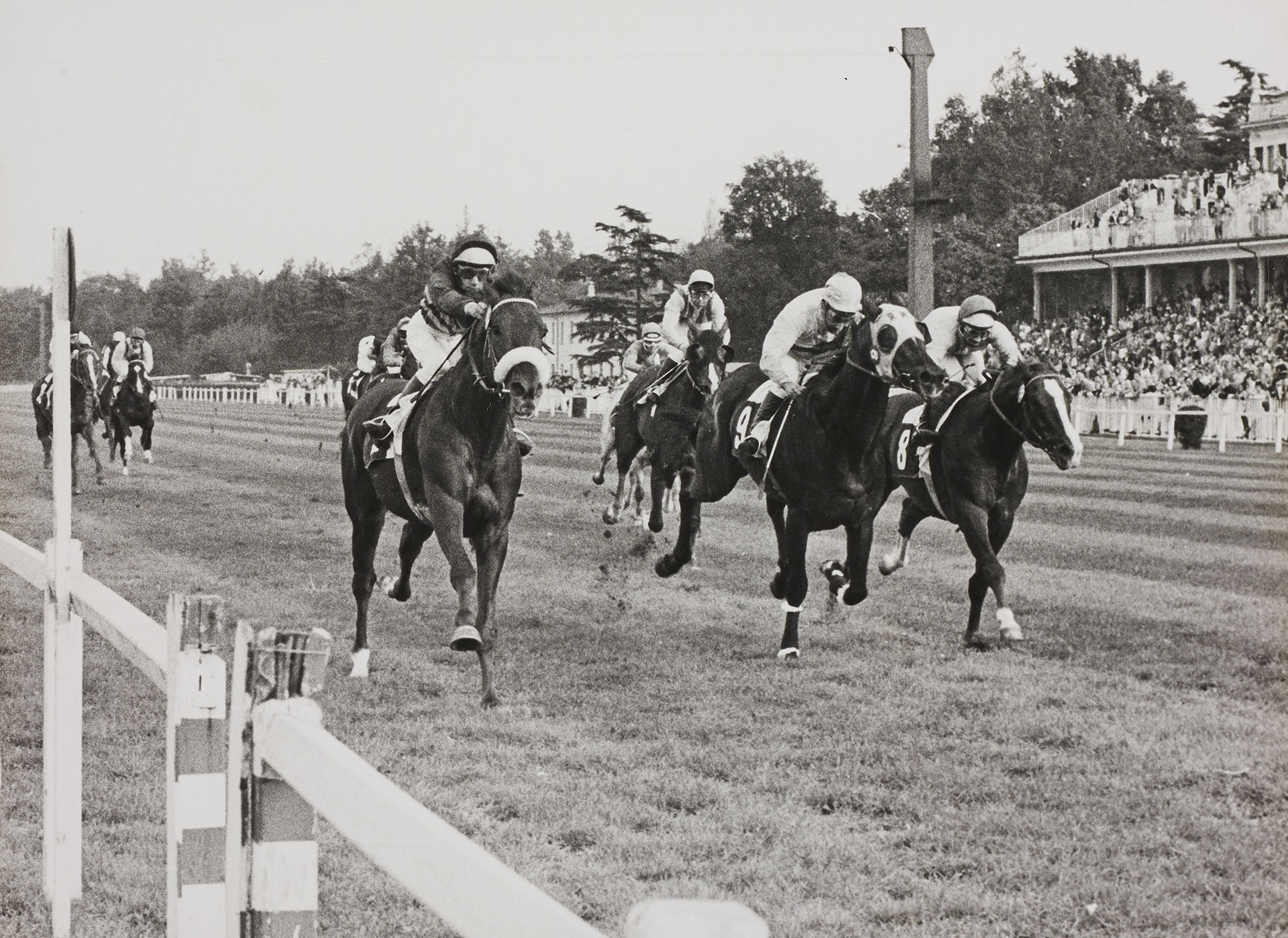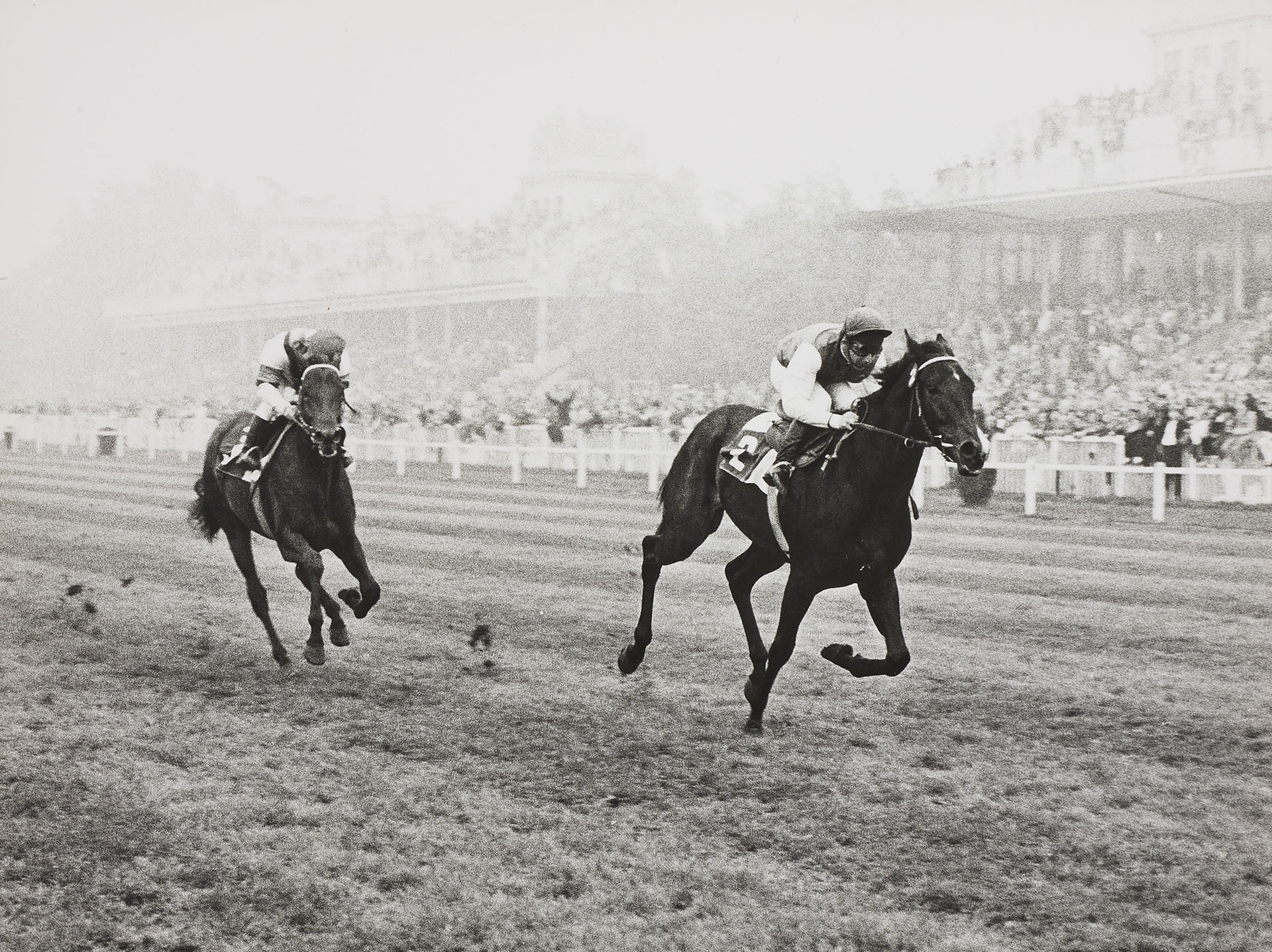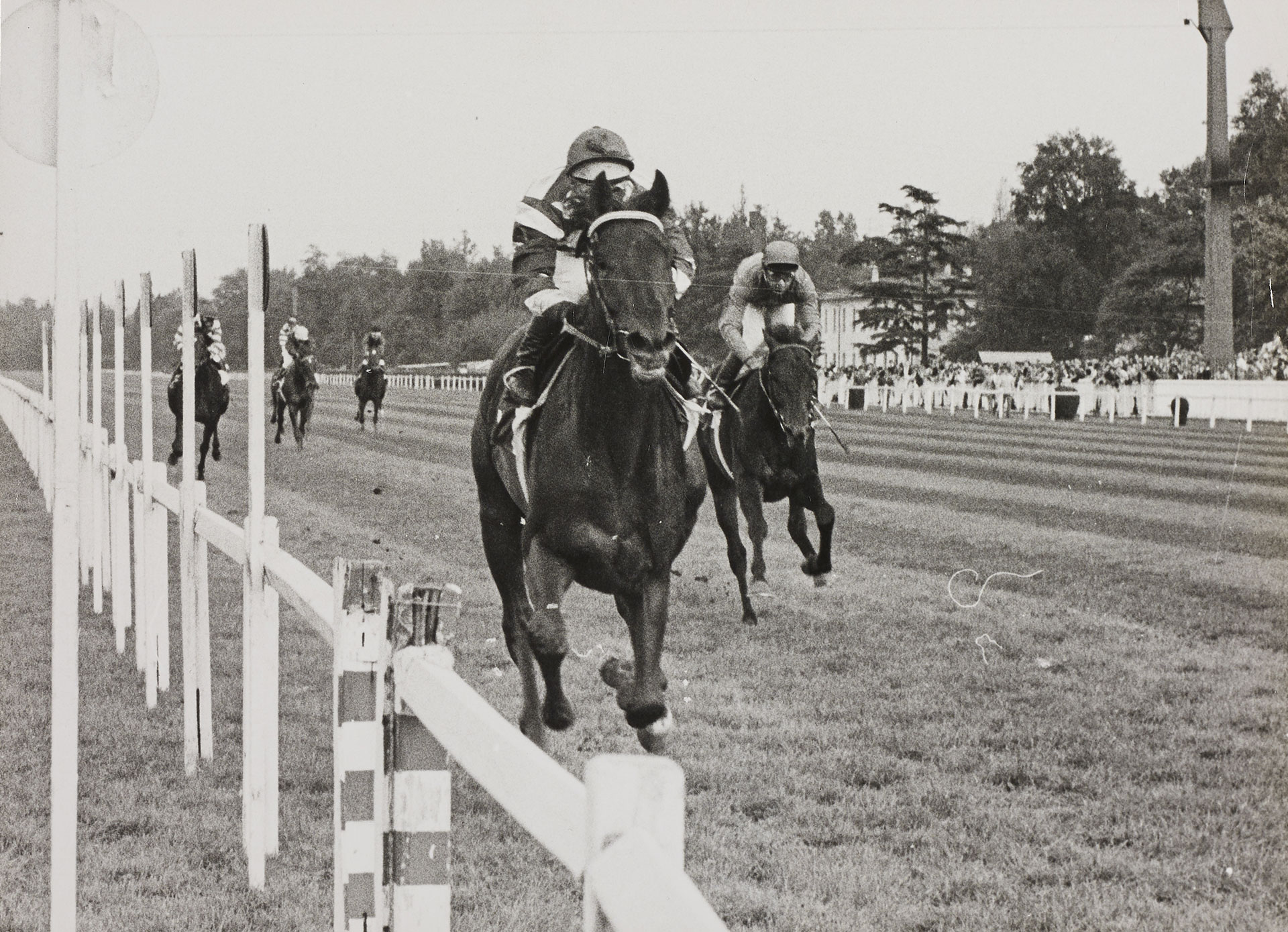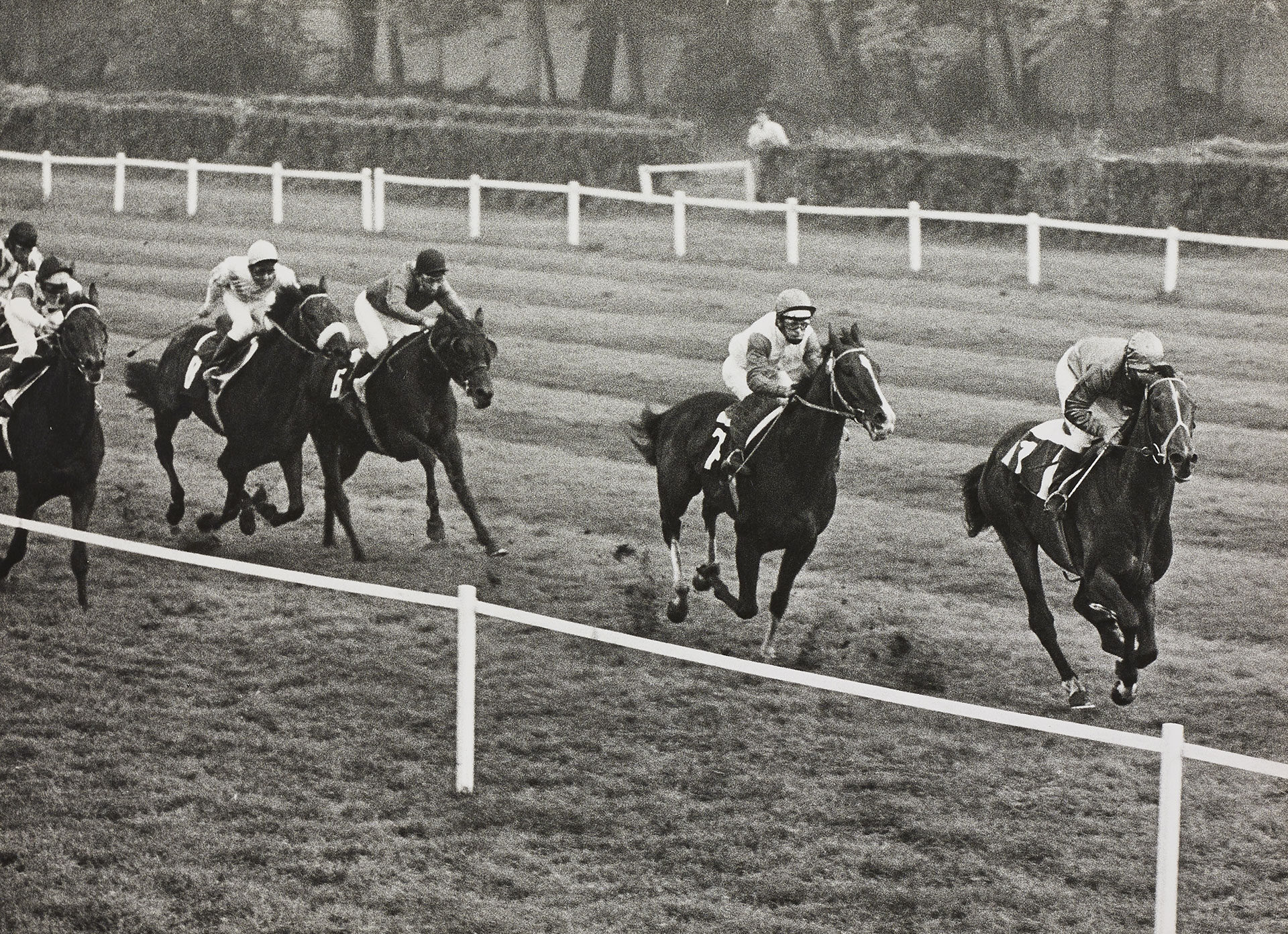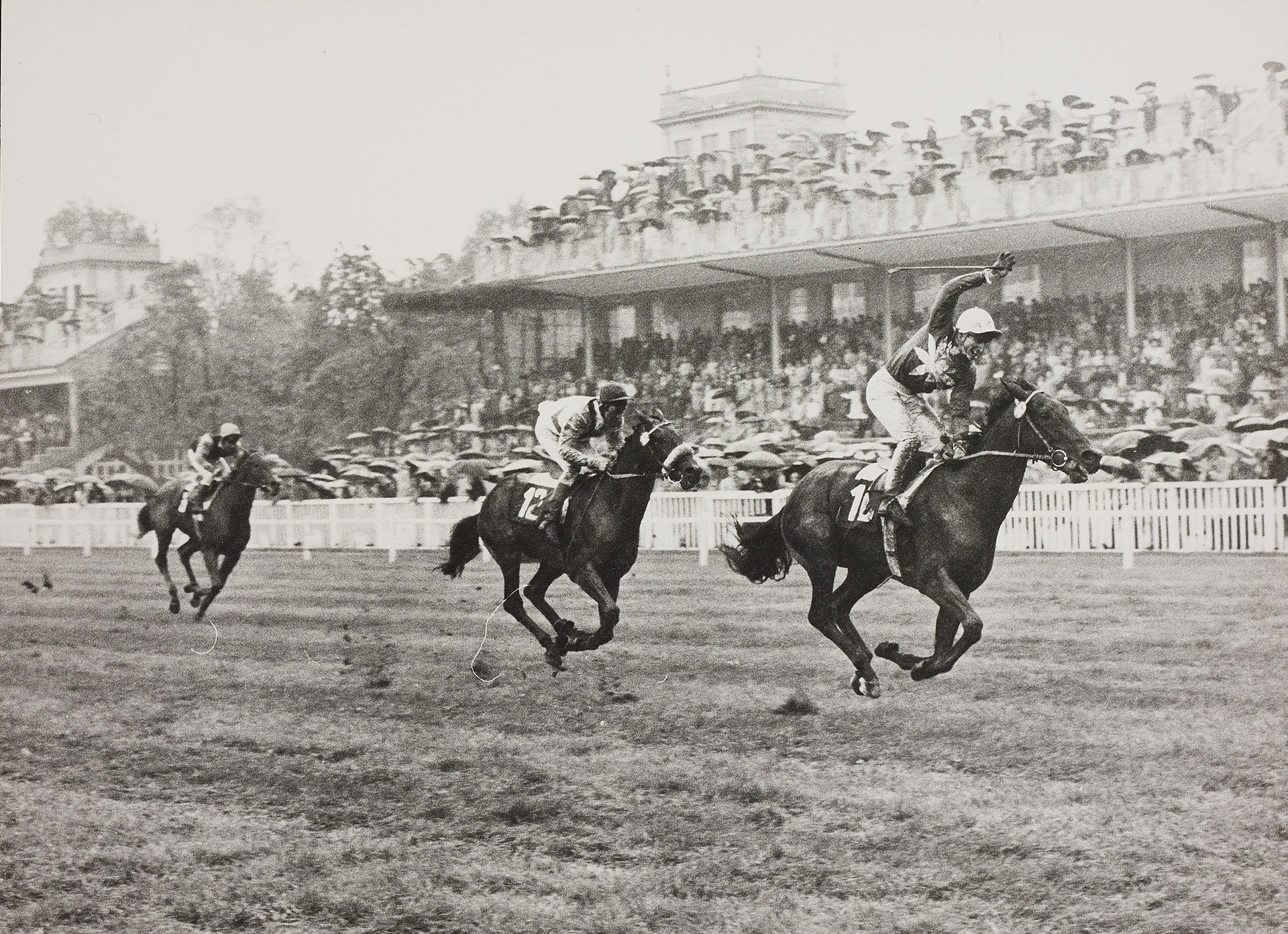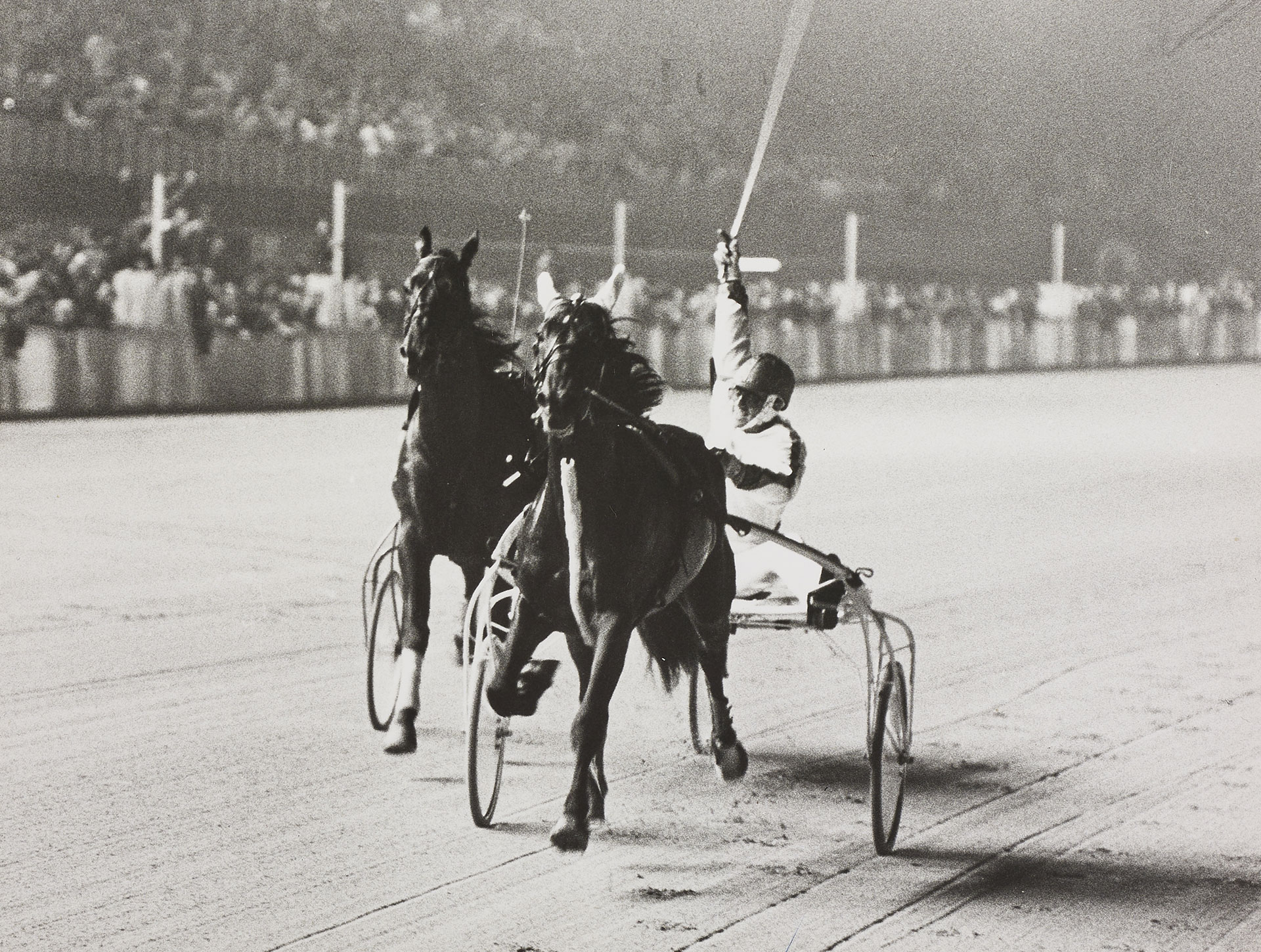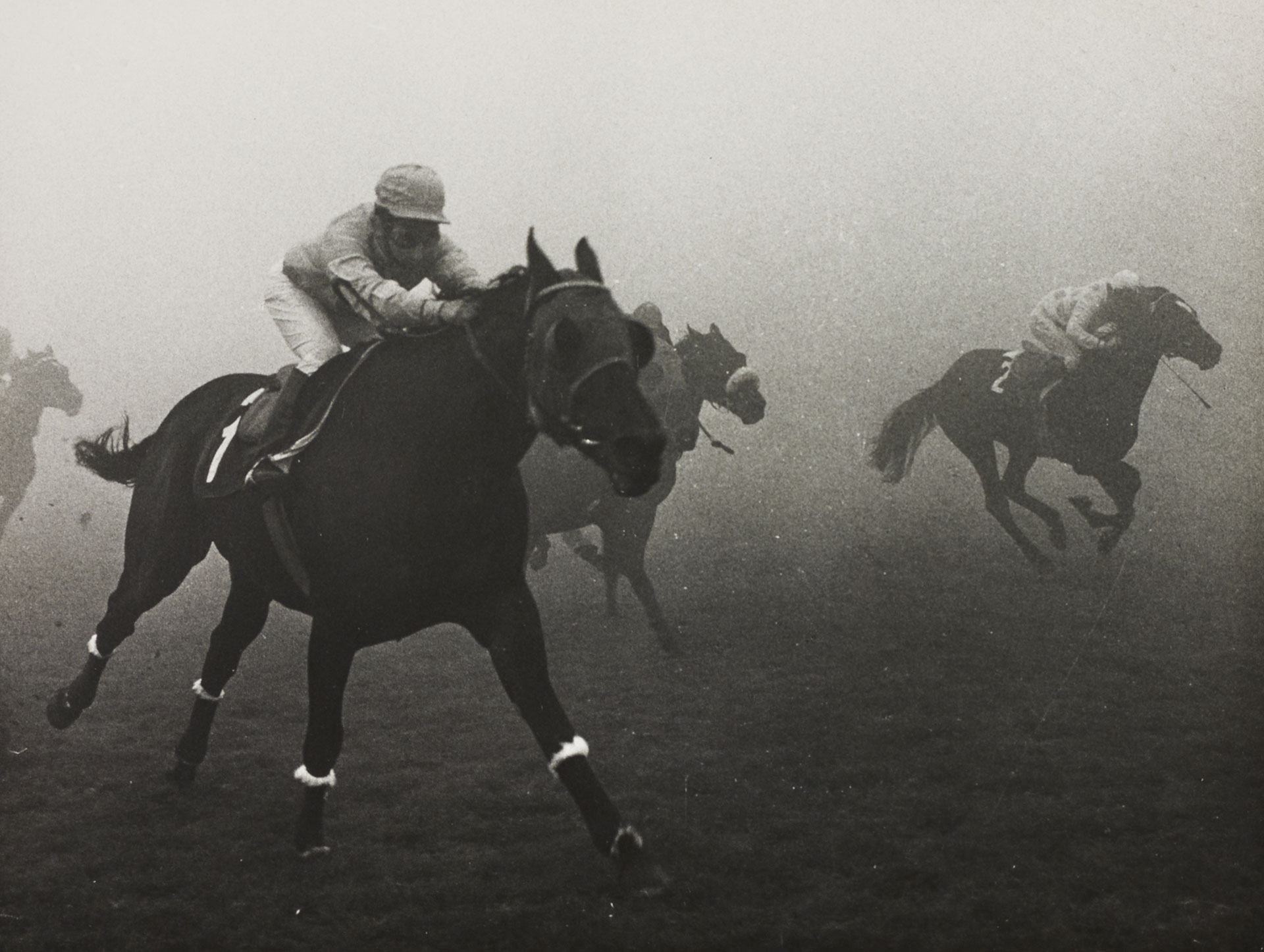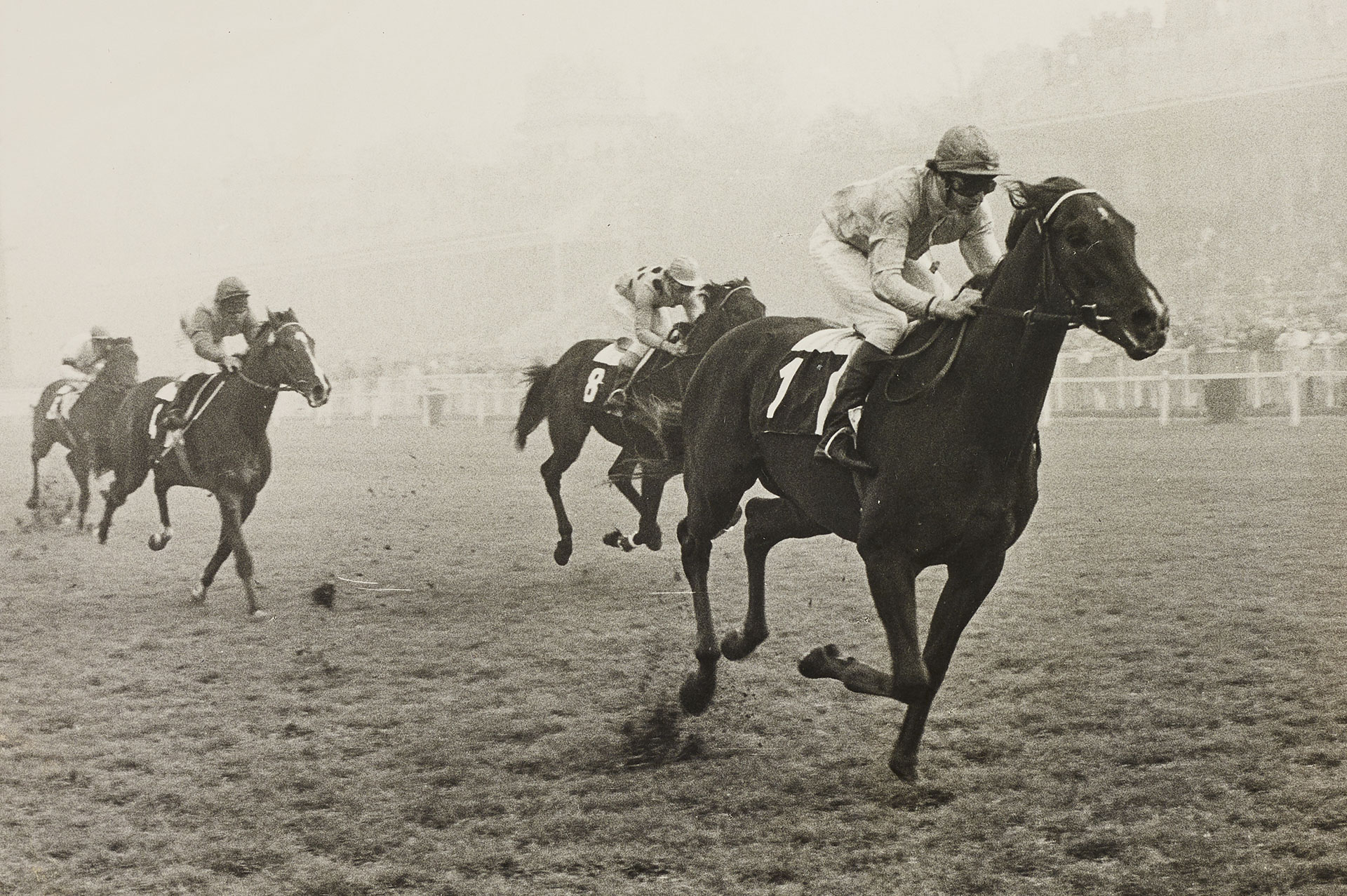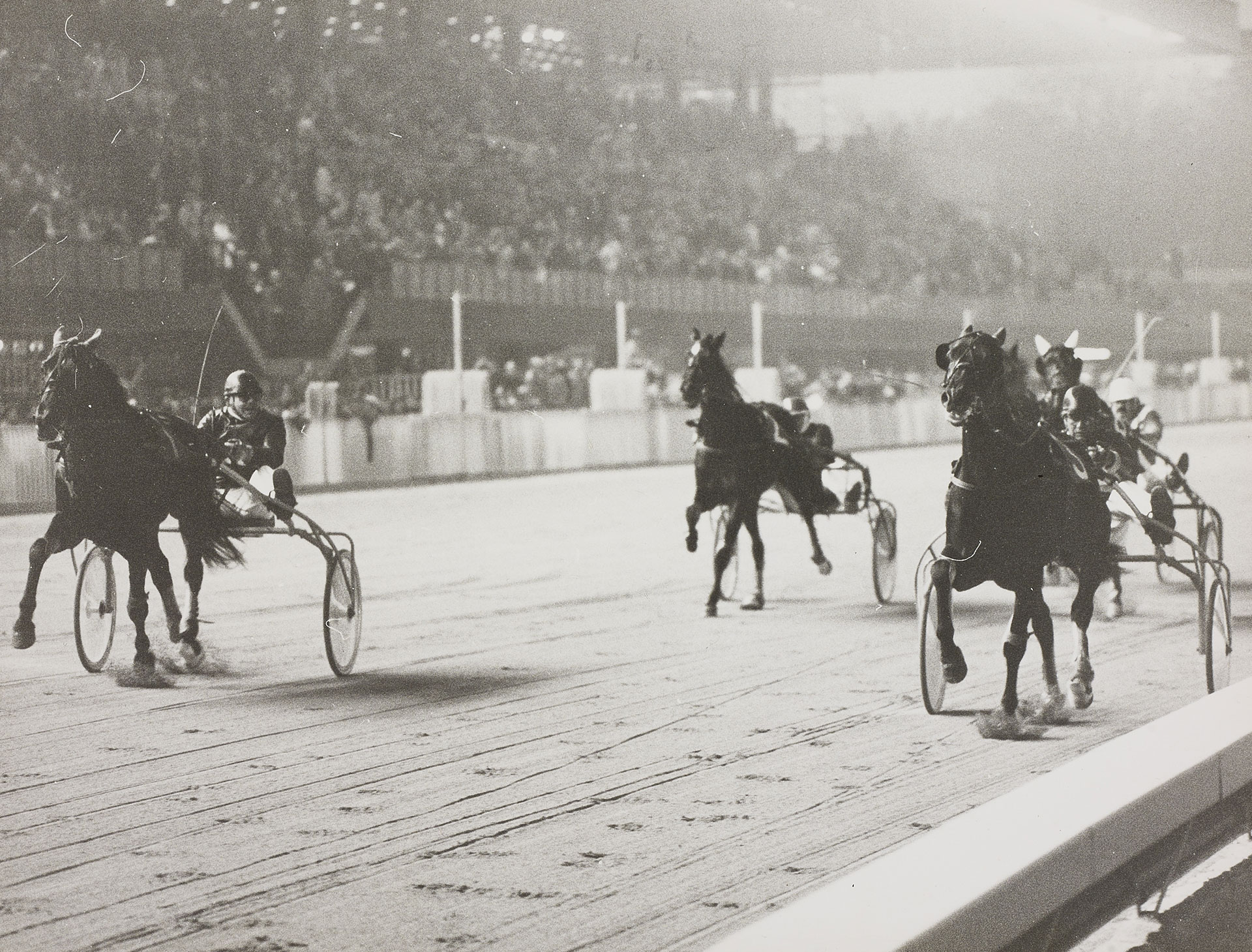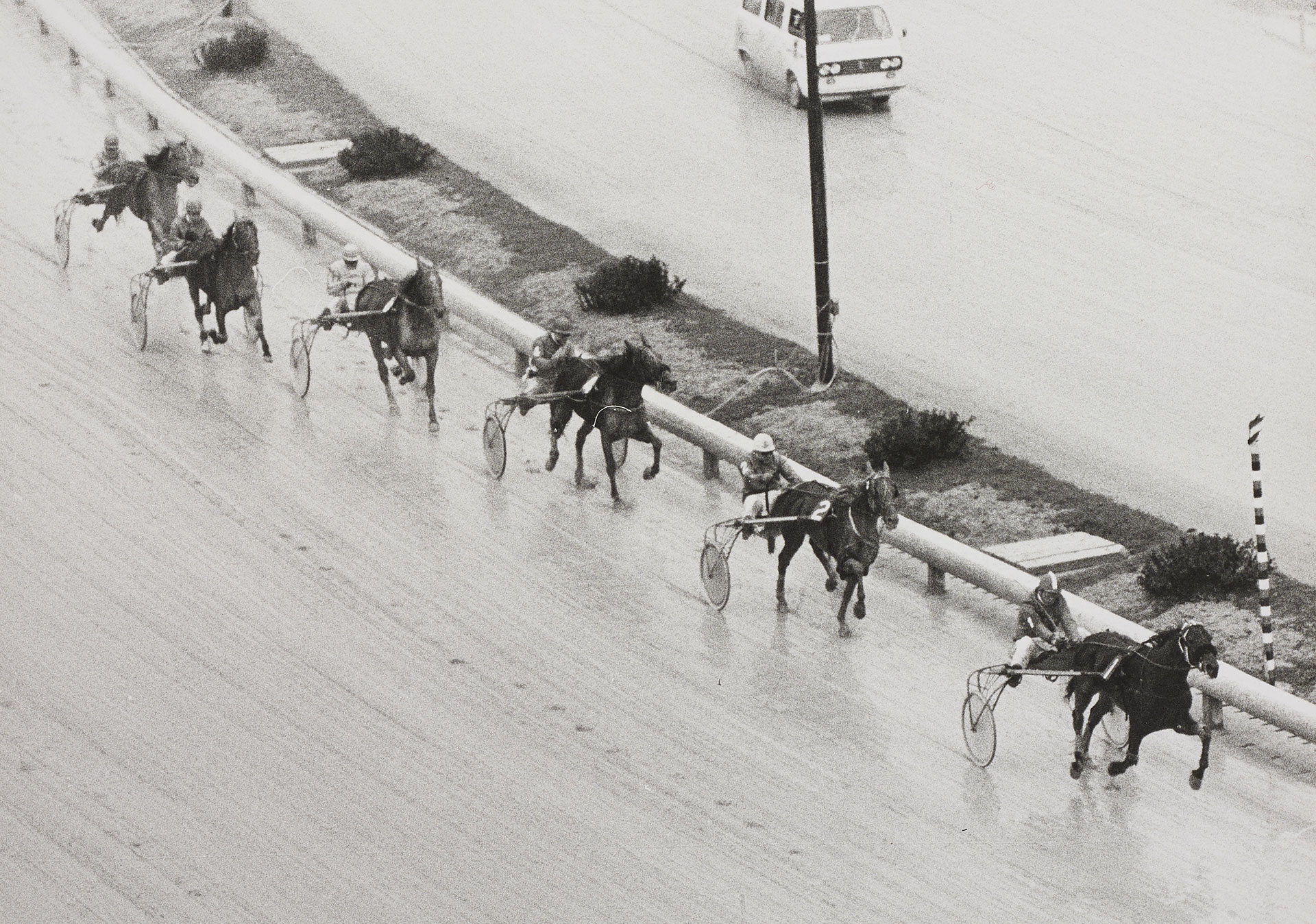After the first international events imported in the last decades of the 19th century, homegrown prizes were established at San Siro, which were highly successful and endured over time. The oldest was the Trade Prize, in which Italian horses competed with some three-year-old foreign champions. In 1924 it became the Grand Prix of Milan, the prize par excellence that for almost a century was the crux of national horse racing selection and beyond.
ARRIVALS, ENCOUNTERS AND SOCIAL RITUALS AT THE SAN SIRO GALLOP RACECOURSE
From the early 1900s, spectators arrived at the races in different ways: the paying public accessed the main grandstand, while those of high extraction such as the nobility and the Milan bourgeoisie announced themselves directly with carriages and coachmen. Once inside the racecourse, they began social rituals and exchanged opinions on horses and bets.
Encounters in the crowd.
© San Siro Racecourses Archive
© San Siro Racecourses Archive
PREPARATIONS, JUST BEFORE THE RACE
The preparations that preceded the race did not differ much from what still takes place today. Horses being unsaddled, jockeys at the weighing building and the call of the race commissioner at the presentation ring: here the horses, with their trainers and jockeys, were presented to an audience of experts and bettors for the latest assessments of the race.
The horses entering the track. Old San Siro.
© San Siro Racecourses Archive
The ring. New San Siro. Here is the presentation of the horses, surrounded by enthusiasts and bettors engaged in the latest assessments.
© San Siro Racecourses Archive
The weighing.
© San Siro Racecourses Archive
Drawing by Madeleine (signed).
© San Siro Racecourses Archive
THE OFFICIAL PARADE INAUGURATING THE GRAND PRIX OF MILAN RACE
The parade of competitors at a Grand Prix at the new San Siro Racecourse.
© San Siro Racecourses Archive
Parade.
© San Siro Racecourses Archive
READY TO START
The horses lined up behind a rope which was lowered to signal the start of the gallop race. In modern flat races the horses are positioned in metal structures, the stalls, better known as “starting cages”.
The starting cages for the gallop – San Siro Racecourses Archive
© San Siro Racecourses Archive
© San Siro Racecourses Archive
WITH THE RACE OVER, THE HORSES ARE UNSADDLED
The horses are unsaddled and the jockey, with the saddle, goes to check the weight in the Weighing Building
© San Siro Racecourses Archive
THE END-OF-RACE COMPLAINTS
The complaints register, where jockeys, trainers or horse owners reported any improprieties detected during the race.
© San Siro Racecourses Archive
The complaints register, where jockeys, trainers or horse owners reported any improprieties detected during the race.
© San Siro Racecourses Archive
The complaints register, where jockeys, trainers or horse owners reported any improprieties detected during the race.
© San Siro Racecourses Archive
FLAT RACES AND THEIR DIFFERENT TYPES
Depending on the needs, the grass track – which includes a small, a medium and a large track – is run for different lengths. The races can be calibrated in terms of length according to the age of the competitors, whether they are foals in their first races (2 years old) or older horses (3 and over), both males and females.
Within the track there is also the route involving hedge obstacles that can be used in different types of competition, from classic steeplechases to cross-country courses.
Flat, obstacle and cross-country courses at the gallop racecourse.
© San Siro Racecourses Archive
THE HISTORIC RACES
The first harness races were held in Prato della Valle, Padua, at the beginning of the 1800s with typical attachments called “padovanelle”. Towards the end of the 19th century, other cities hosted races with “sedioli”, often using non-professional drivers.
In Milan the races were first held in the Viale Padova area in the “Trotter di Turro” park; then, in the 1920s, a track was built in the San Siro area and remained active – after many transformations – until 2012.The grand prix, characteristic of the last Milanese harness racing, were held throughout the year. The European Prize was in spring and the National Prize was in summer, while the high point came in late autumn with the Orsi Mangelli Prize, once called the St Leger Harness Racing Prize or San Siro Prize, and the Grand Prix of the Nations. The year ended with the Grand Criterium and the Winter Prize (now the Ettore and Mario Barbetta Grand Prix). The season included other Grand Prix such as the Encat or the Unire prize, now disappeared or downgraded.
Turro: first trial for the Breeding Prize.
© San Siro Racecourses Library
Poster
© San Siro Racecourses Archive
The harness racing course.
© San Siro Racecourses Library
PREPARING FOR THE RACE: HARNESS, SULKY AND GAIT
Harness races involve preparing the horses differently from the gallop: in fact, one hour before the race the horses usually go out for a warm-up called “sgambatura”, to check the horse’s attitude and test its physical condition.
Volume
© San Siro Racecourses Library
Sulky and harness
© San Siro Racecourses Archive
HARNESS RACES: WARM-UP AND AUTOSTART
Lining up behind the autostart: the preparations are complete and the race is about to begin.
© San Siro Racecourses Library
After the race, the horse is protected with a blanket in winter.
© San Siro Racecourses Archive
A trotter returning to the stables after a race.
© San Siro Racecourses Archive
The racecourse is packed; the spectators watch the horses entering the track.
© San Siro Racecourses Archive
THE EVENING RACES
Evening races
© San Siro Racecourses Archive
UET Prize, 2008 Photo Mam Gagliani
© San Siro Racecourses Archive
UET Prize, 2008 Photo Mam Gagliani
© San Siro Racecourses Archive
THE PAIRS
At the end of the 19th century the popular festivals such as the May festivals involved the whole city and, with the establishment of the Milanese Trade Fairs, pairs were reported in the Visitor’s Guides in the programme of events. The guides noted how to participate and described the track where the harness races were held and the prizes. At first they were races for amateurs, but soon the pairs were driven by the best drivers.
Pairs at the May Festivals in the Trotter in Piazza Andrea Doria.
© San Siro Racecourses Library
The tradition of pairs still persists today, as a snapshot and a reminder of the May Festivals and the equestrian shows that involved countless spectators. As we can see in the image, a pair requires two horses tied to the sulky.
© Photo chronicles “Olympia” – San Siro Racecourses Archive
“Official Racing Yearbook published by the commissioners of the Italian Jockey Club 1884-85”, 1885.
© San Siro Racecourses Library
“1890 – Year III. Official Yearbook of the races run at the racecourses of the affiliated companies”, 1891.
© San Siro Racecourses Library
“Wallace’s year book of trotting and pacing in 1892”, 1893.
© San Siro Racecourses Library
“Official Yearbook of Obstacle Races and Flat Races for Hunting Horses. 1893-94”, 1894.
© San Siro Racecourses Library
“Official Yearbook of harness racing published by the governing board of the Italian Horse Racing Union. 1906-1907”, 1907.
© San Siro Racecourses Library
“Annual Yearbook of Trotting and Pacing in 1944”, 1945.
© San Siro Racecourses Library
HISTORICAL CALENDARS AND NEW GRAPHICS: FROM THE 1940S TO THE 21ST CENTURY.
© San Siro Racecourses Archive
Biweekly calendar for the year 1964.
© San Siro Racecourses Archive
Monthly calendar for the year 1971, with only the months of January, February, March and April. In the images are the previous year’s winning horses in the main Grand Prix.
© San Siro Racecourses Archive
1992 calenda.
© San Siro Racecourses Archive
1992 poster.
© San Siro Racecourses Archive
© San Siro Racecourses Archive
THE MONTHLY RACING CALENDAR IN PHOTOS
JANUARY
1 January 1975 – New Year Prize: the arrival of Courgné.
© Photo Perrucci – San Siro Racecourses Archive
22 January 1978 – Naples Prize.
© Photo Perrucci – San Siro Racecourses Archive
FEBRUARY
February
© San Siro Racecourses Archive
MARCH
Harness racing
© San Siro Racecourses Archive
Gallop
© San Siro Racecourses Archive
APRIL
Harness racing
© San Siro Racecourses Archive
Gallop
© San Siro Racecourses Archive
MAY
14 May 1972 – Three Years Prize: the arrival of Duke Of Paducah.
© San Siro Racecourses Archive
14 May 1978 – Great Steeplechase of Milan: Friz and Wad followed by Red Chief and Reve Du Matin.
© Photo Enzo De Nardin – San Siro Racecourses Archive
1 May 2005 – Emanuele Filiberto Prize
© San Siro Racecourses Archive
JUNE
17 June 1984 – SIRE Gold Cup: Commissar during the race.
© Photo Enzo De Nardin – San Siro Racecourses Archive
18 June 2006 – Oaks d’Italia: Dionisia, ridden by the jockey C. Soumillon, wins the race.
© Photo Enzo De Nardin – San Siro Racecourses Archive
25 June 1972 – Summer Prize: the arrival of Robinson.
© San Siro Racecourses Archive
JULY
2 July 1972 – First Steps Prize: the arrival of Dast.
© San Siro Racecourses Archive
6 July 1978 – National Grand Prix. Among the horses in the lead: Siginda, Pasubio, Fornero, Castiglione, Iperide, Fair Play, Dimoté and Cayal.
© Photo Enzo De Nardin – San Siro Racecourses Archive
AUGUST
There are no races in August, but work at the racecourse doesn’t stop – especially the care of the animals and the management of the stables.
© Photo Enzo De Nardin – San Siro Racecourses Archive
SEPTEMBER
September.
© San Siro Racecourses Archive
OCTOBER
October
© San Siro Racecourses Archive
October
© San Siro Racecourses Archive
NOVEMBER
Grand Prix of November
© San Siro Racecourses Archive
DECEMBER
5 December 1981 – Criterium: the arrival of Belmez preceding Bertuz.
© Photo Perrucci – San Siro Racecourses Archive
14 December 1975 – Winter Prize. Among the horses in the lead: Ottati, Aliberti, Brigne, Delfo, Wayne Eden and Dosson.
© San Siro Racecourses Archive


